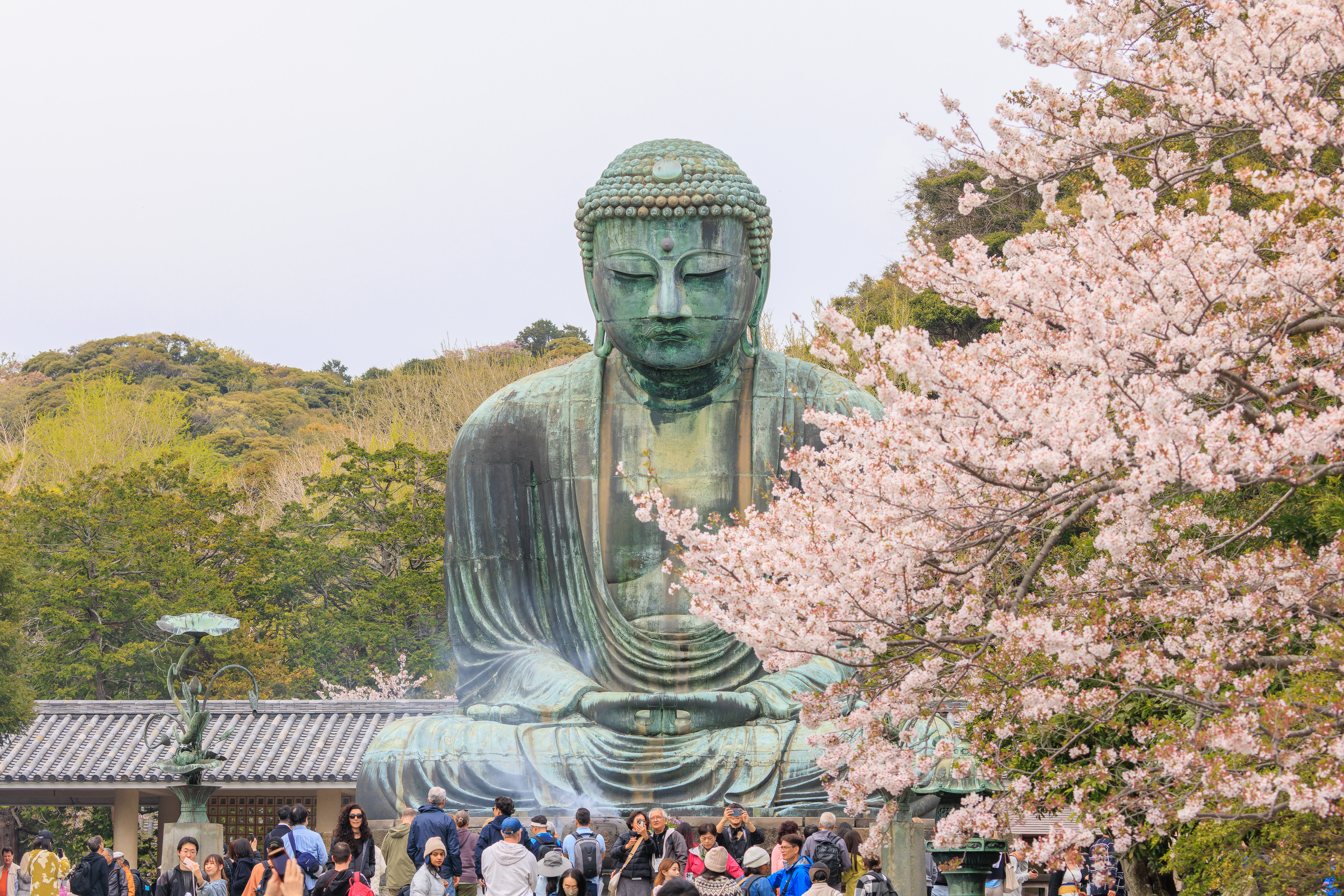After breakfast at the Mesm, we checked out and dropped off our bags at our next hotel, the nearby Conrad. We then took the train down to Kamakura where we spent the day enjoying three different temples while looking out for sakura.
Morning
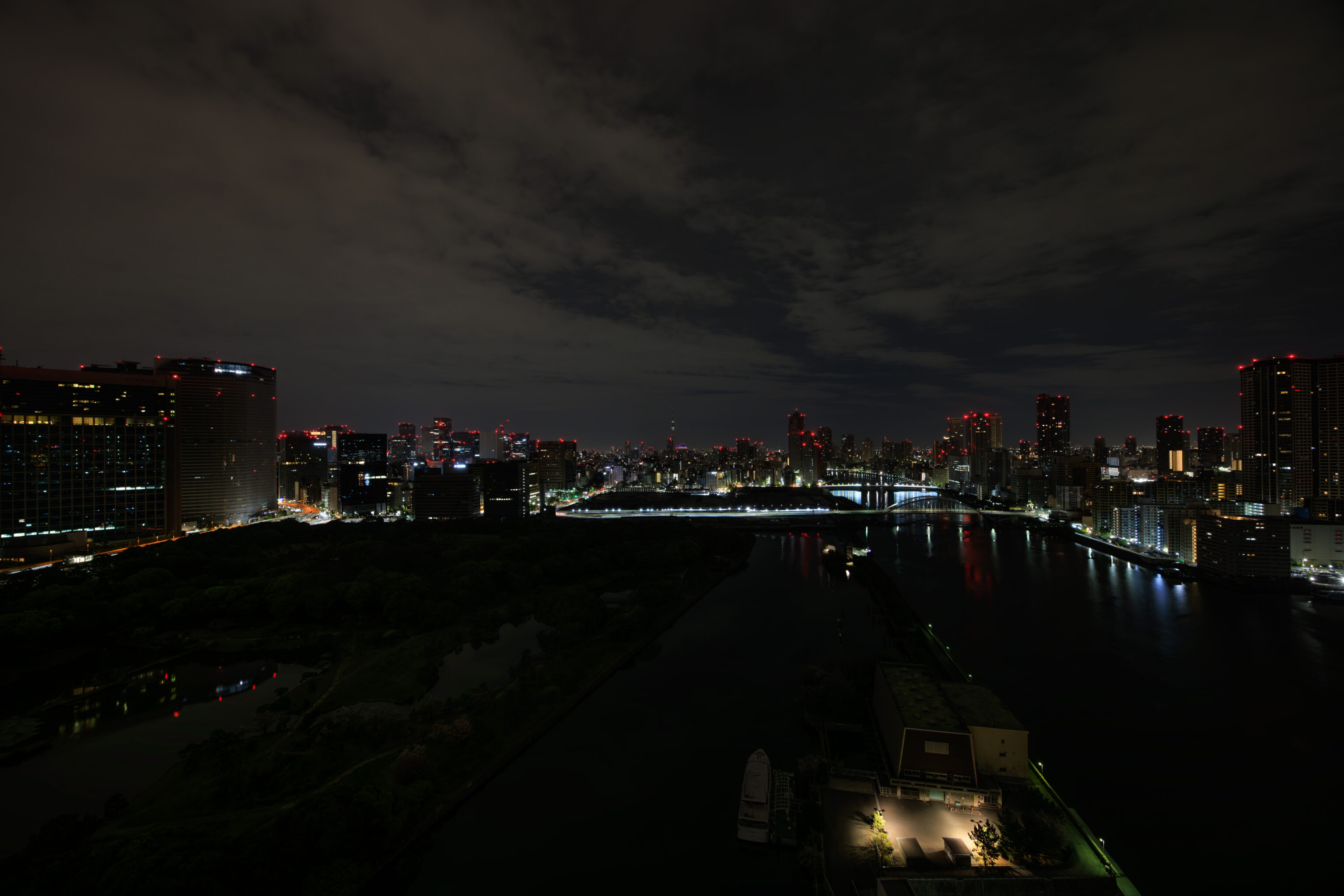
This was the scene from our balcony at the メズム Mesm at 4:10am, about an hour before sunrise. It was pretty dark outside with most buildings having most of their their lights off, other than the mandatory aviation warning lights atop all tall buildings.
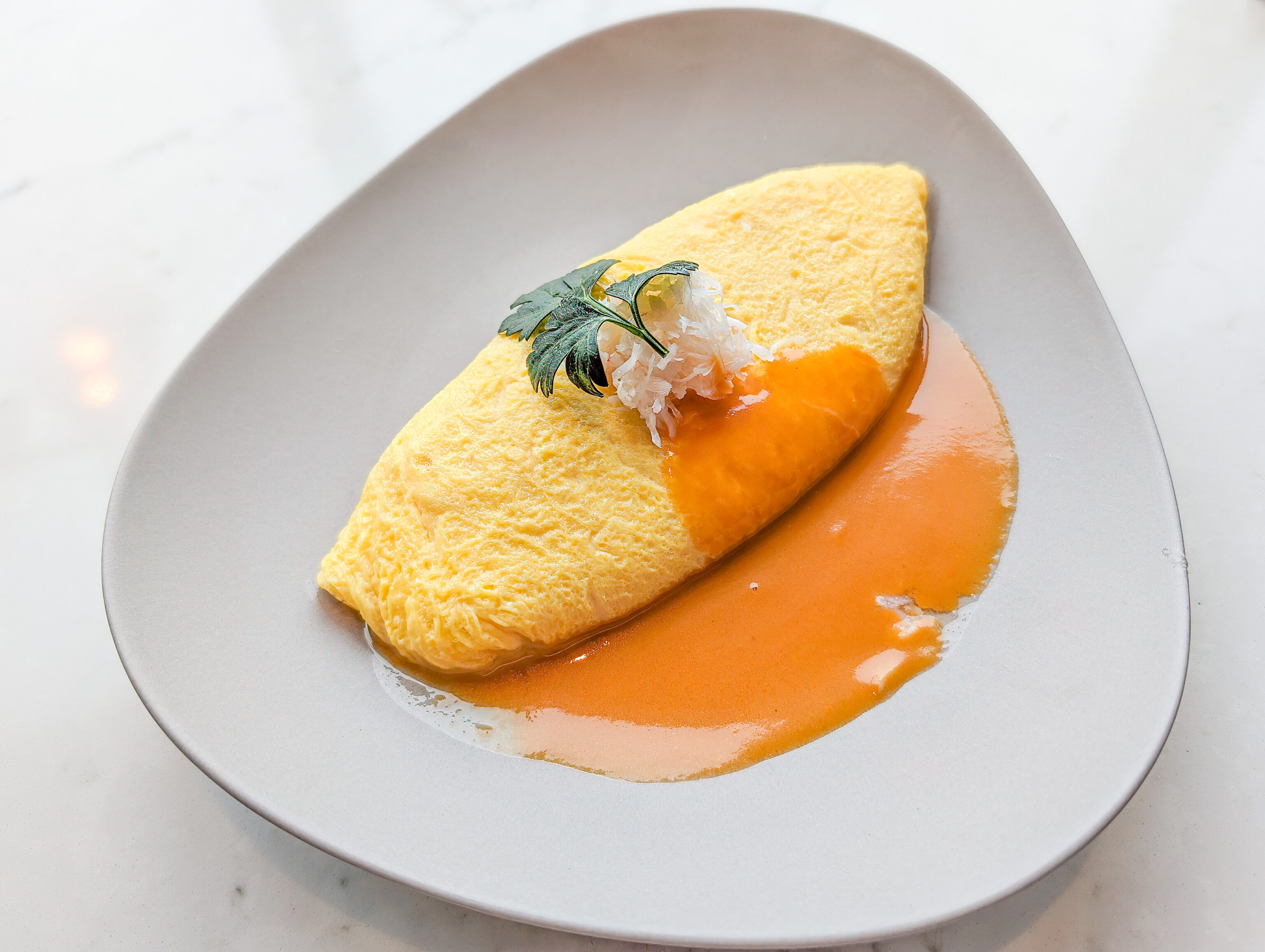
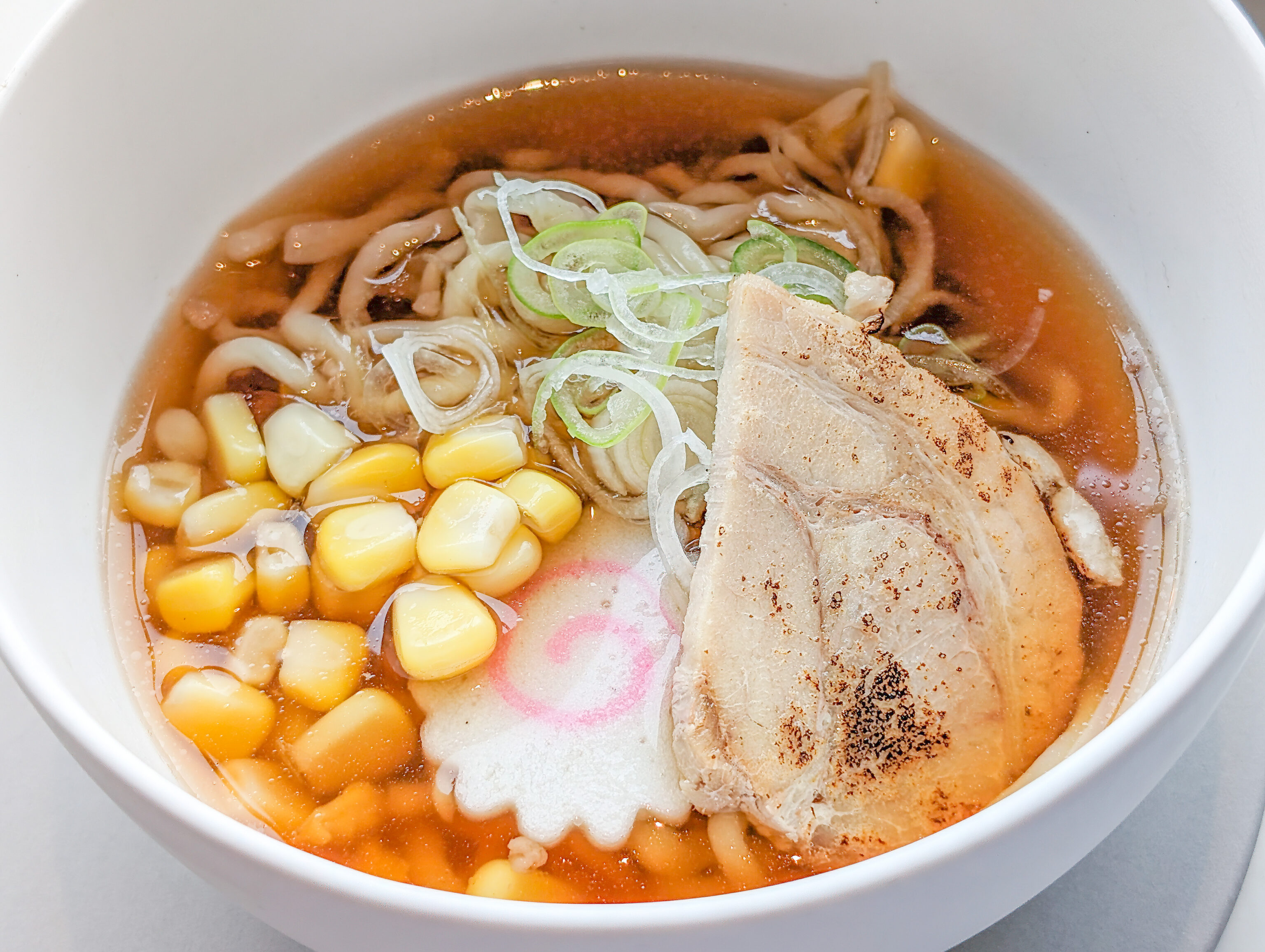
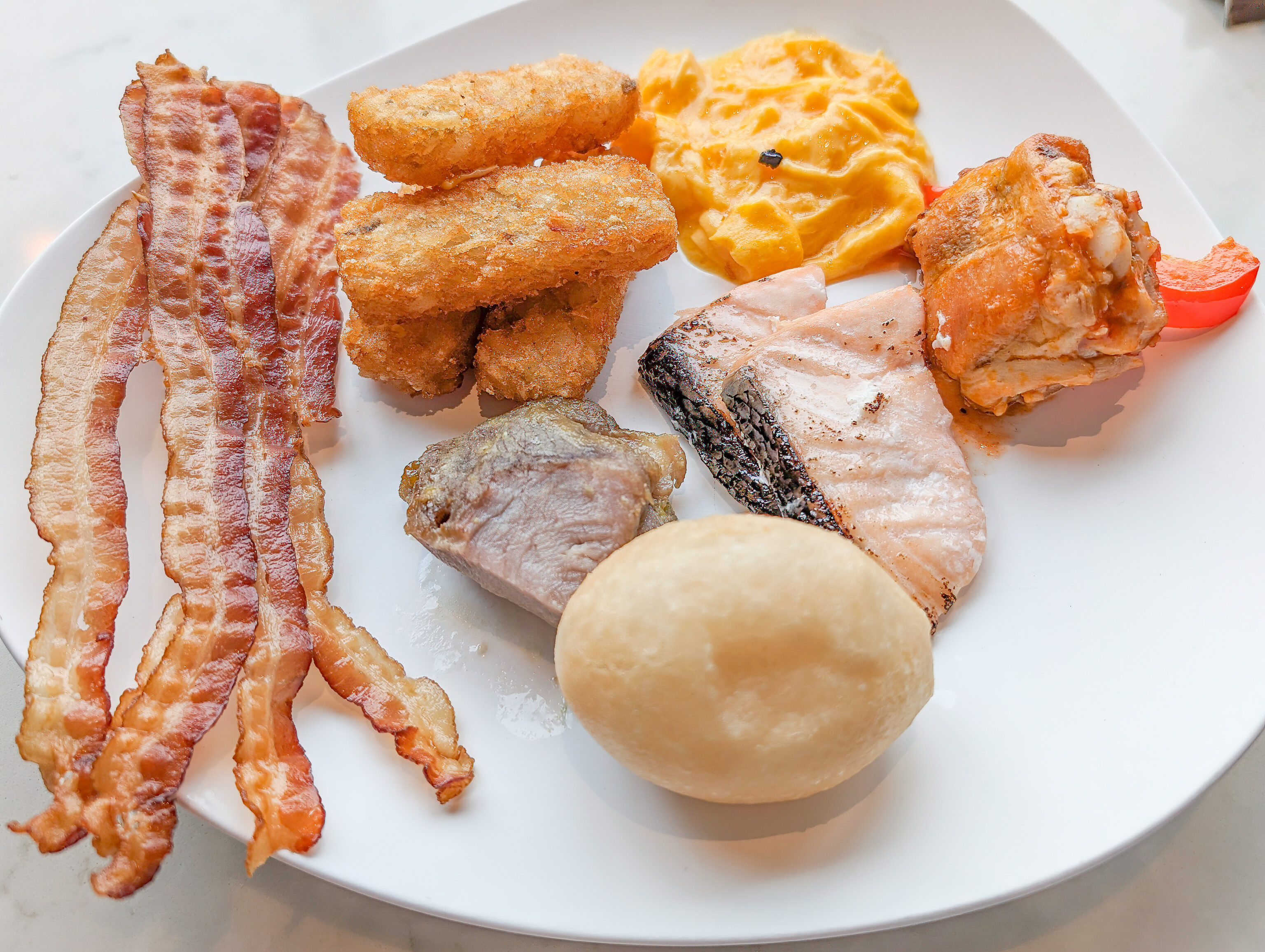
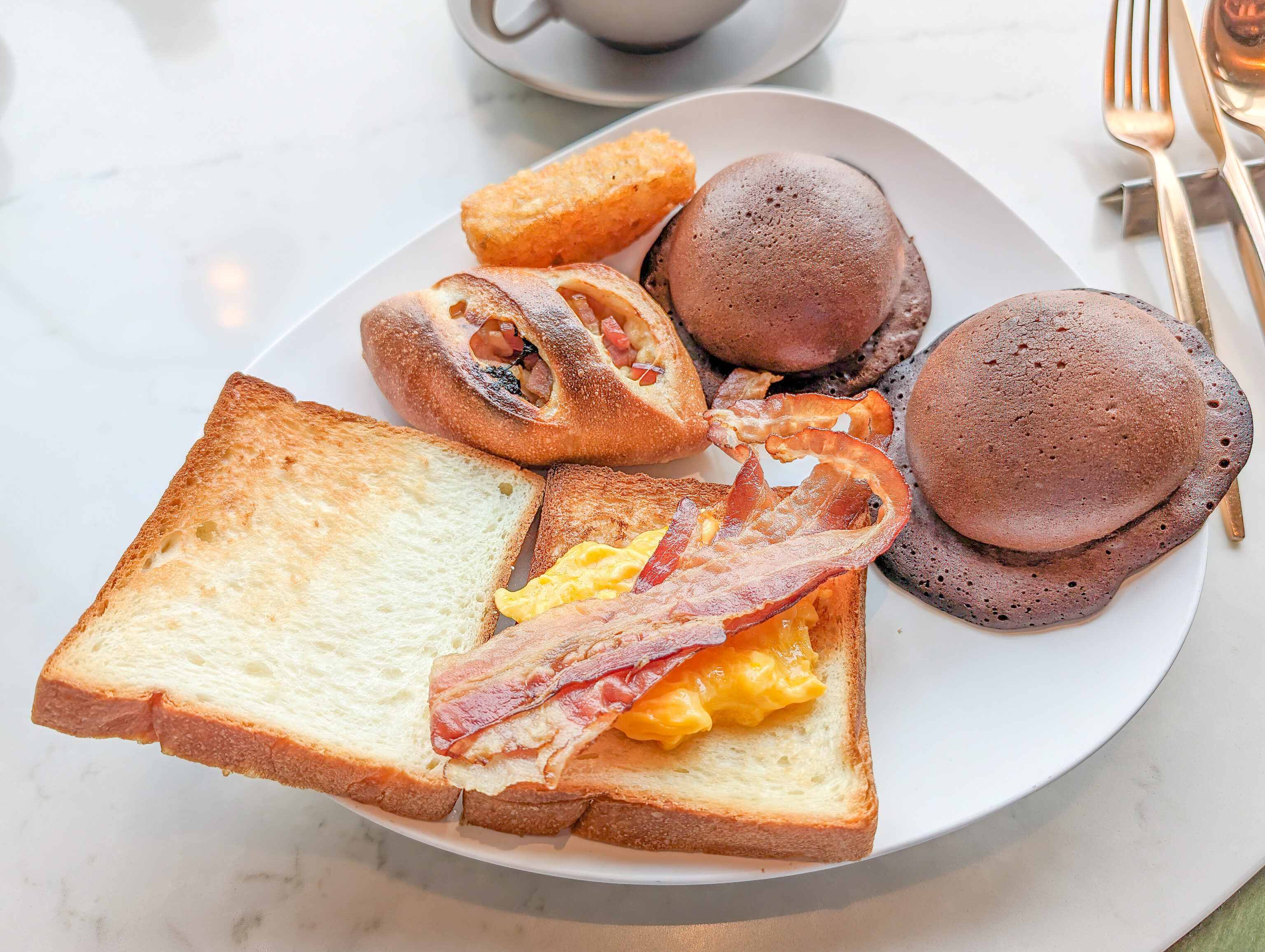
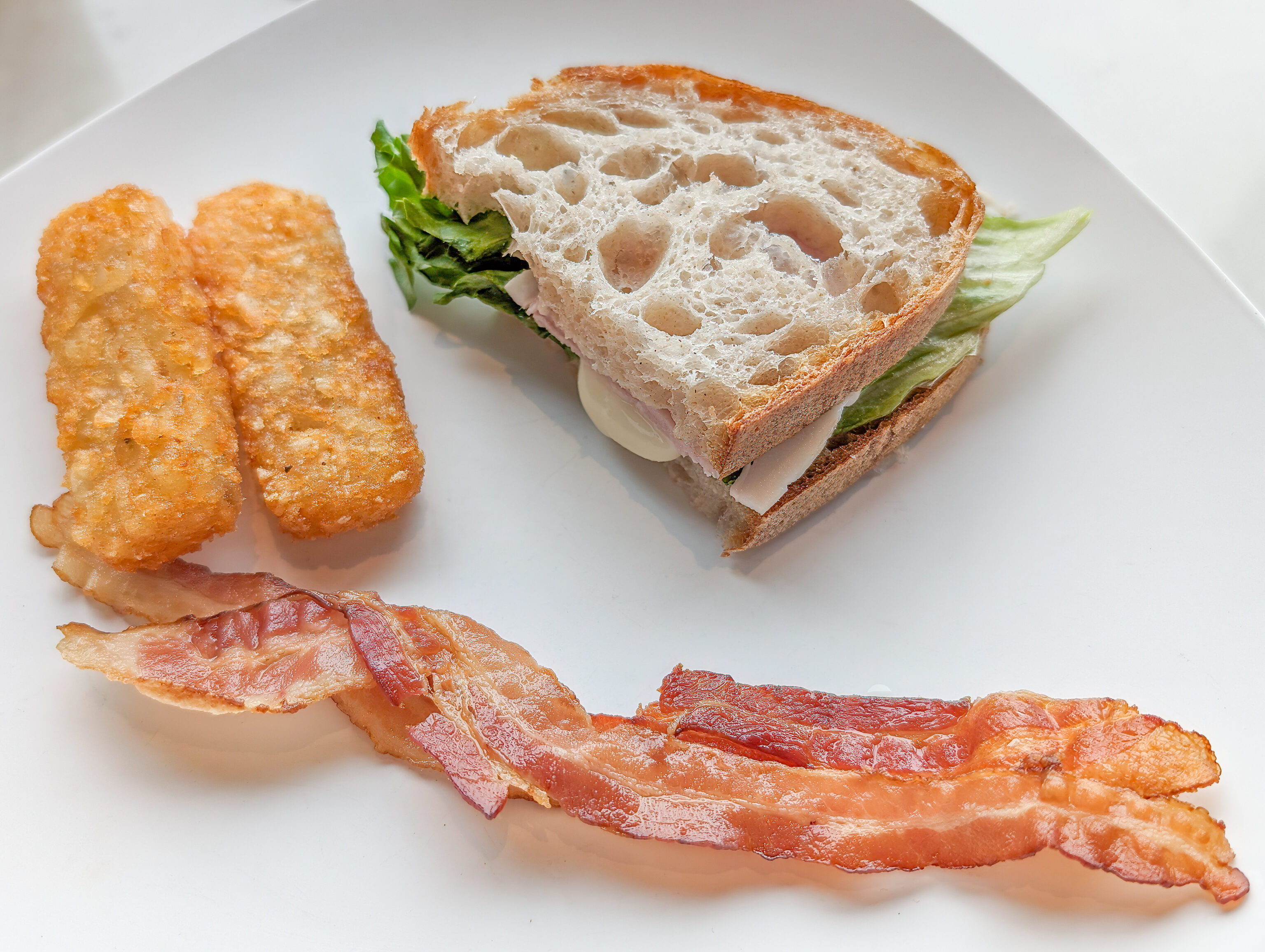
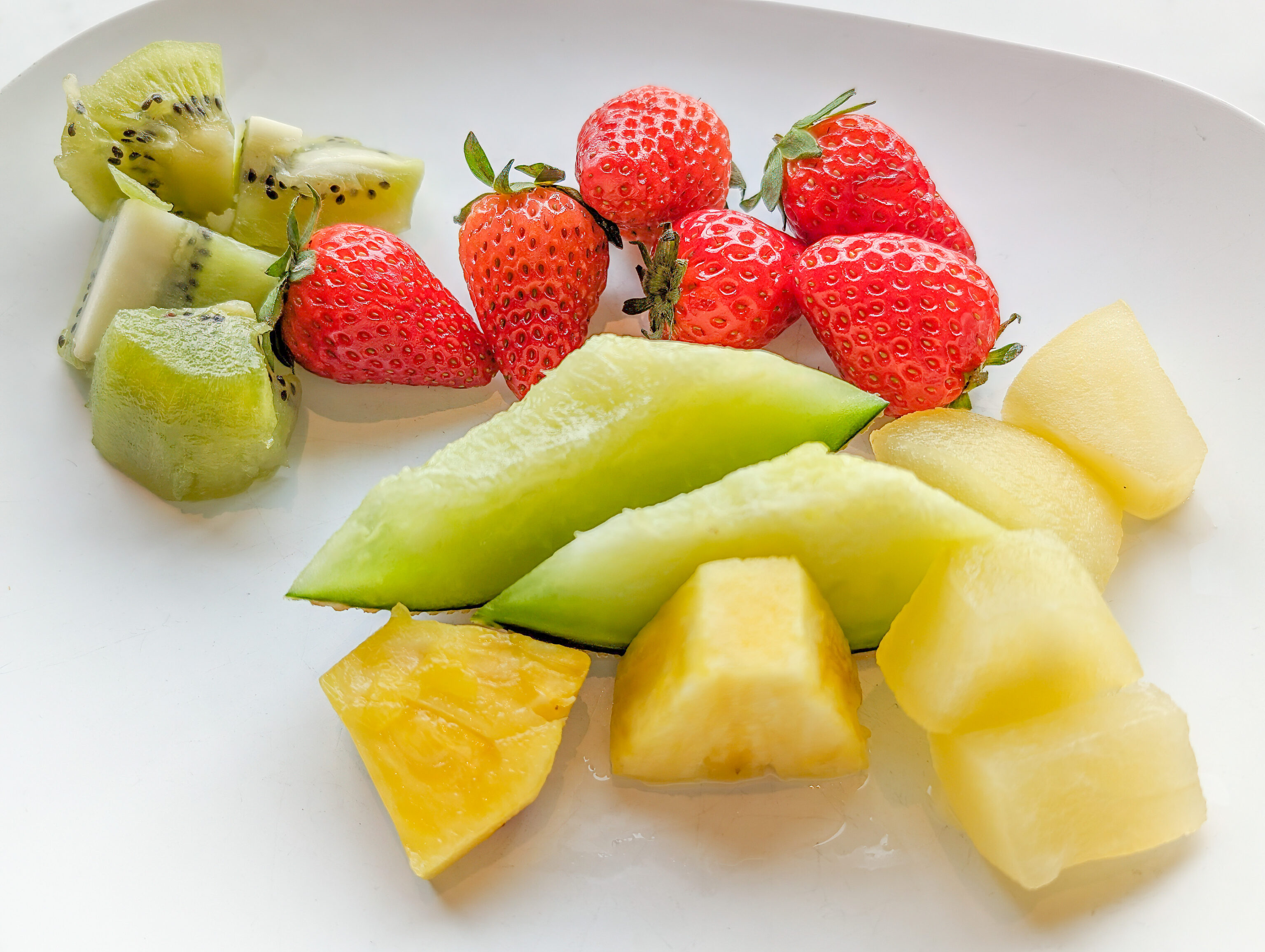
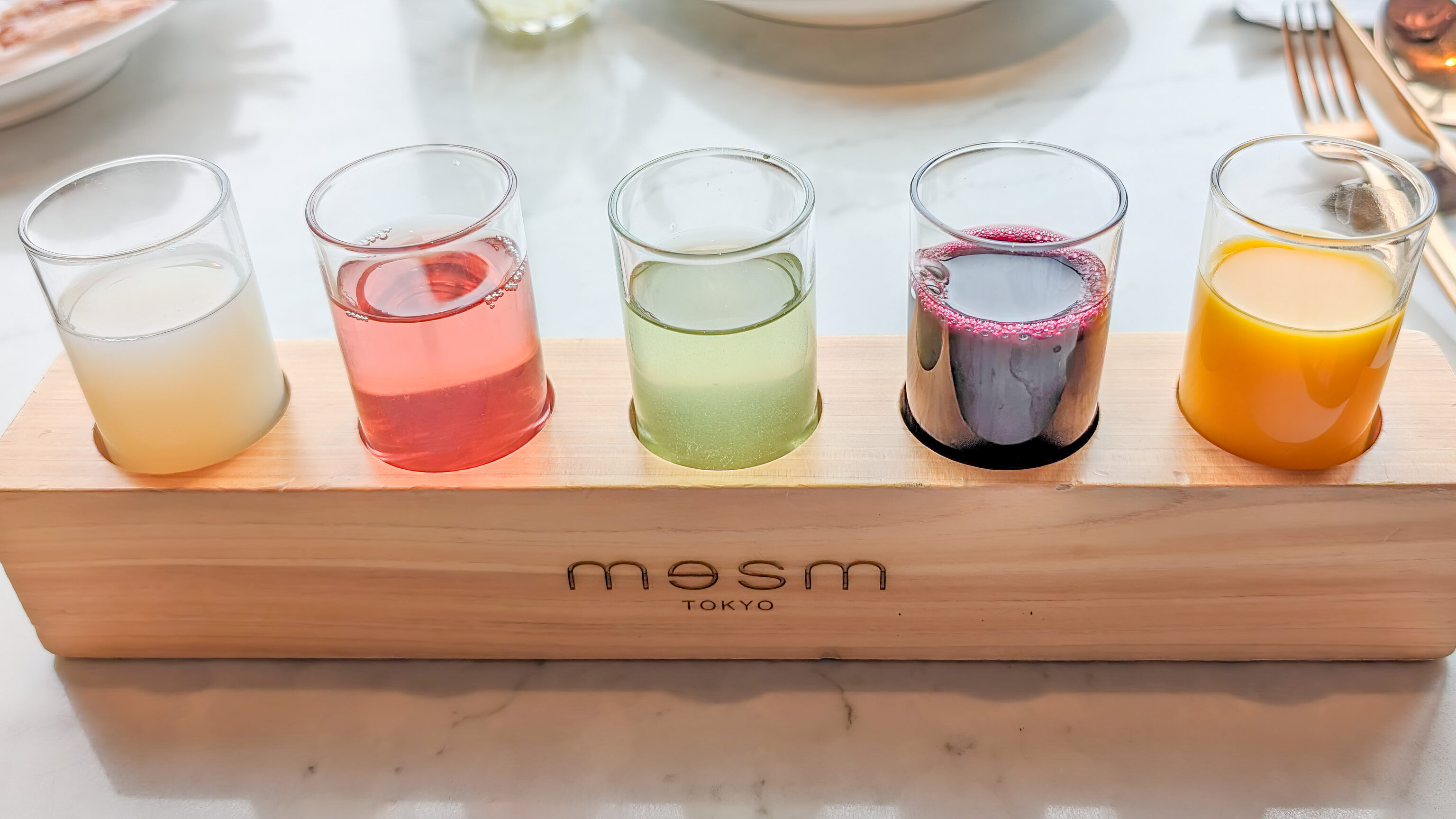
Breakfast at 6:30am was largely the same as yesterday and was just as excellent!
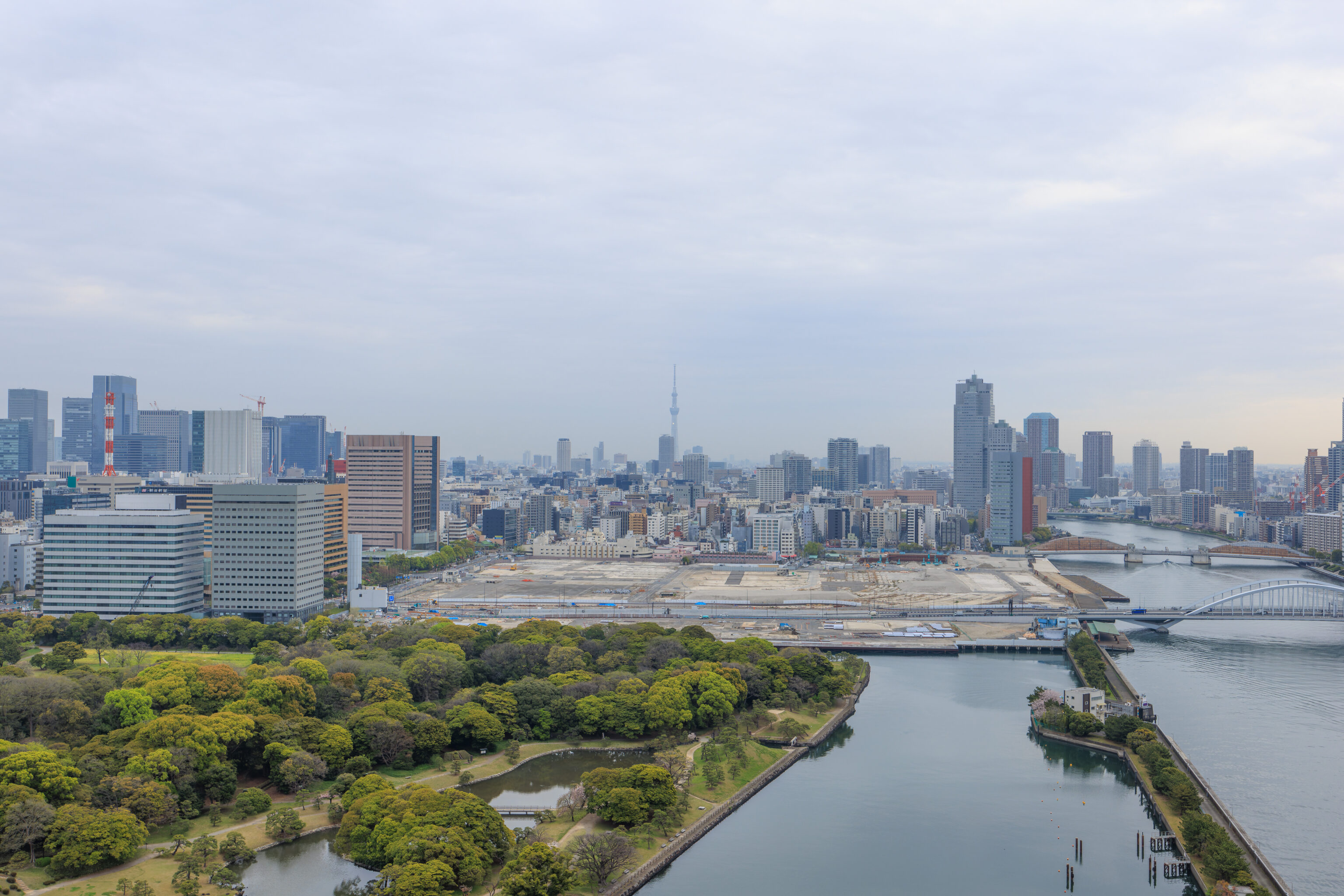
Unfortunately, the weather didn’t look as good today. There wasn’t much of a sunrise earlier at around 5:15am and it was not much better at 7:40am. It seemed like it might be raining to the north beyond the Tokyo Skytree.
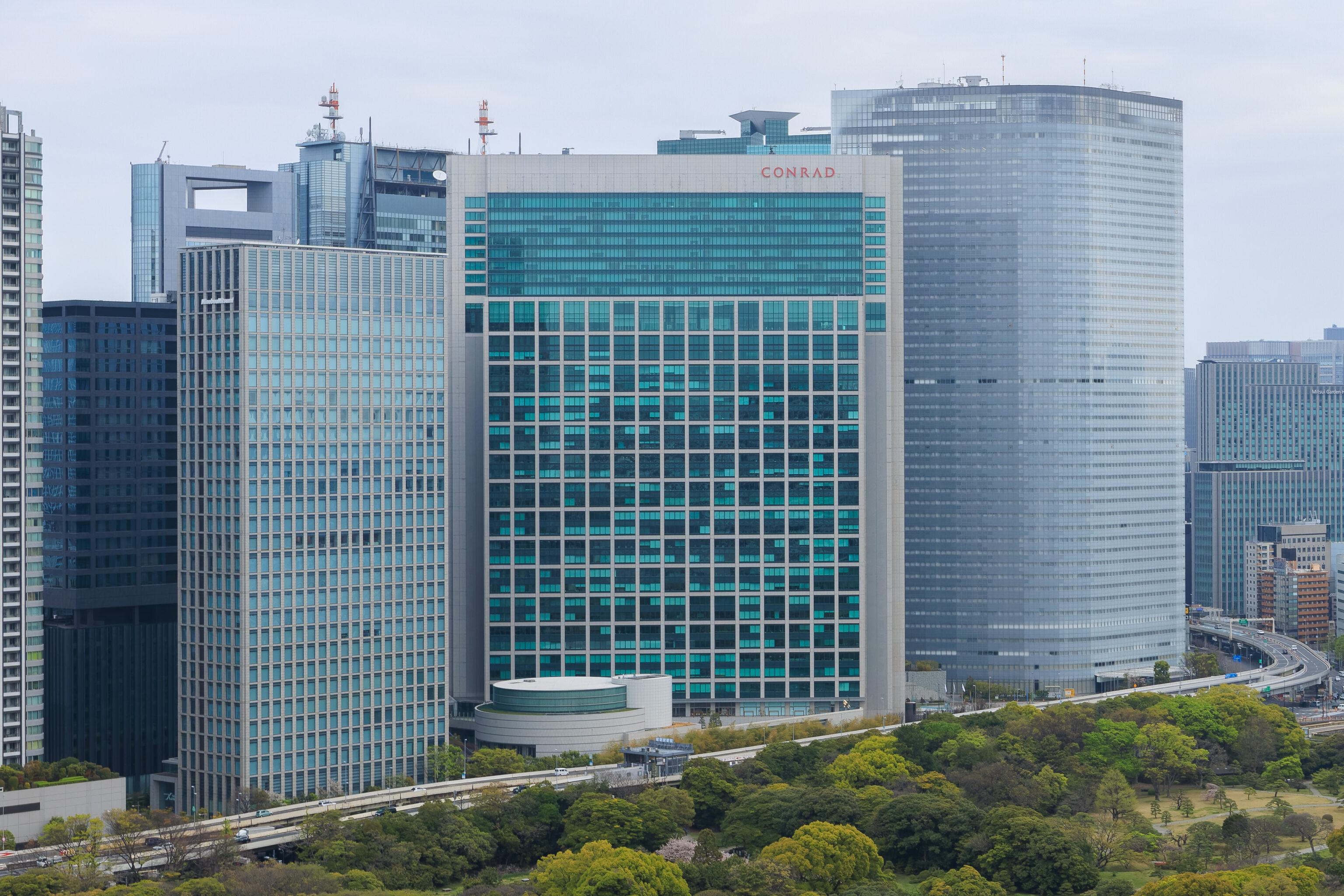
We finished packing up our bags and checked out, walking two blocks to the southwest to reach 竹芝駅 Takeshiba Statation. We took the elevated 新交通ゆりかもめ Yurikamome Line one stop to 汐留駅 Shiodome Station, right next to the コンラッド Conrad where we will be staying another two nights. It turns out that the only way to enter is by taking an escalator down to ground level, entering the building via the Conrad hotel entrance, and taking an elevator up to the lobby.
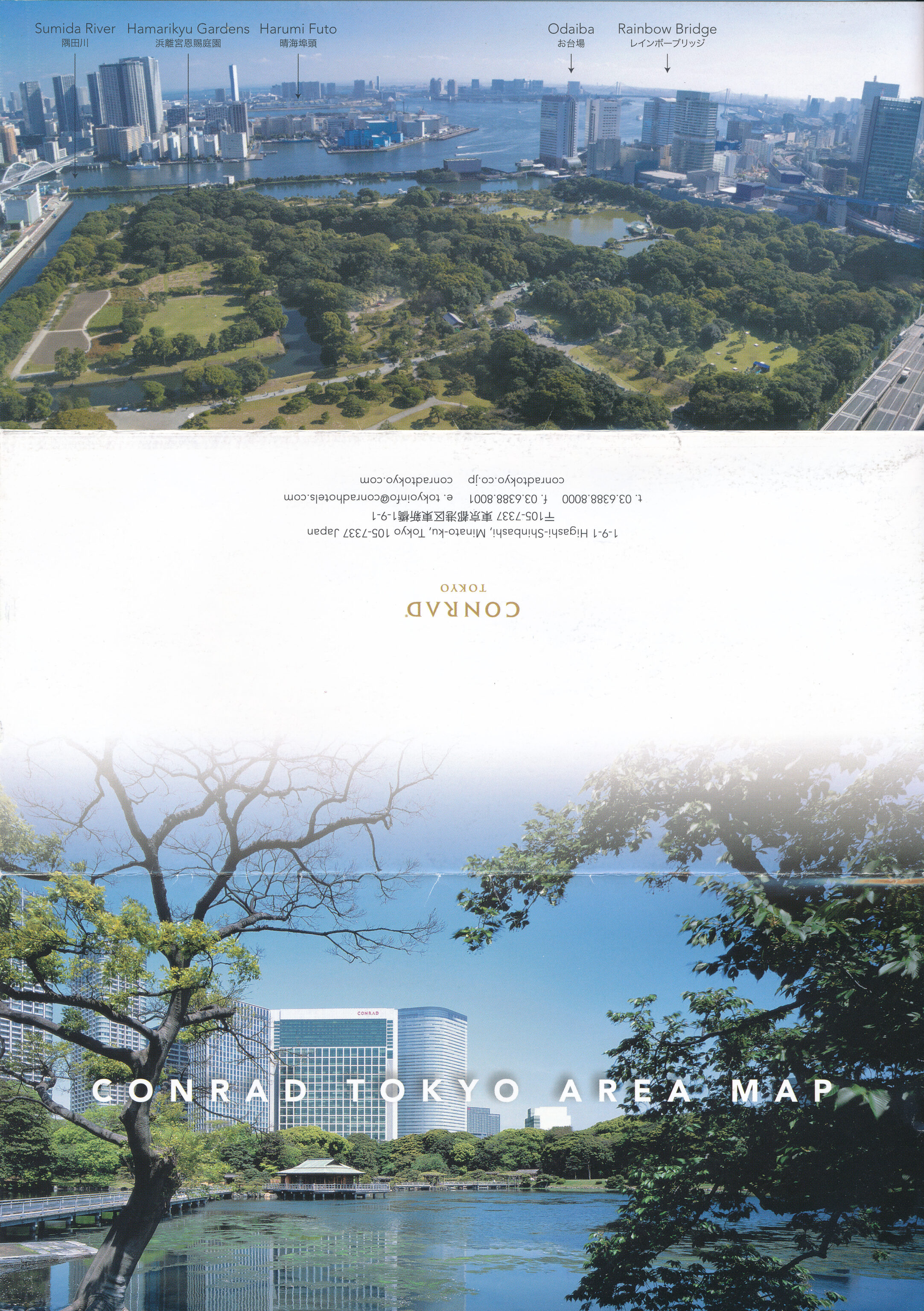
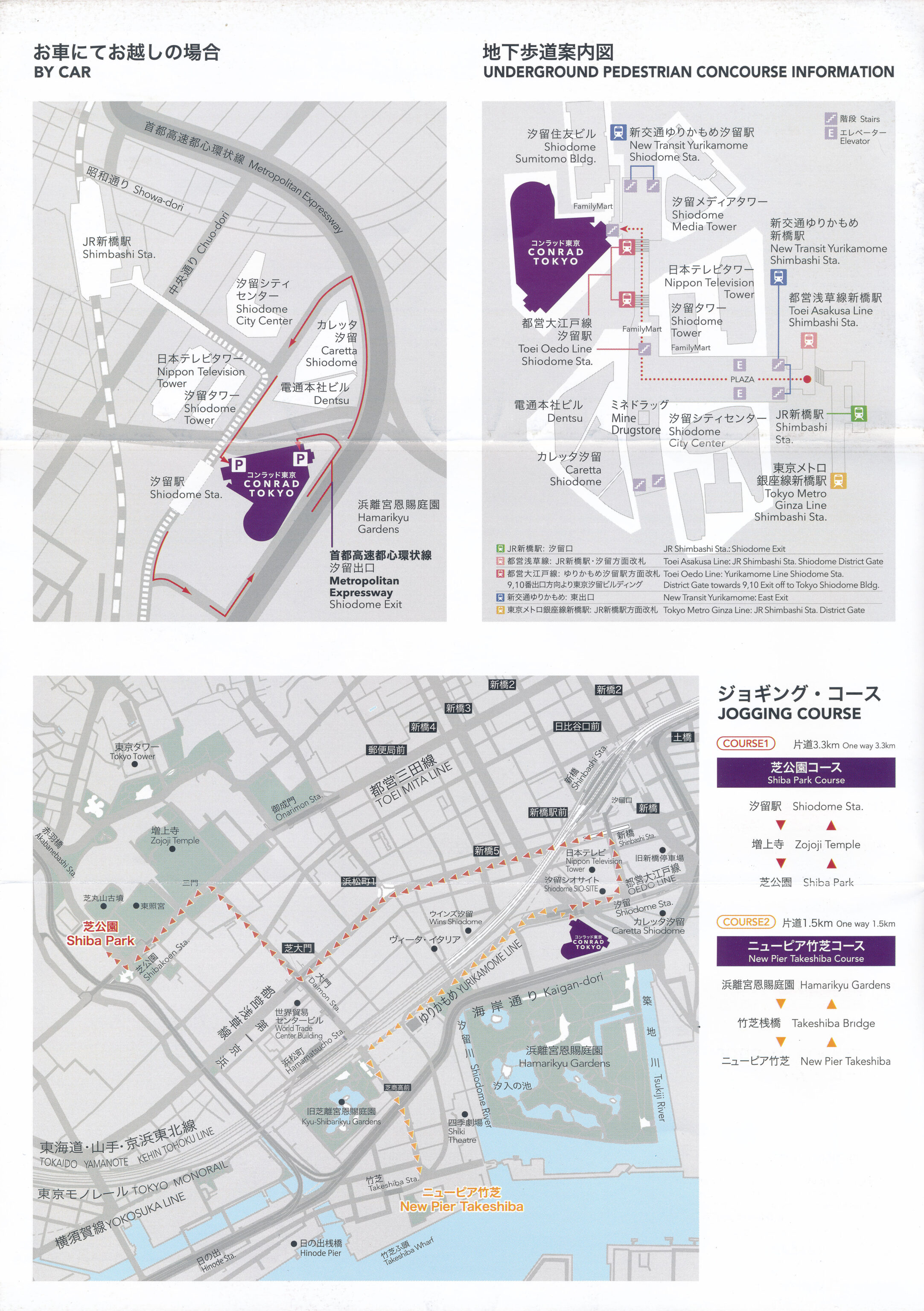
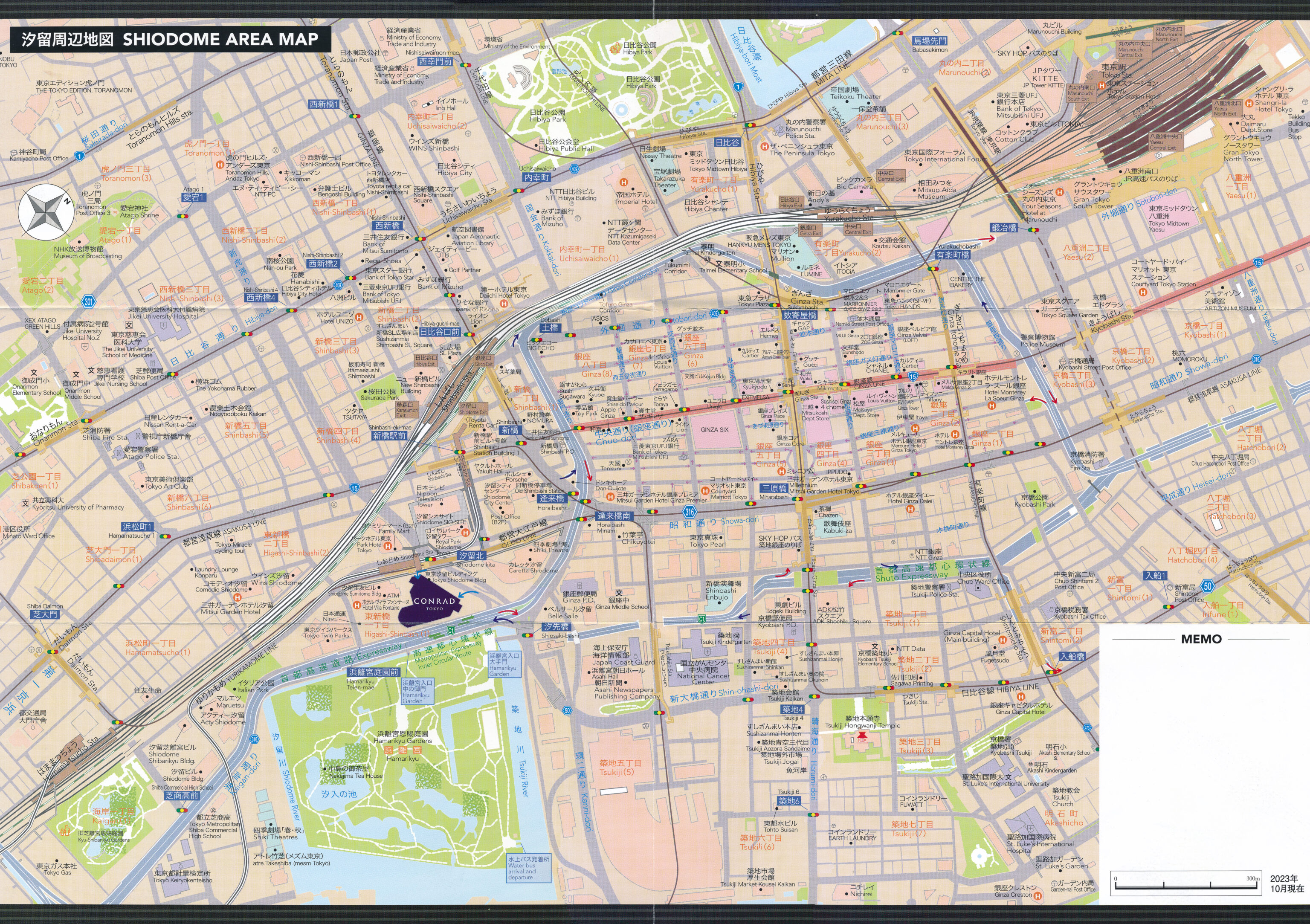
We registered at the hotel, dropped off our bags, and headed back out. We were provided a handy map of the area, which would have been more useful in the days before smartphones and Google Maps.
Kamakura
We returned to Shiodome Station to take the Yurikamome Line one more stop to 新橋駅 Shimbashi Station. It is an extremely short trip. Walking is likely just as fast, particularly when using the elevated walkway below the train line. Although, we’ve never done the walk before and some of the elevated walkways can be confusing.
At Shimbashi, we transferred to the 横須賀線 Yokosuka Line and took it for about an hour south to reach Kamakura.
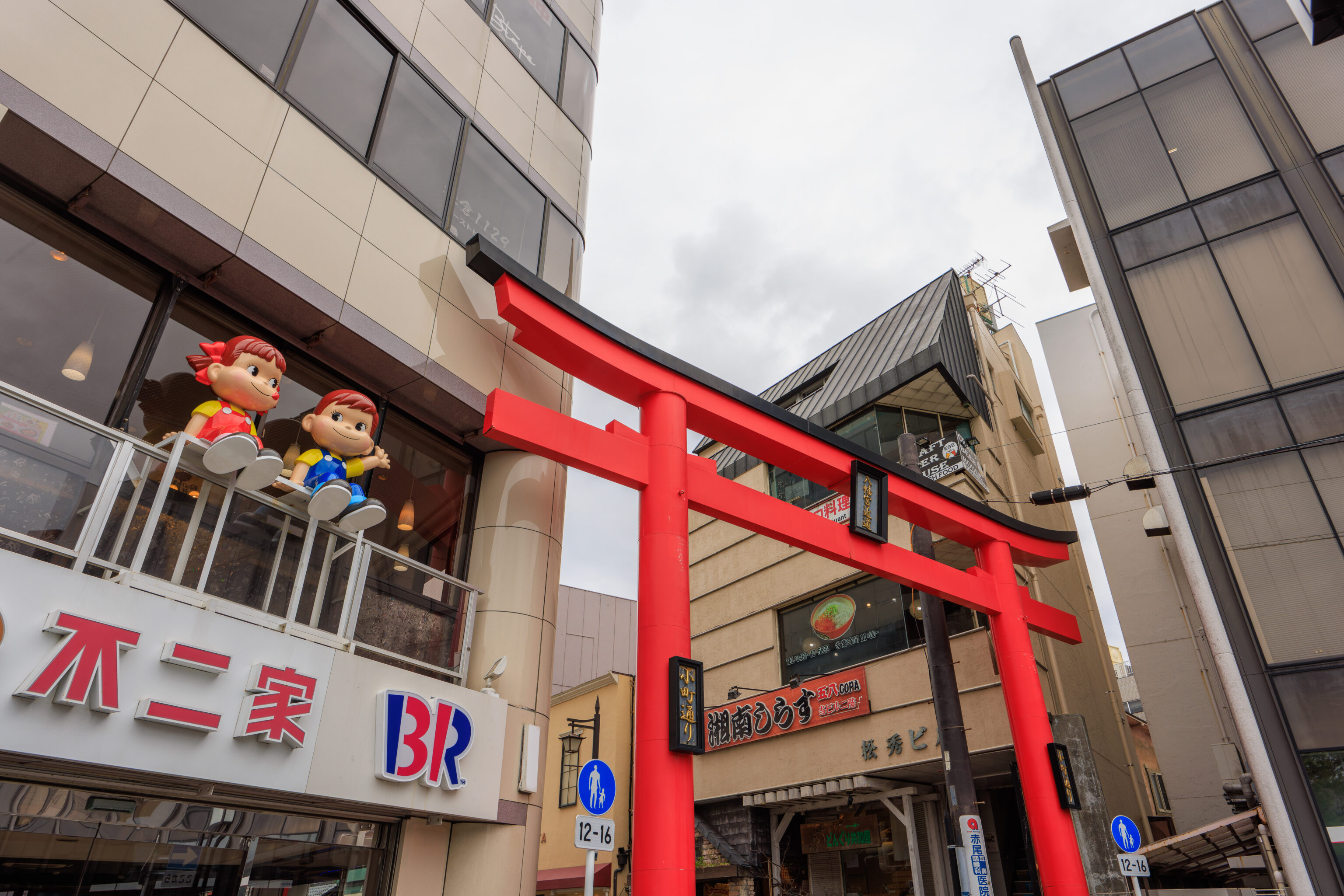
We arrived at Kamakura just before 10am. The weather hadn’t improved during our trip with the skies dark and overcast. We started walking to the north along 小町通り Komachi-dori, a pedestrian shopping street.
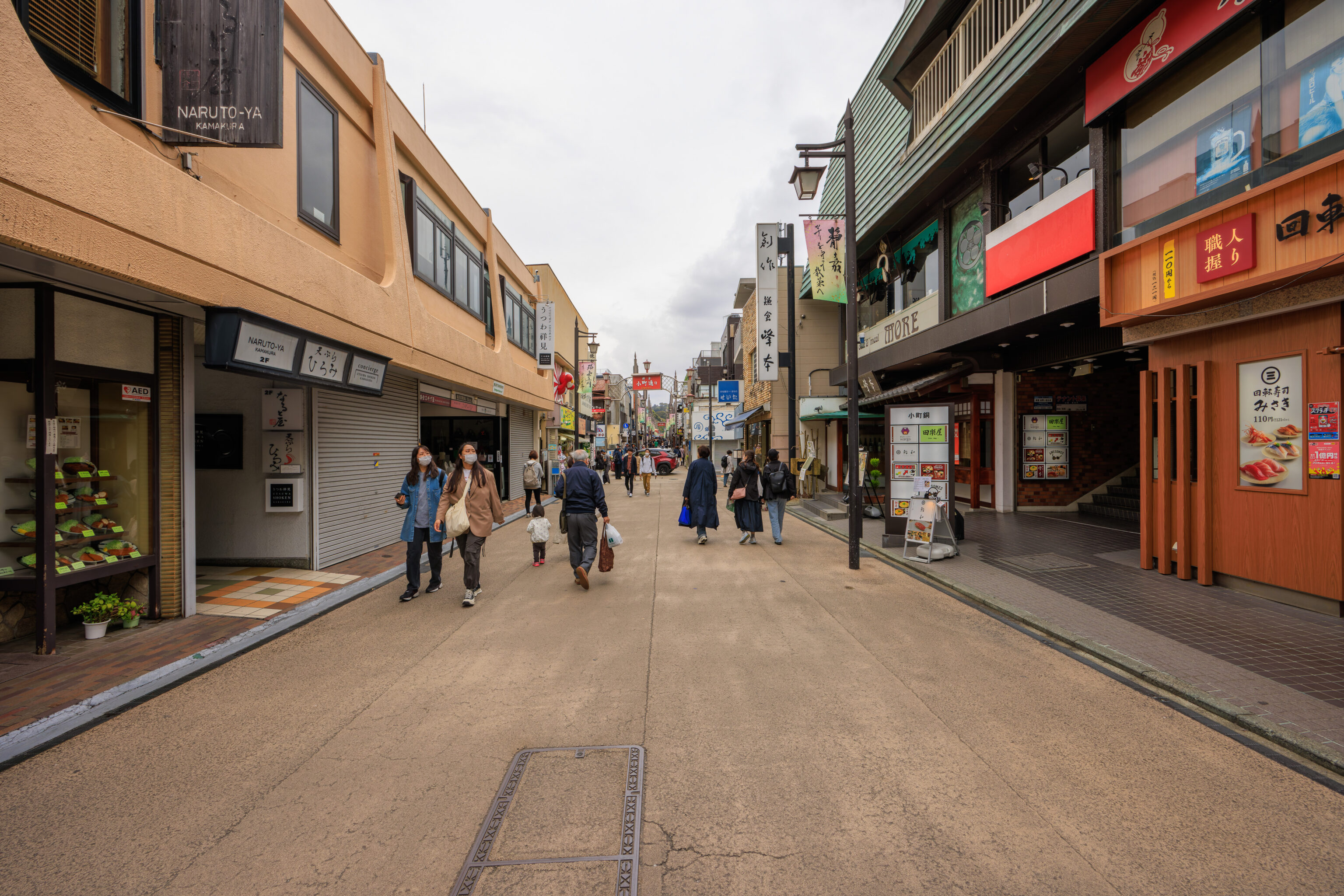
Most of the businesses were still closed and there weren’t very many people around.
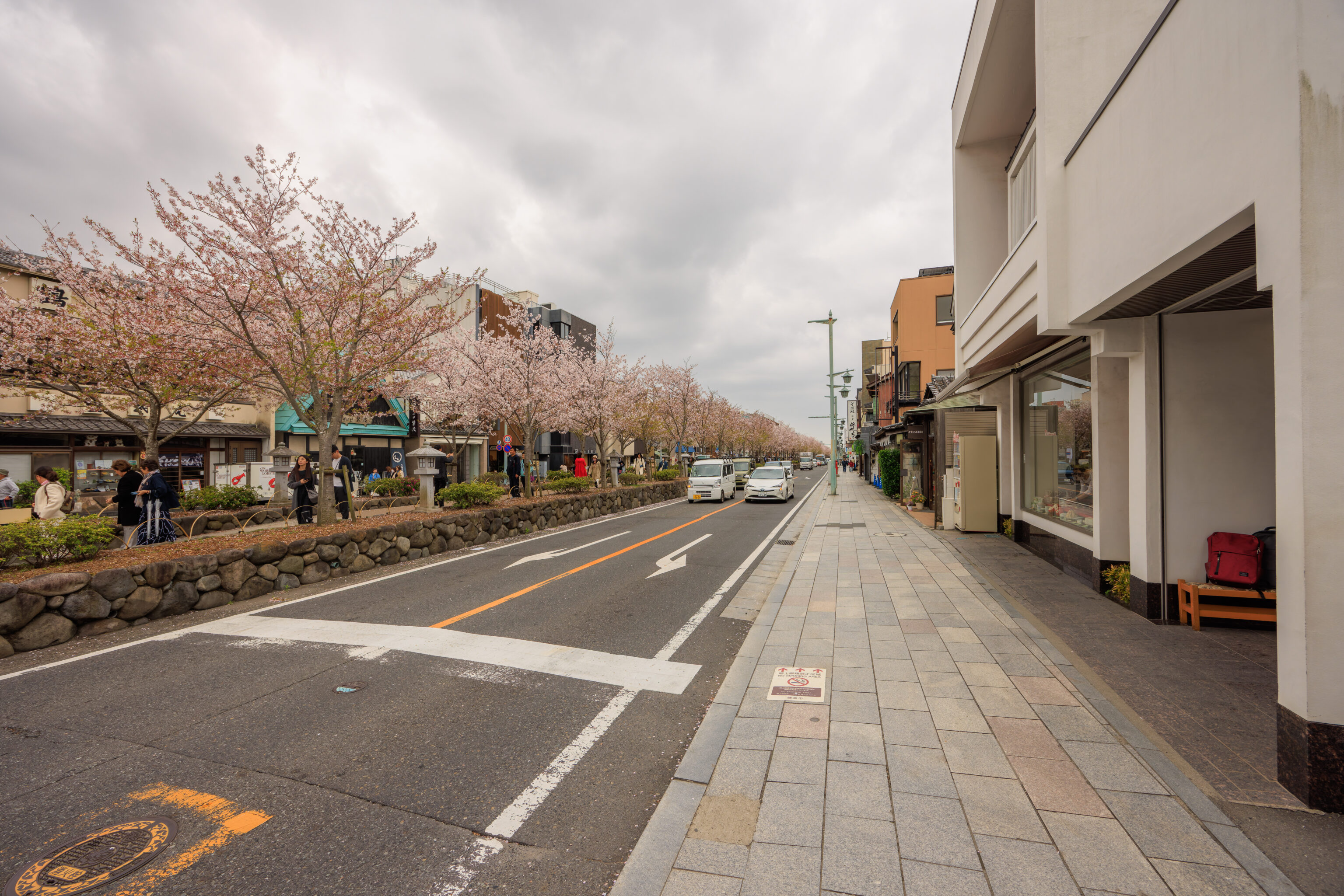
After reaching the southwest corner of the 鶴岡八幡宮 Tsurugaoka Hachimangu, we turned to the right and walked a block to reach the north end of the main street through town, 若宮大路 Wakamiya Oji.
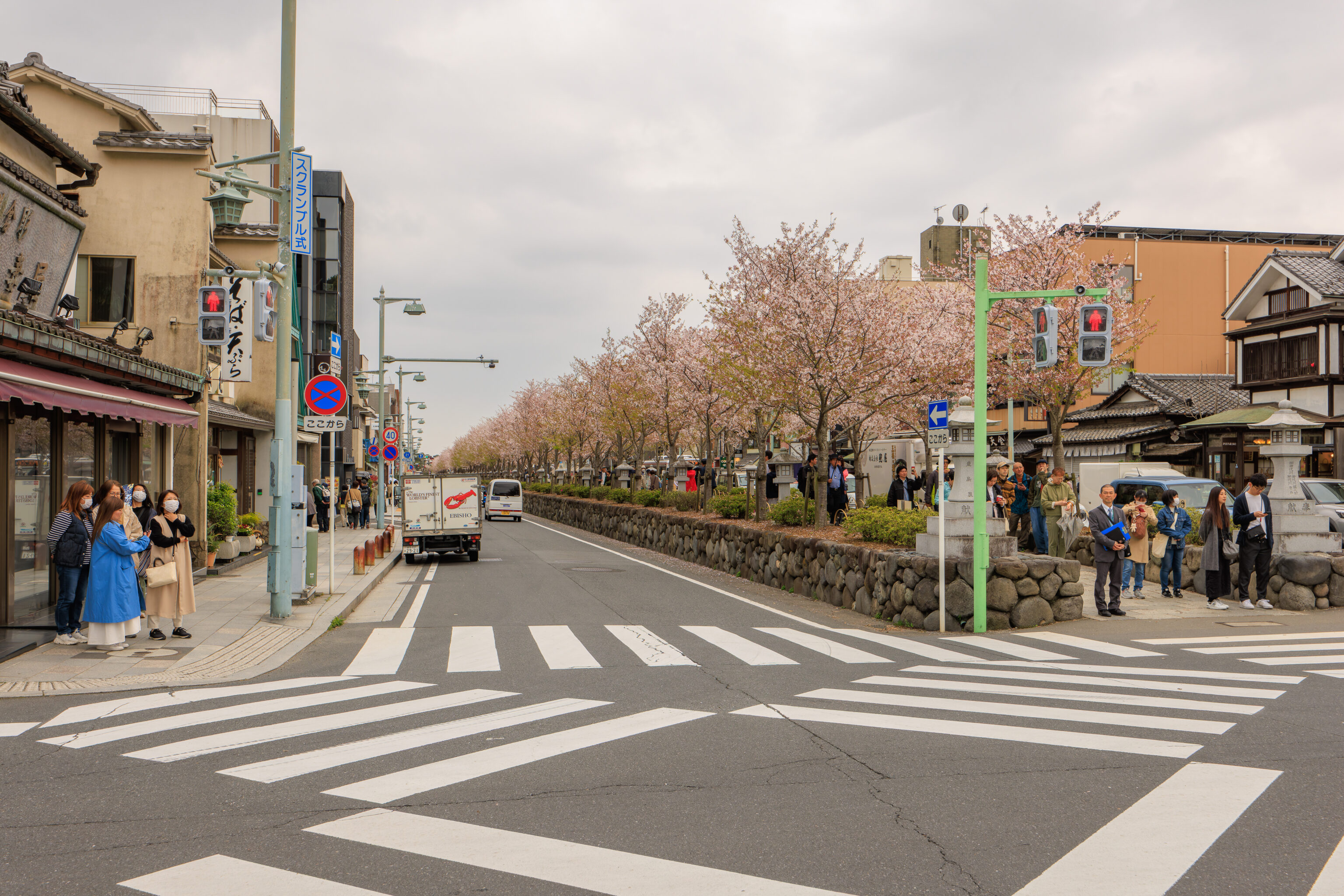
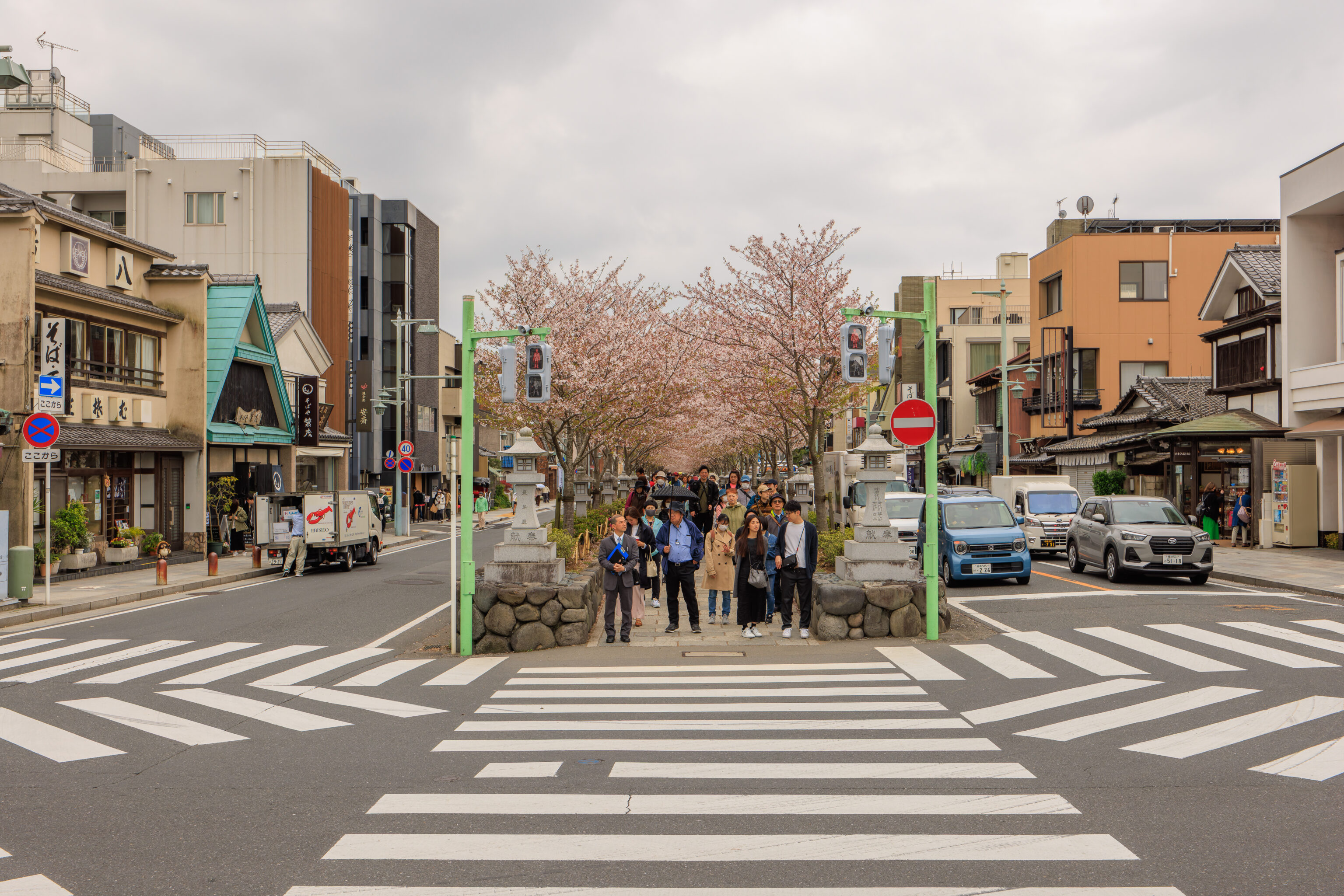
There is a pedestrian walkway, the 段葛 Dankazura, that runs through the middle of the road. It is lined on both sides by sakura. It looked very busy and also well past peak bloom.
Tsurugaoka Hachimangu
We turned around to enter 鶴岡八幡宮 Tsurugaoka Hachimangu, the most important Shinto shrine in Kamagura.
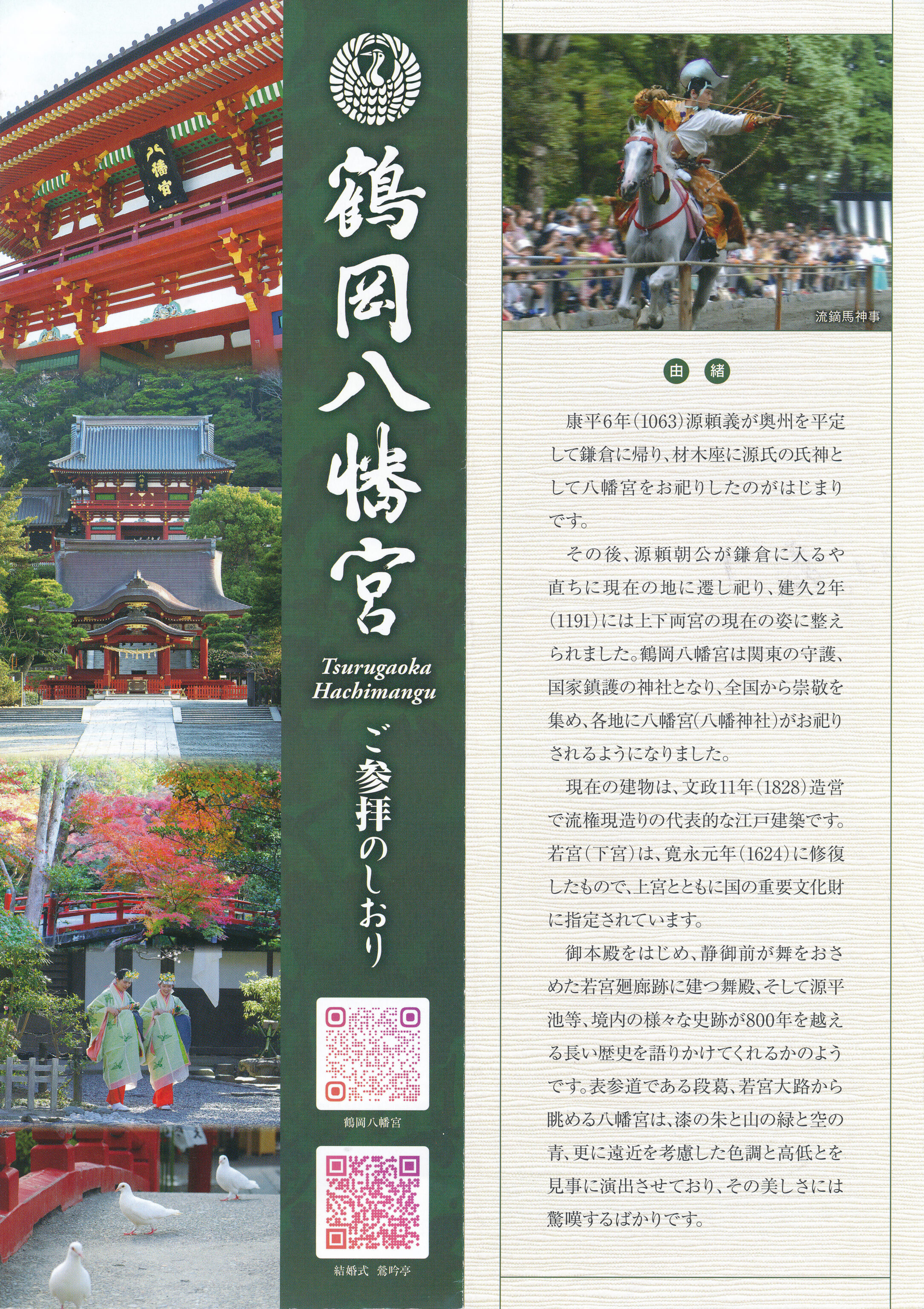
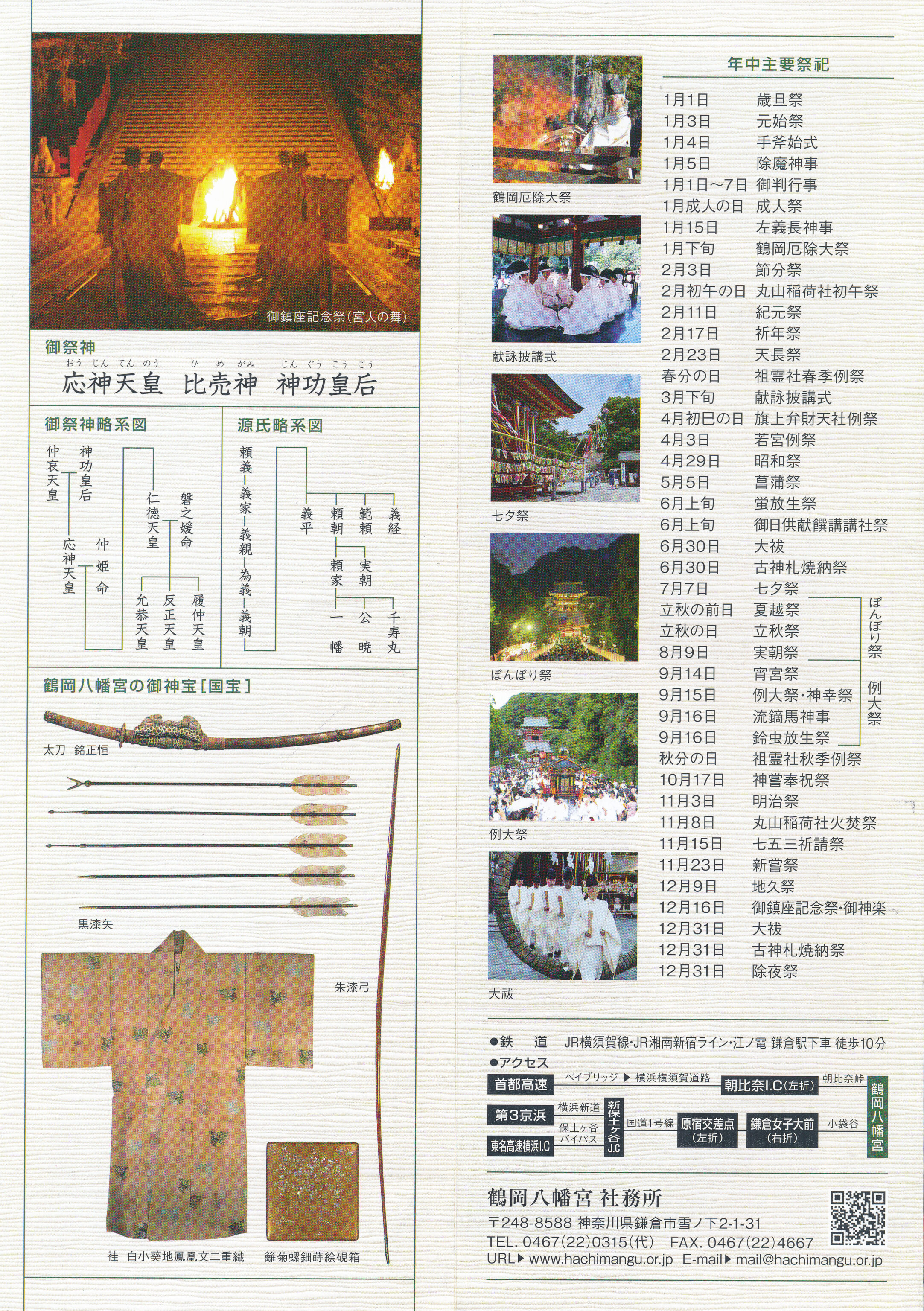
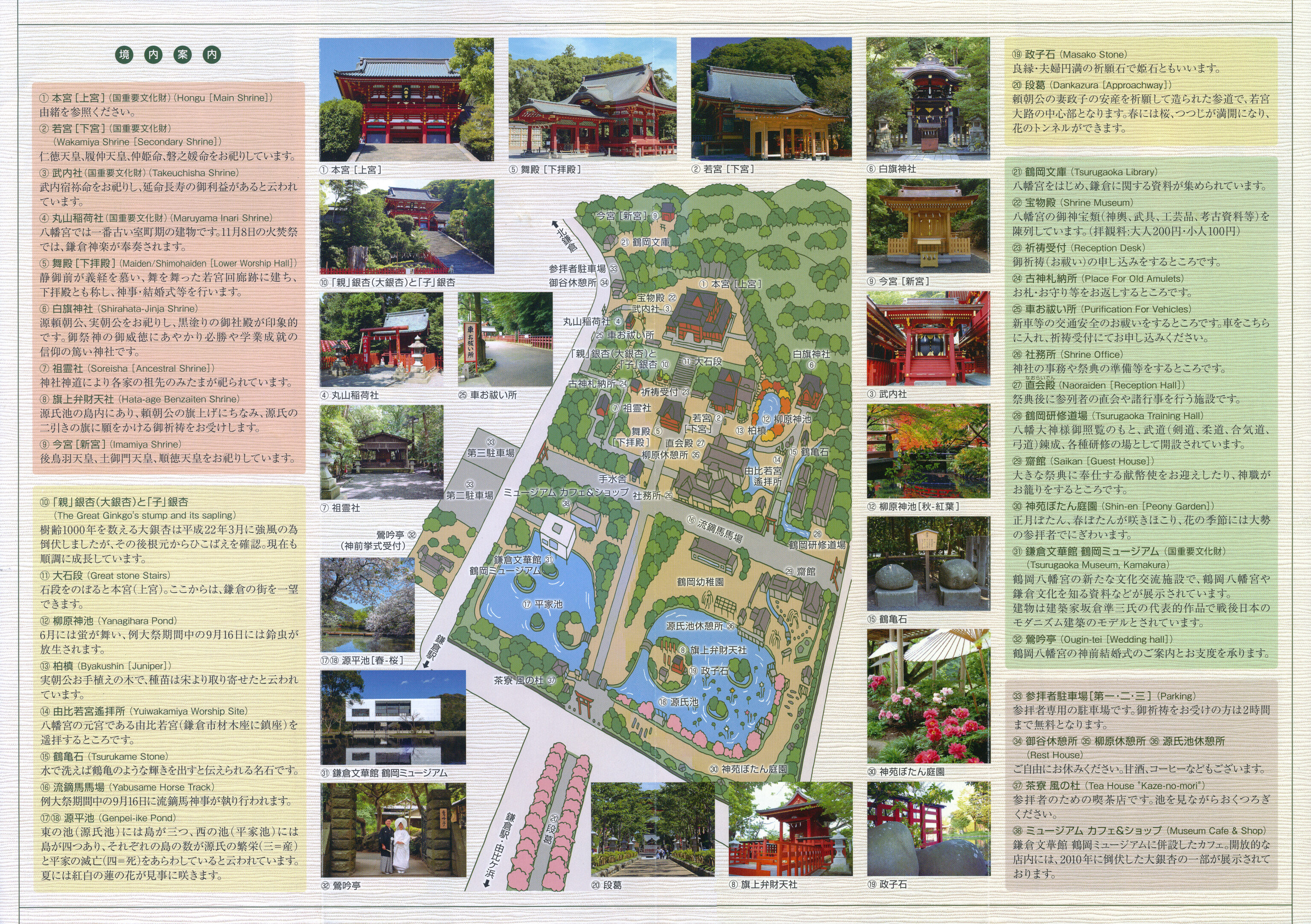
We picked up a map showing various points of interest. It was mostly in Japanese but did have English text for the place names.
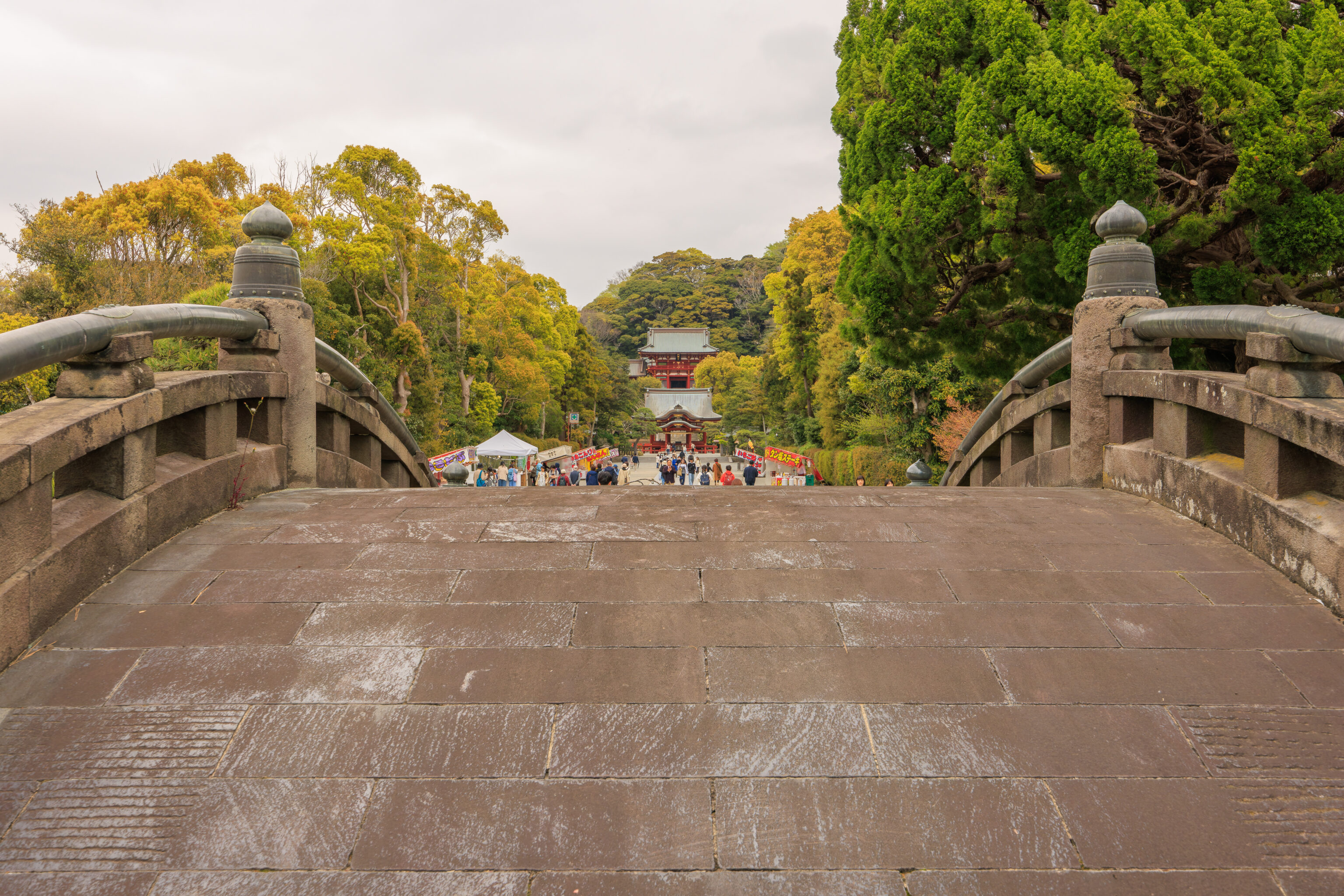
The main shrine is to the north, a few hundred feet away.
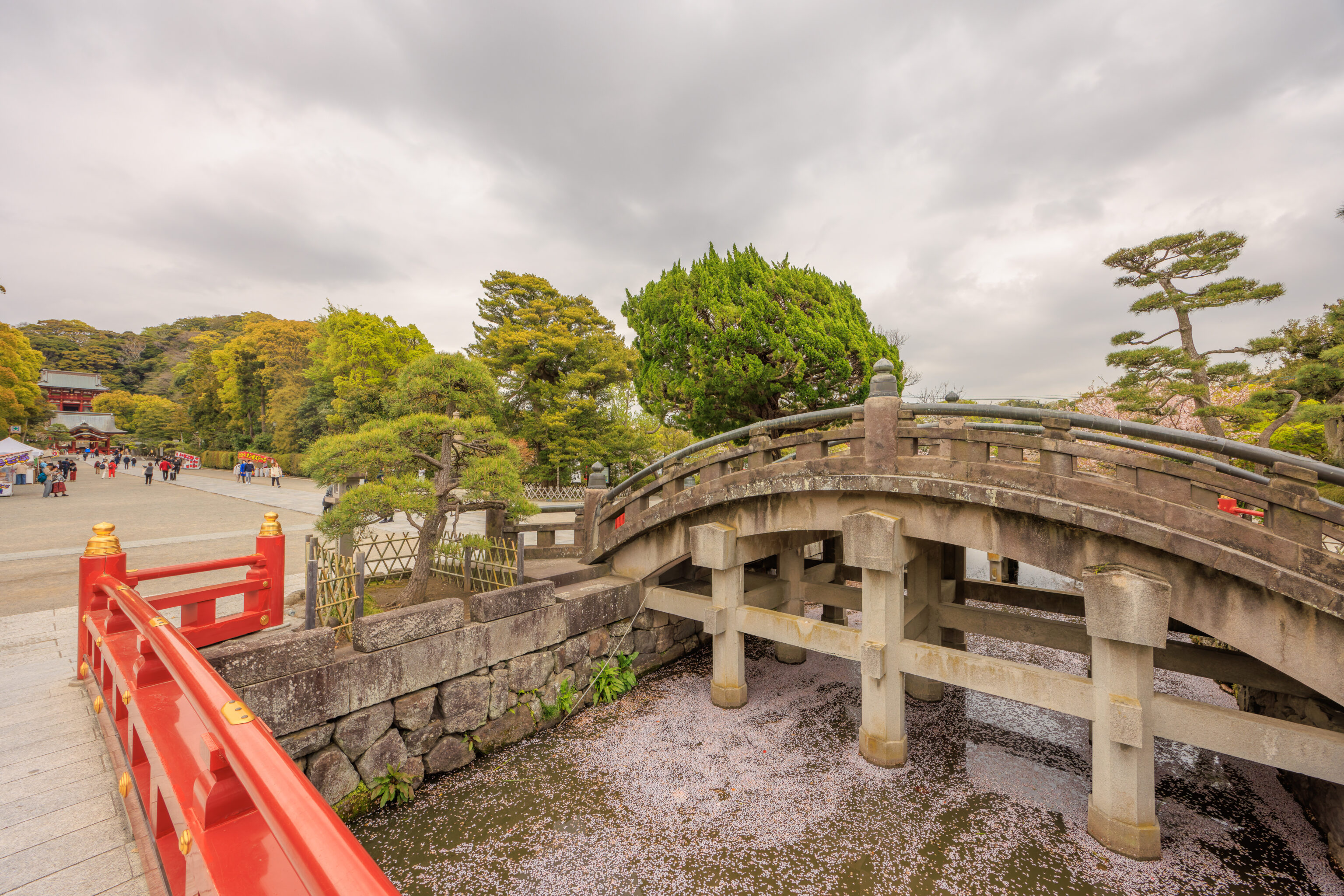
The arched bridge, which cannot be walked over, crosses a small waterway that connects two ponds on either side. The water’s still surface was covered with sakura petals.
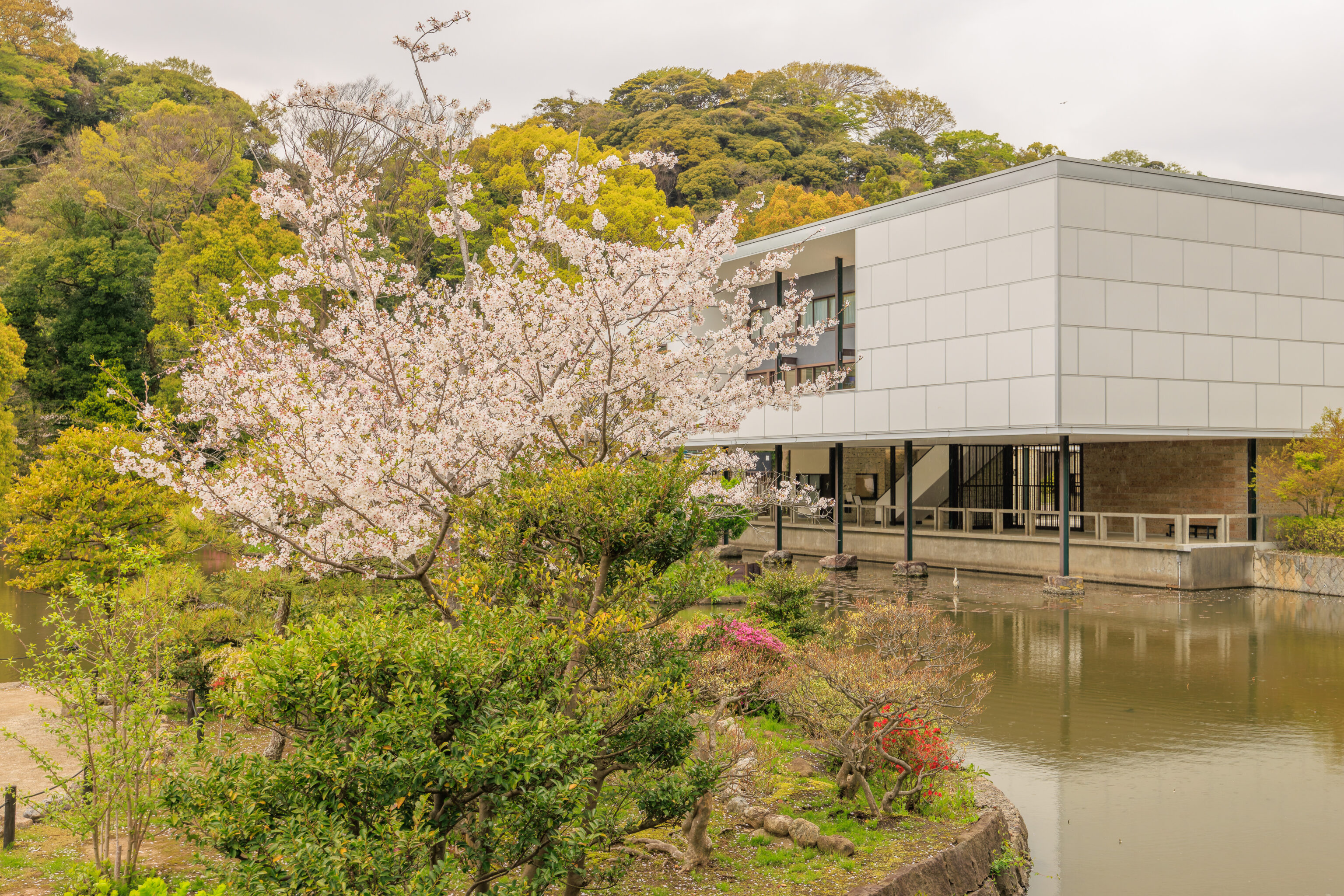
We took a short side path to the left. This path crosses over a small bridge onto a little island at the eastern edge of the 平家池 Heike Pond. The building in the background, at the northern edge of the pond, is a museum.
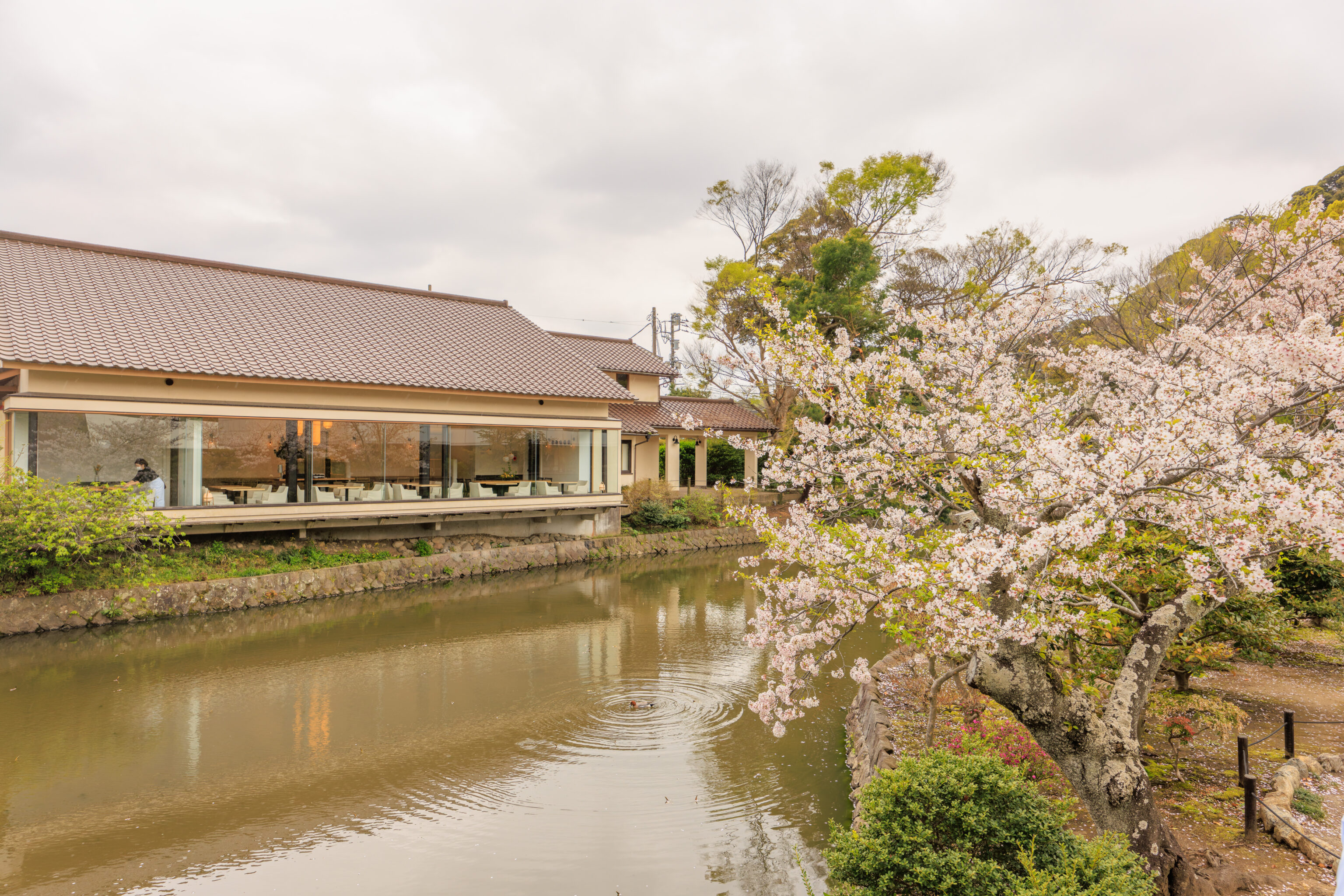
There were a few pretty sakura on the little island.
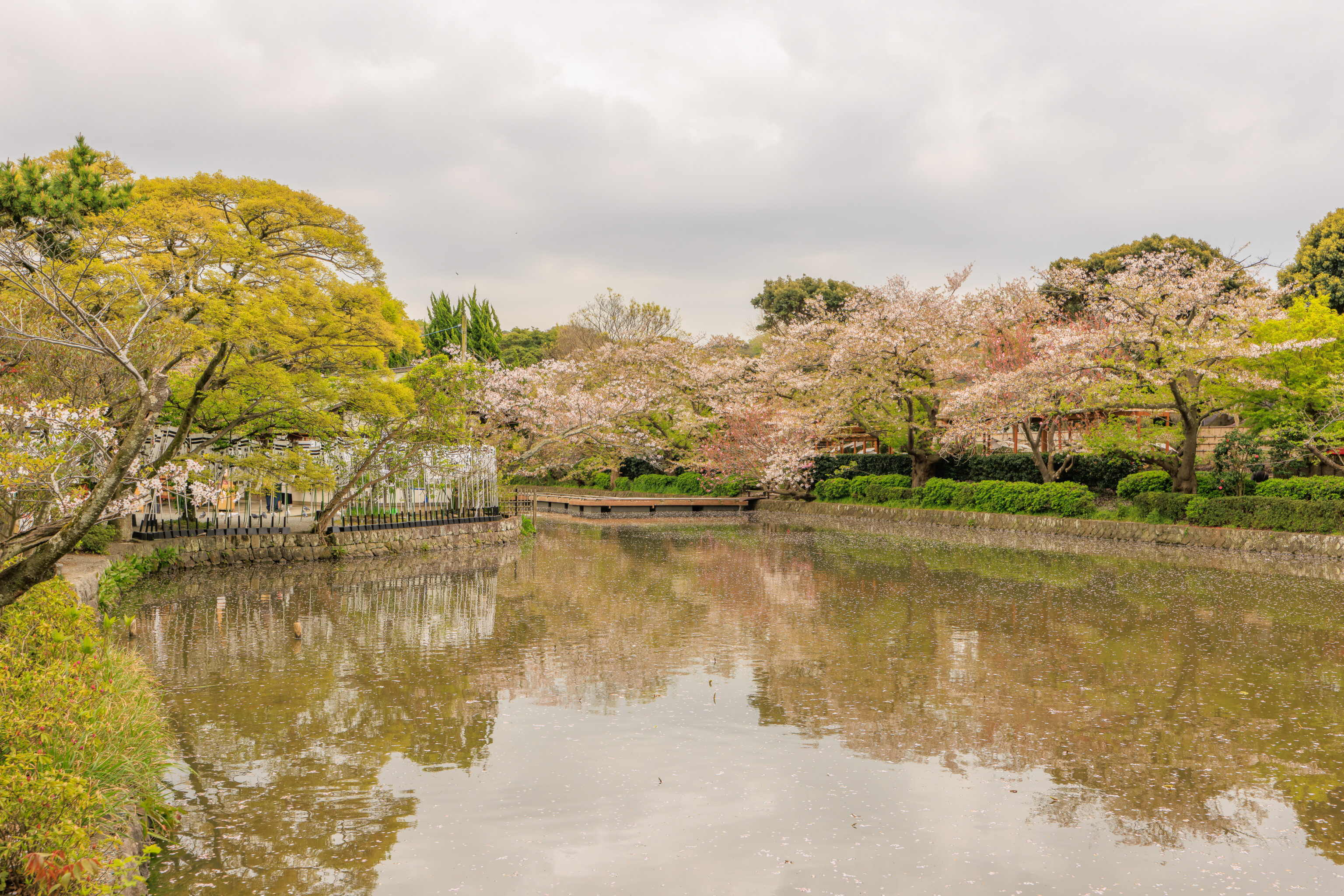
We then walked to the east, reaching the western edge of the 源氏池 Genji Pond. There is also a small island at the edge of the pond, along with some sakura to the southeast at the pond’s edge.
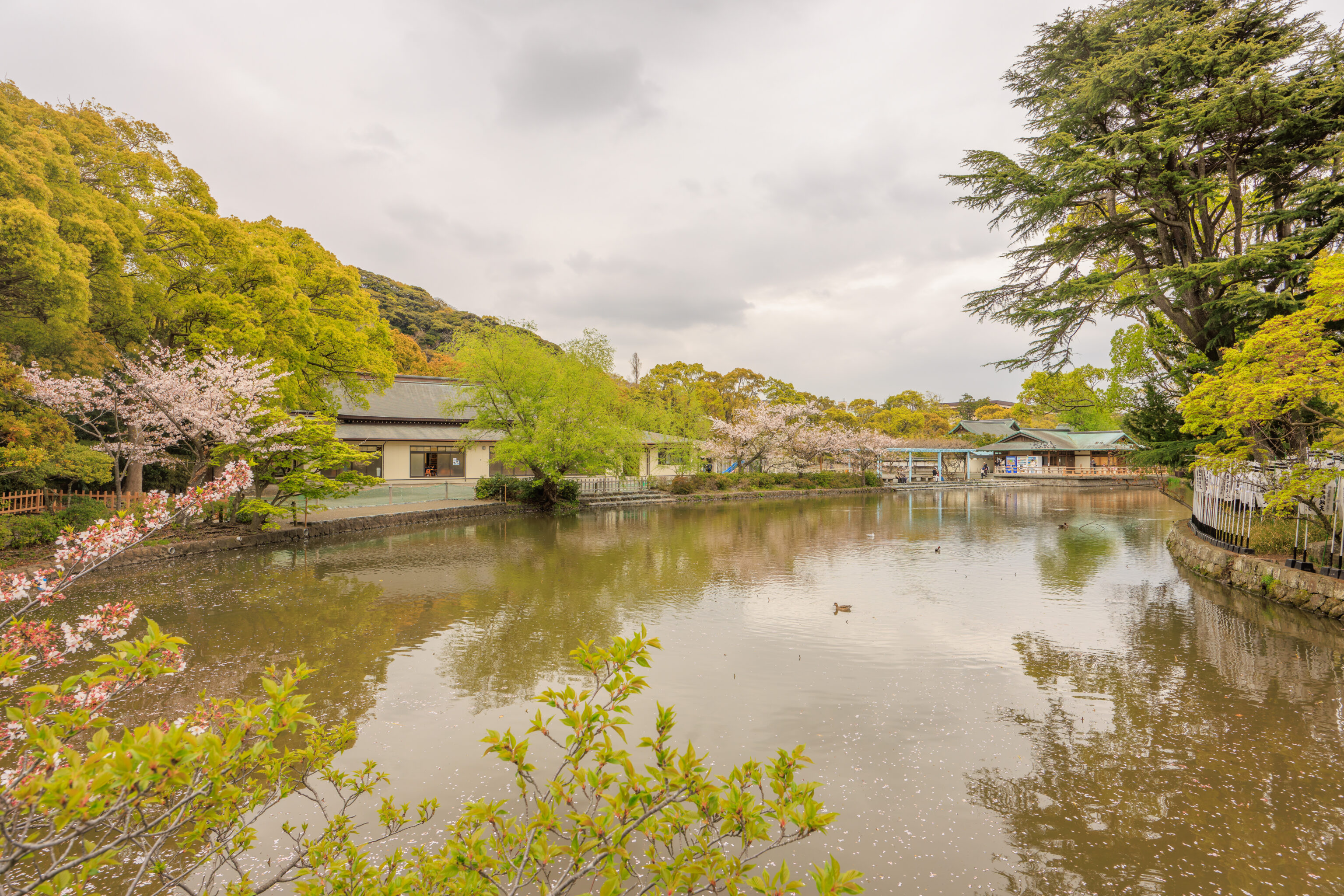
We saw more sakura on the northern side of the pond as well.
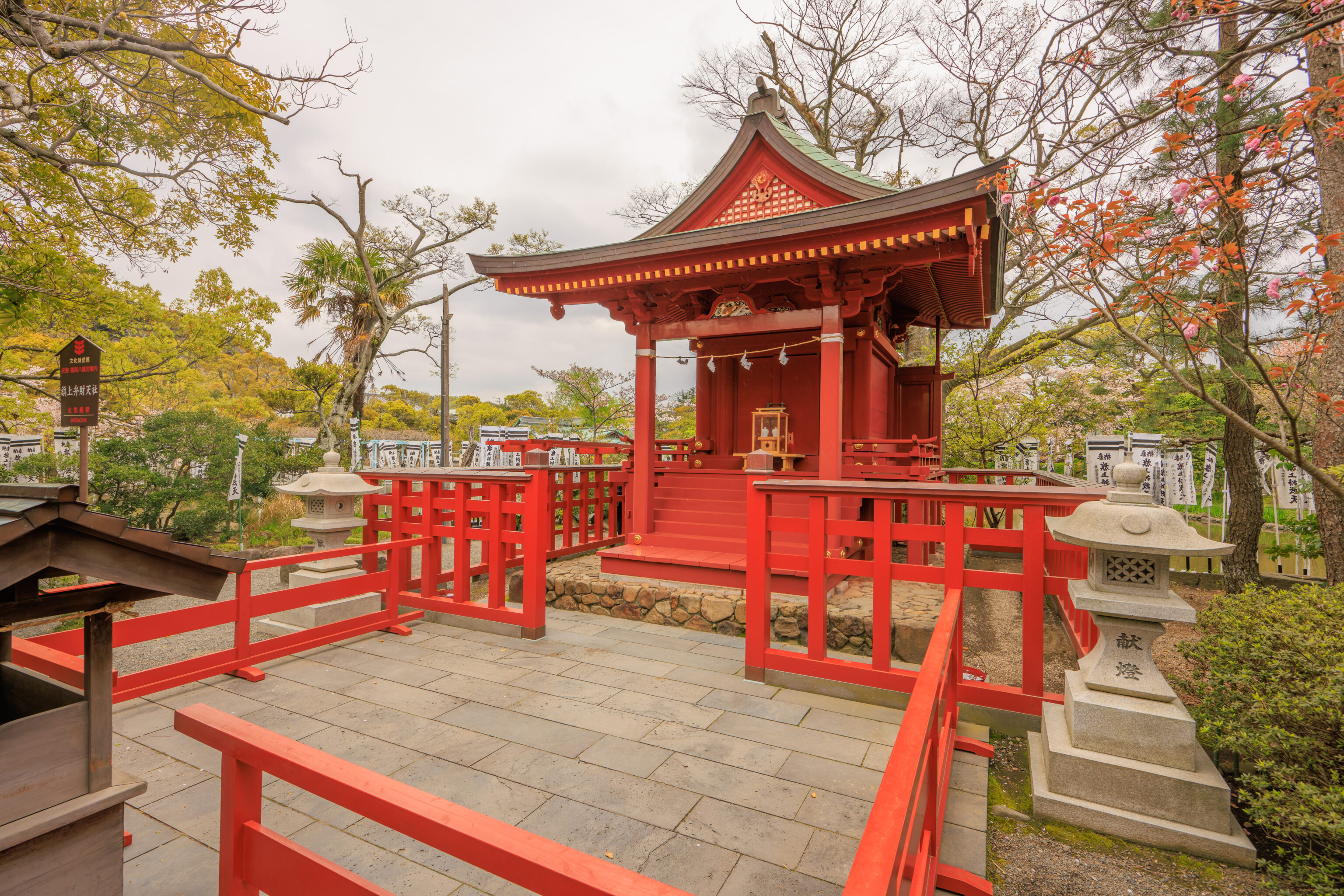
The island holds a small Shinto shrine.
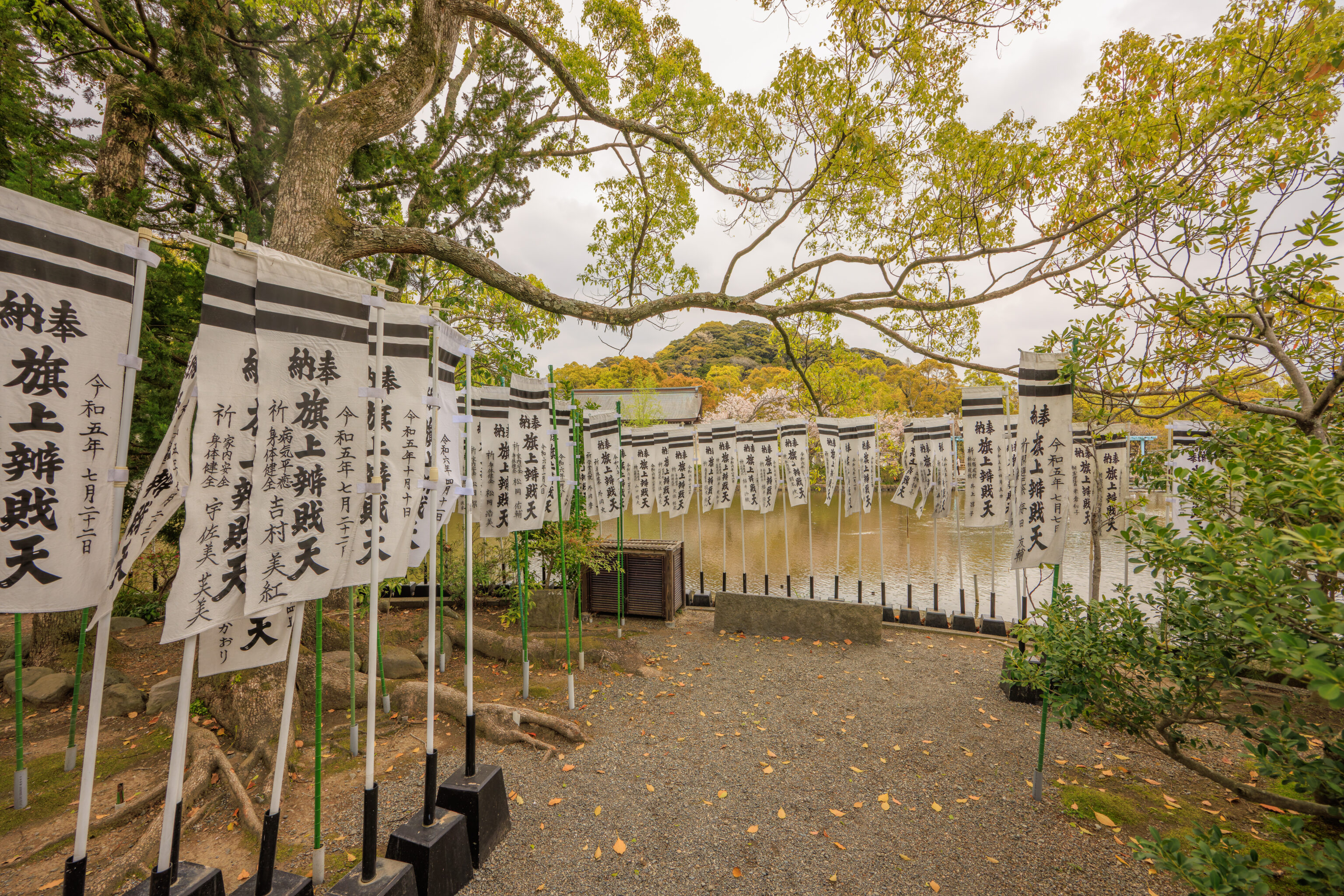
This island is surrounded by banners.
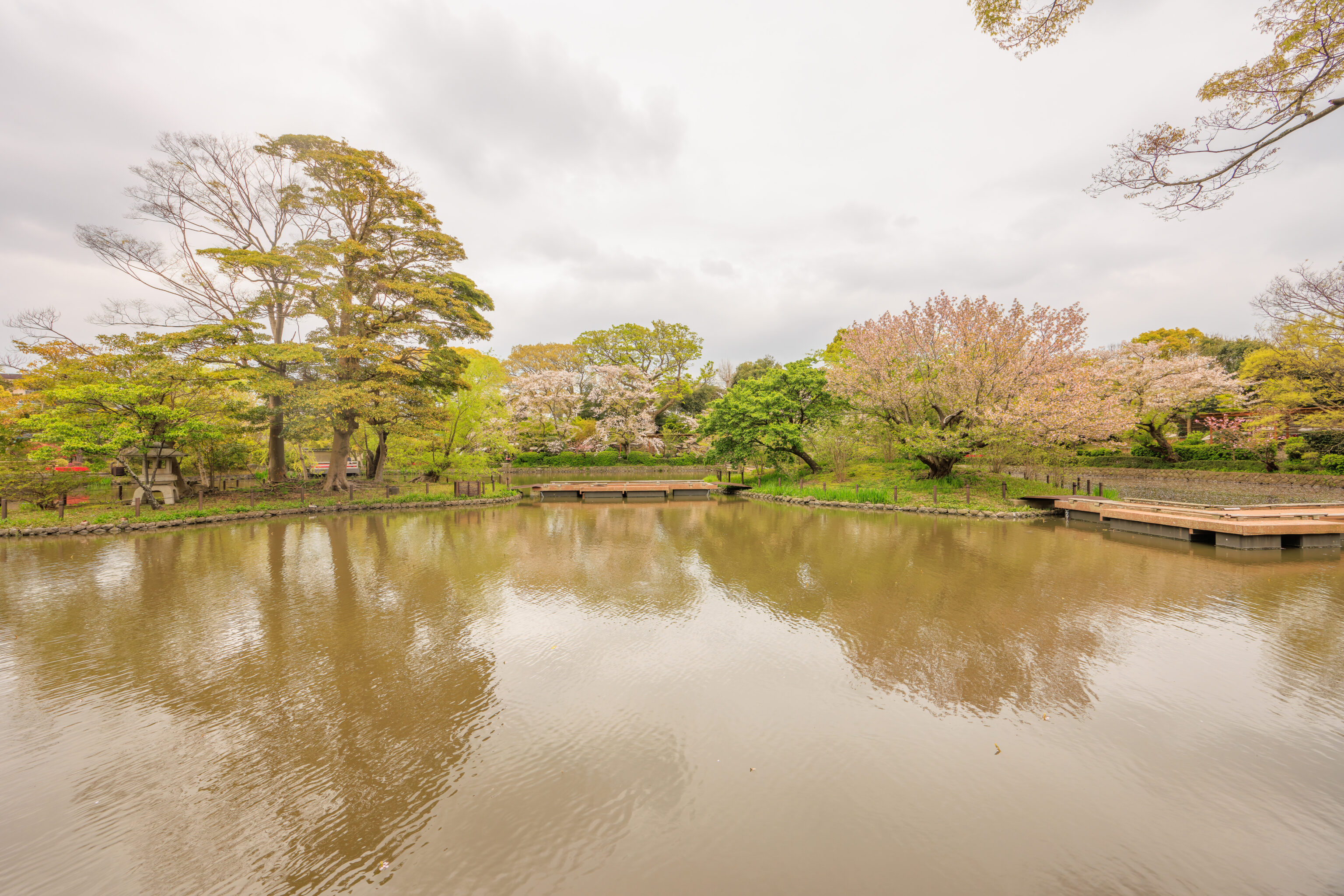
This was the view from the back of the island to the east. Again, some more sakura, but still all well past peak bloom.
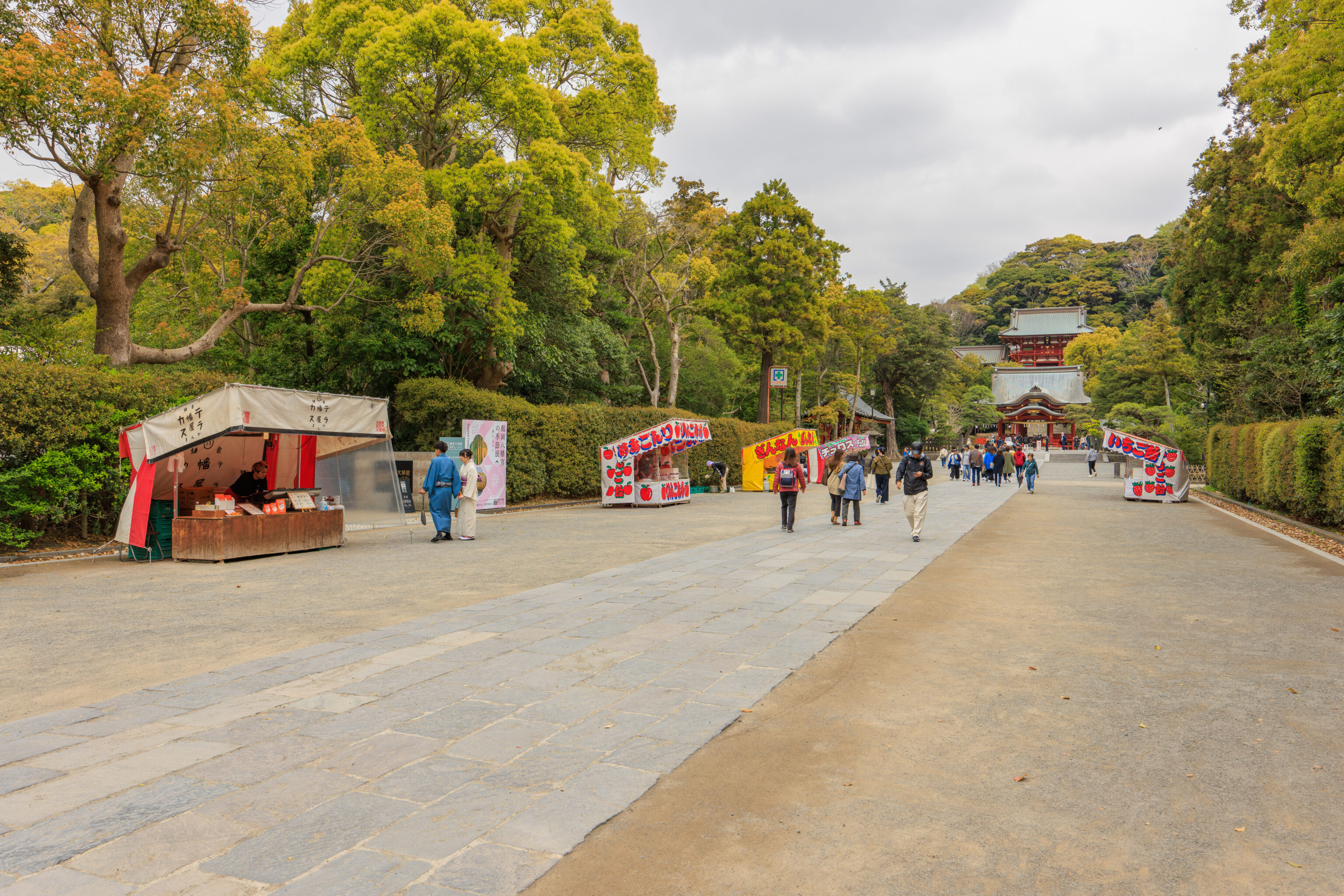
We returned to the main path to continue walking to the north. There were a few vendors scattered along this path at wide intervals.
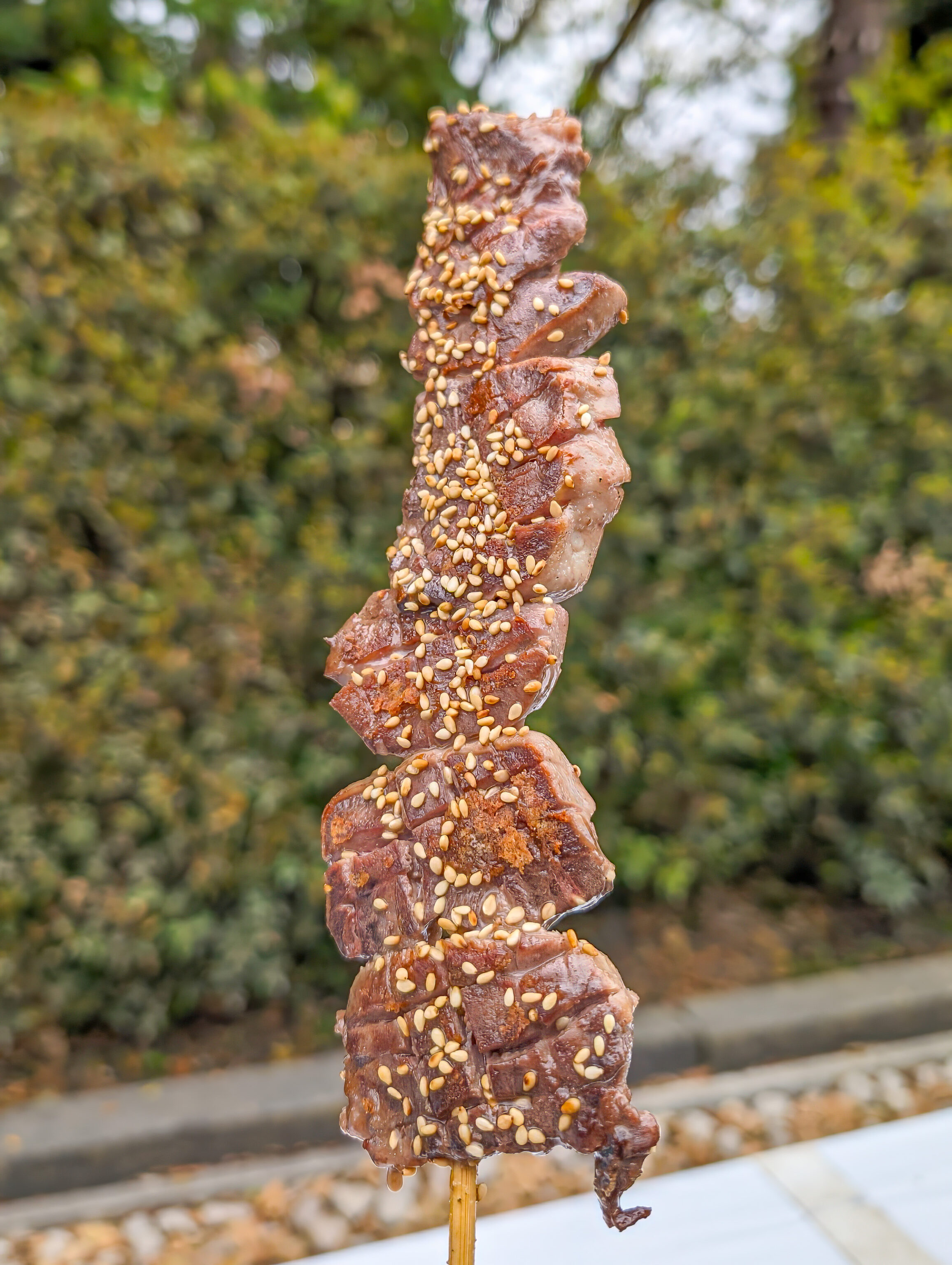
We stopped at one of them to get freshly cooked beef tongue. It was pretty good. We ate before moving on as in general the Japanese don’t walk around while eating.
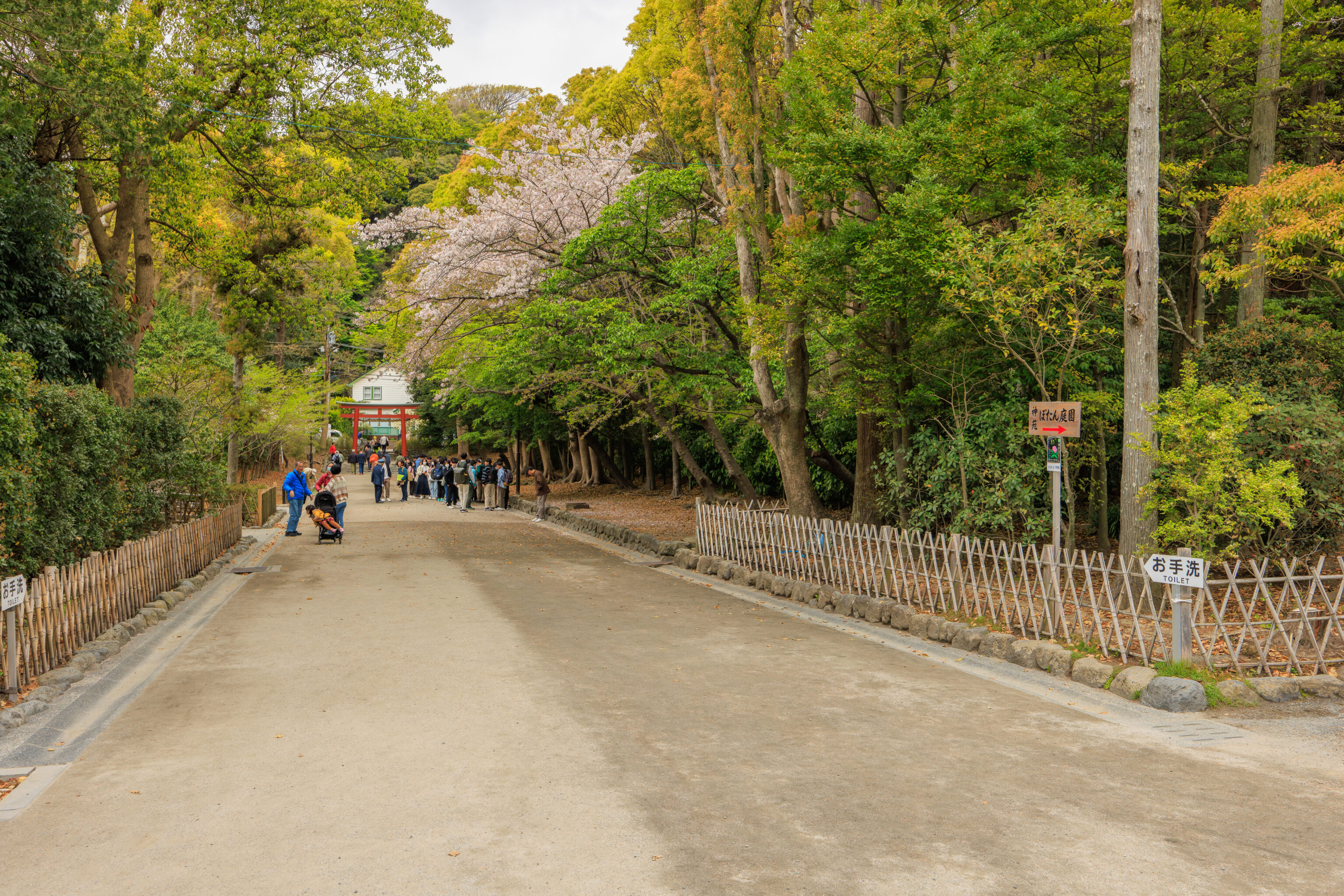
We saw a large sakura tree on a side path, along with a school group.
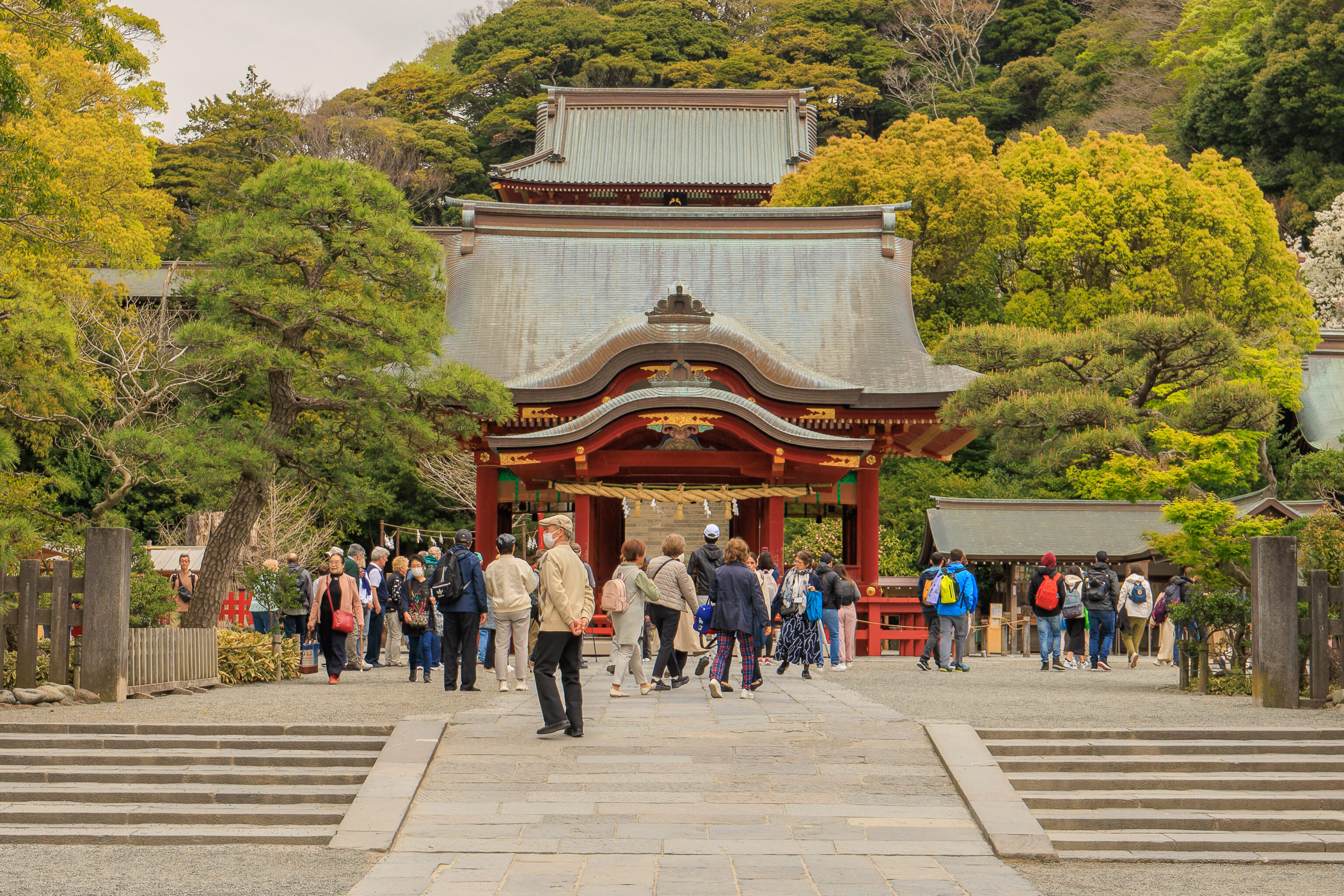
The area around the main shrine was somewhat busy.
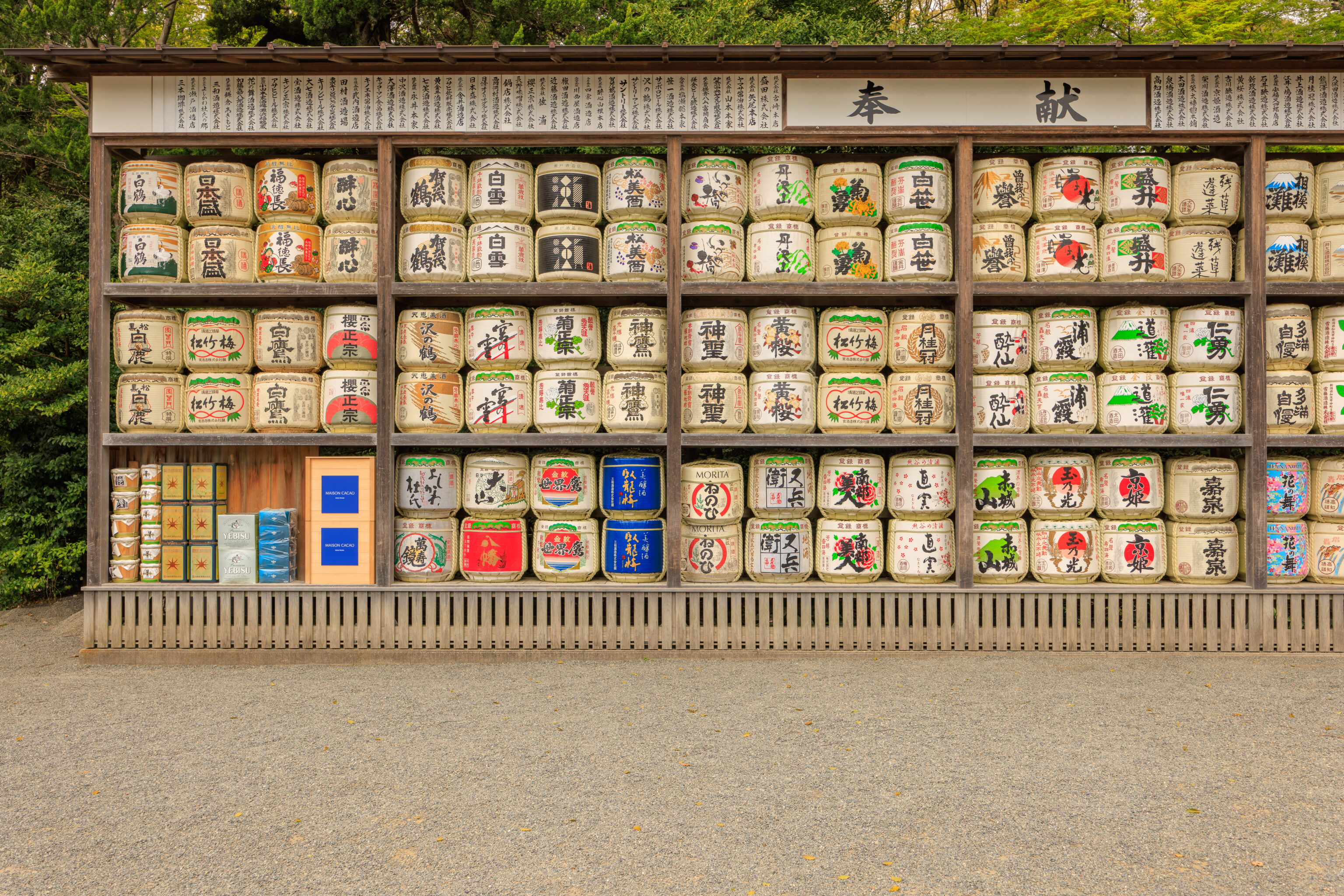
Sake barrels like these are often seen at shrines. They represent donations to the shrine.
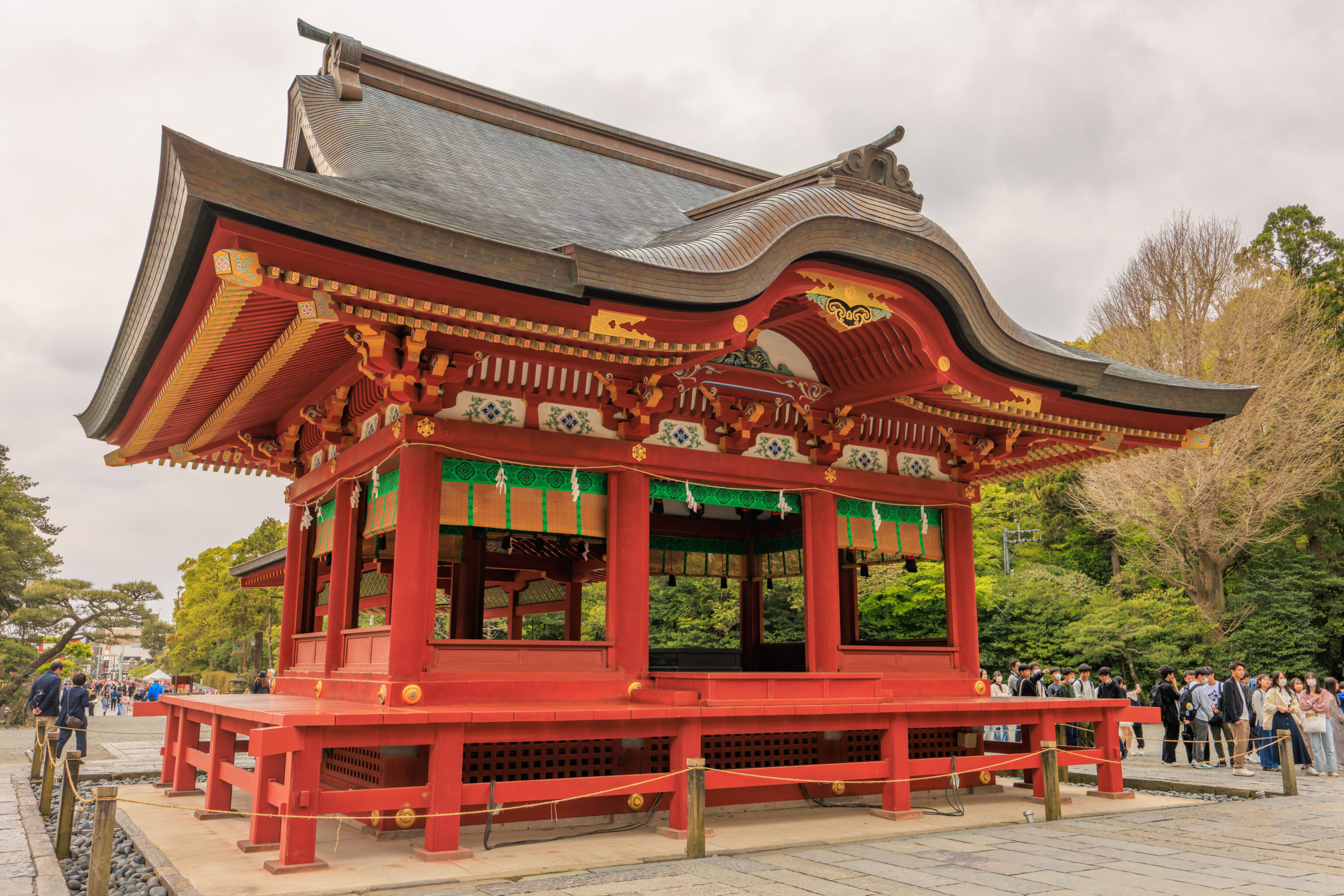
We walked past a building called the 舞殿 Maiden on the shrine’s website, also referred to as the 下拝殿 Lower Worship Hall. The website provides a description of this building:
It is also called Shimohaiden, and stands on the site of the Wakamiya corridor where Shizuka Gozen devoted herself to Yoshitsune and danced with all her heart. In addition to festivals and events at the shrine, many weddings are held here throughout the year.
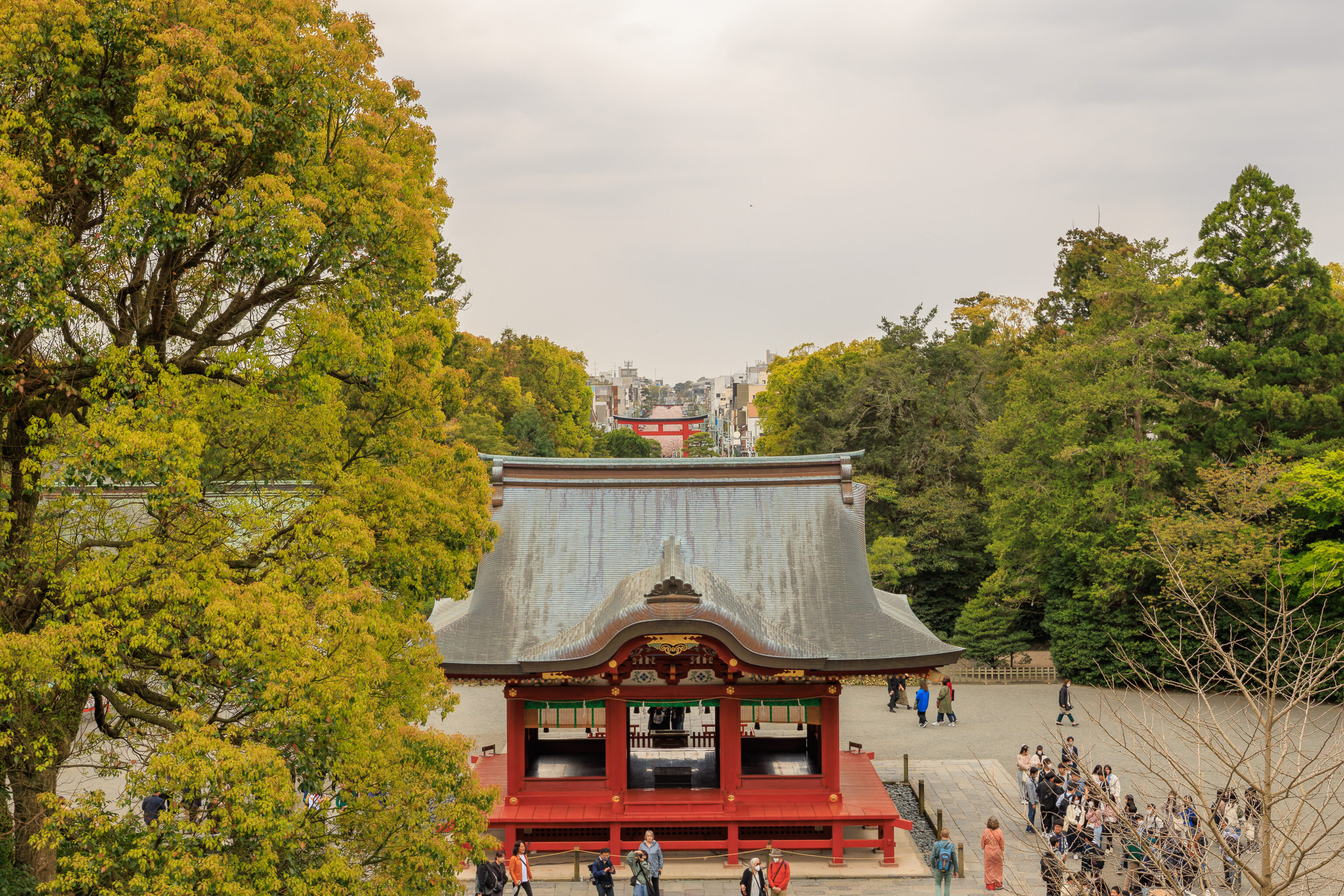
We walked up some stairs just beyond this building to reach the main shrine. Looking back, we could see the torii by the entrance as well as the sakura lined street beyond.
The main shrine was pretty busy. We didn’t get any worthwhile photos of it as a result. A sign provided some information in English:
Main Sanctuary (Honden)
This is the most sacred area at Tsurugaoka Hachimangu. The semi-mythical Emperor Ojin, deified as Hachiman, the guardian of both the warrior class and the nation of Japan, is enshrined here in the main shrine together with Ojin's mother Empress Jingu and the goddess Himegami. The main shrine building includes a worship hall (haiden), offering hall (heiden), and main sanctuary (honden), all under one roof in a variant of the gongen-zukuri style that was popular during the Edo period (1603-1867) and employed at many shrines favored by the ruling warrior class. The sculptures which decorate the building include plants, animals, and mythological beings, many of which have auspicious connotations, including protection against fire and evil spirits.
The large black plaque on the Romon Gate at the entrance to the main shrine area bears the Chinese characters for "Hachimangu" in gold. The first character, hachi, is formed by two doves, as the dove is considered a messenger of Hachiman. To the left of the main shrine is Takeuchi Shrine, where Emperor Ojin's famously long-lived retainer Takeuchi Sukune is enshrined as a deity of health and long life. Next to this shrine is the Museum of Shrine Treasures, in which are displayed documents, weapons, and other historical artifacts related to Tsurugaoka Hachimangu.
The Main Shrine was rebuilt here midway up the mountainside in 1191, after a fire destroyed the main shrine which then stood at the foot of the mountain. The current building dates to 1828 and is designated an Important Cultural Property.
This English language text was created by the Japan Tourism Agency
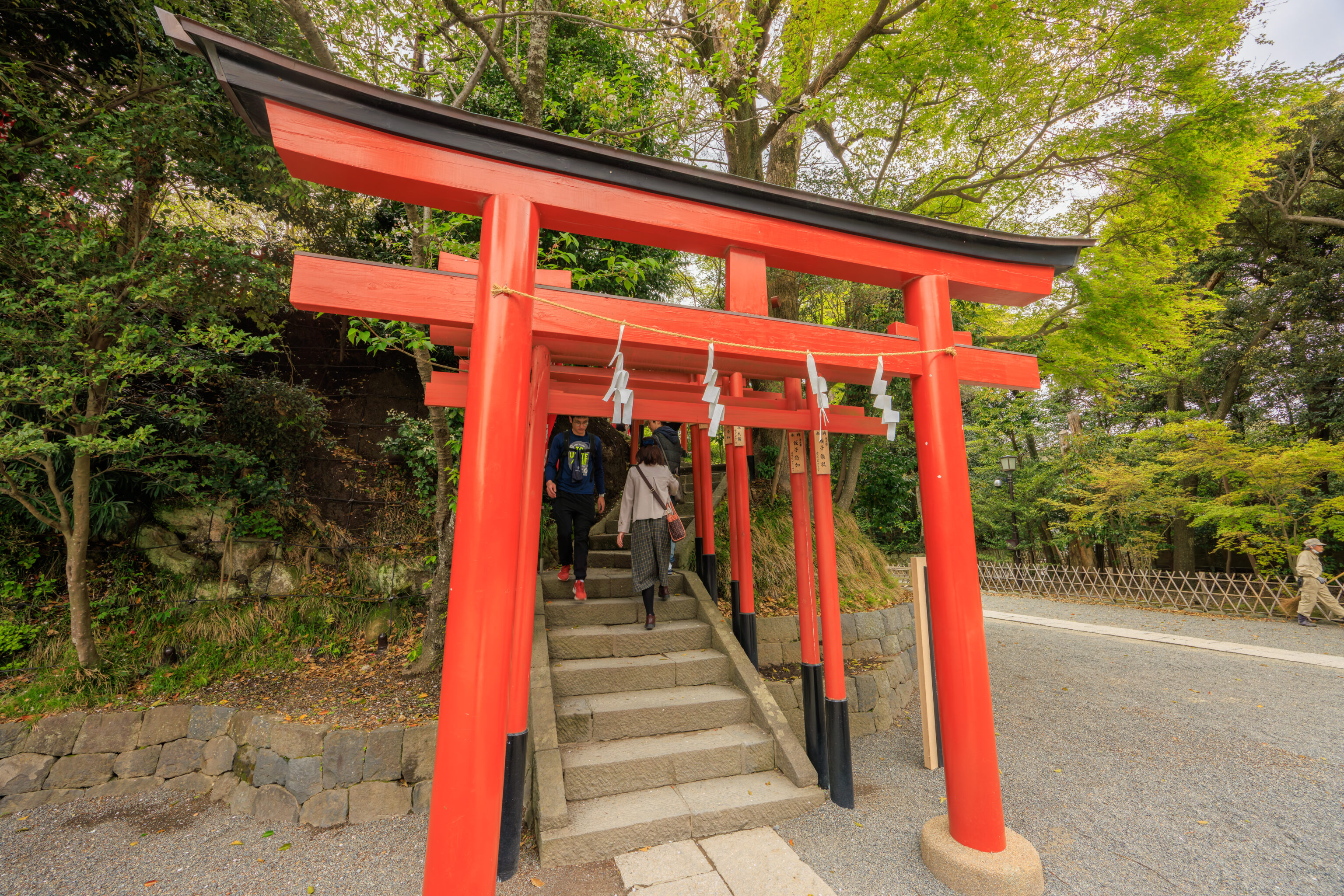
Behind the main shrine, we came across an Inari shrine! The most famous Inari shrine in Japan is the Fushimi Inari Taisha in Kyoto, known for its many torii. We visited back in December, 2019.
A sign by this torii provides a description of this shrine:
Maruyama Inari Shrine
Maruyama Inari is the oldest shrine on the Tsurugaoka Hachimangu grounds. The Shinto deity of rice, agriculture, and prosperity, Inari is enshrined here. The Inari deity has been venerated deity in this area since before Tsurugaoka Hachimangu was founded in 1180.
The Maruyama Inari shrine building is also the oldest surviving structure at Tsurugaoka Hachimangu. It dates back to the Muromachi period (1336-1573) and is designated an Important Cultural Property. It was moved from a nearby location, and the hill it now stands on consists of gravel and rocks taken from the mountainside when the Main Shrine was constructed just east of here in 1191.
The shrine is guarded by two stone foxes, which are considered messengers of Inari. The red banners surrounding the shrine, like the bright red torii gates that line the path up to it, were dedicated to Inari by local worshipers to pray for success in business or a plentiful harvest. The Hitaki-sai fire festival is held at Maruyama Inari every year on November 8. The event includes Kamakura kagura, a dramatic combination of ritual and dance that originated in the Kamakura period (1185-1333) and is performed to pray for a bountiful harvest in the coming year.
This English language text was created by the Japan Tourism Agency.
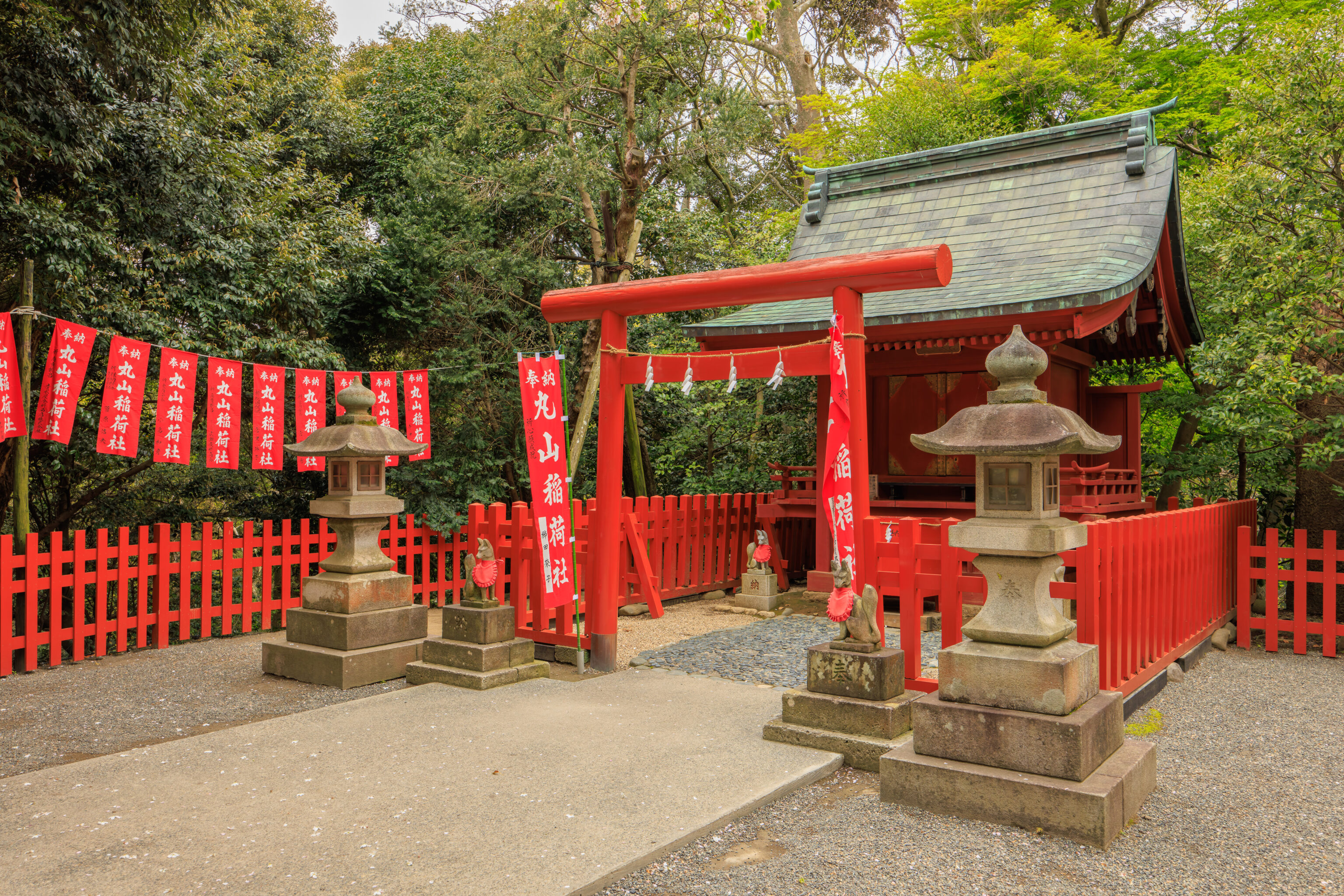
We walked up the path through the torii to take a look at the small shrine at the top of the small hill.
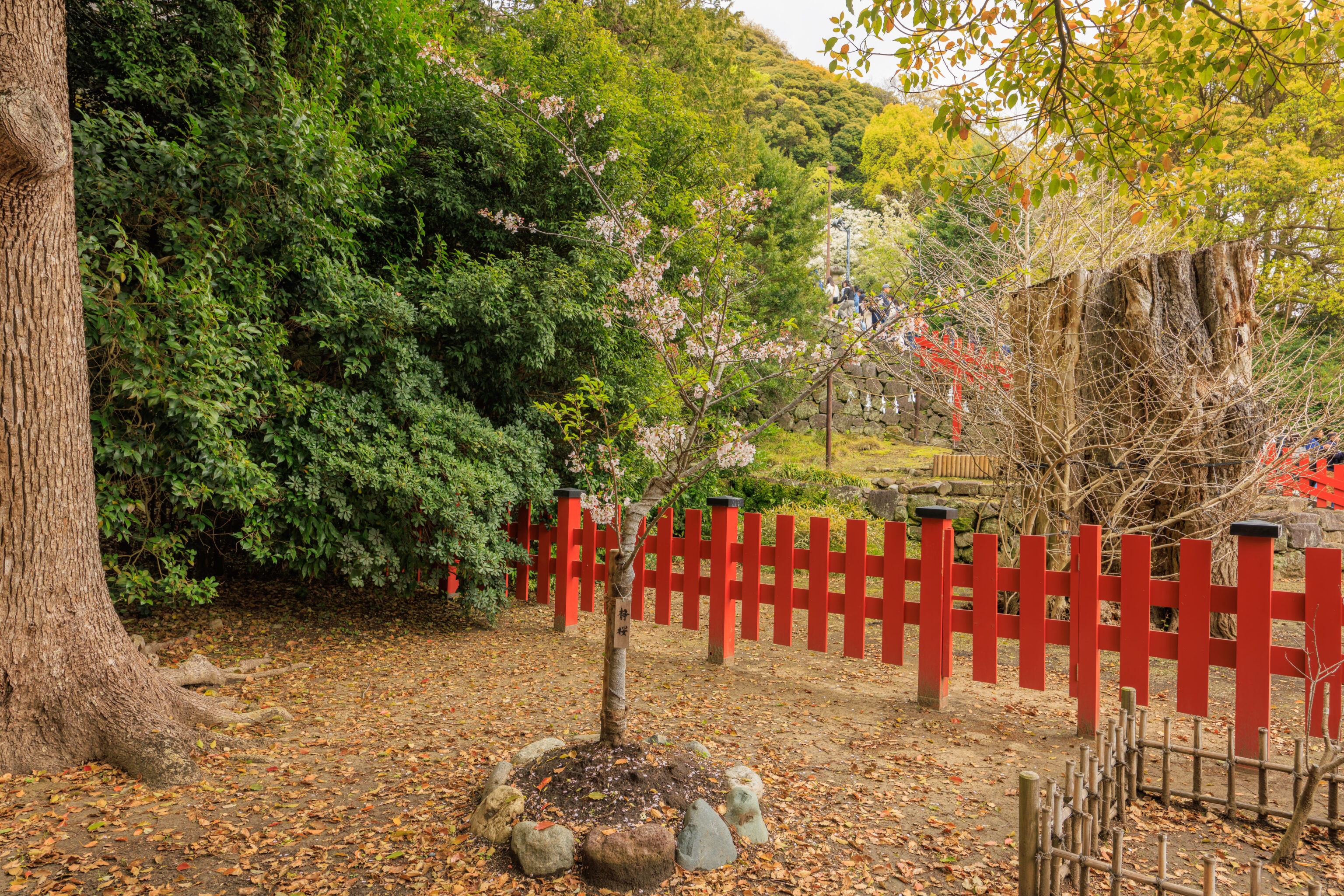
There was a small sakura tree up top, almost like a healthier version of Stumpy.
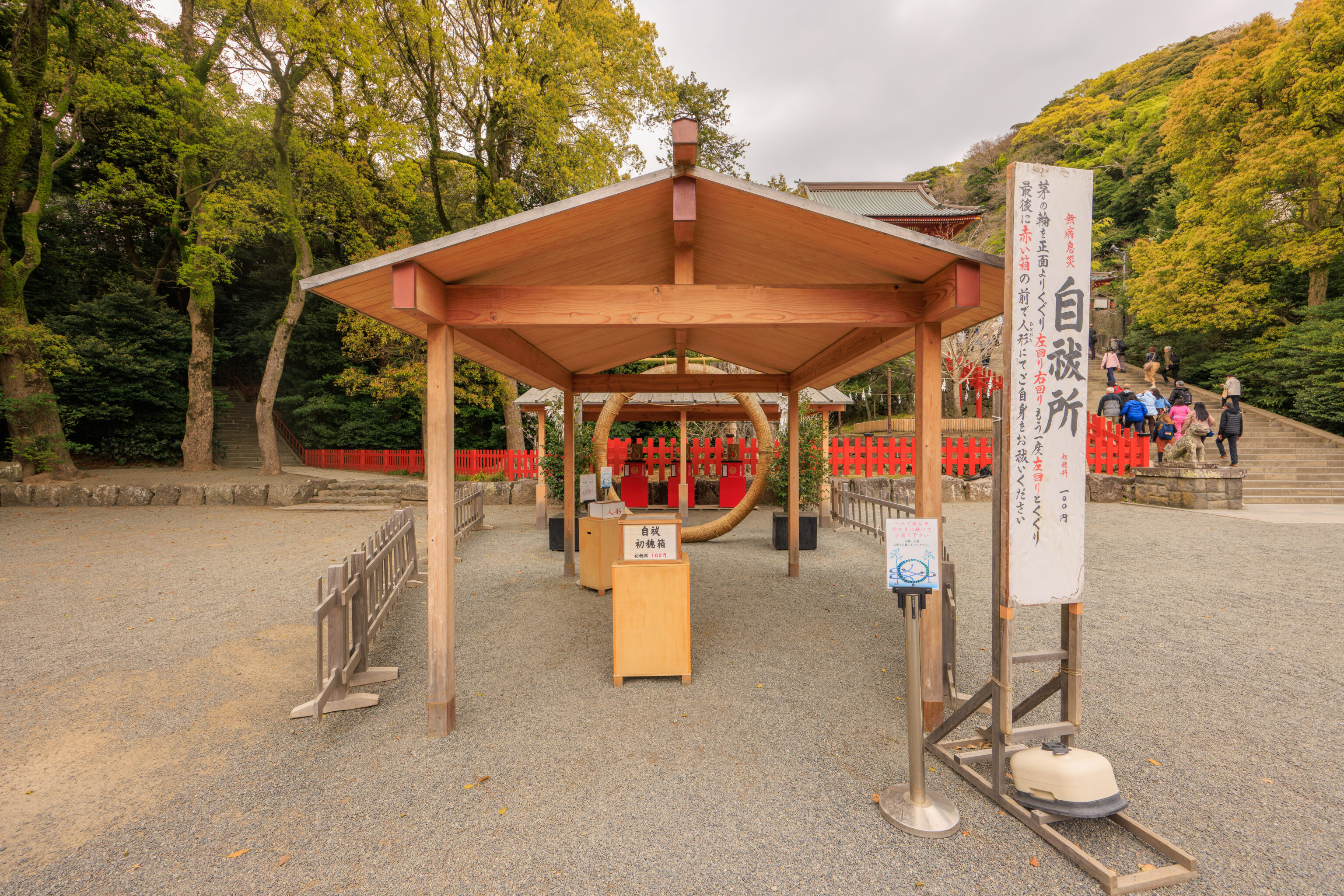
The tall sign here describes this as the Good Health Purification Place. The text says to:
Go through the grass ring from the front, turn counterclockwise, turn clockwise, go through the birth ring again, and finally, exorcise yourself with the doll in front of the red box.
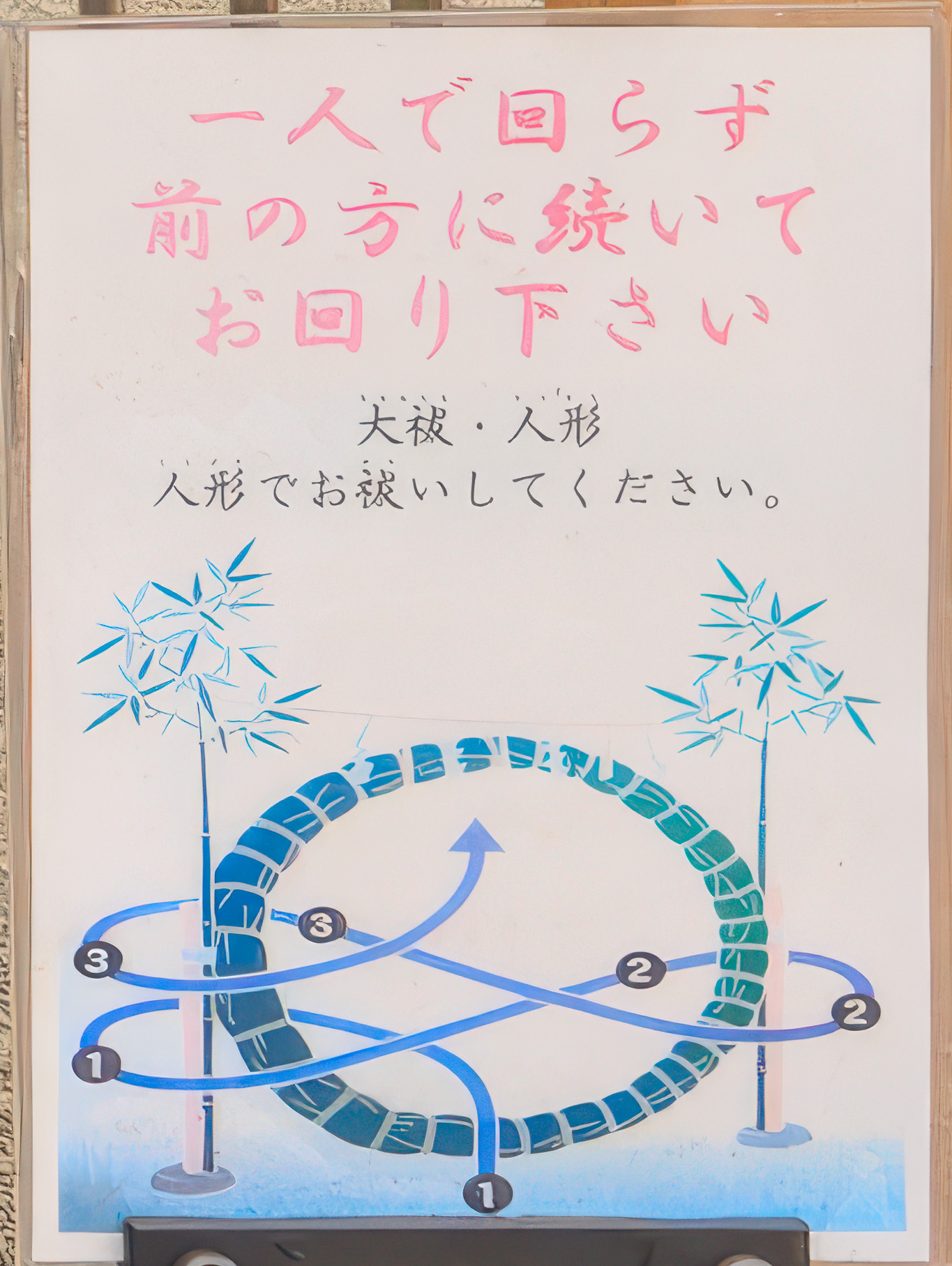
The translation above is via Google Translate and a bit iffy. This smaller sign, enlarged using the magic of AI upscaling, provides a much more helpful numbered diagram of how you are supposed to proceed through the ring!
We visited the bathrooms next, which were nearby. It then started to rain. We decided to put our rain shells on and proceed.
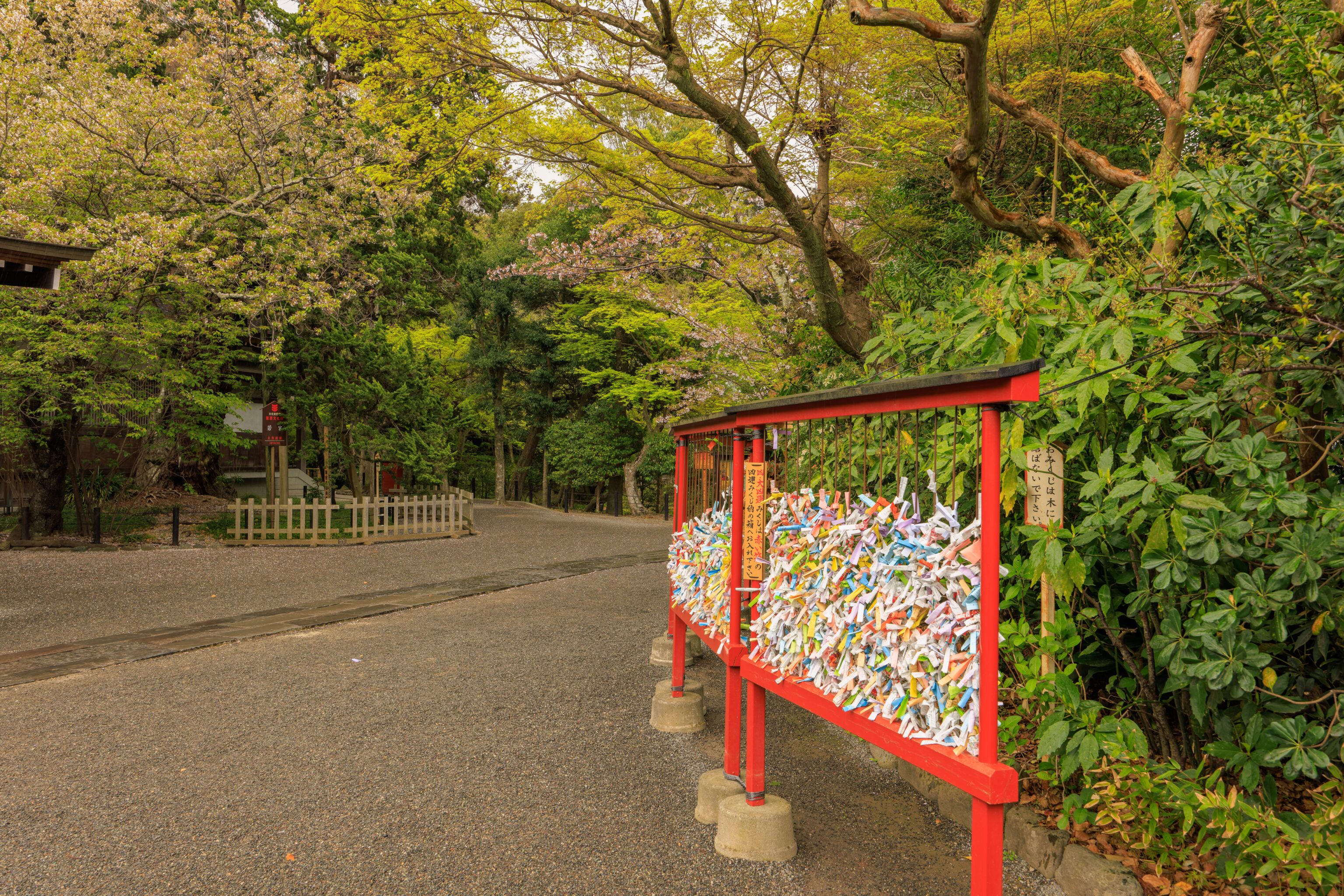
We walked to the east around the north side of the building that contains the bathroom and dining area. We walked by some wishes, which were written on small pieces of paper and tied to a frame.
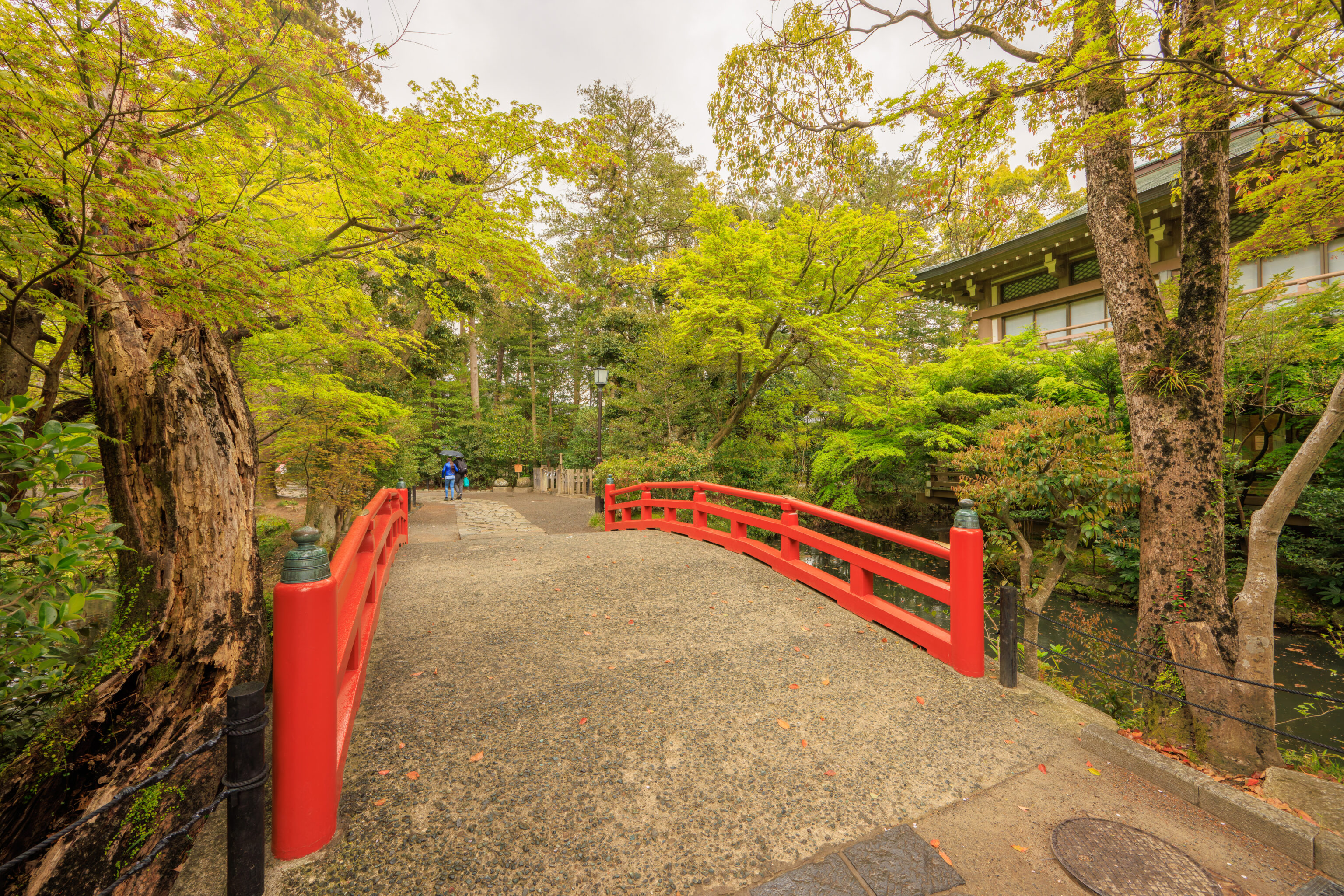
We walked over a small bridge.
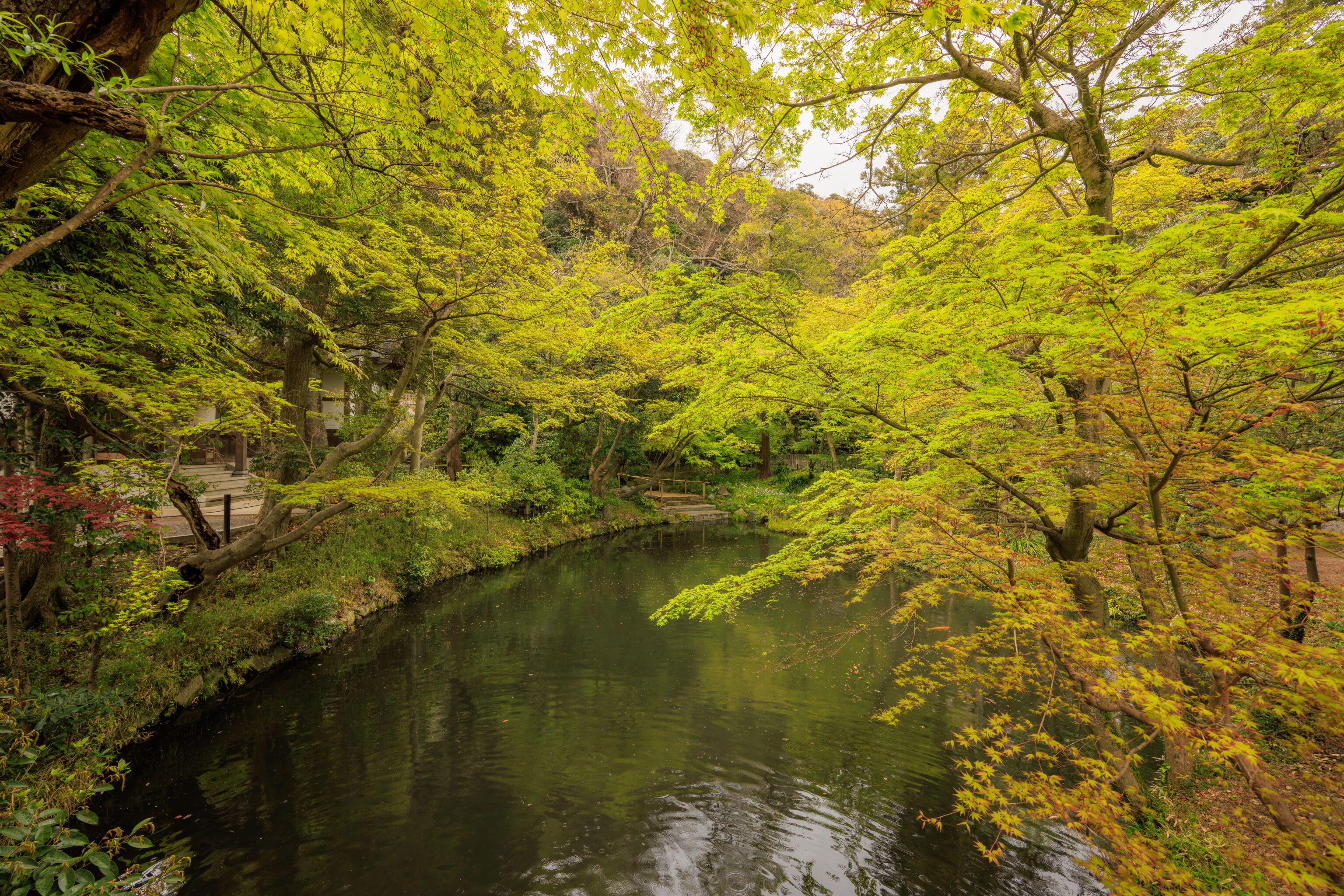
There was a small tree-lined pond on the north side of the bridge.
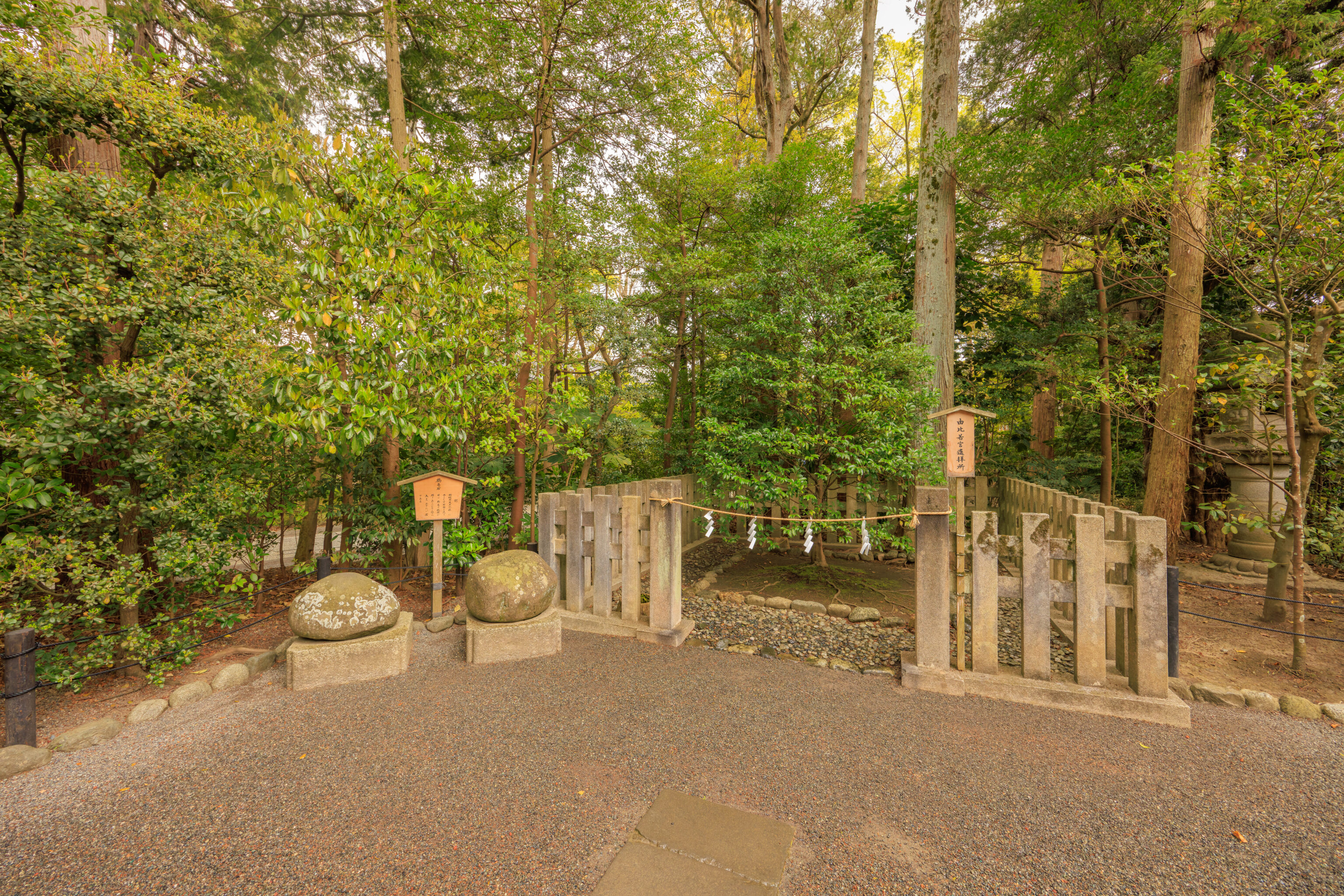
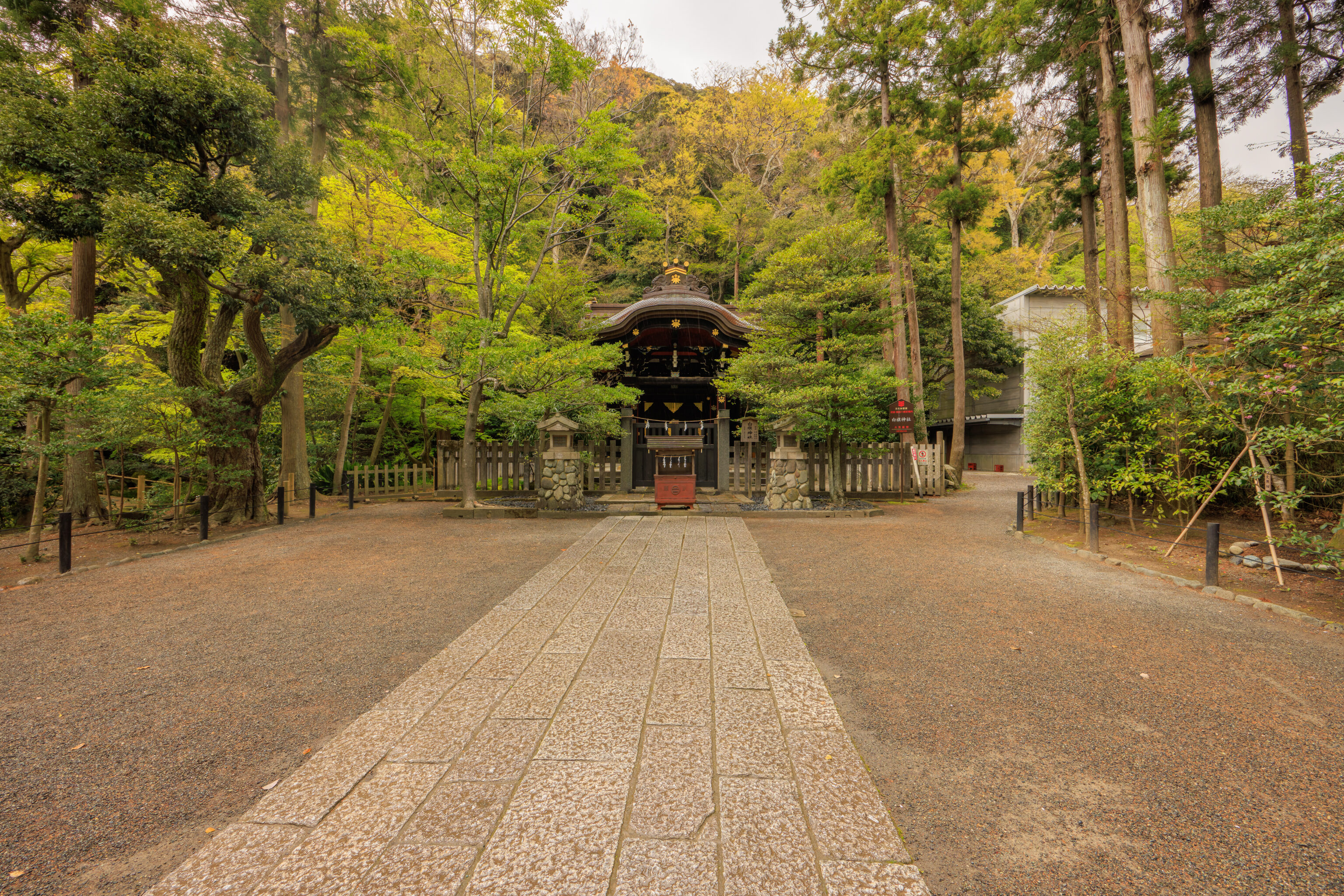
We ended up by the Shirahata Shrine. It is notable enough to be described on the shrine’s website’s tour page.
Minamoto Yoritomo and Minamoto Sanetomo are enshrined here. The shrine hall, which is painted in black, is very impressive. The shrine is deeply respected for the divine virtues of the kami enshrined here and is used to pray for victory and academic achievement.
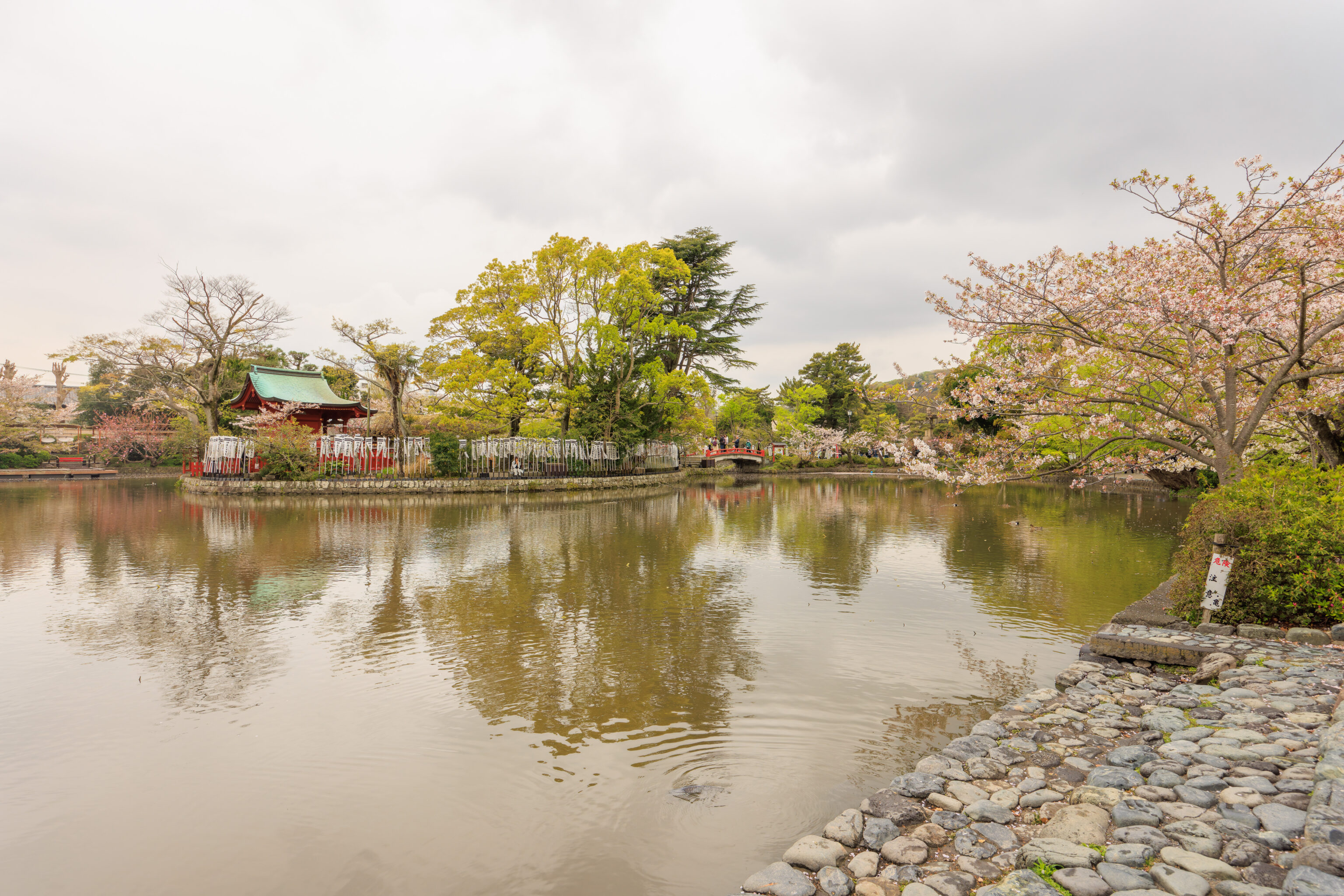
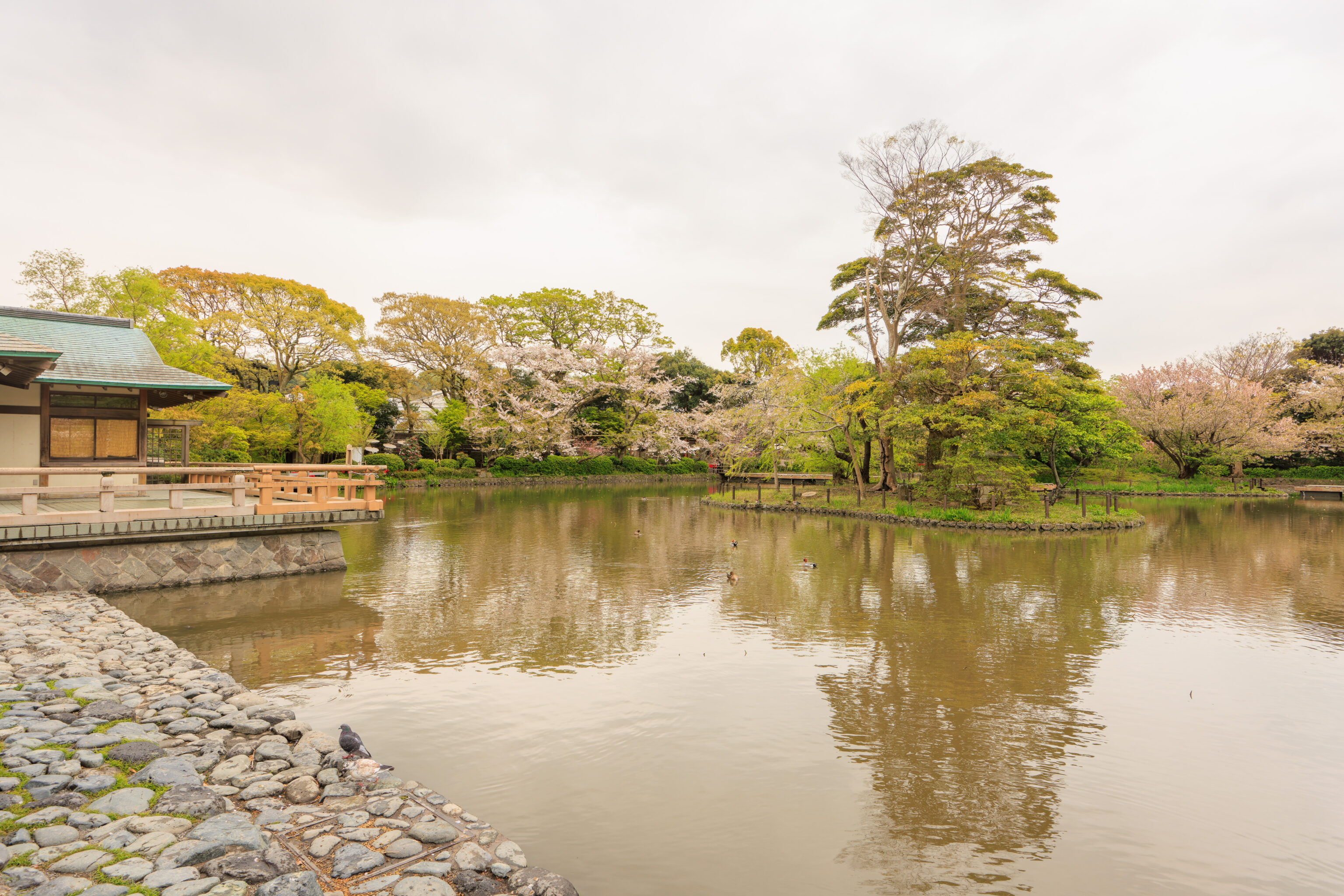
We turned to the south, ending up at the northern shore of the Genji Pond. There was a small rest area with seating by the edge of the pond. We sat here for awhile. A few people had lunch as it was almost noon. Interestingly, there was what Google Maps identifies as a kindergarten to our right. The path next to the pond was blocked off as the school was in session.
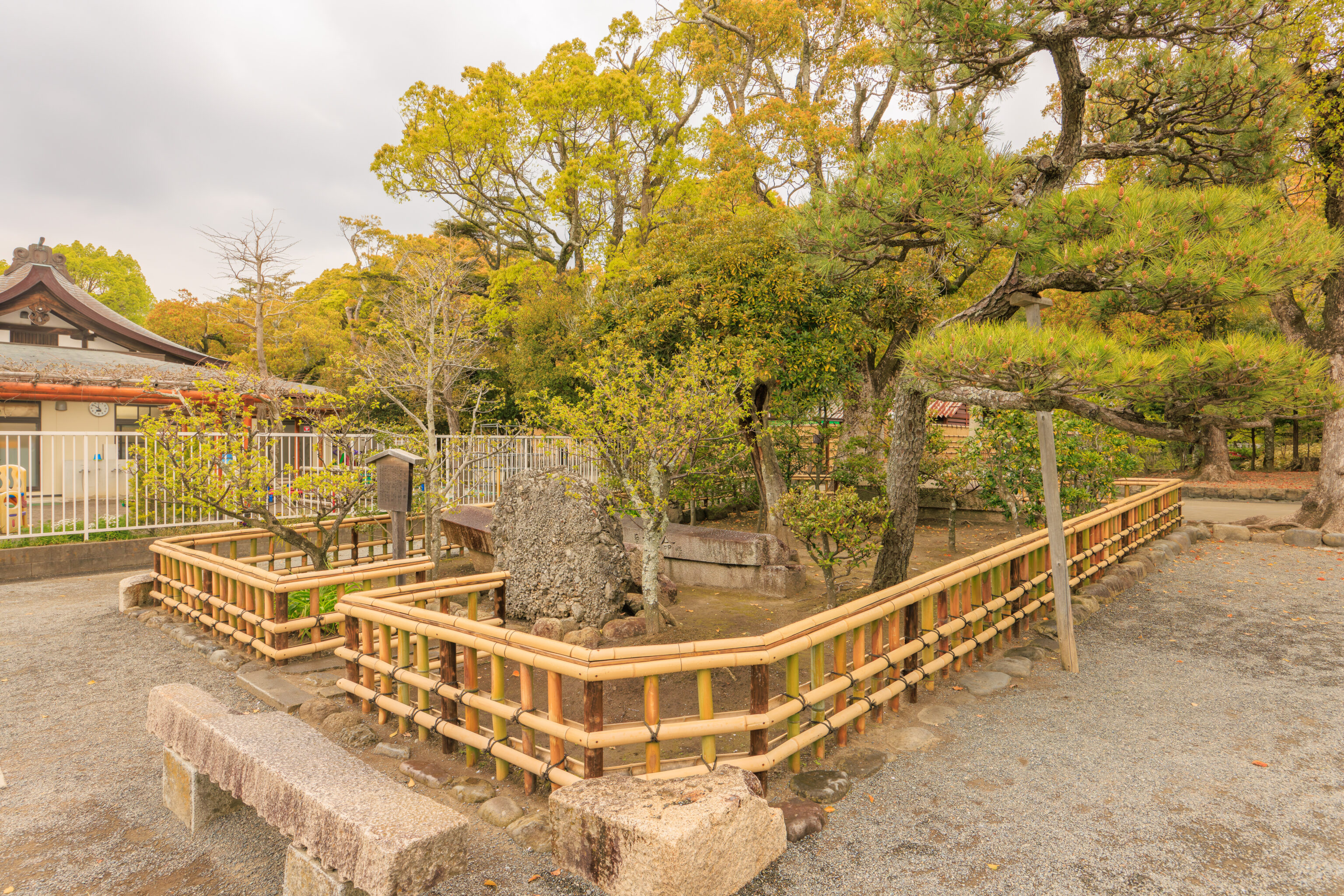
This fenced area was nearby, with the kindergarten to the left.
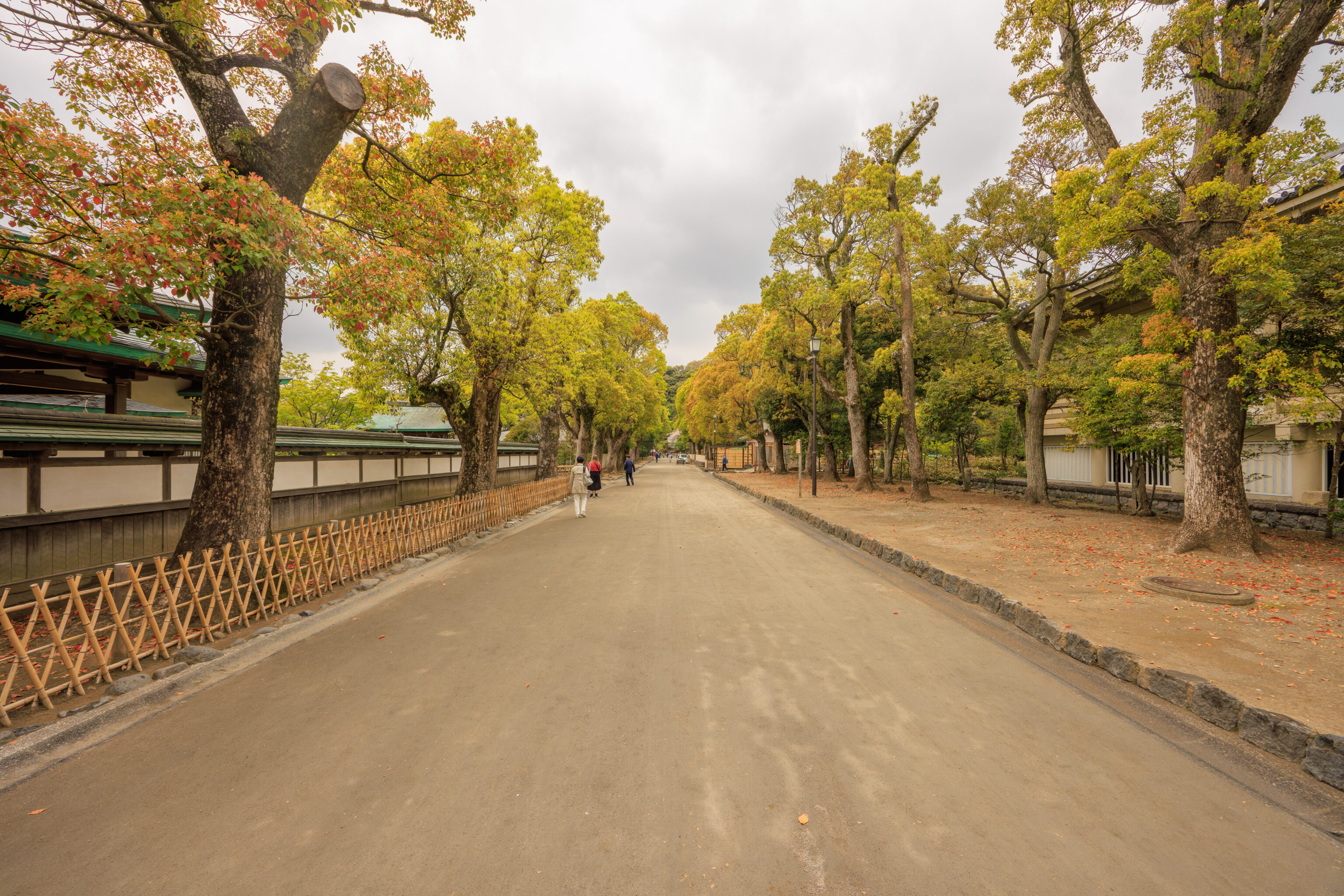
We turned to the east, reaching the eastern edge of the shrine’s grounds. We were thinking of going around the shrine on the outside but there didn’t seem to be anything to see out there other than a residential area. So, we turned around to walk back through the shrine to exit.
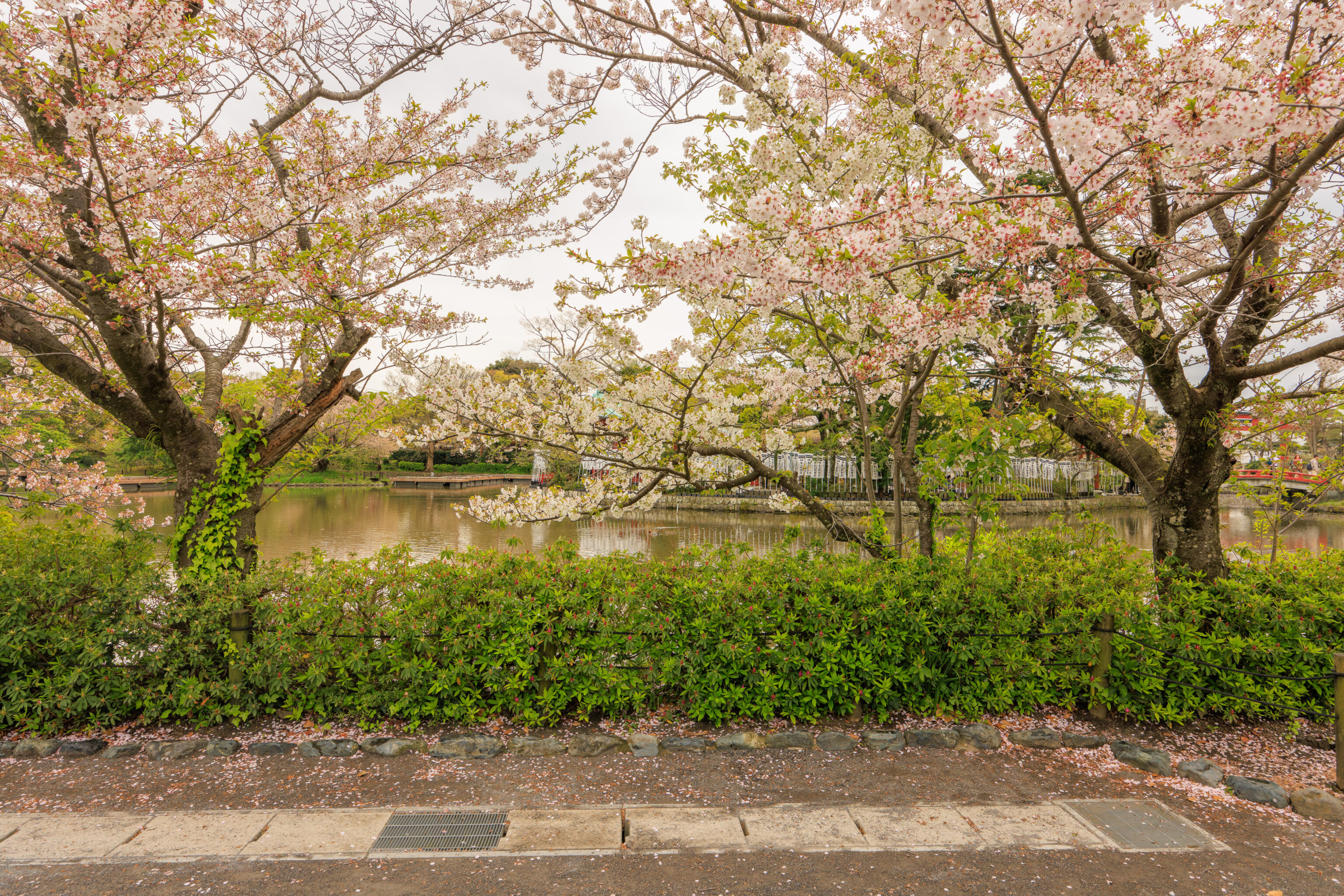
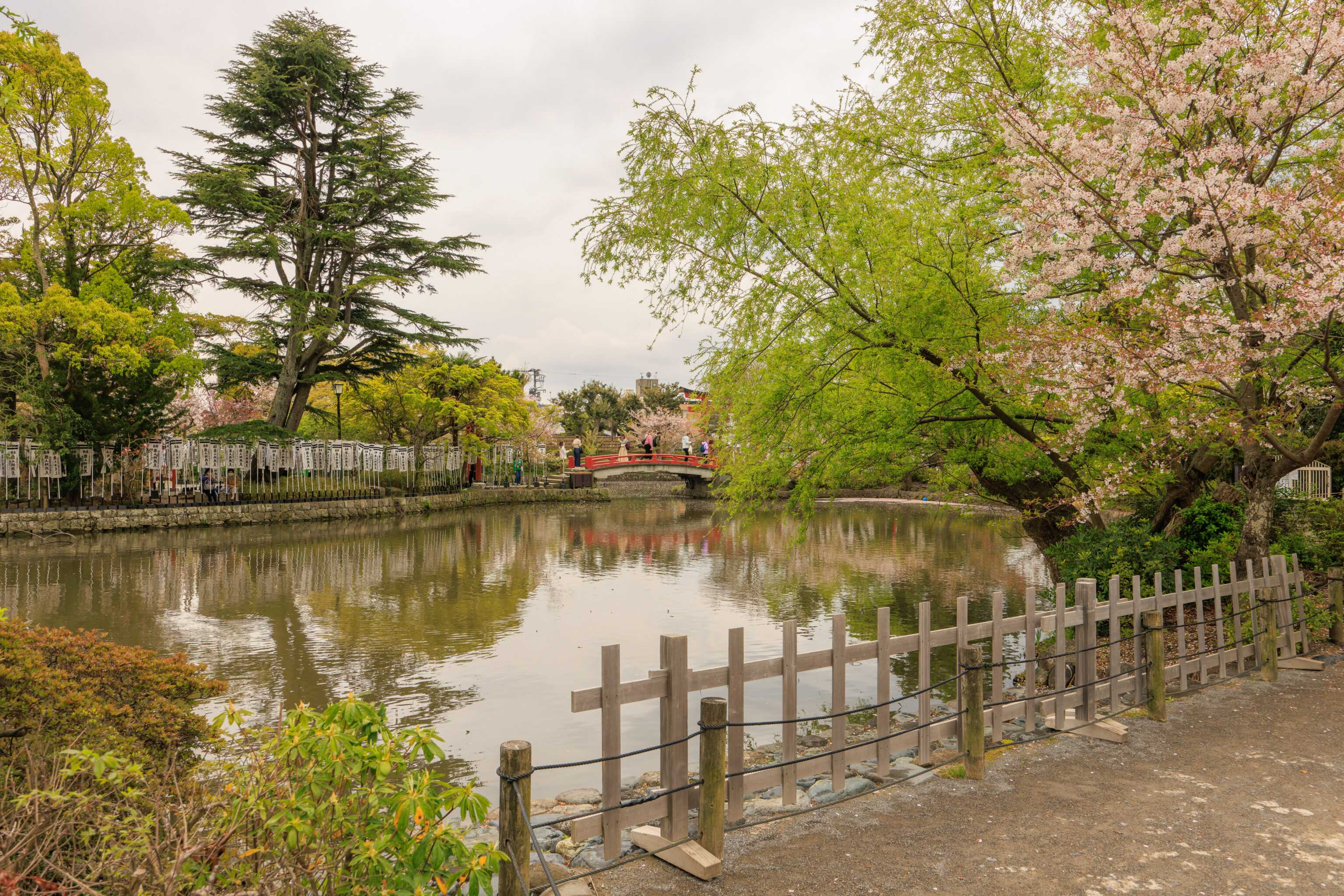
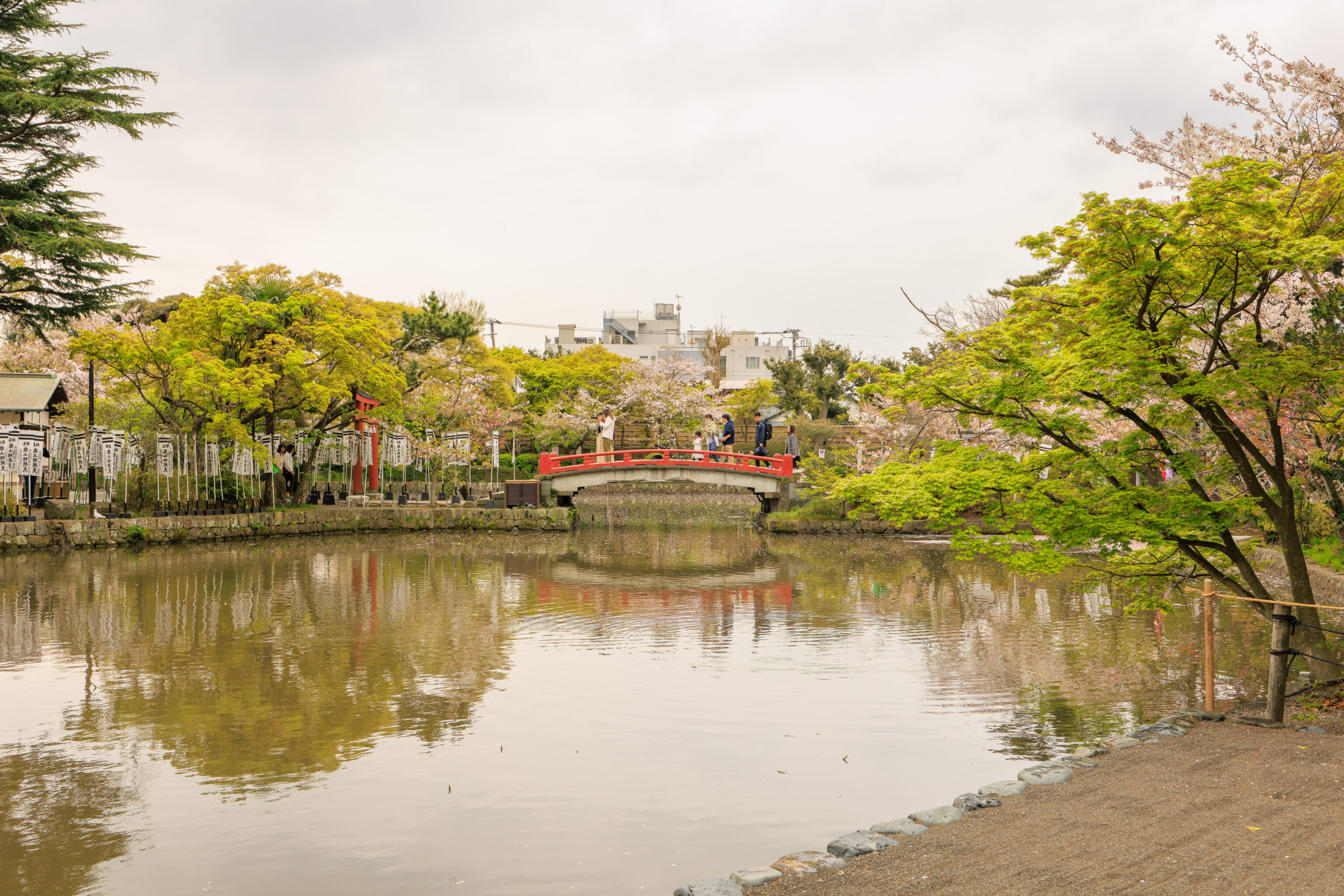
It turns out that the kindergarten had finished for the day. So, we were able to walk on the path at the pond’s edge!
Lunch
We exited the shrine and returned to Komachi-dori.
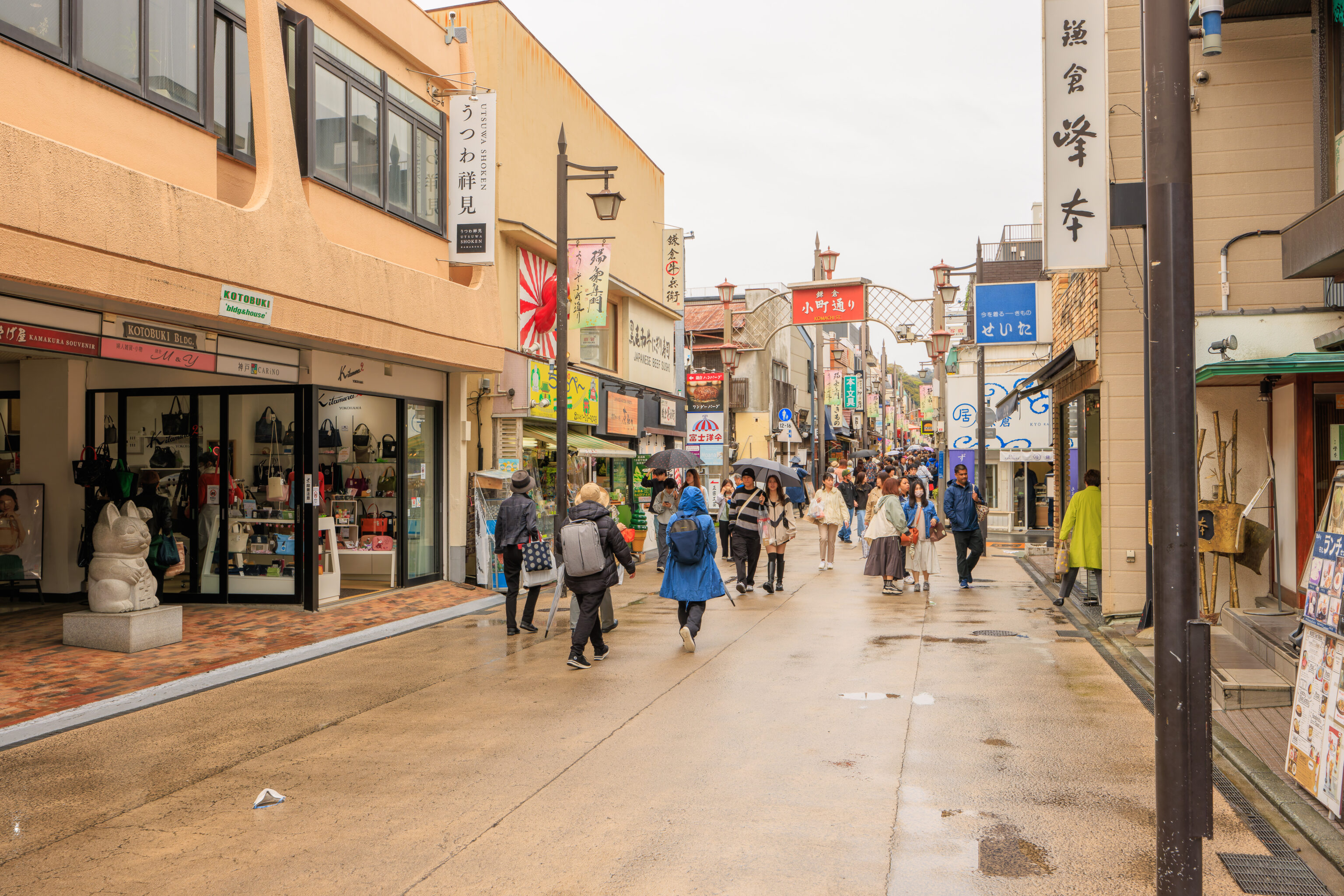
It was busier now with all the shops open.
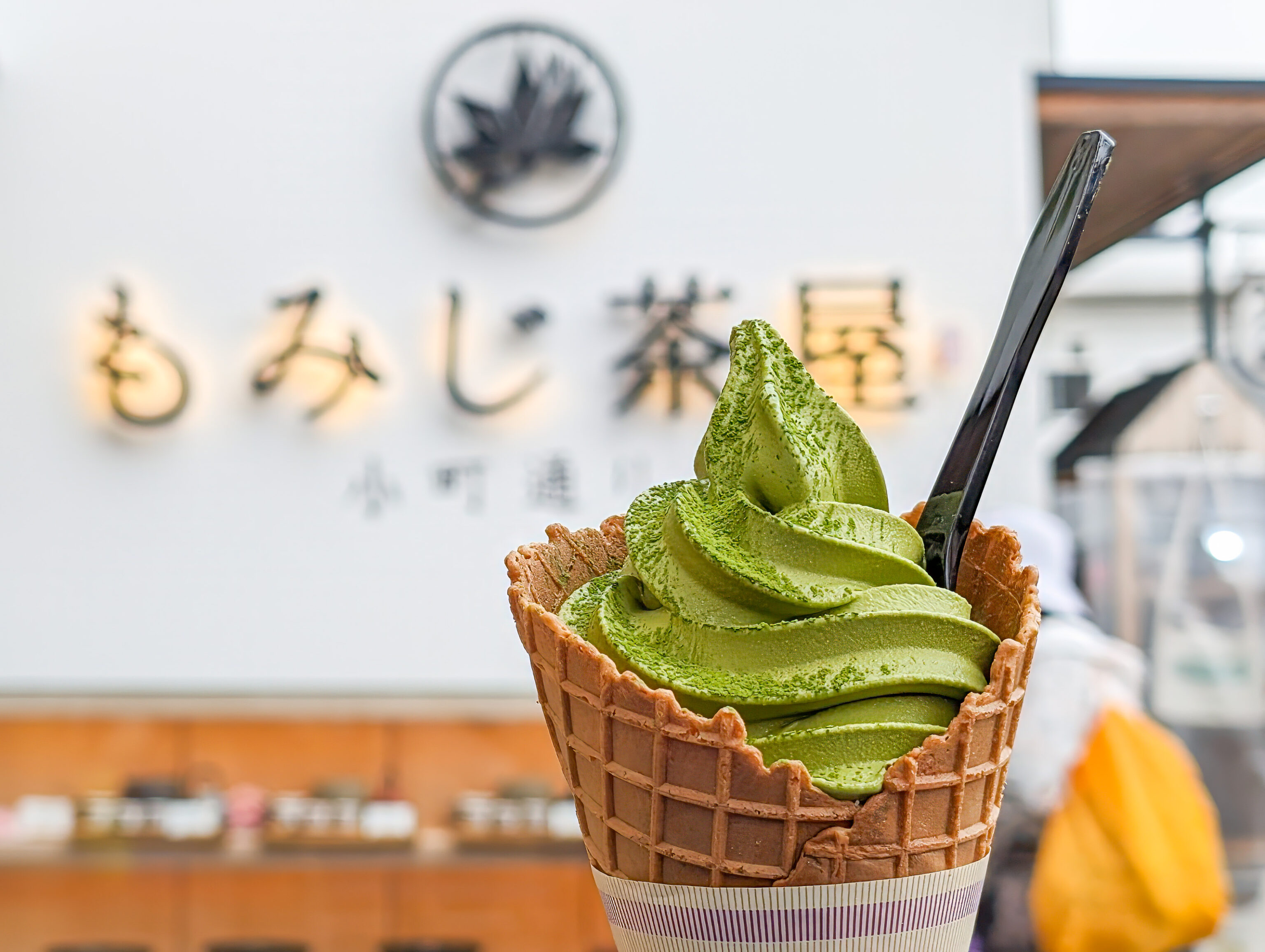
We first stopped at もみじ茶屋 Momiji Chaya for a matcha soft serve cone. It was excellent!
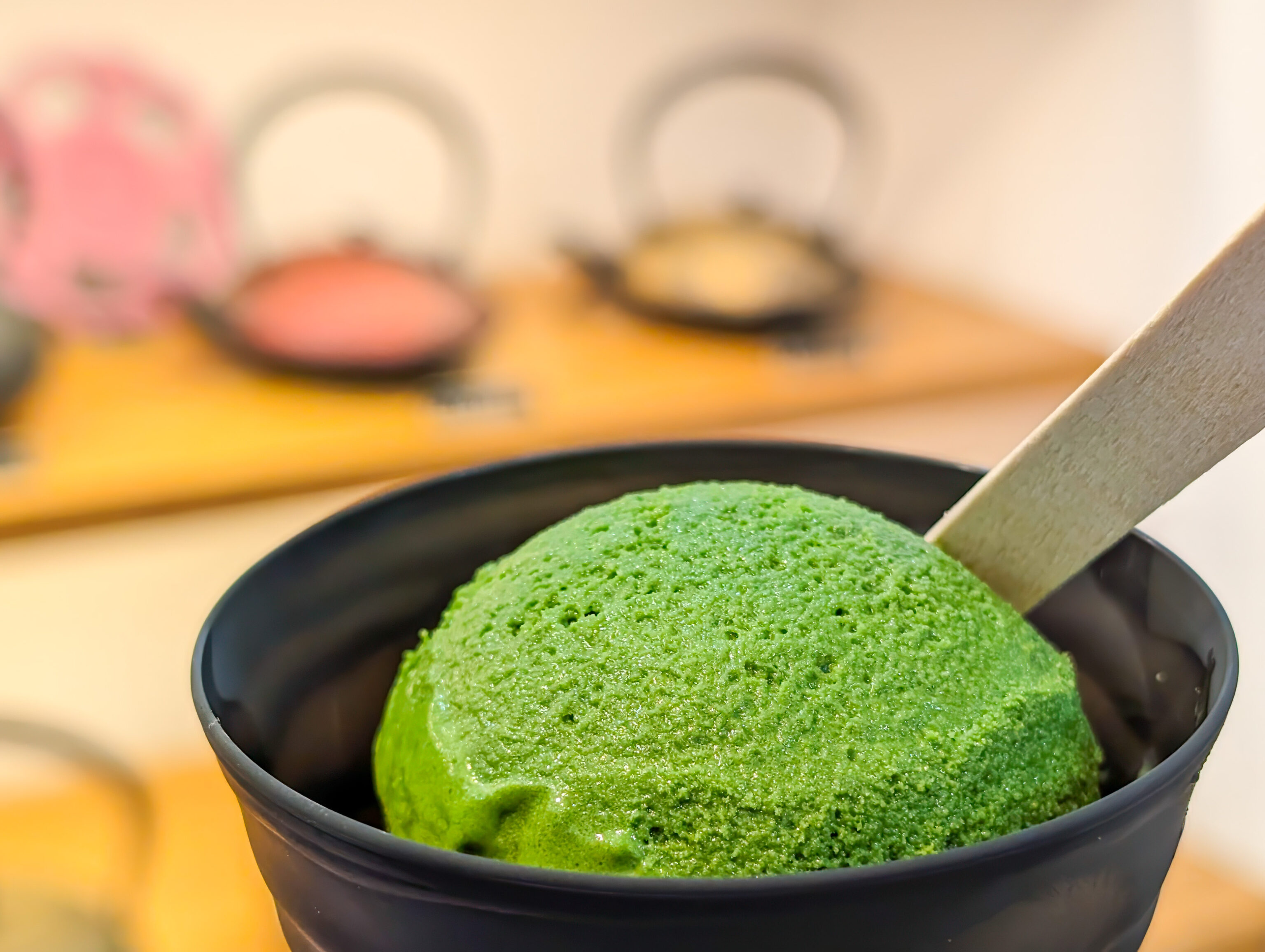
Our next stop was 鎌倉茶々 Kamakura ChaCha. They use matcha from Shizuoka, a mostly rural prefecture to the west of Mount Fuji. They have a variety of matcha products. We decided on getting a matcha gelato as it isn’t a common product to come across. They have multiple levels indicating the strength of the matcha flavor on the menu. Of course, we went for the strongest, Level MAX! Unlike some other products named the MAX, this was phenomenal!
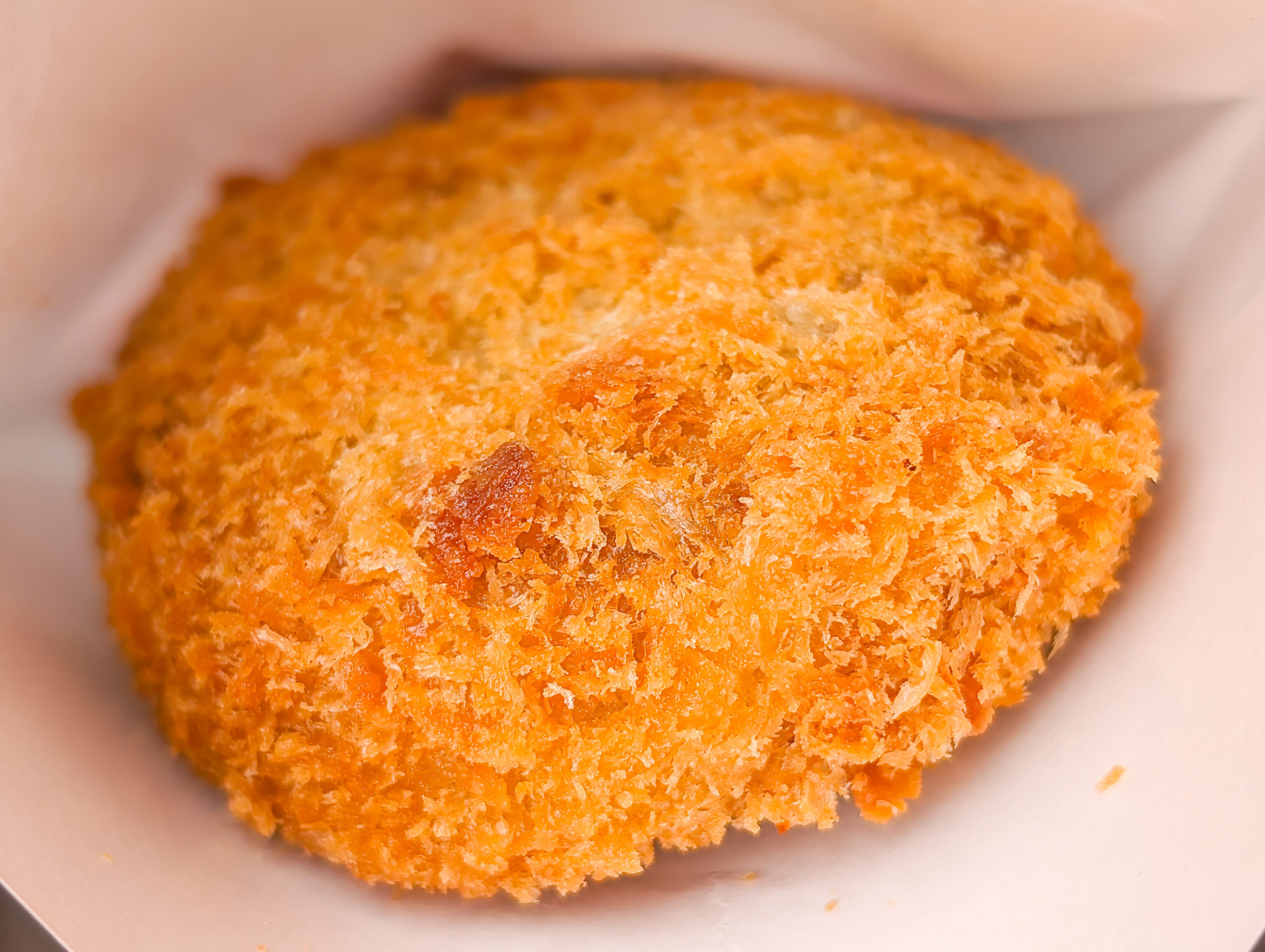
Our next stop was to get a beef croquette, which unfortunately wasn’t very beefy.
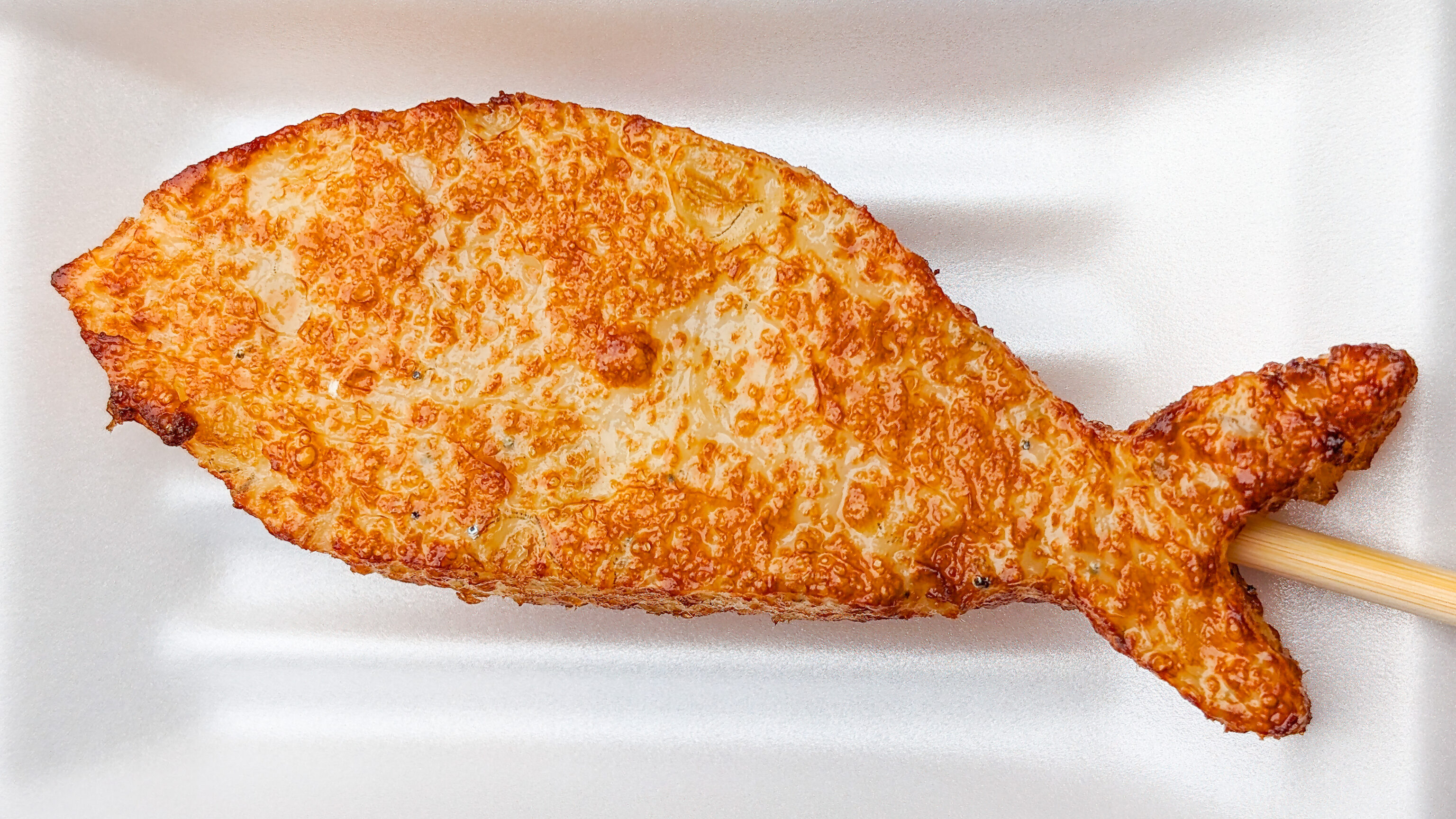
We also had a fish shaped fried fish cake. It was just sort of OK, nothing particularly special other than the shape!
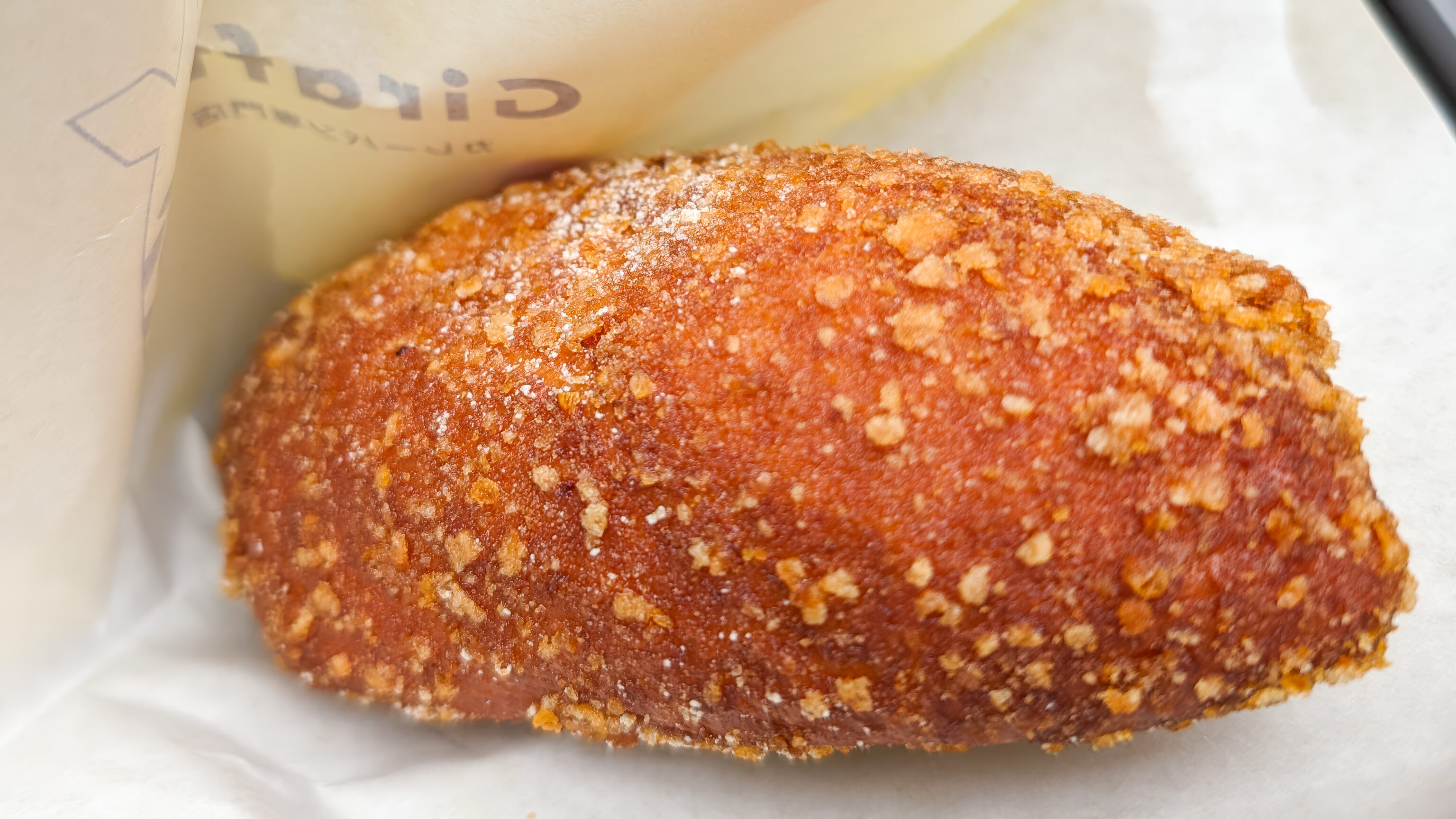
Our next stop was Giraffa Curry Pan. It was busy with a fast moving queue. Their curry and cheese bread was very good!
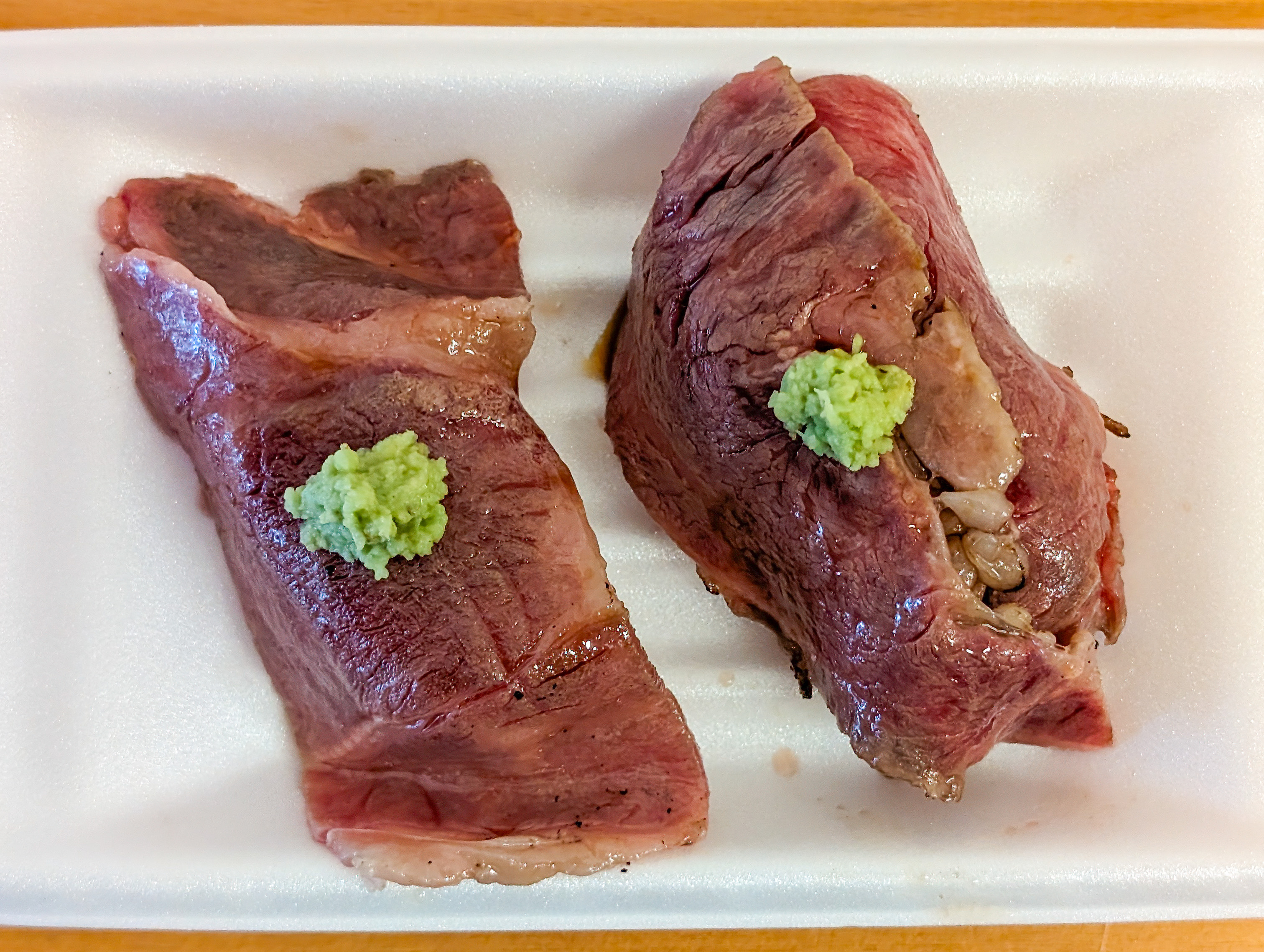
Our last snack was beef sushi from 牛兵衛 Gyuubee, though it wasn’t actually raw, something a bit like roast beef in the US but better. It was pretty good but very expensive.
After all those snacks, we were ready to eat an actual meal. We decided to drop into a kaiten sushi restaurant, みさき Misaki.
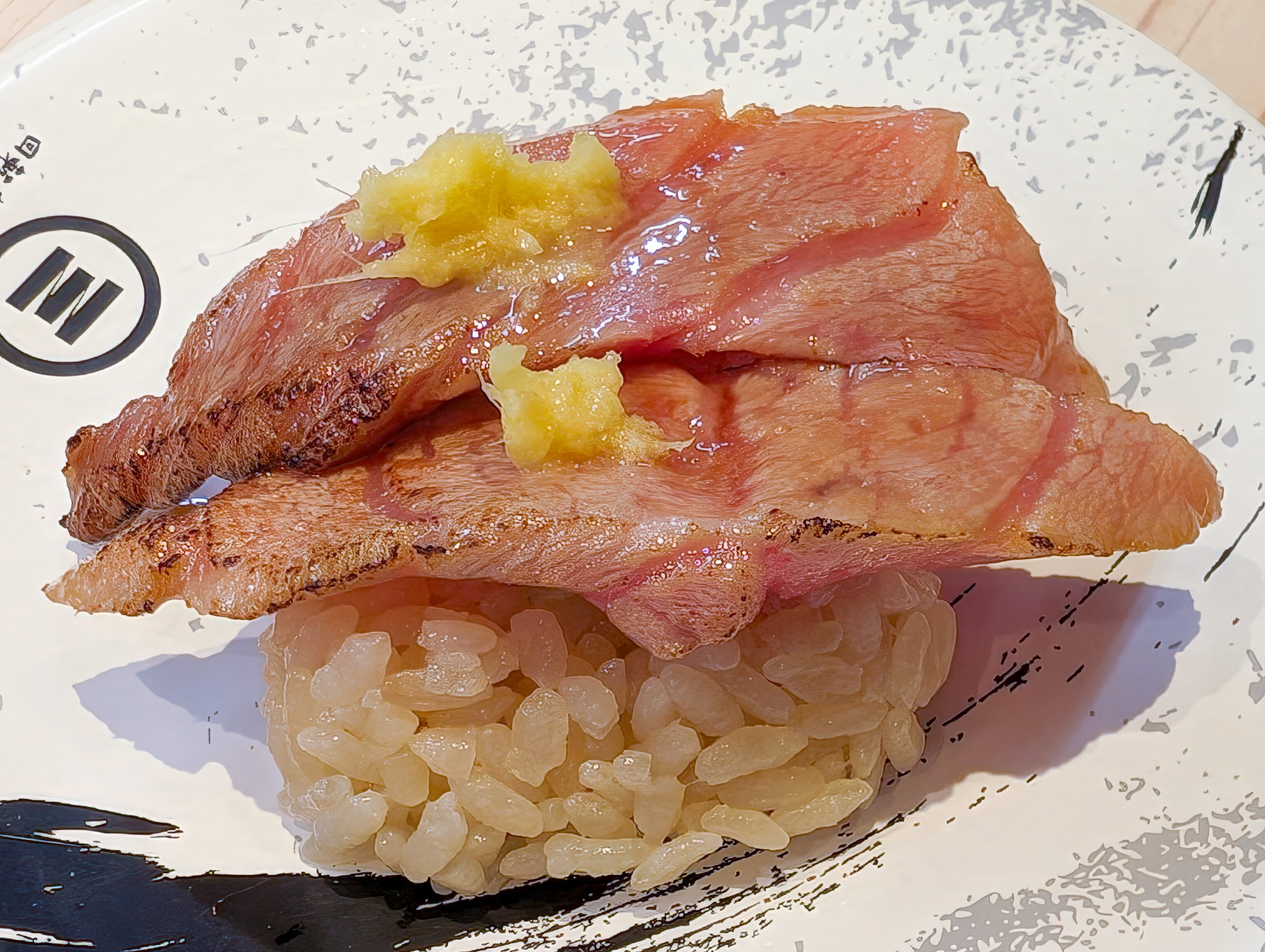
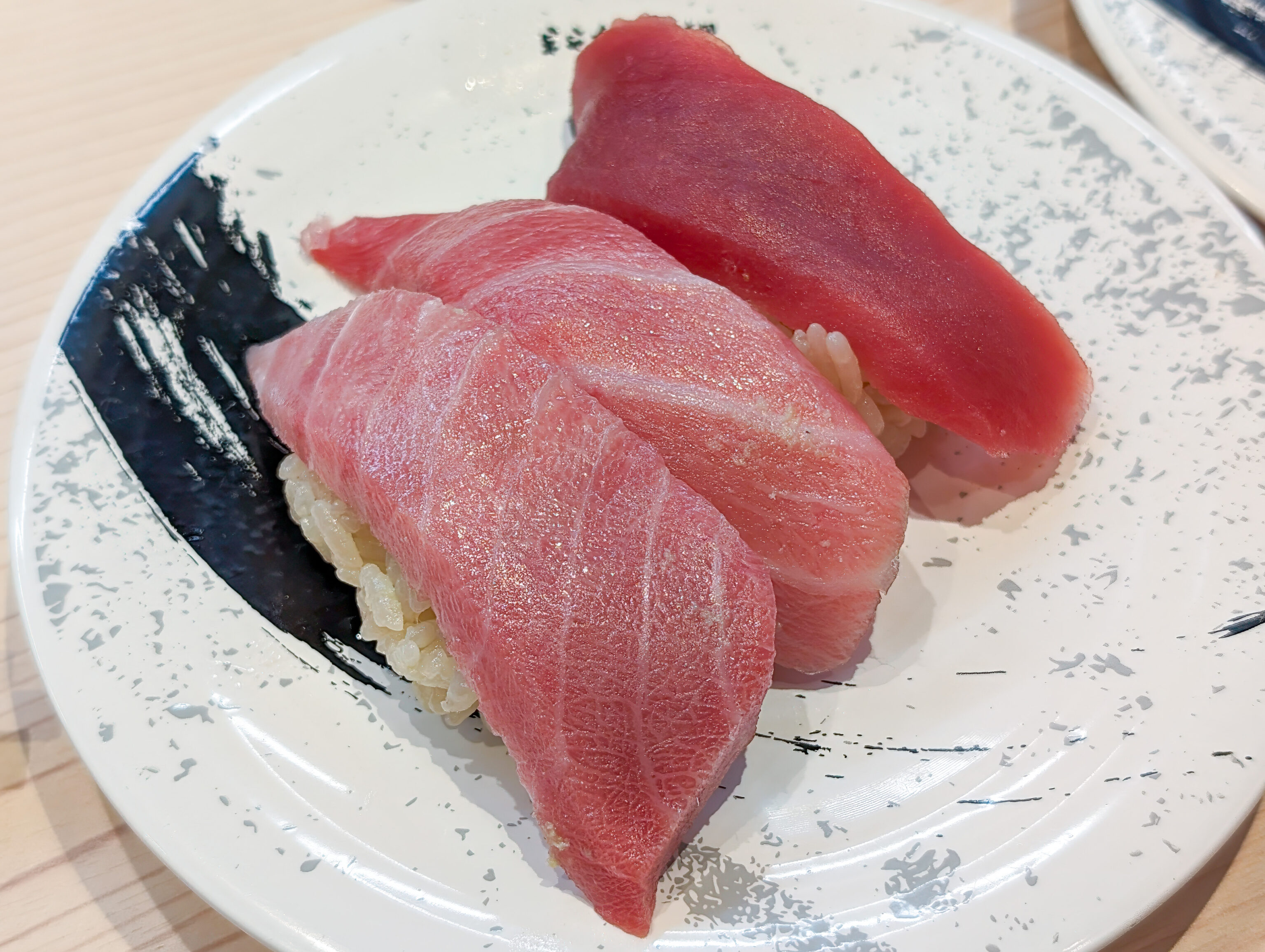
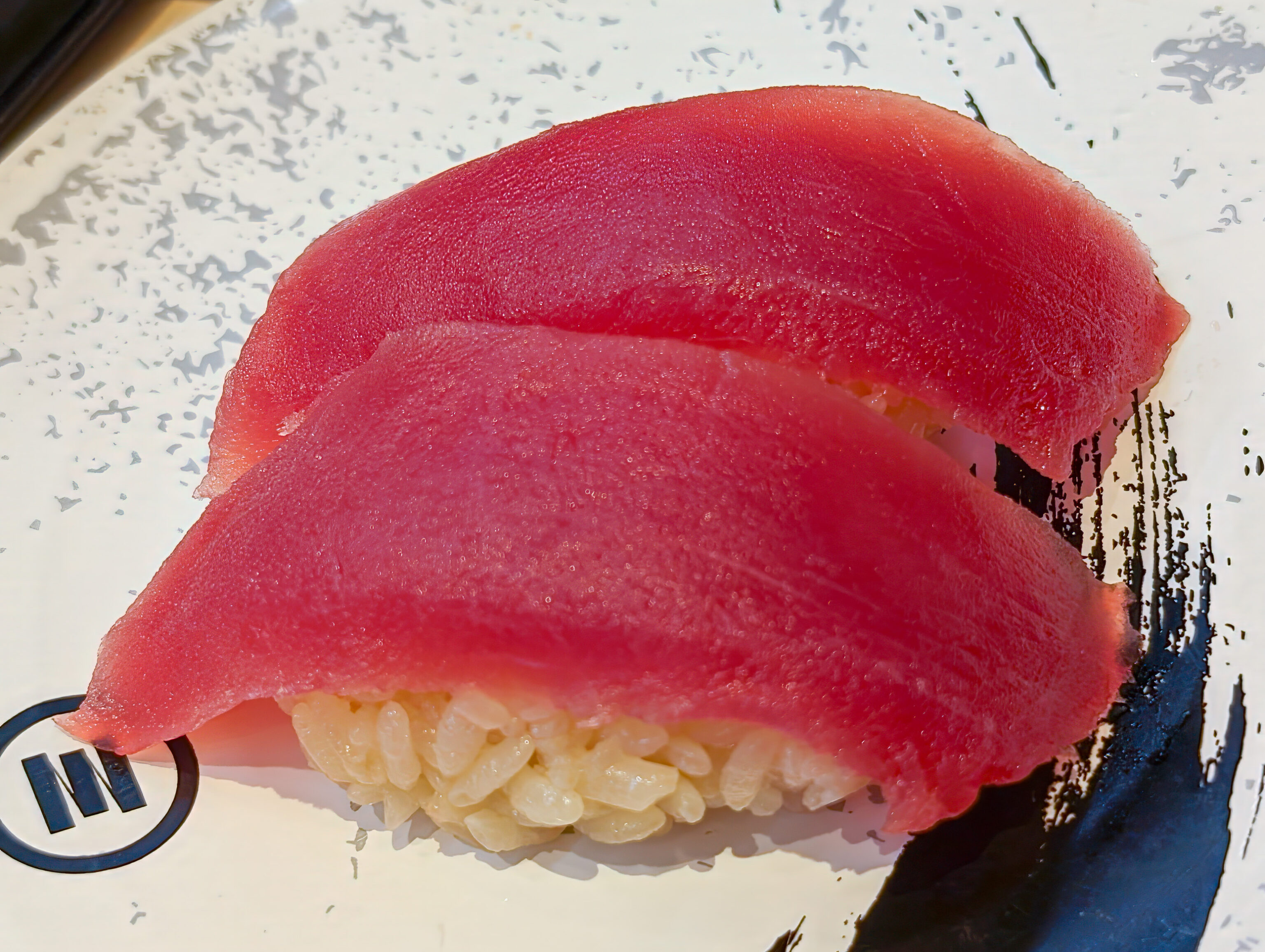
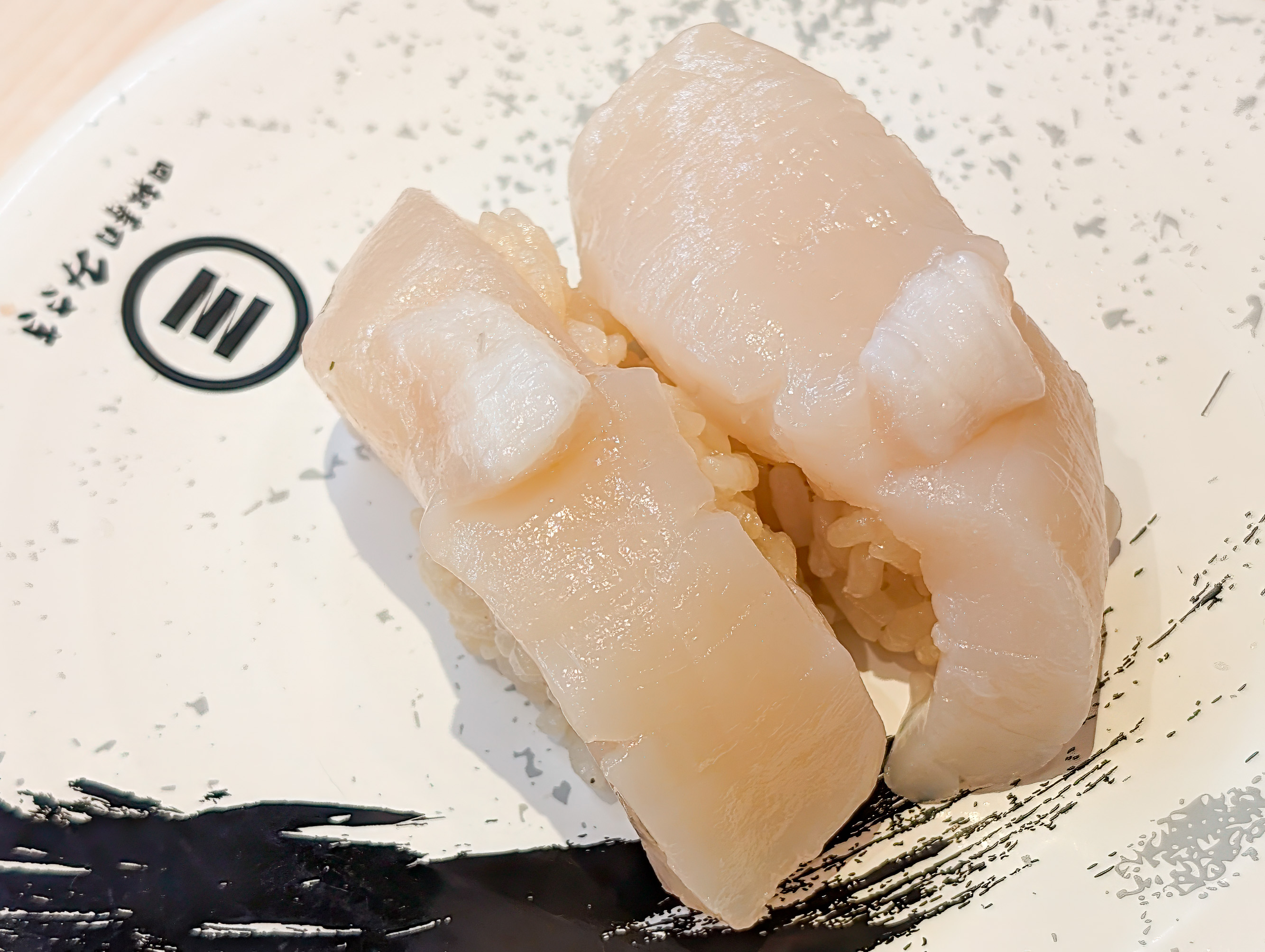
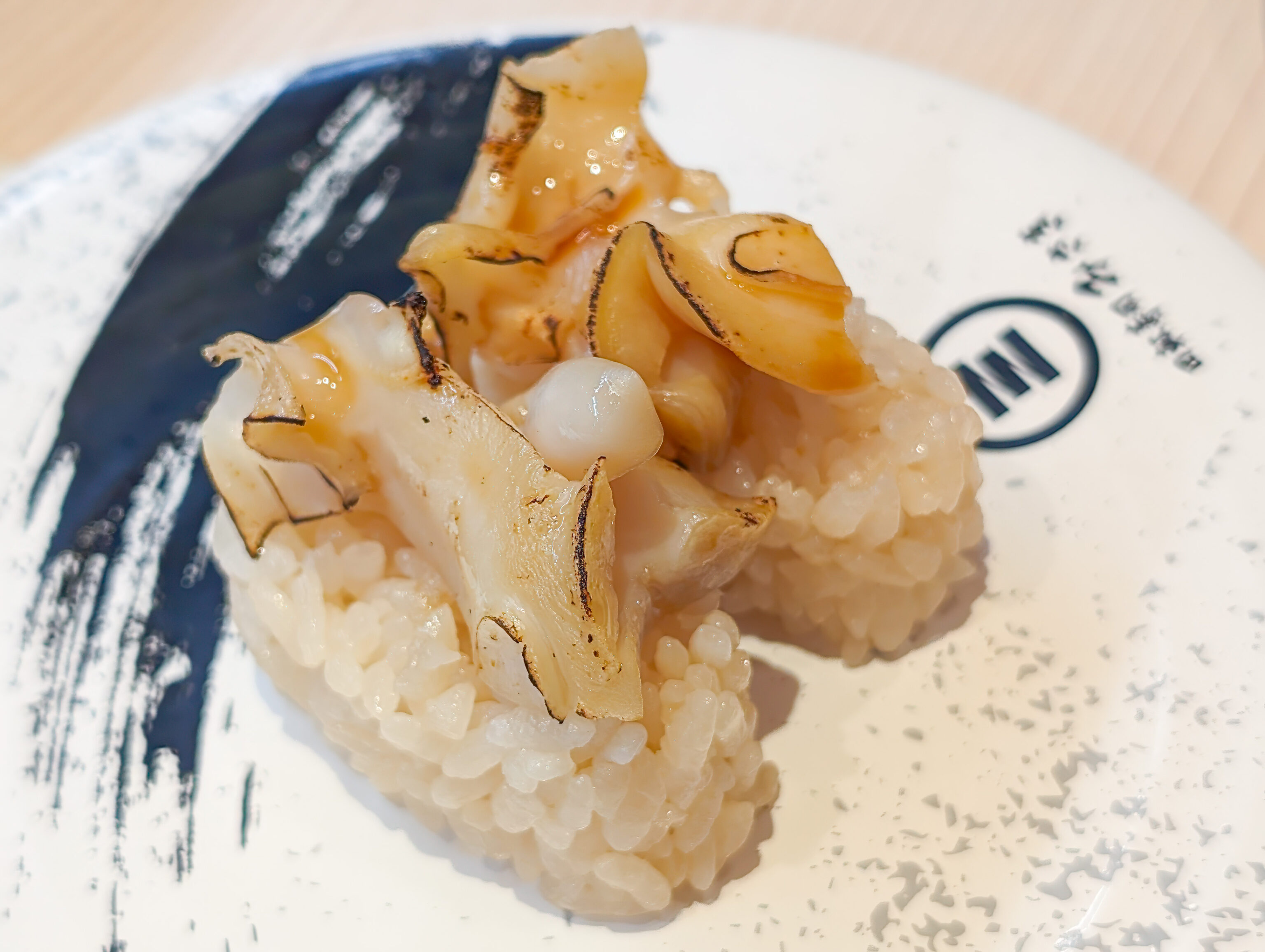
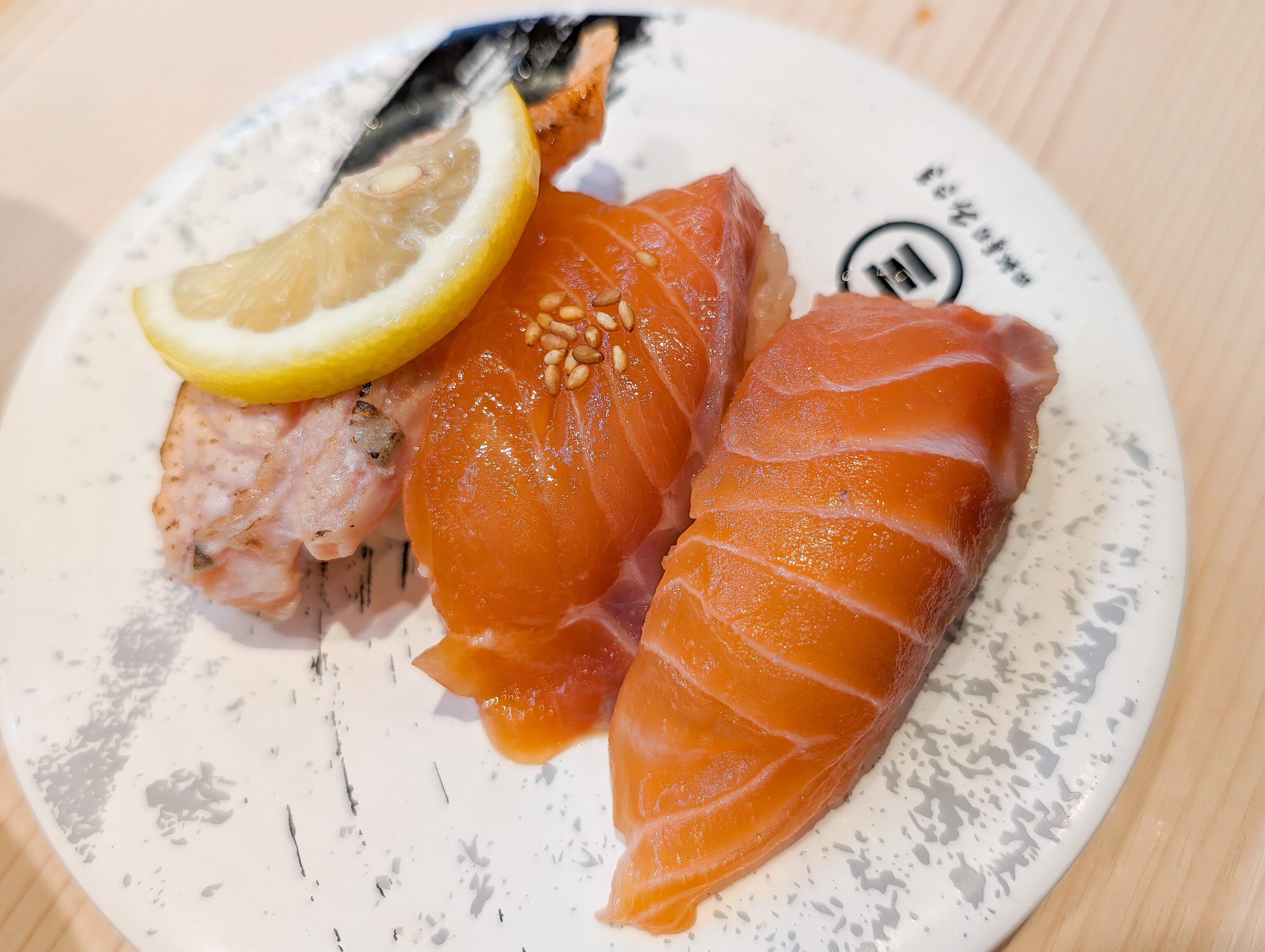
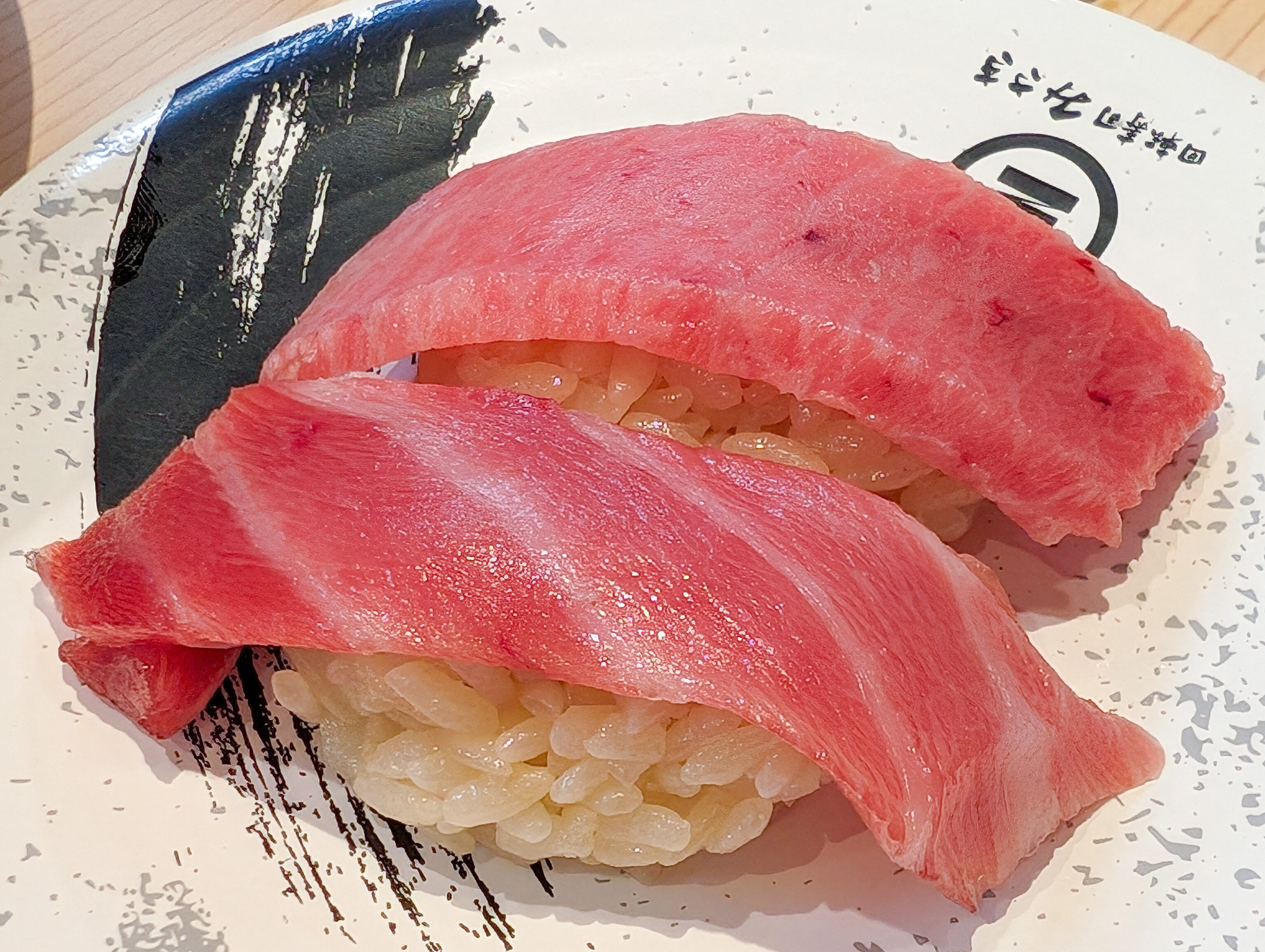
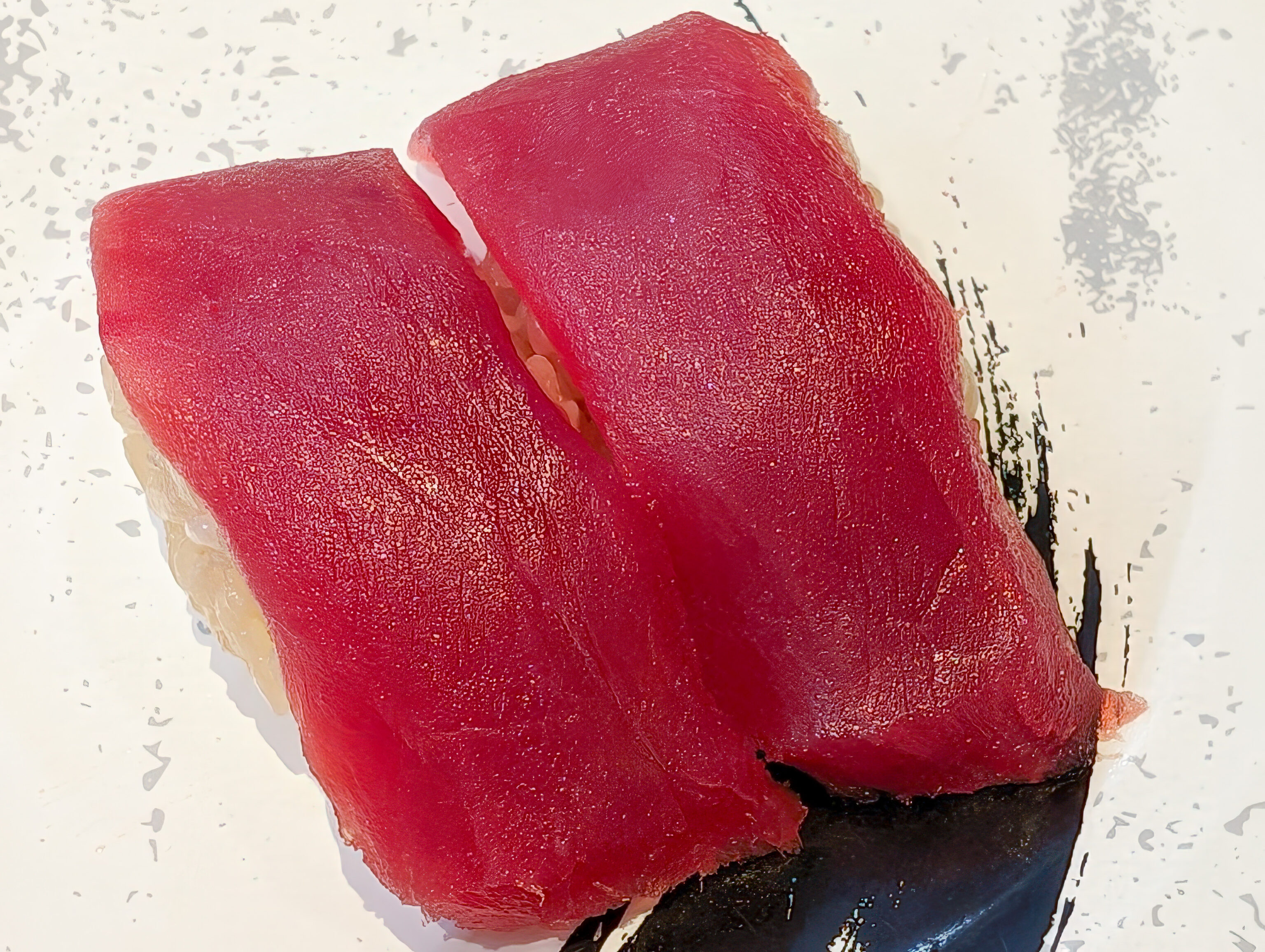
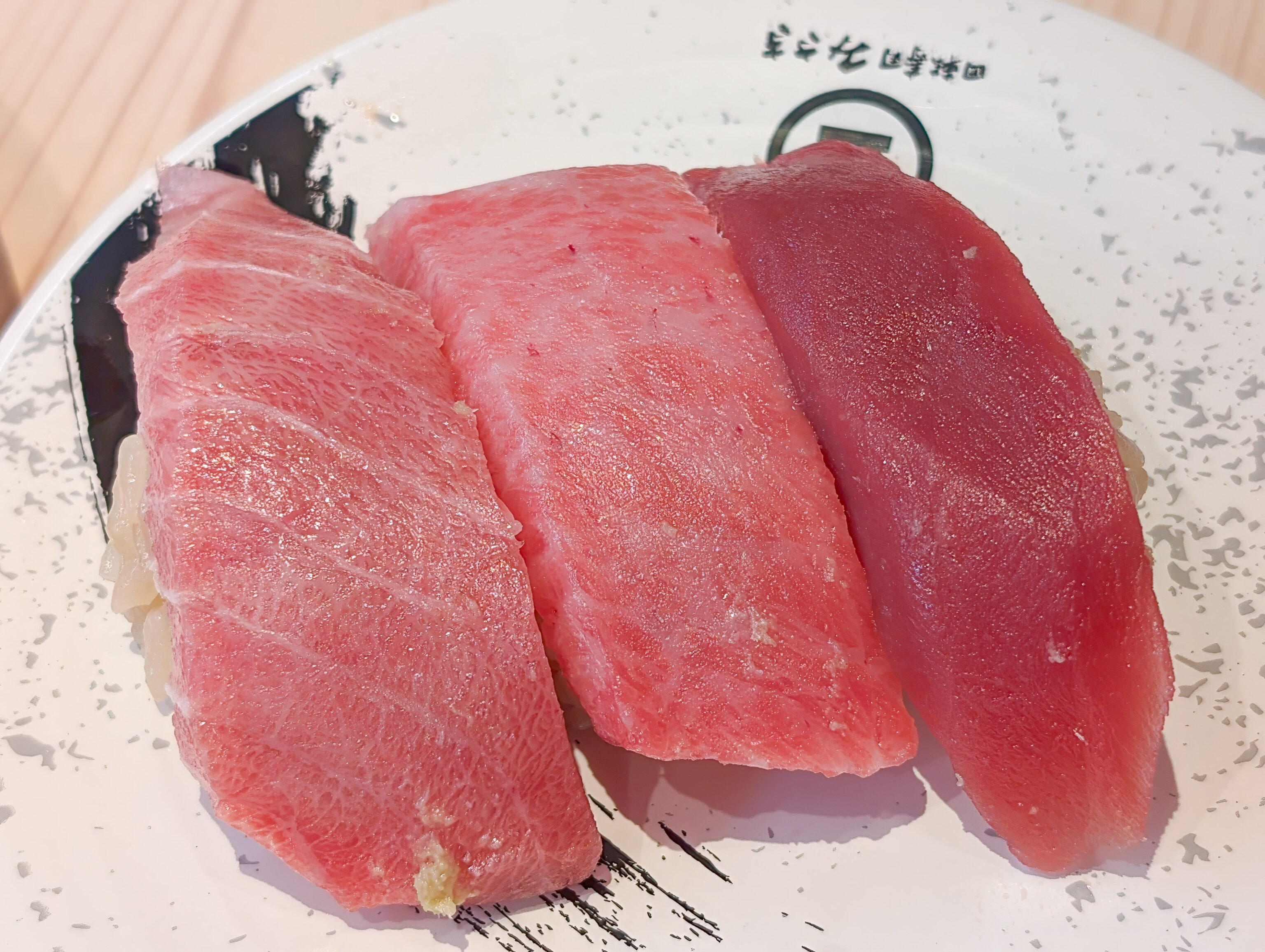
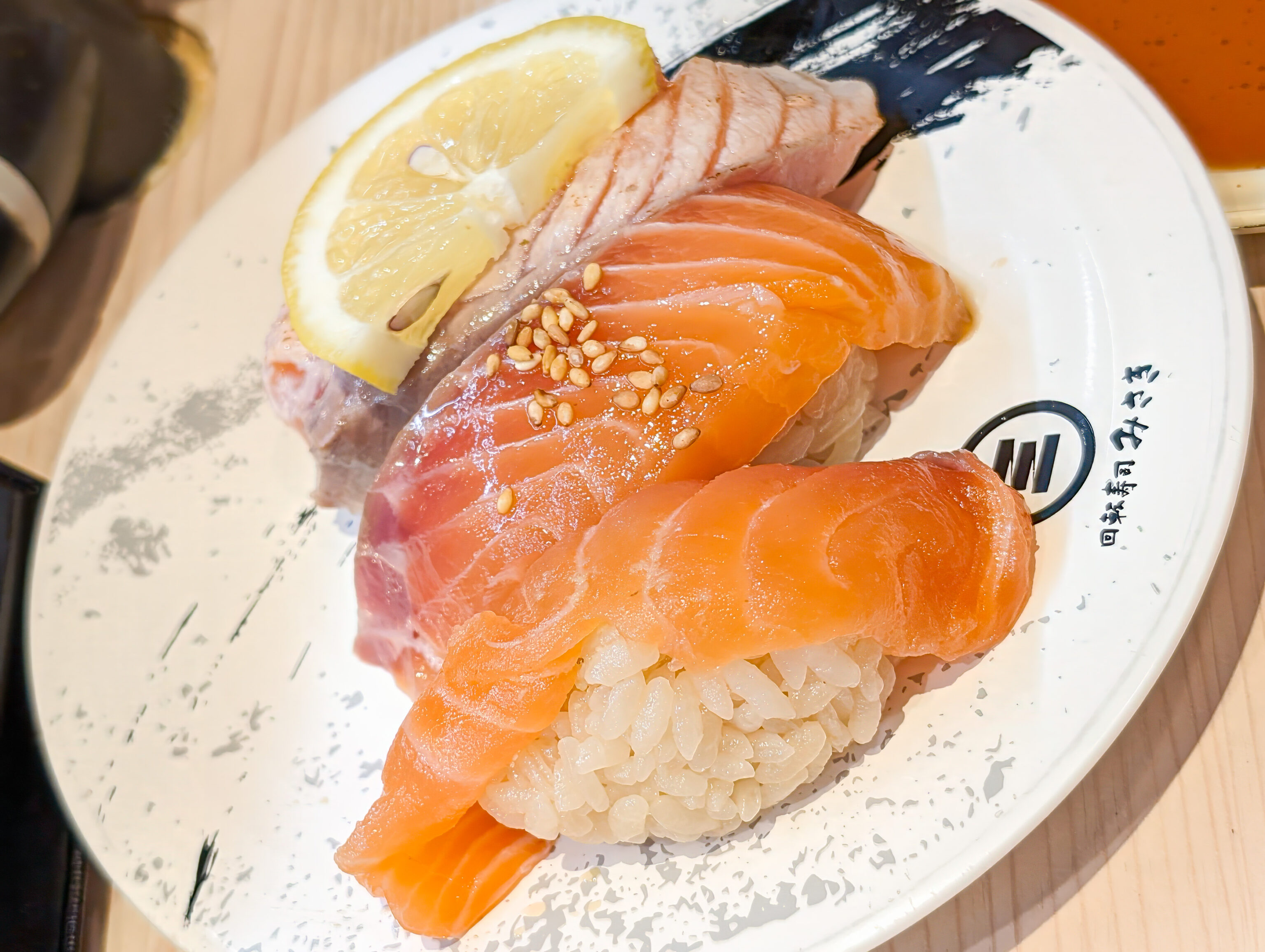
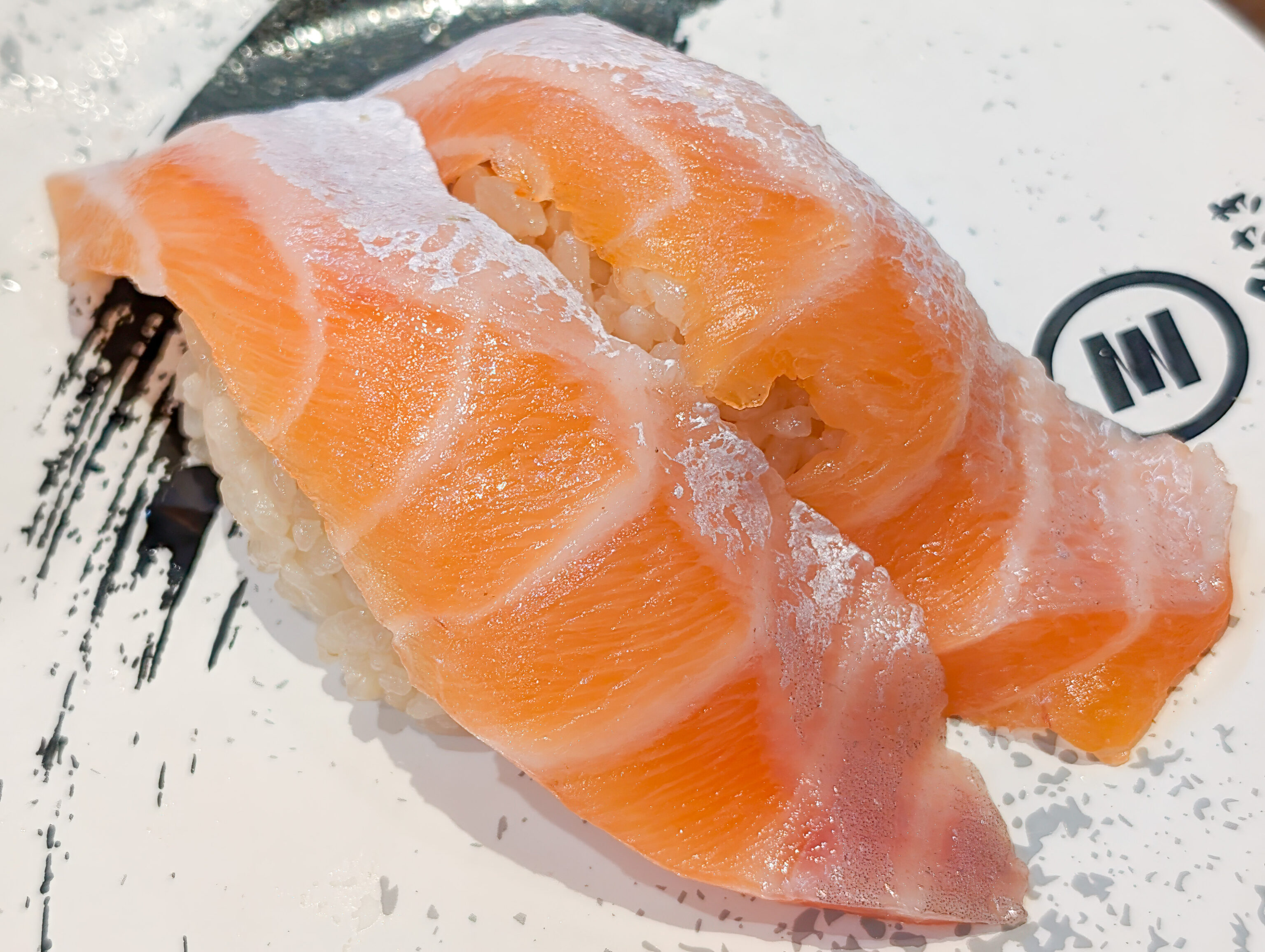
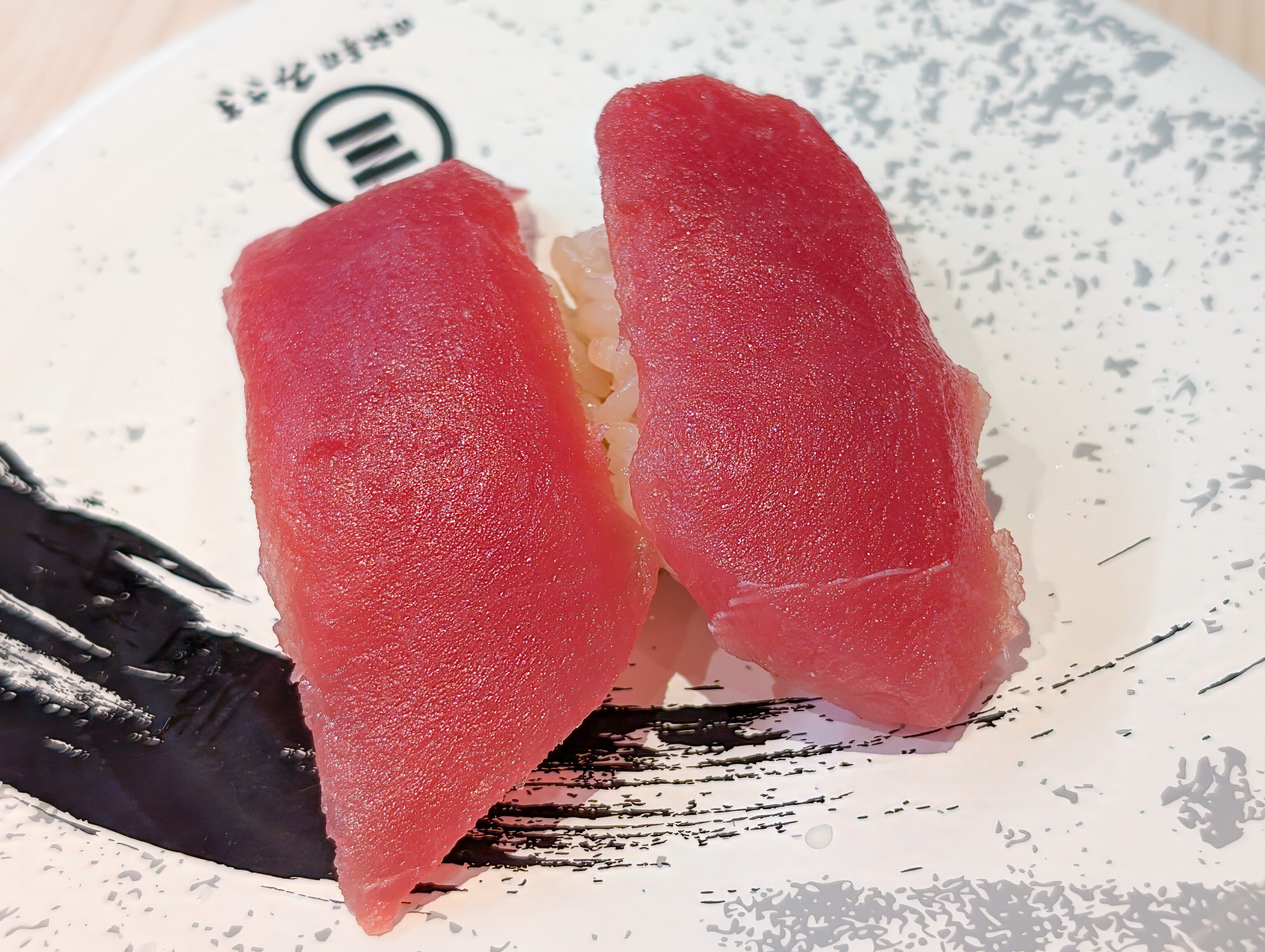
We had 14 plates this time. Once again, the salmon was better than expected. The rice here was a bit different than what we usually encounter due to the use of red vinegar.
Kotoku-in
After lunch, we decided to head over to 高徳院 Kotoku-in by bus. There is a bus stop right by the entrance to the temple.
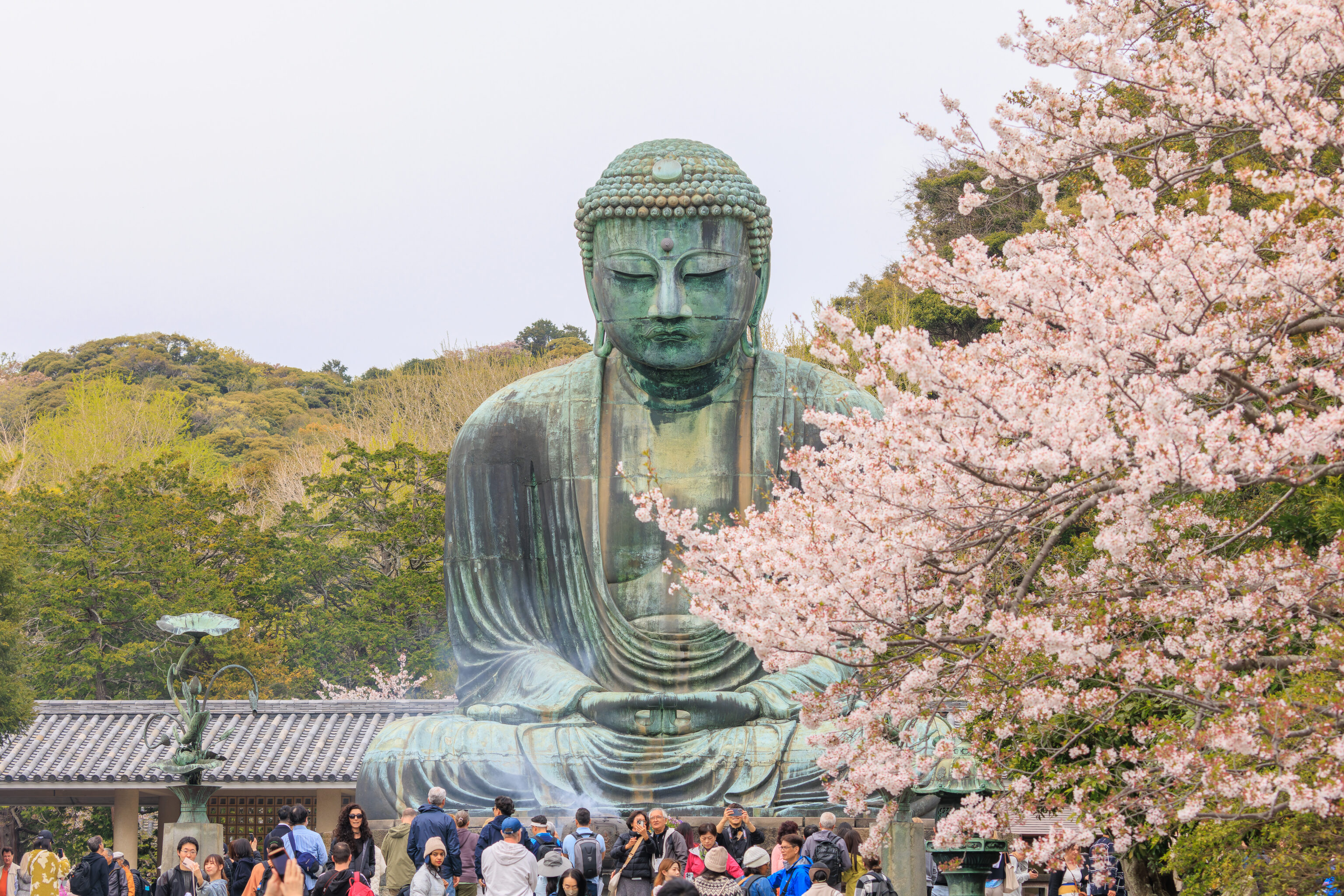
Kotoku-in is famous for its large Buddha statue, known as the 鎌倉大佛 Kamakura Great Buddha.
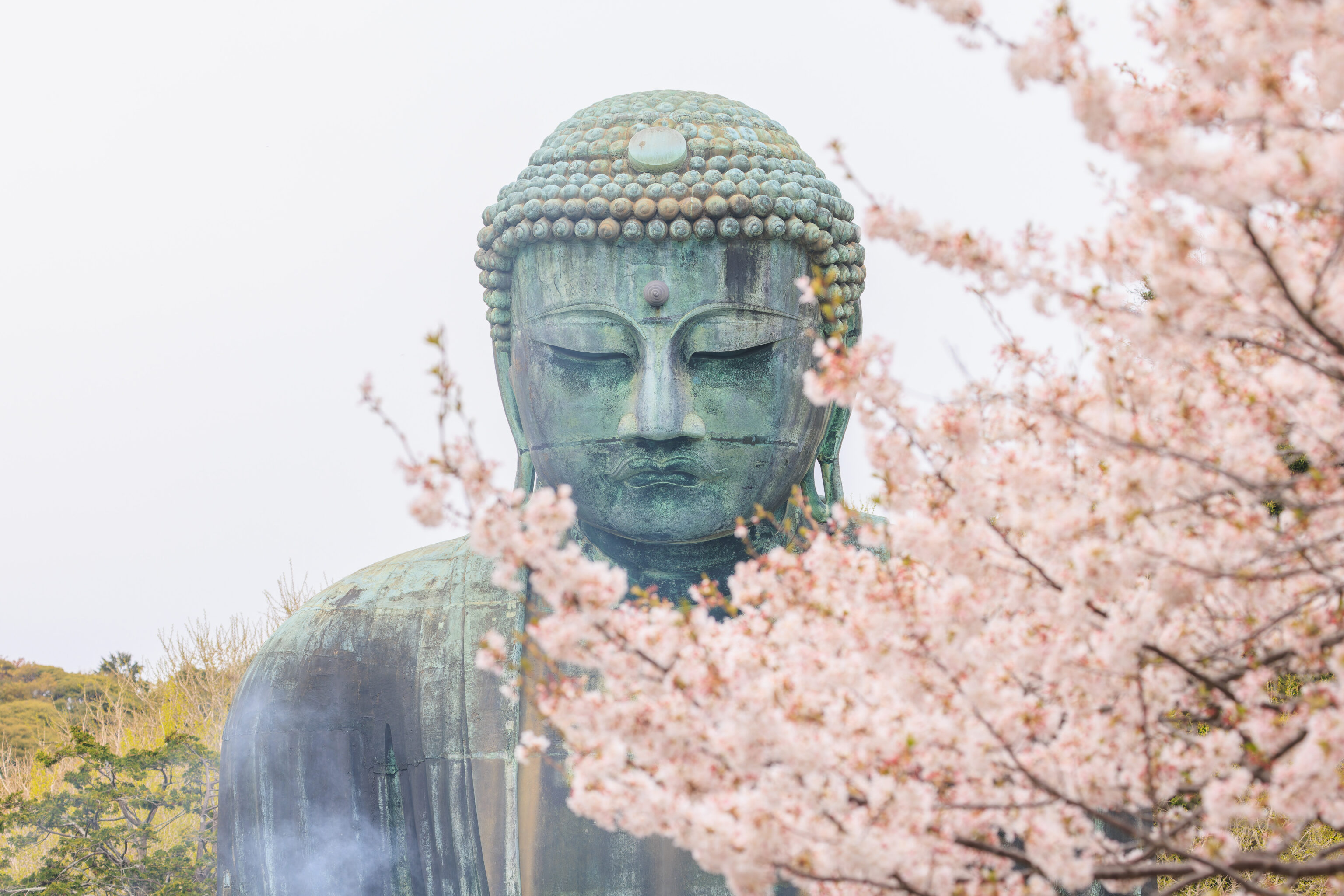
There was a sakura tree on the right edge of the path leading up to the statue. It made for a good foreground!
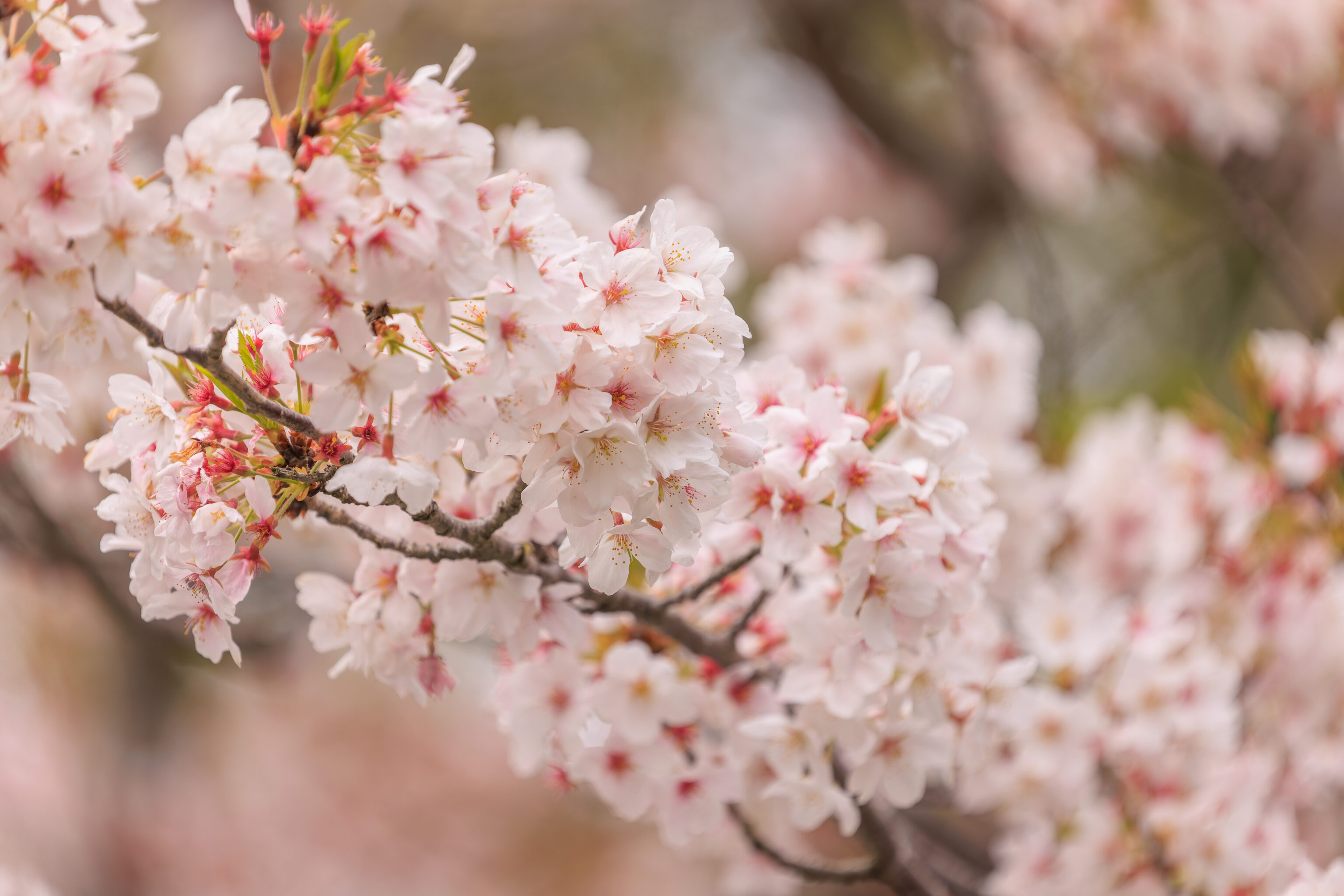
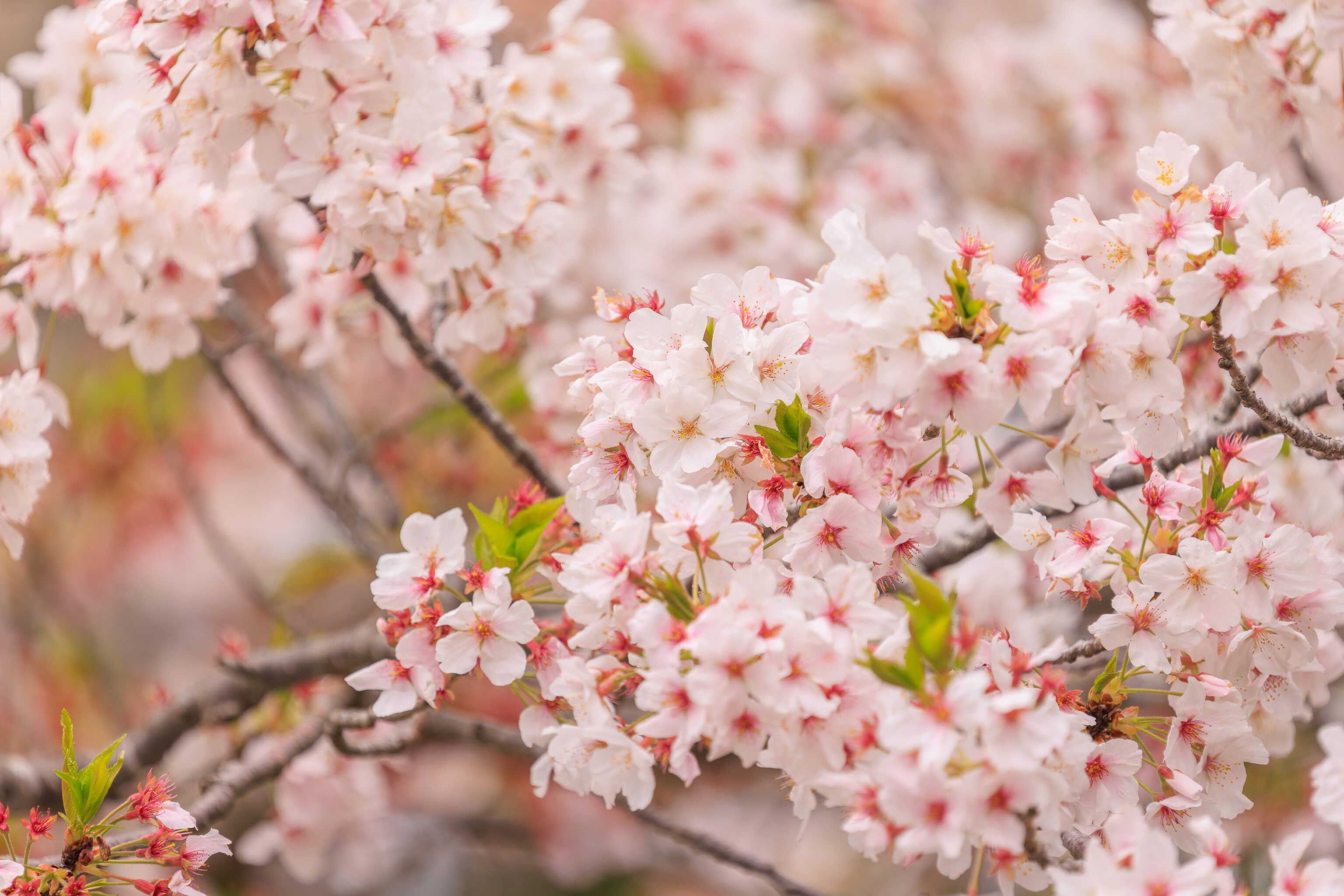
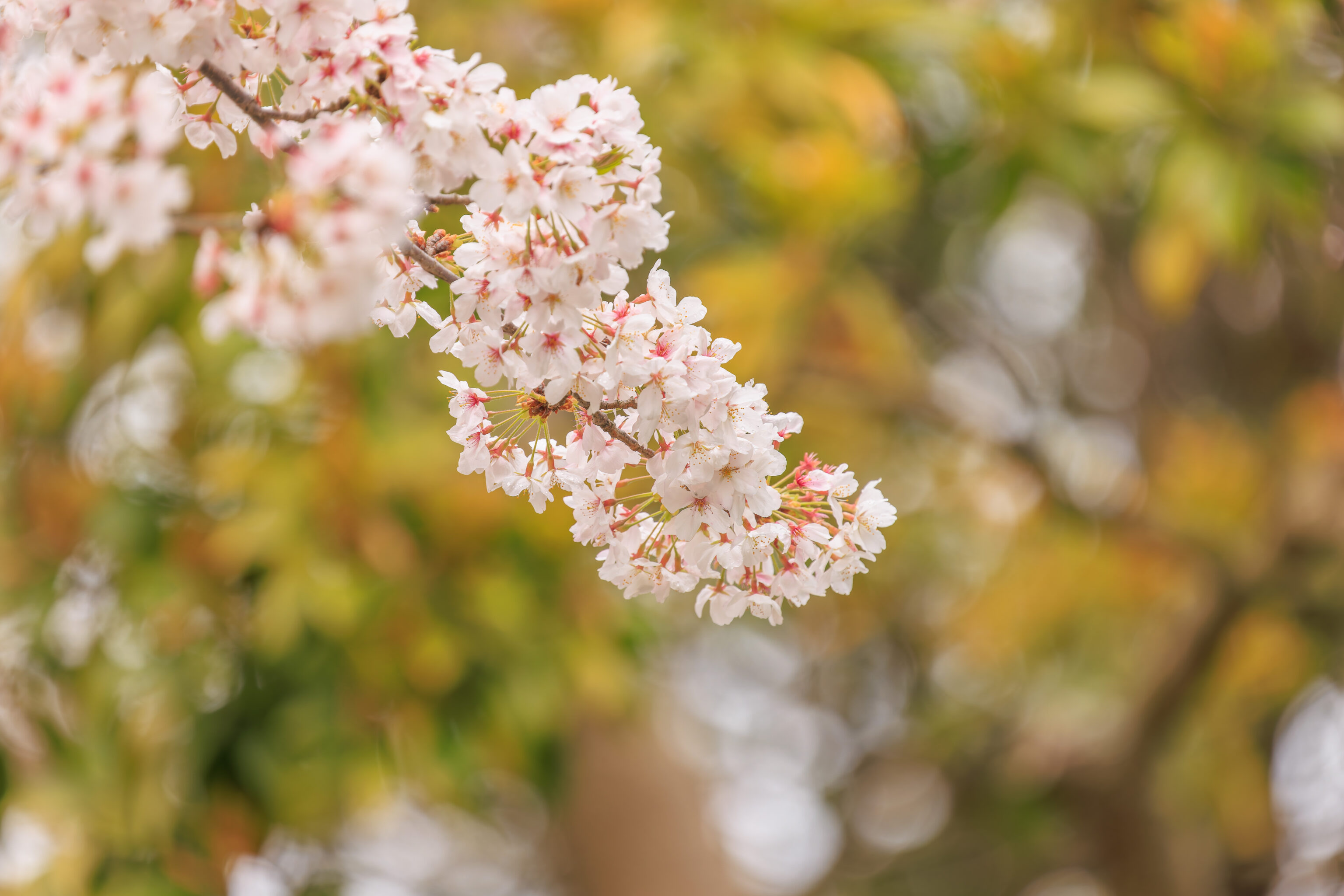
A few close up photos of the sakura petals. This is definitely one of the nicest we’ve seen on this trip!
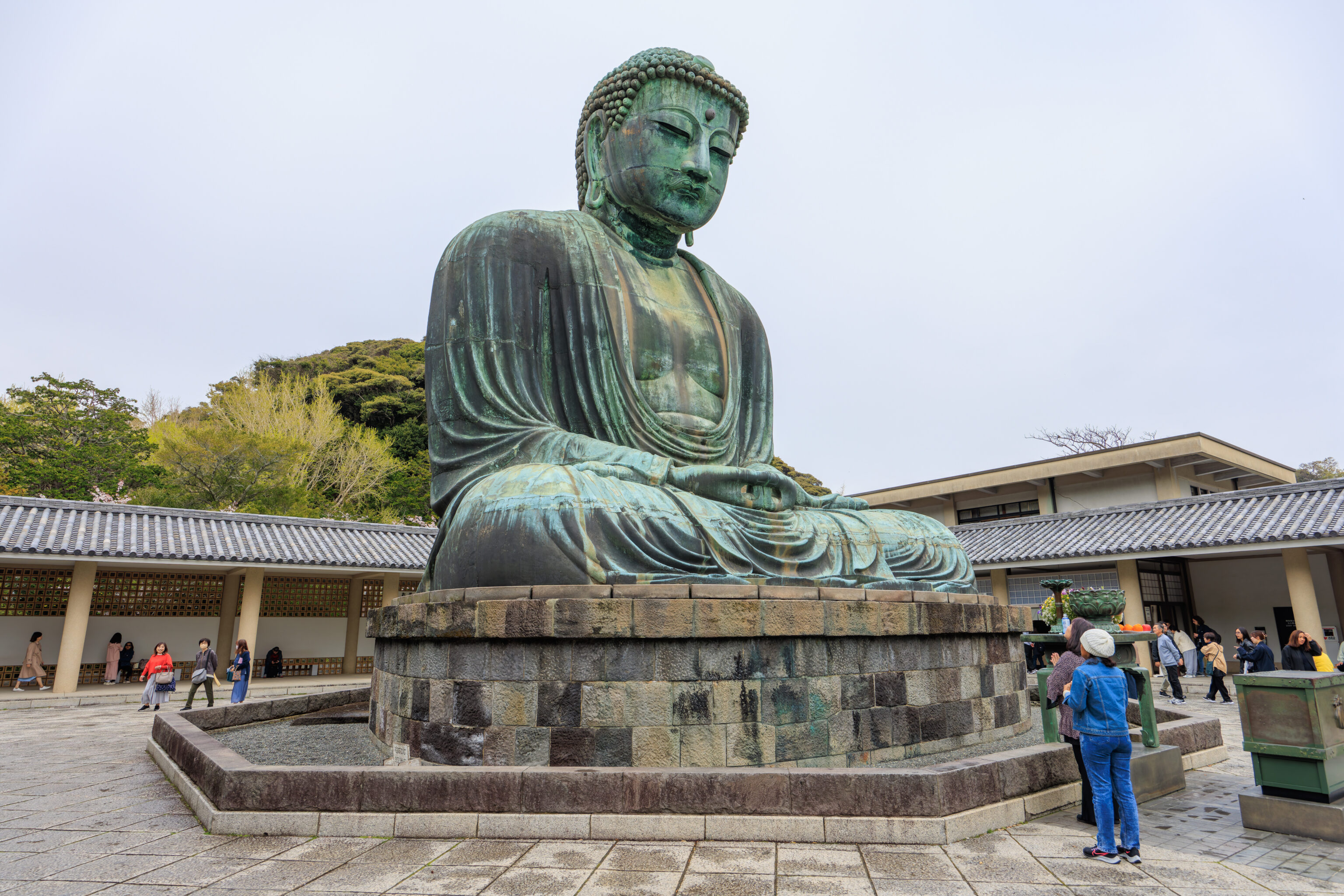
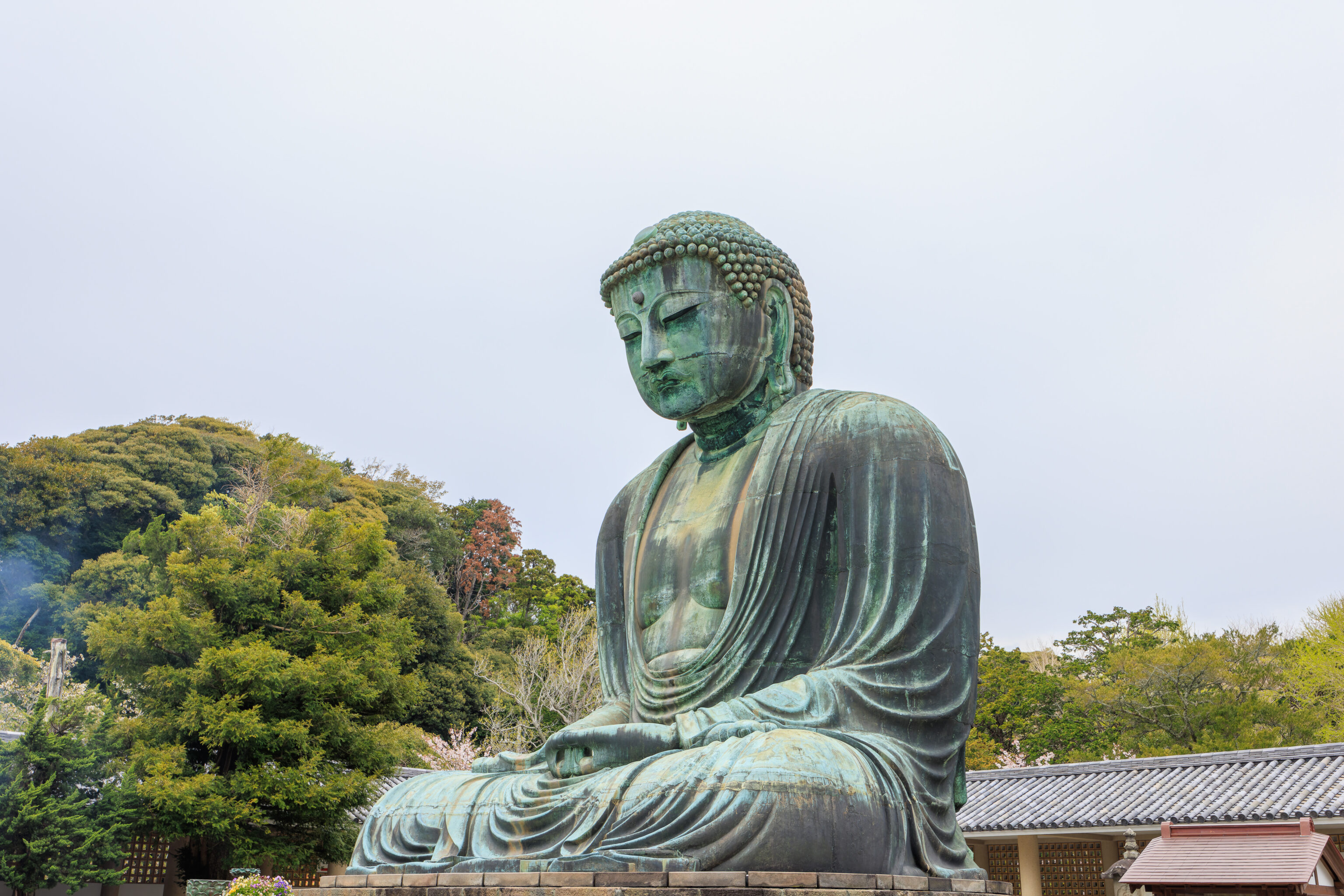
The statue, as seen from left and right. A sign by the statue provides a bit of history:
National Treasure Bronze-cast Seated Amida Buddha
Designated on 8th February, 1958
National Historical Site Kamakura Daibutsu Den site
Designated on 27th February, 2004
The "Seated Amida Buddha" also known as the Daibutsu (Great Buddha) of Kamakura, is the principal object of devotion for Kotokuin temple. This Daibutsu is one of the prominent bronze-cast Great Buddha in Japan. Although the date of its completion is unknown, what is cited in the archival record as "24 meter high Statue of Buddha" is likely to be indicating the Daibutsu of Kamakura. According to other historical documents, the casting started in 1252, and by 1268 a great temple called "Daibutsu Den" was built to enshrine the colossal statue. However, this edifice was plagued by repeated calamities, having to go through repairs after repairs.
In 2000 and 2001. archaeological excavation took place on site of the Daibutsu Den compound. The building structures revealed that the building space was approximately in length and breadth of 45.2m by 44.0m. No medieval roof-tiles were unearthed which meant that the Daibutsu Den was probably not covered with roof-tiles. The evidence of earth layer deposits shed light on the casting technique of the colossus.
The Daibutsu became unsheltered in the late 15th century, open to deteriorate in repeated natural disasters. Aiming to restore the Daibutsu. Kotokuin temple was built in 1712 by Zojoji temple priest, Yuten and a merchant from Asakusa. Nojima Shinzaemon. The Daibutsu restoration ceremony was held in 1732 by the resident priest. Yokoku. The Daibutsu is now managed and worshipped by the Kotokuin temple.
March 2007
Kamakura City Board of Education
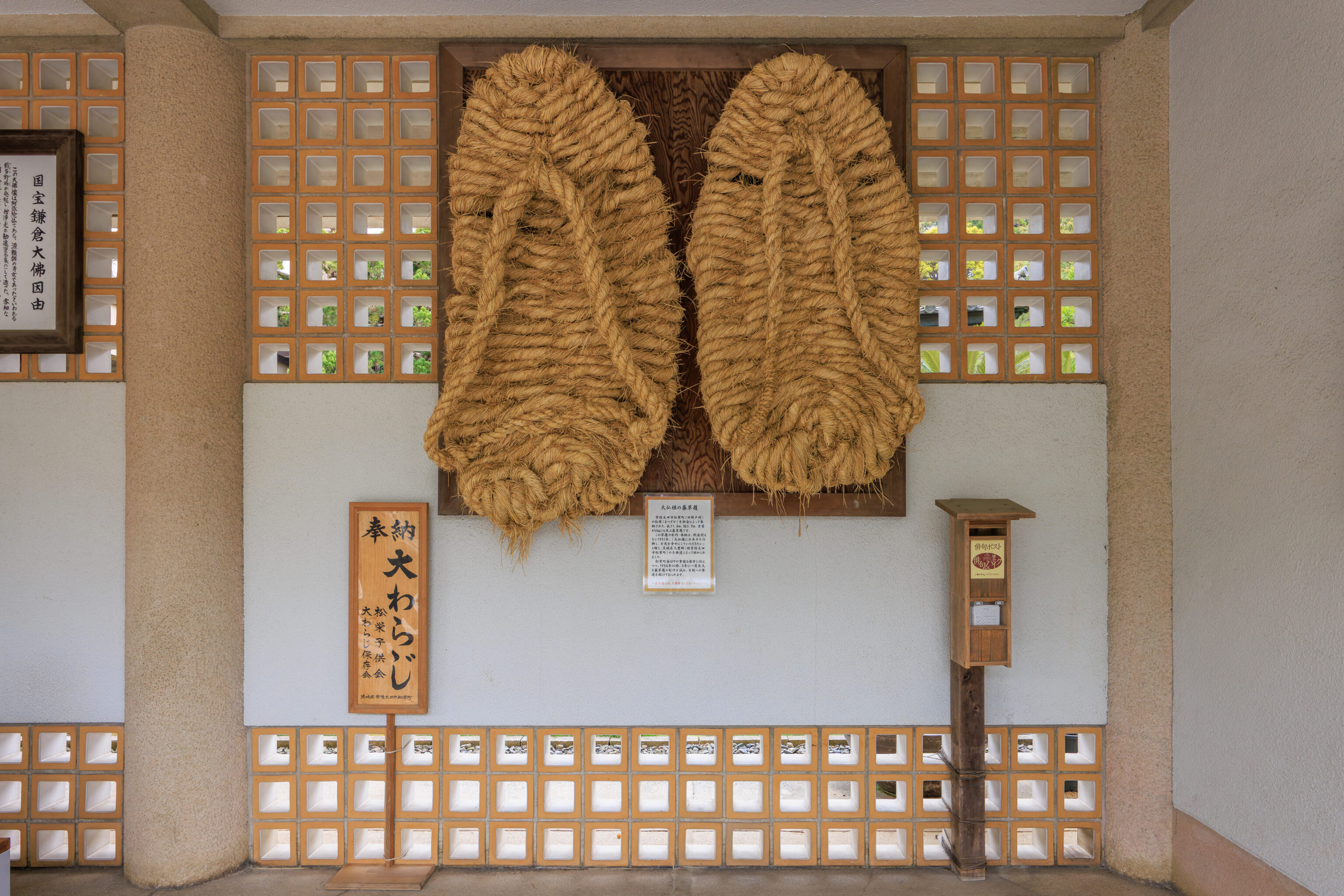
These are warazori, Japanese straw sandals, best described on the temple’s website:
On the inside wall of corridor to the right facing the Great Buddha rest a pair of huge warazori (length: 1.8 meters; width: 0.9 meters; weight: 45 kilograms), a gift from the Matsuzaka Children’s Club of Hitachi-Ota City (Ibaraki Prefecture). The warazori were first woven and donated by the children in 1951, at a time when Japan was still recovering from the ravages of World War II, with the wish that “the Great Buddha would don them to walk around Japan, bringing happiness to the people.” The Matsuzaka Children’s Club keeps this tradition alive to this day: since 1956, they have continued to make these giant warazori and present them to Kotoku-in once every three years.
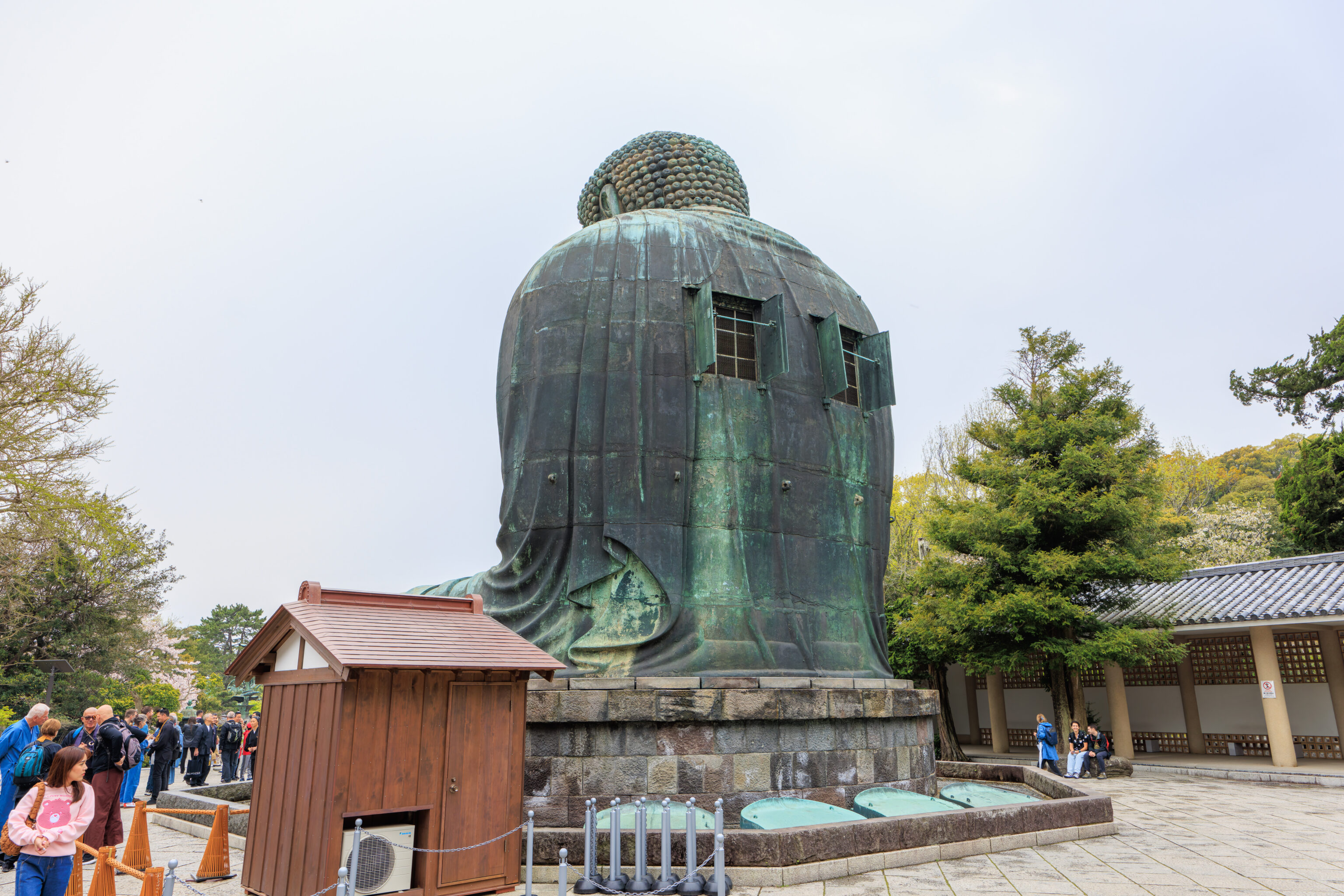
The Buddha statue has ventilation windows on the back. At some point, we realized that it is possible to actually go into the statue!
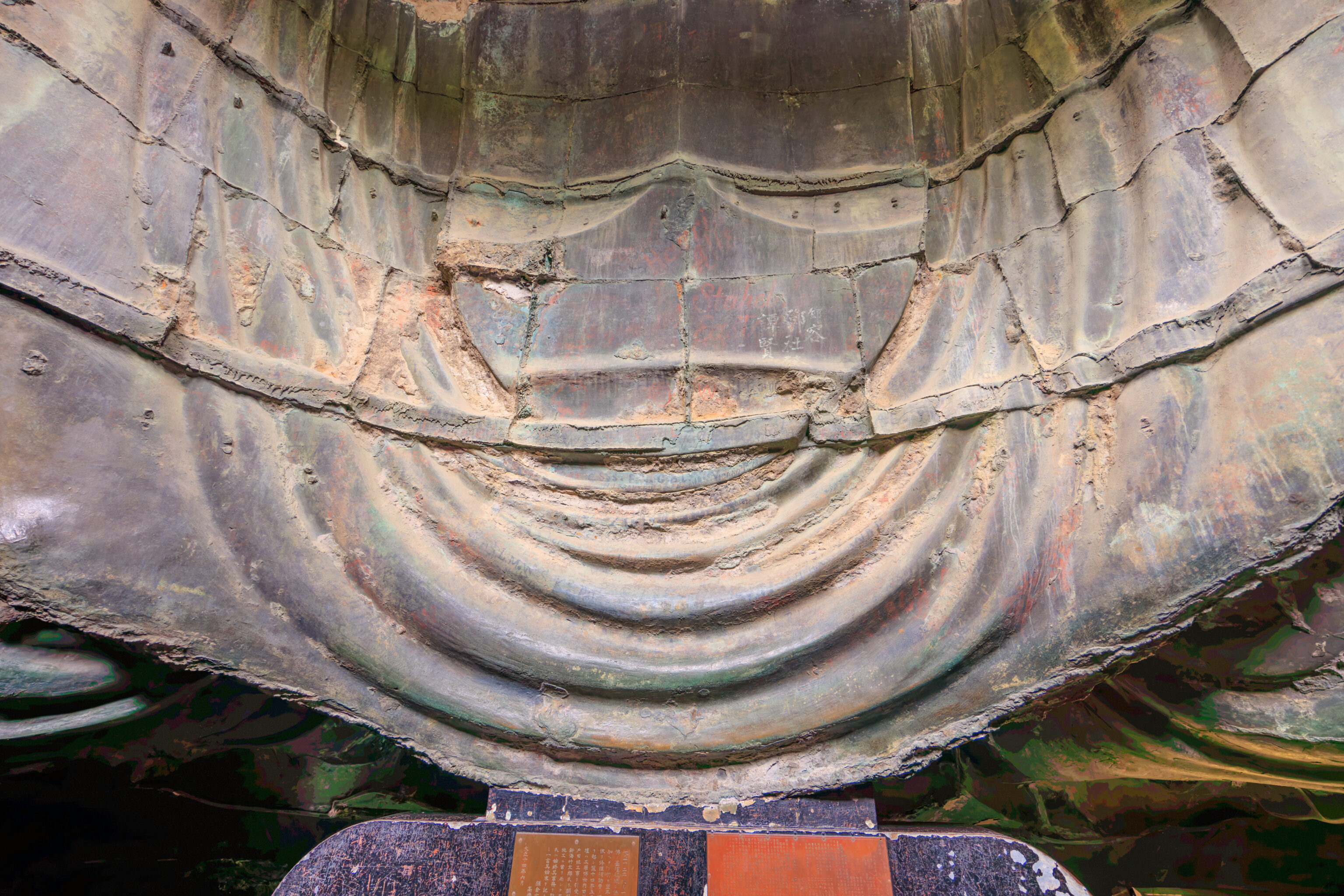
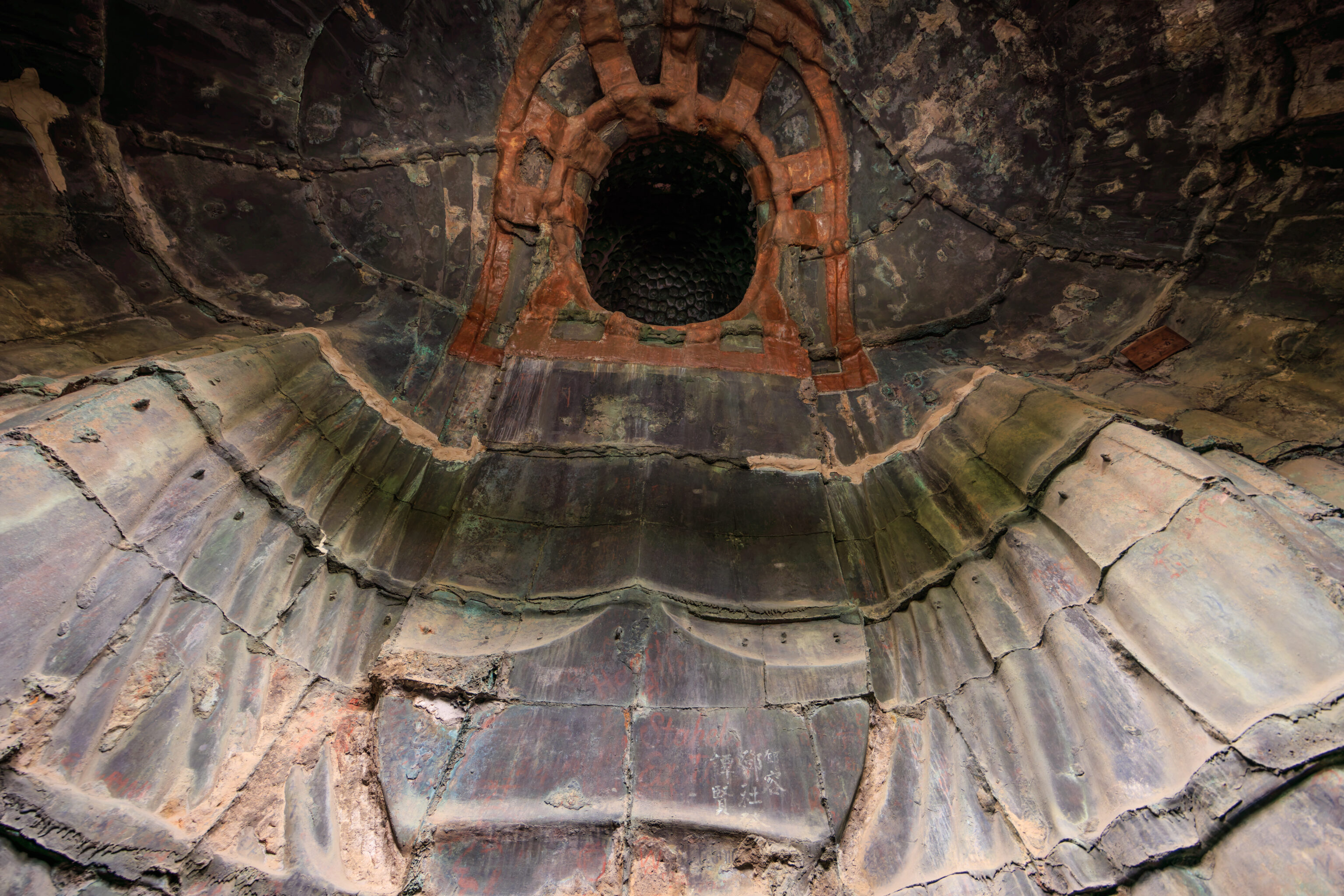
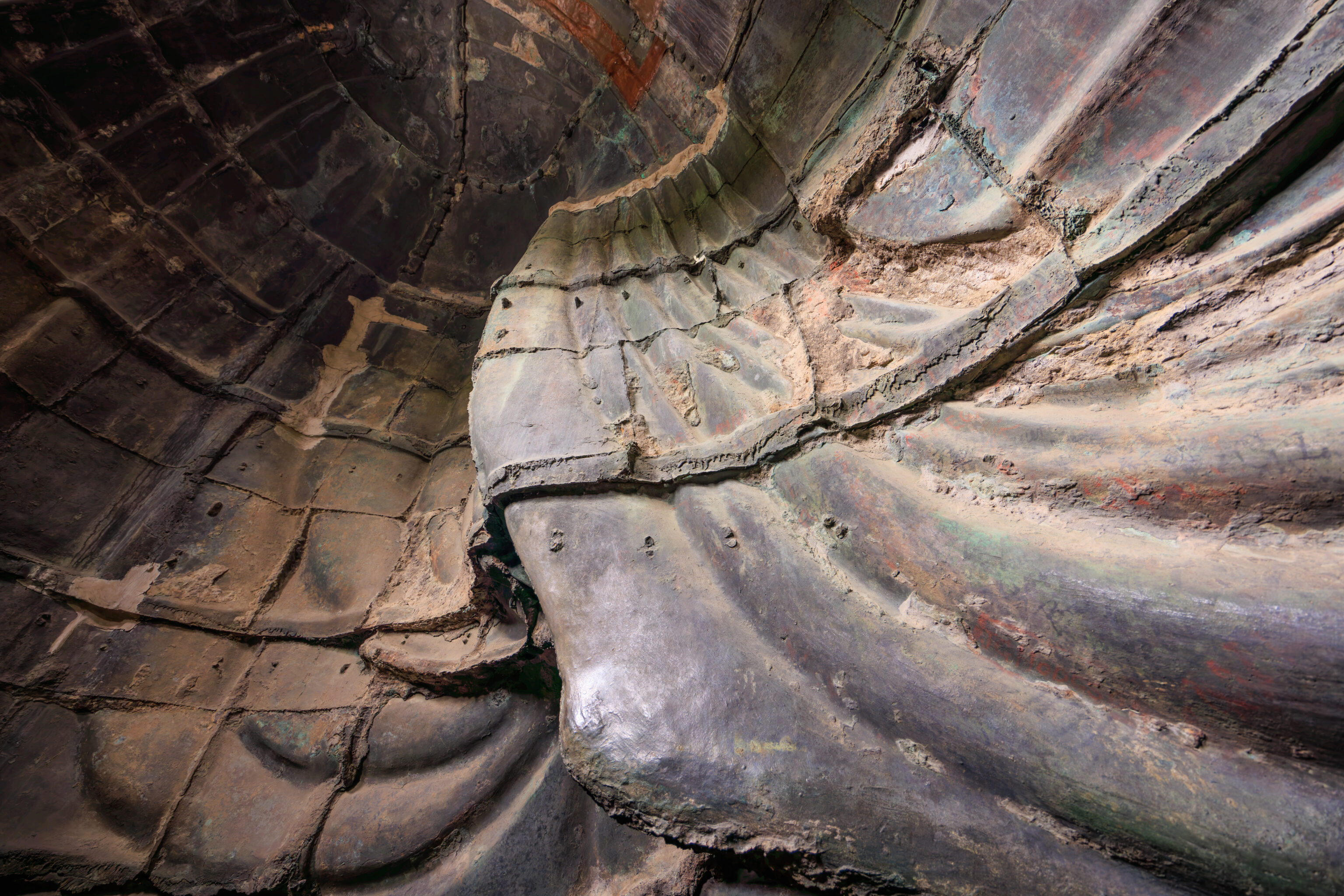
While there are plenty of huge Buddha statues in Japan, this is the only one we’ve ever been inside! An illuminated sign described how the statue is constructed:
Construction Techniques Observable in the Inner Hollow of the Kamakura Daibutsu
The Kamakura Daibutsu (Great Buddha of Kamakura) was built in the middle of the Kamakura period, seven and a half centuries ago. Upon entering the inner hollow of the statue, one can observe the surprisingly sophisticated techniques that were used to create this statue. Due to its immense size, this statue was cast in thirty separate stages. The lattice pattern of the interior walls indicates that a large number of molds were placed on top of each other in layers. In order to securely connect together the separately cast pieces, a completely unique and ingenious method was employed connecting the pieces from the base to the top of the statue. Known as ikarakuri. this method can be broadly divided into three different types (see figure).
In 1960 a program was established by Kotoku-in temple to conduct major repairs of cultural assets. Fortified plastic ERP was applied to the neck in order to reinforce the head of the statue, and a stainless steel plate was inserted between the statue and the pedestal on which it rests as a means of protecting the statue against earthquakes.
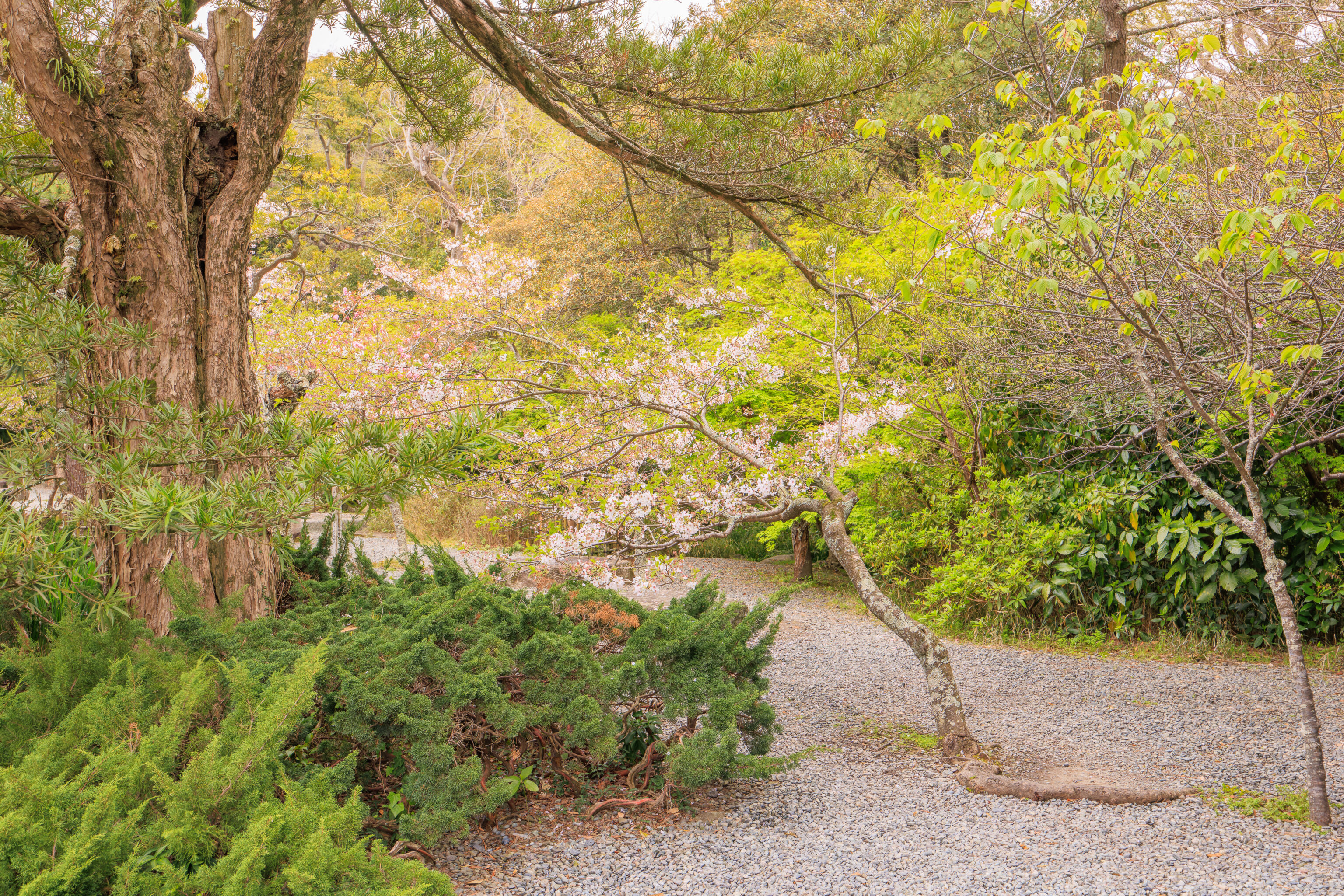
After exiting the statue, we walked around the statue in a counter-clockwise direction. This area around the statue had various trees, including some well past peak bloom sakura.
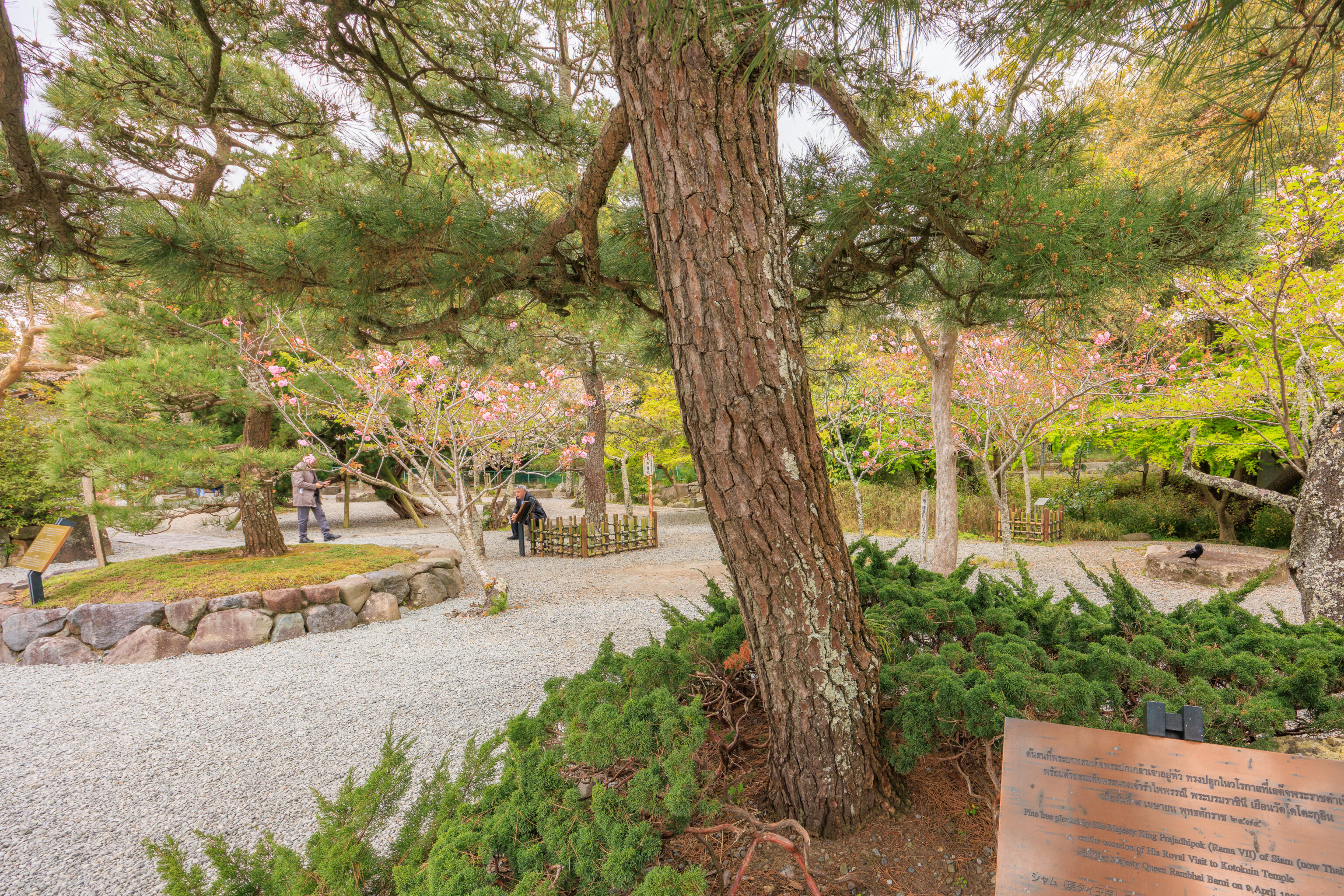
This tree was planted by King Rama VII of Thailand during a royal visit in 1931.
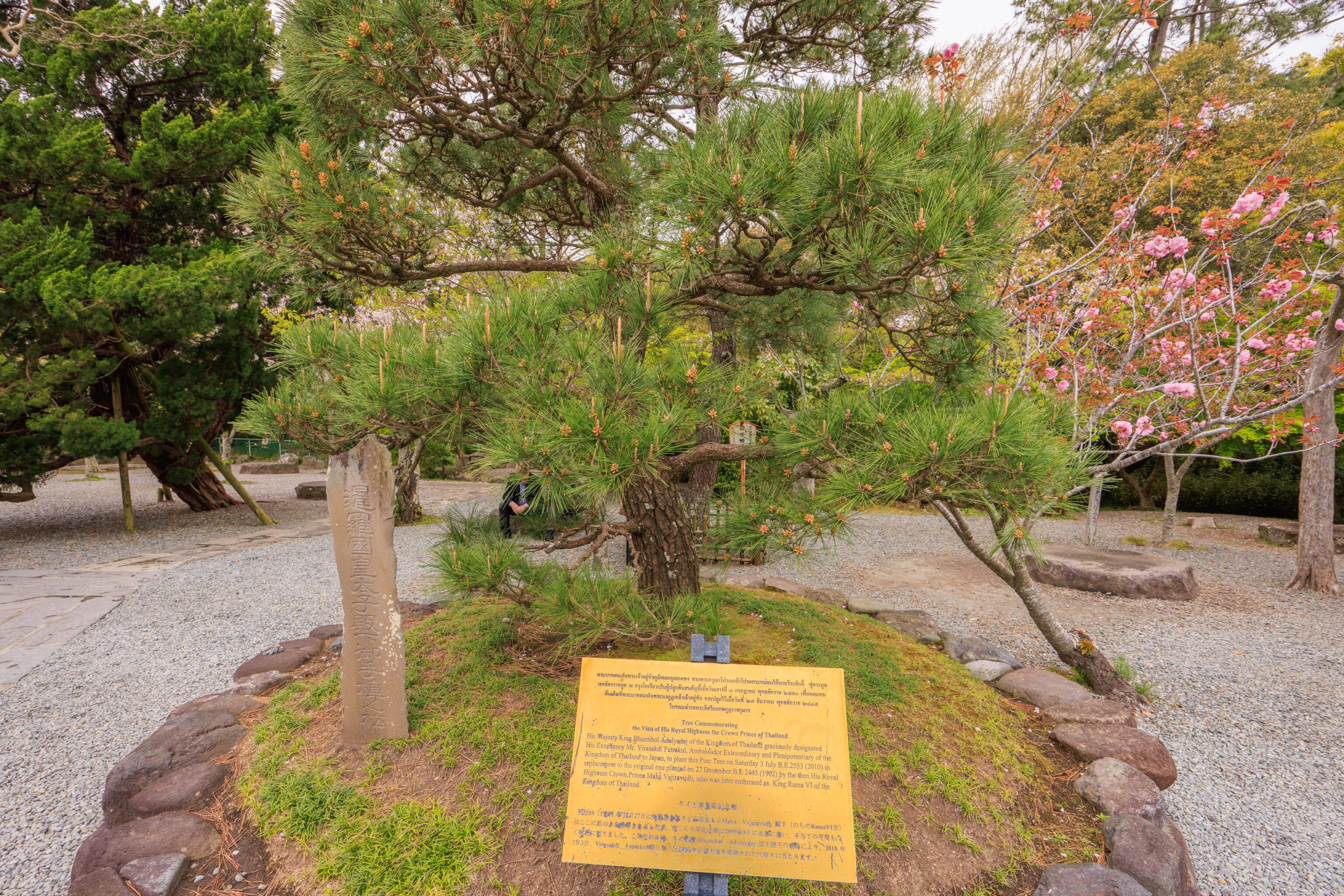
This tree was planted by Thailand’s ambassador to Japan in 2010 on behalf of the King of Thailand to replace a tree planted in 1902 by the future King Rama VI.
Hasedera
After leaving Kotoku-in, we walked to the south to visit 長谷寺 Hasedera, a Buddhist temple.
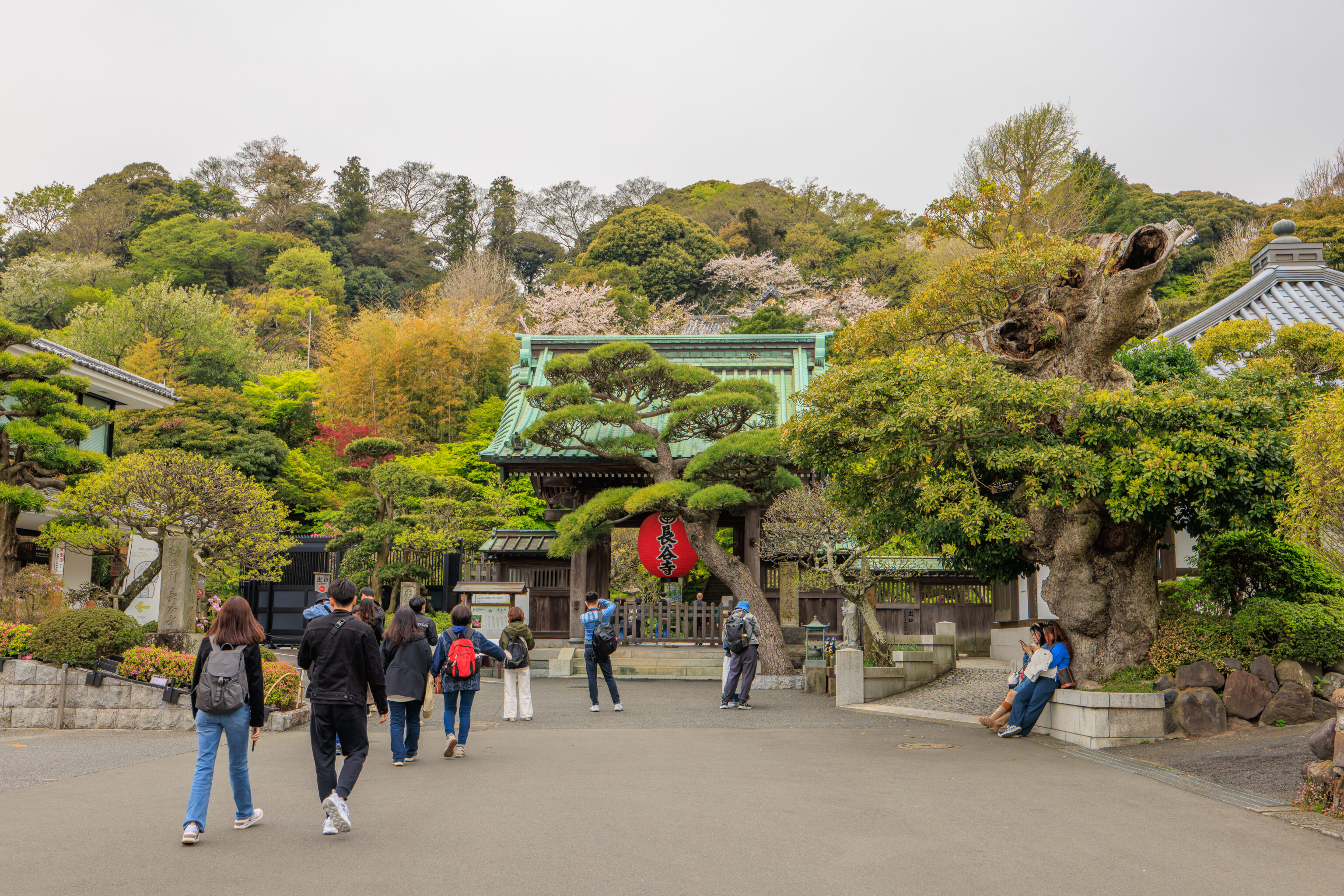
There were a few people at the temple’s picturesque entrance.
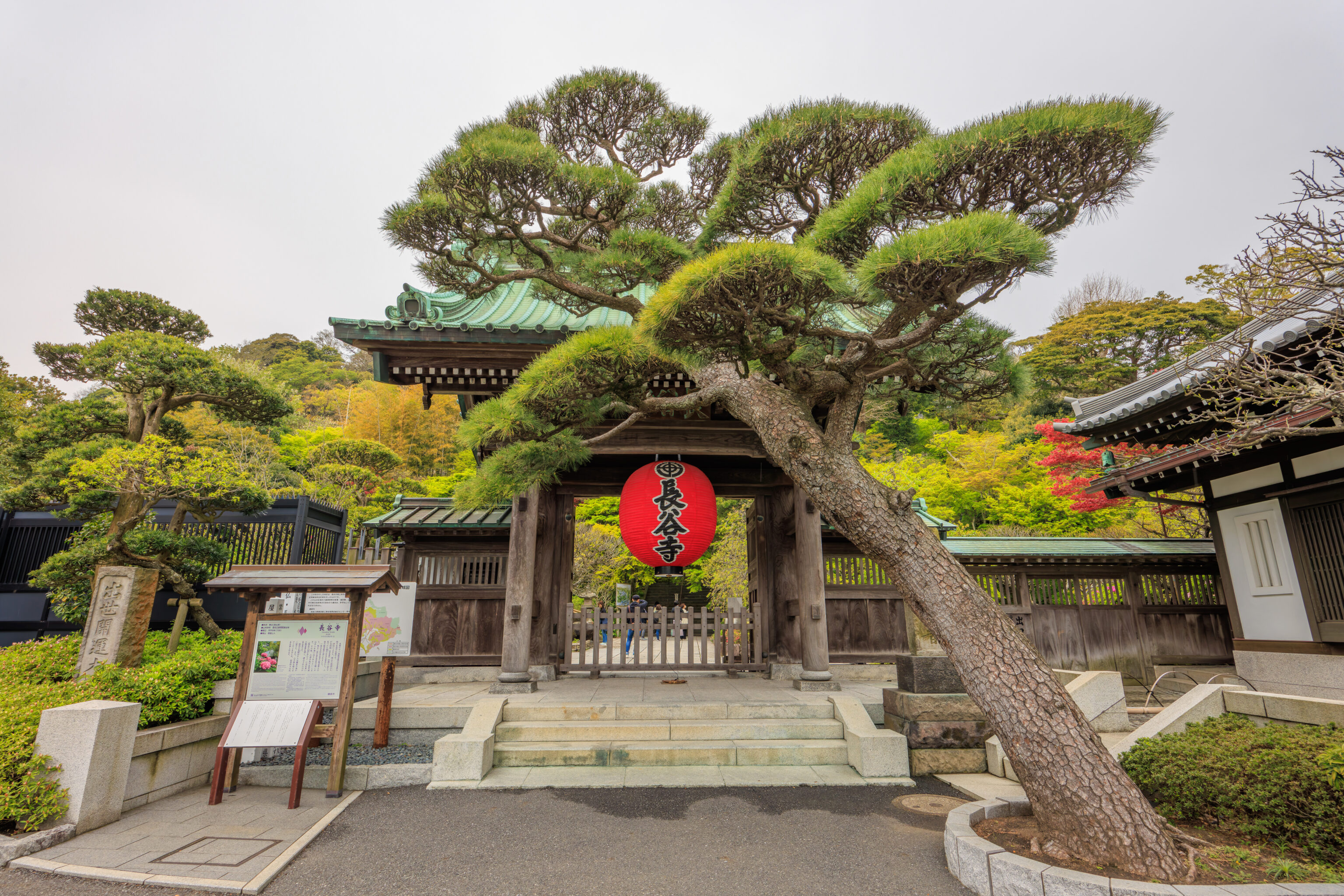
A closer look at the main gate. The current day entrance and ticket office is to the left.
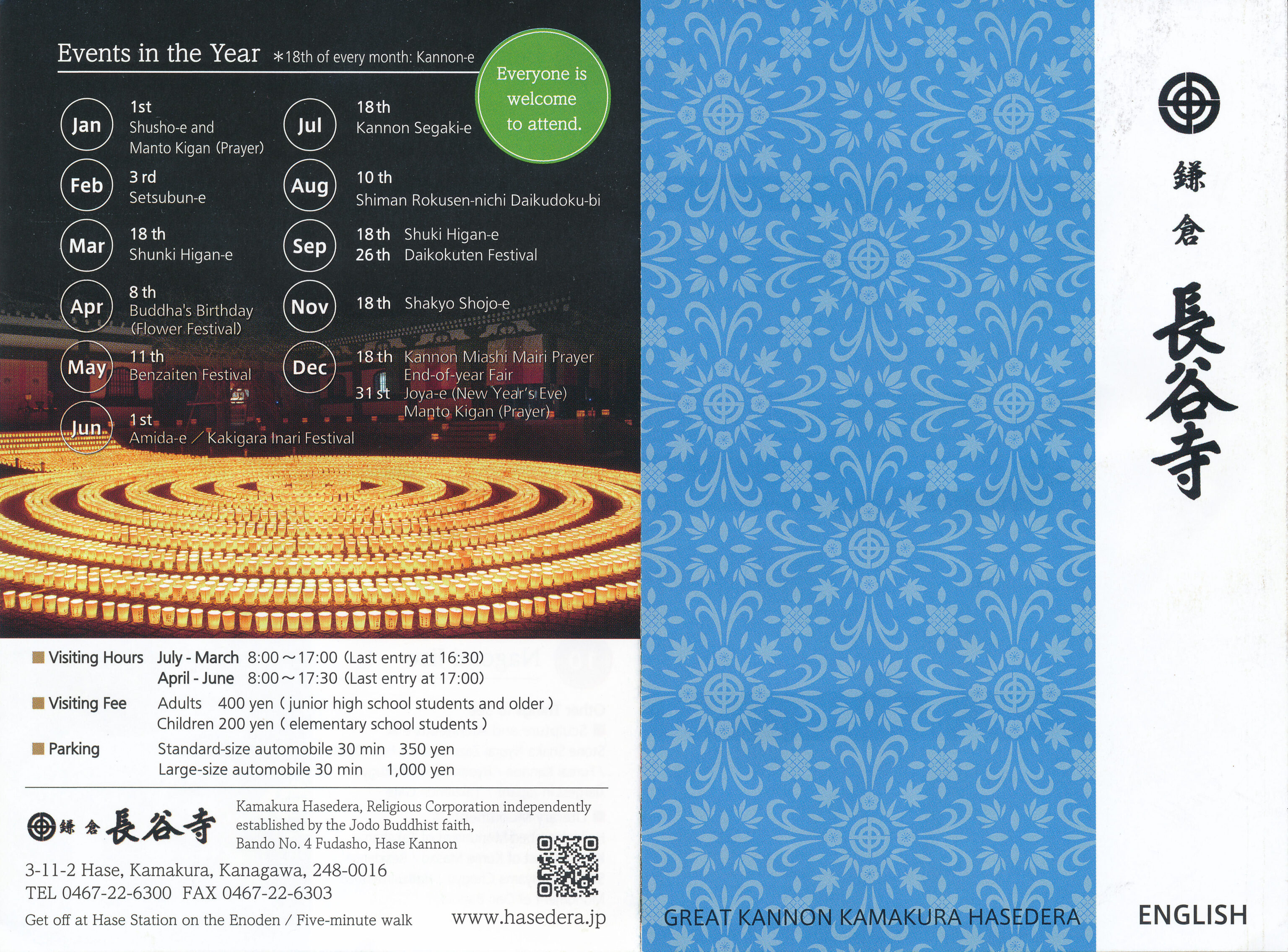
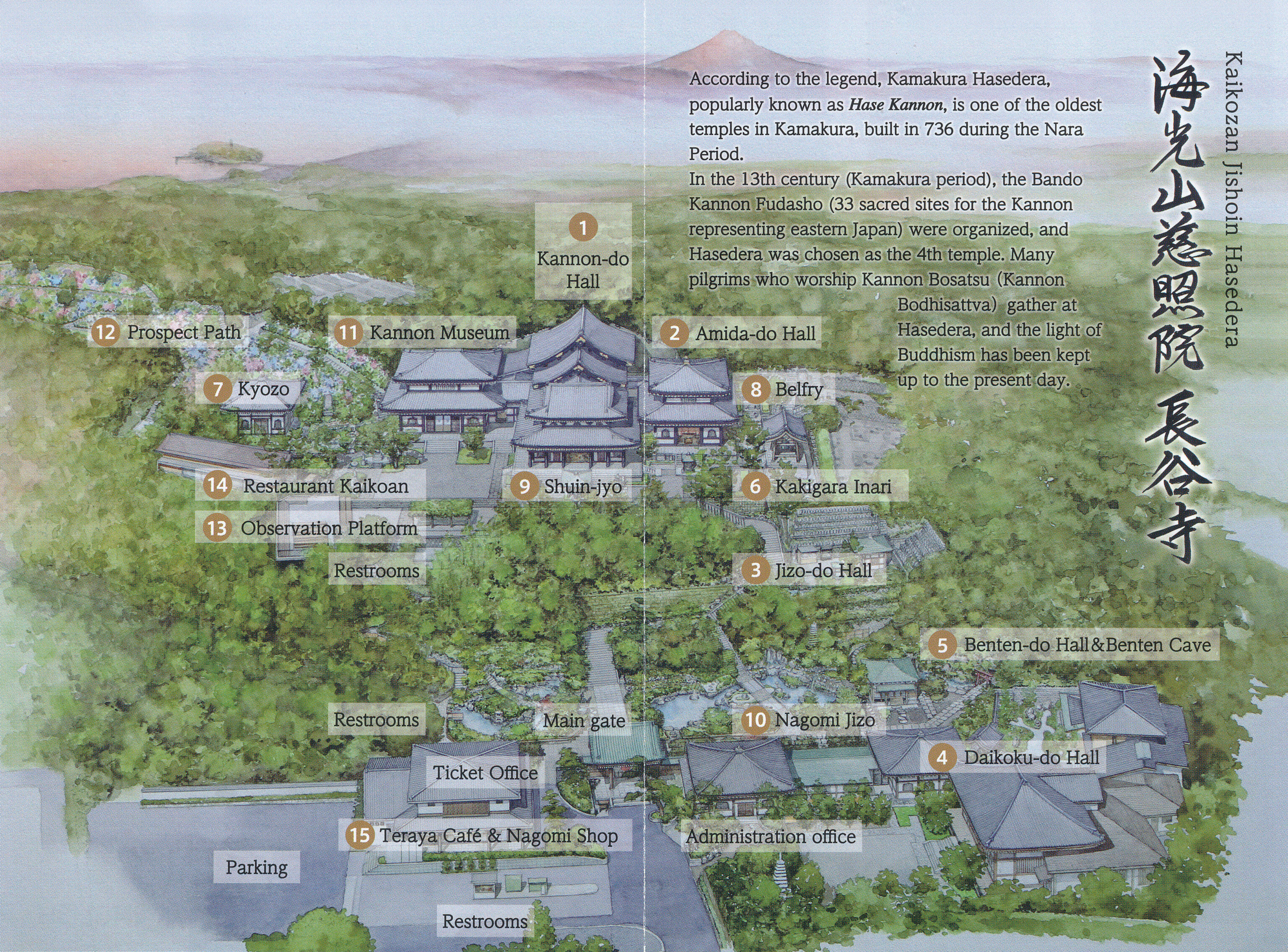
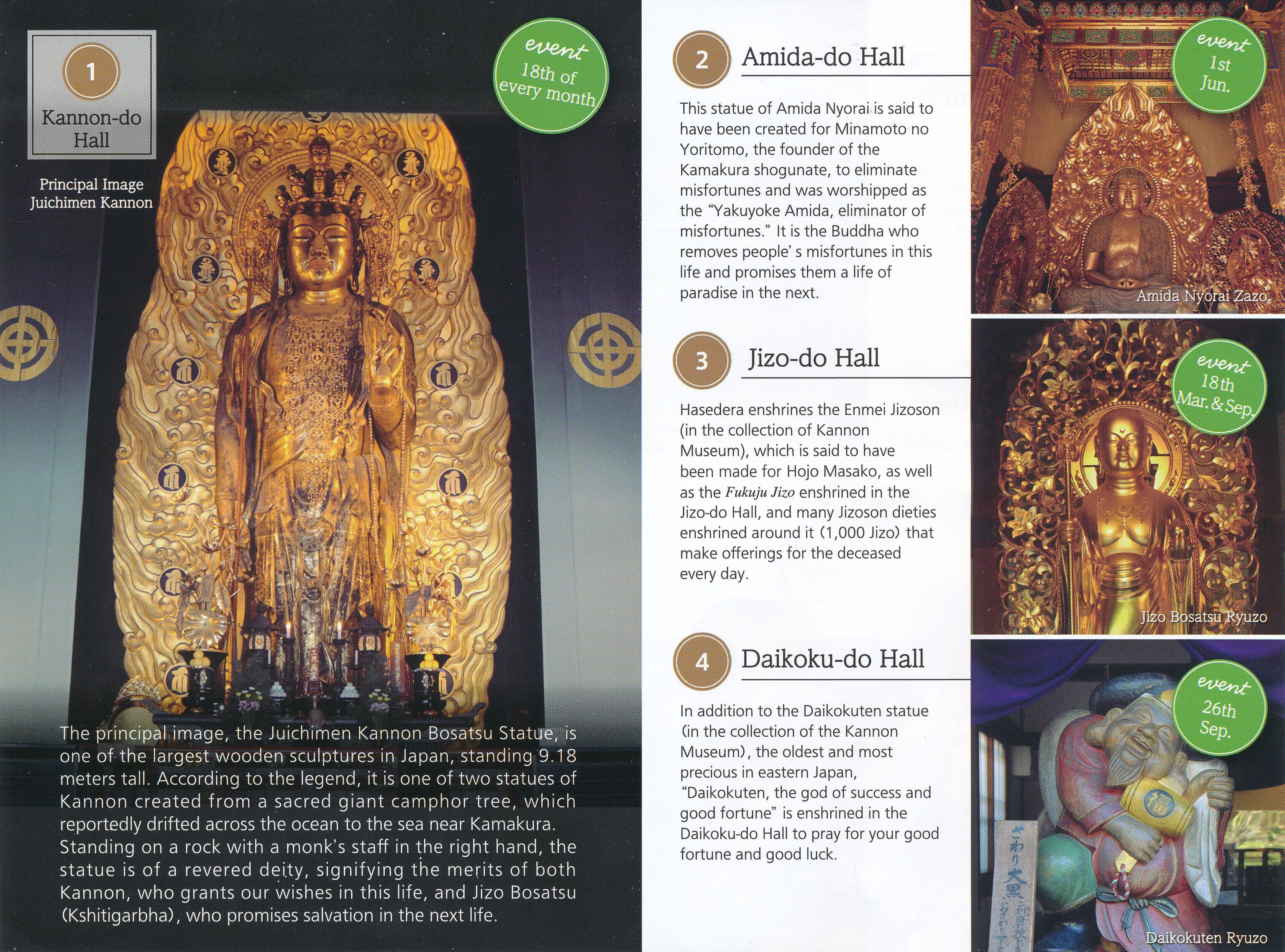
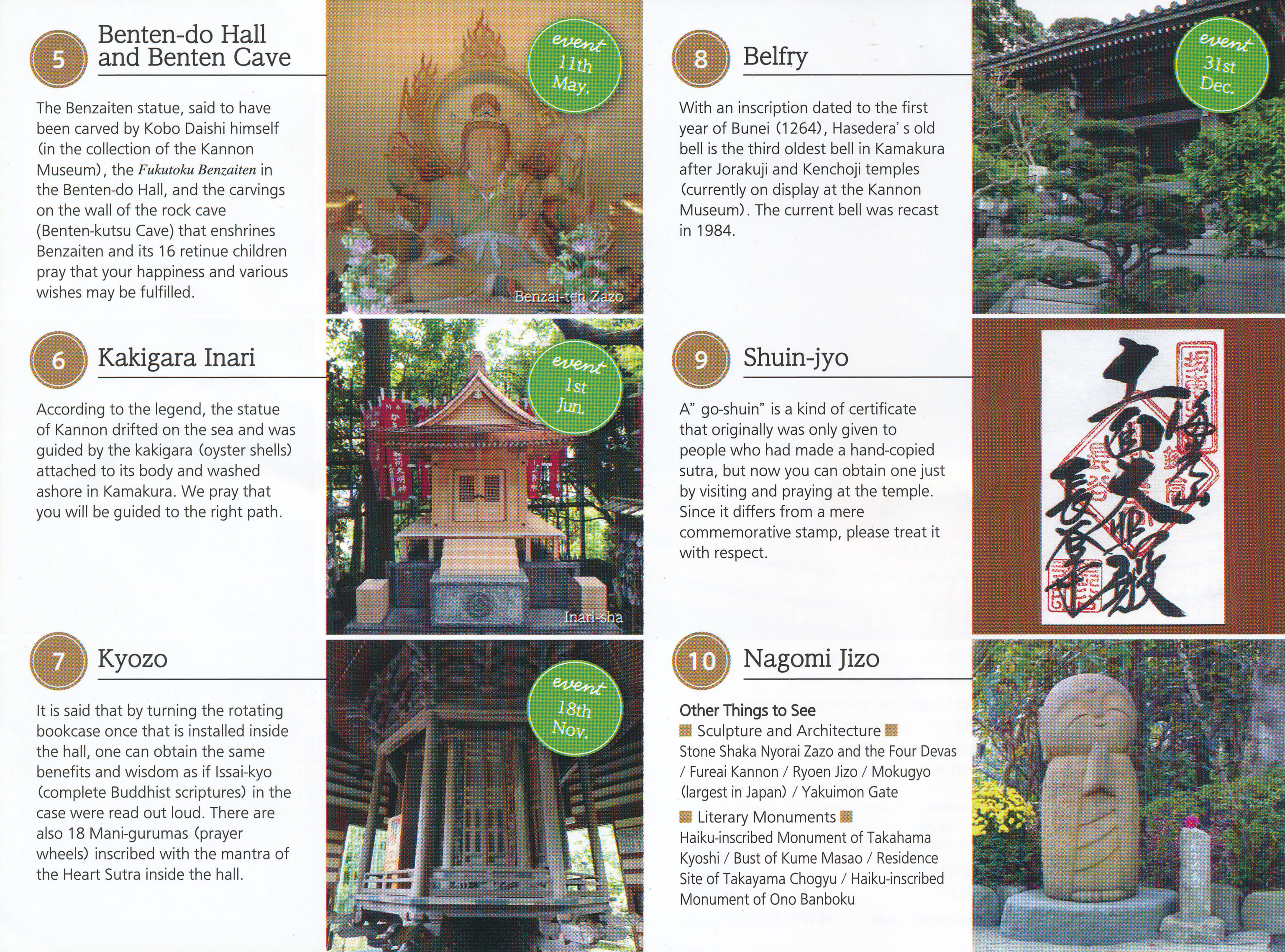
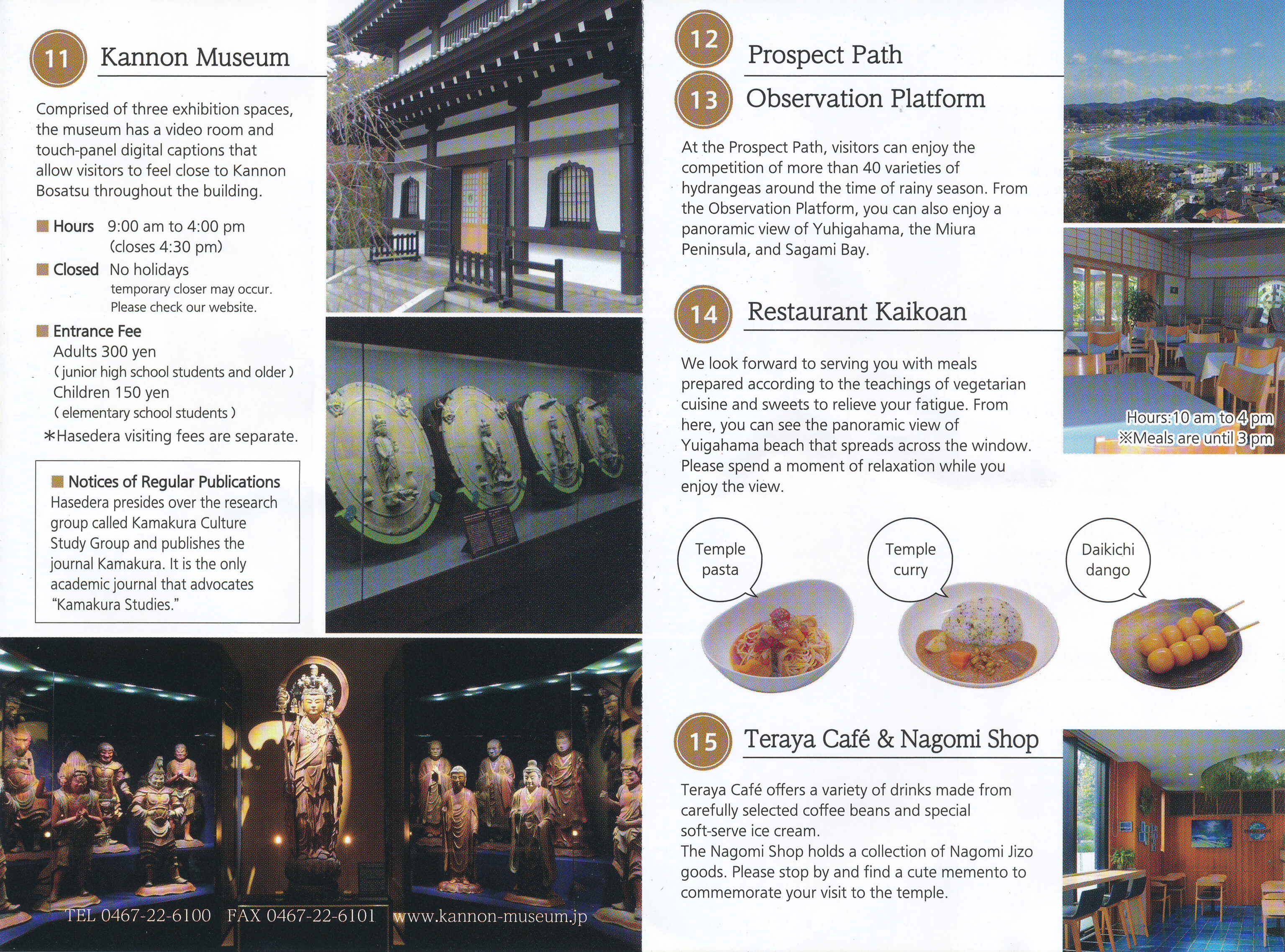
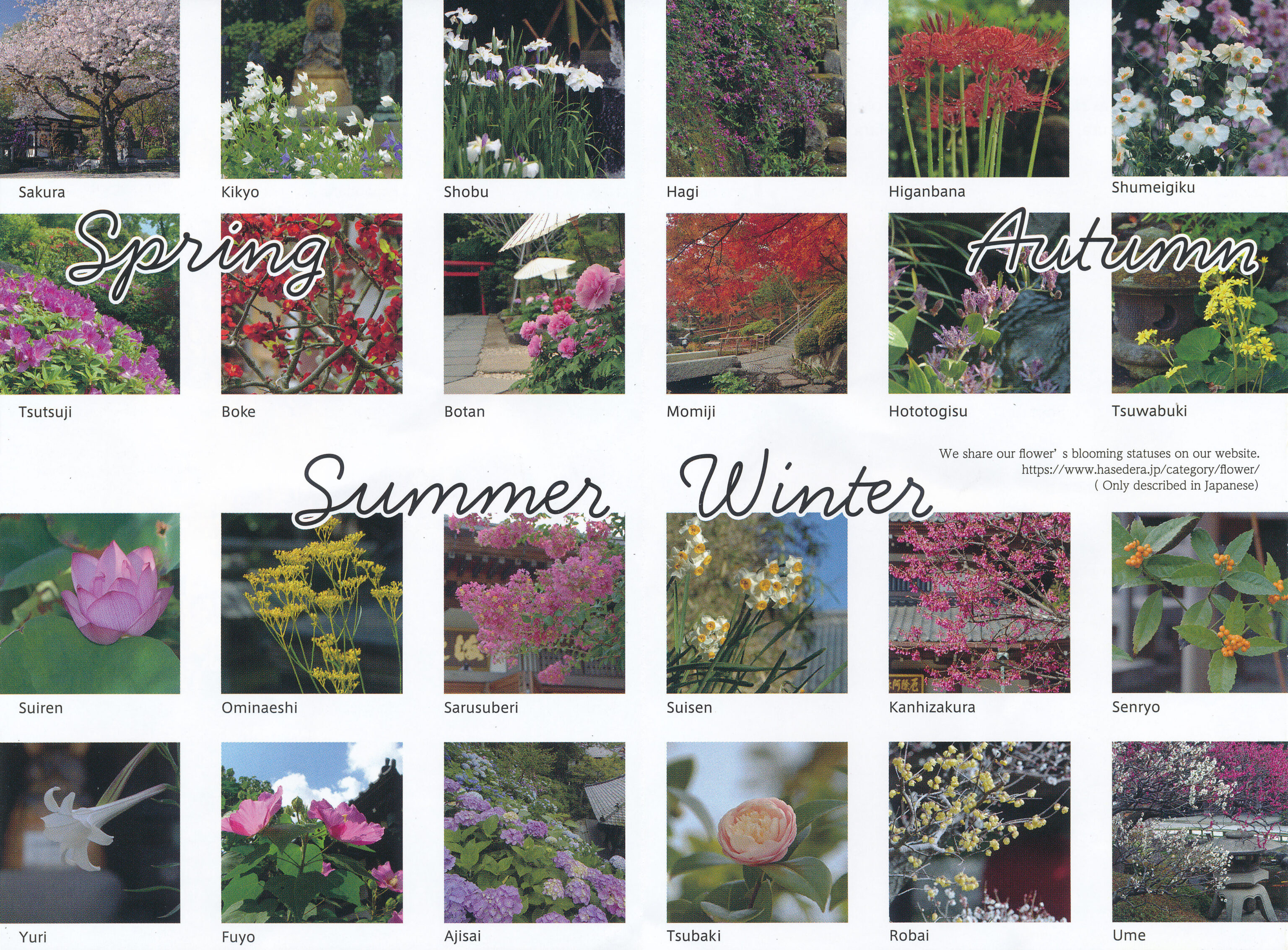
We picked up an informational pamphlet which included a map and descriptions of various points of interest within the temple.
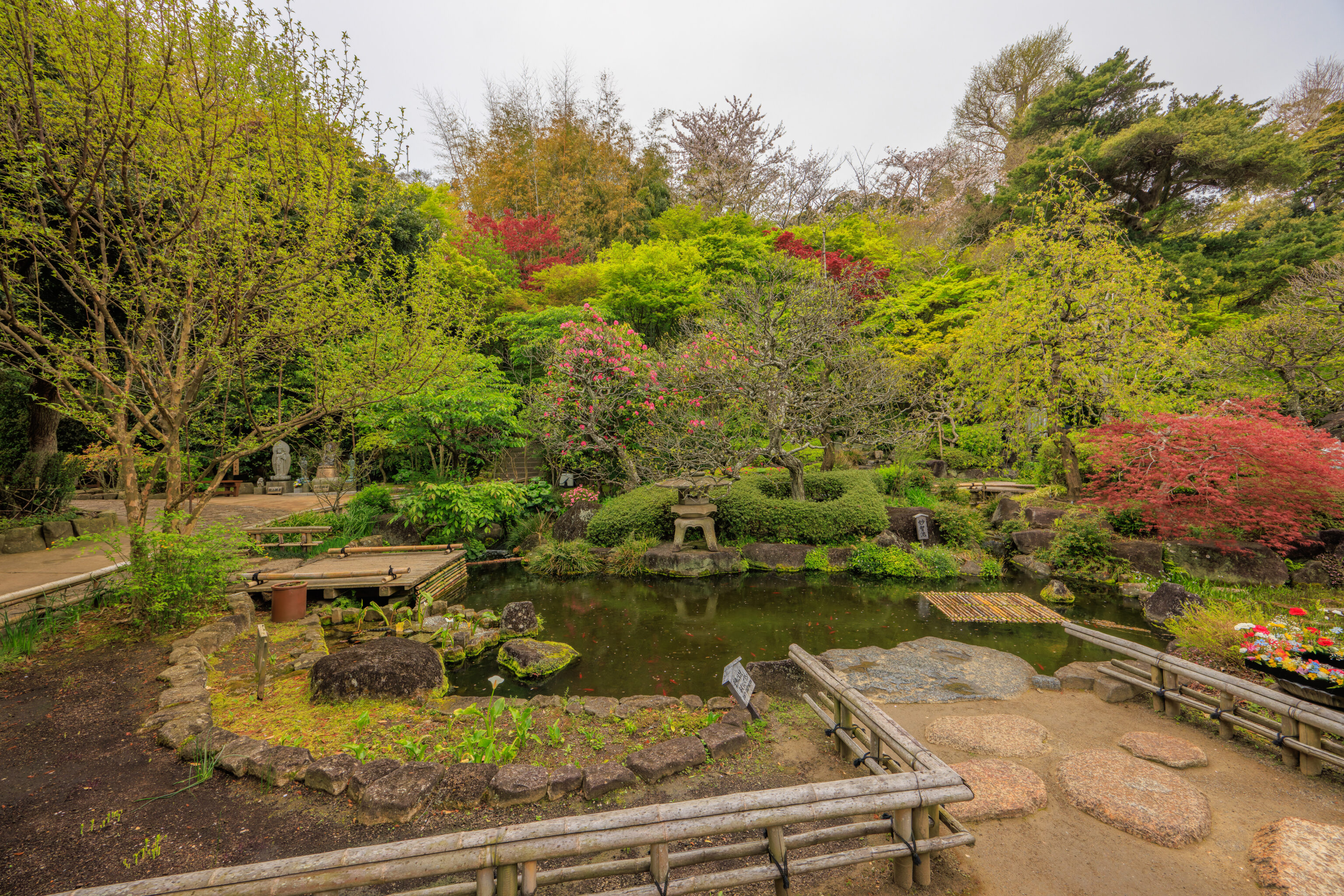
After entering, we started by walking to the left, passing by a small pond.
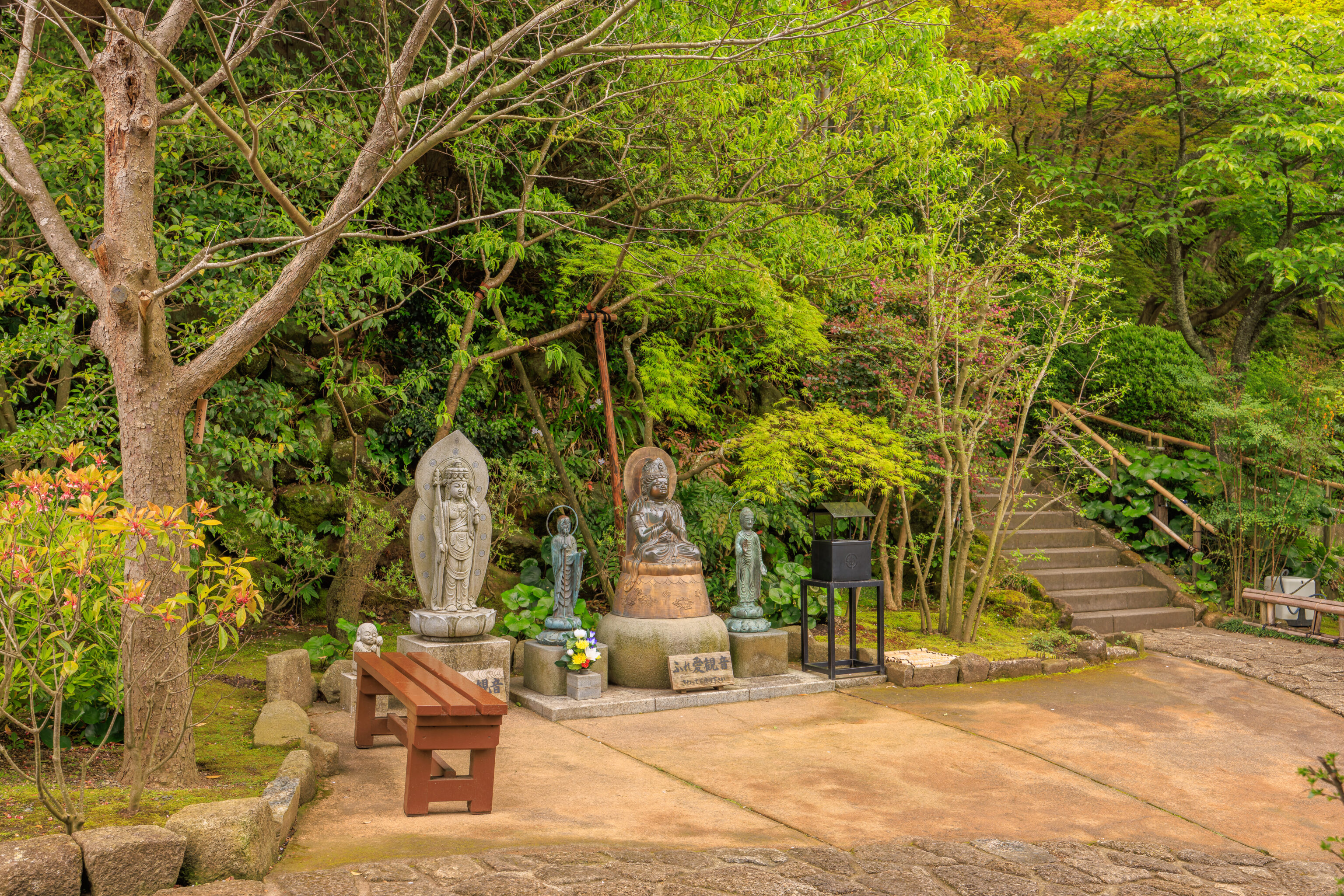
There were a few statues by some stairs.
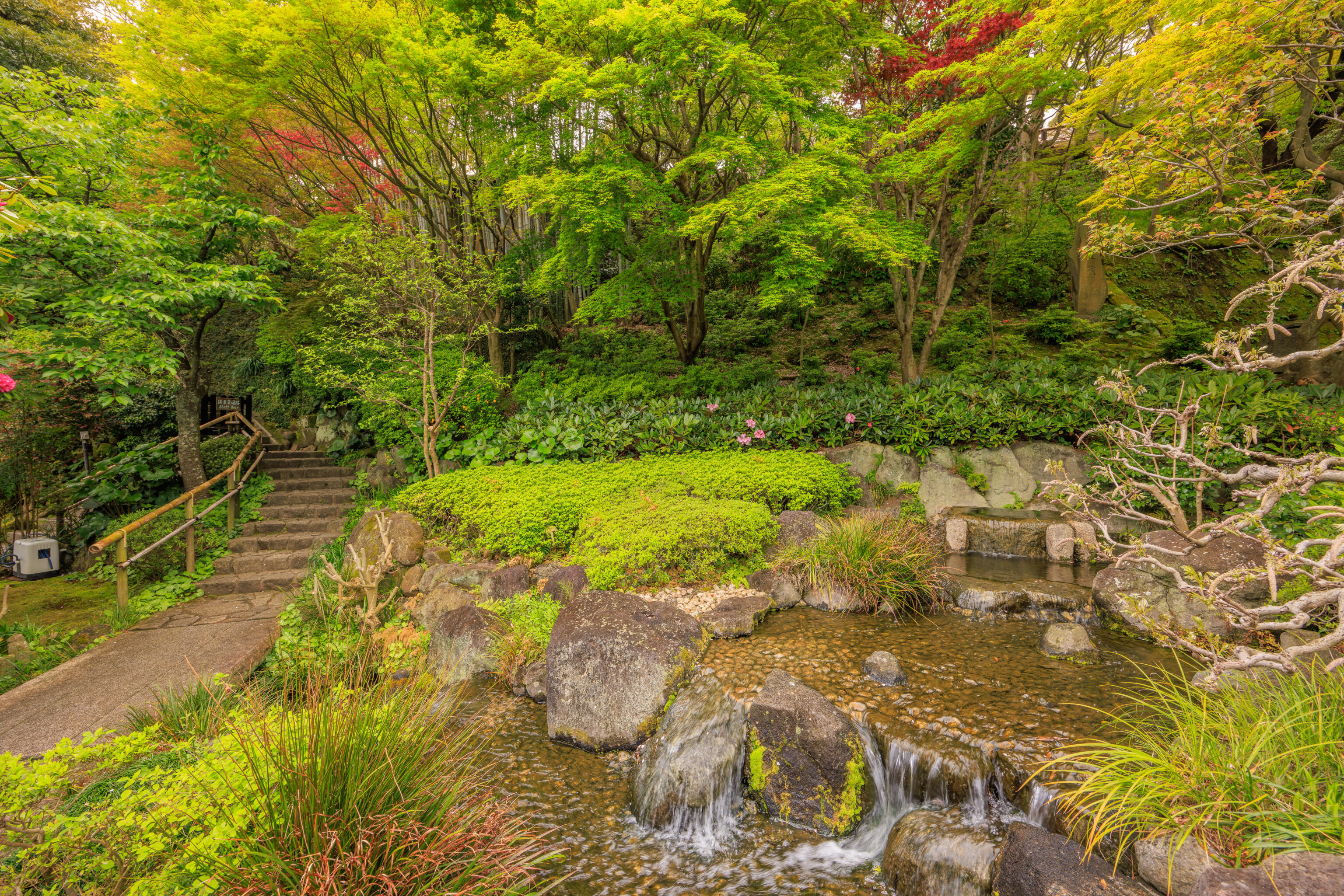
We went up the stairs only to find that they quickly went back down to the edge of the pond. This was view looking back at the stairs from the pond. The stairs actually do go somewhere, but it is a path for staff only.
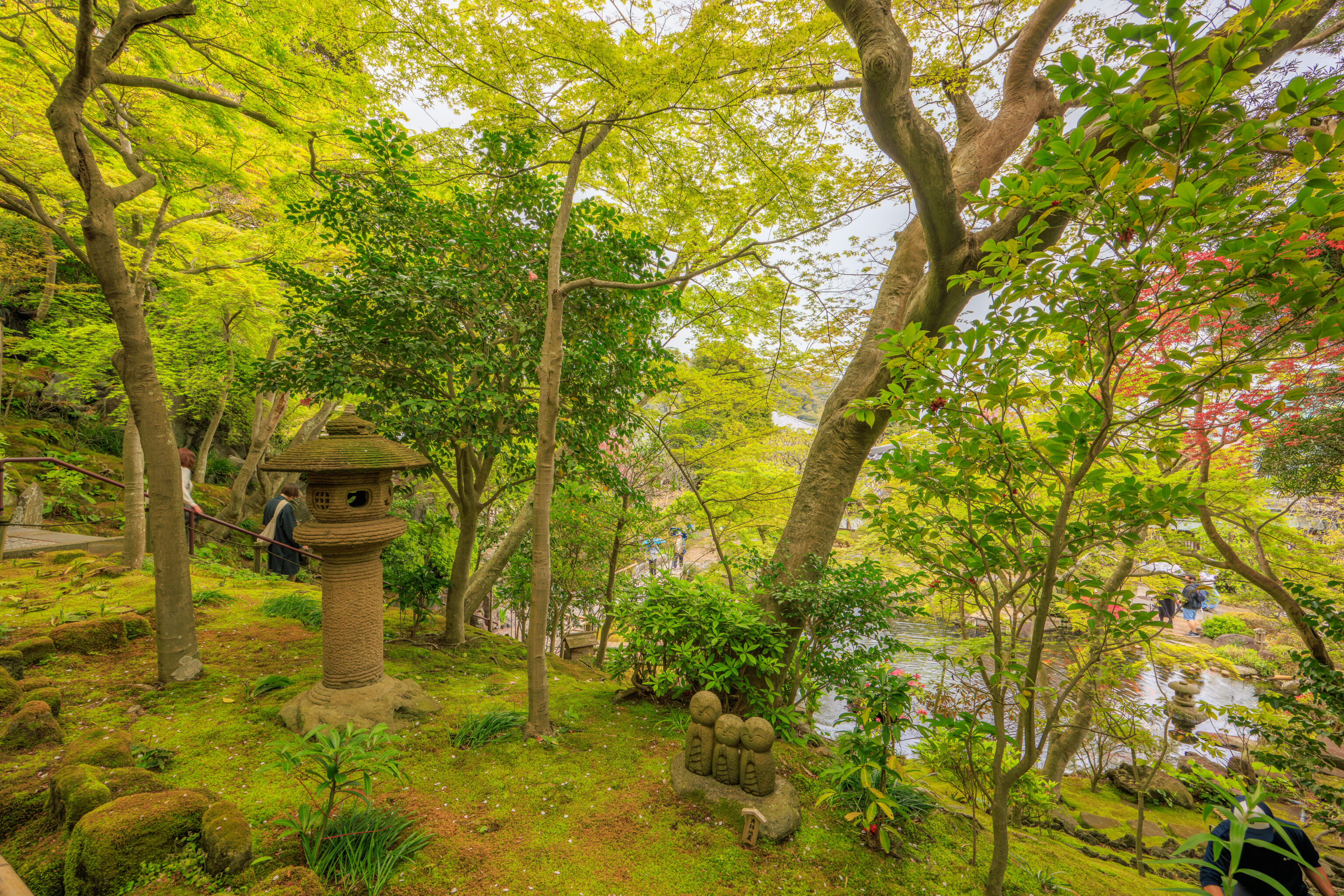
We followed another path which went up the hill a bit behind the temple’s ponds.
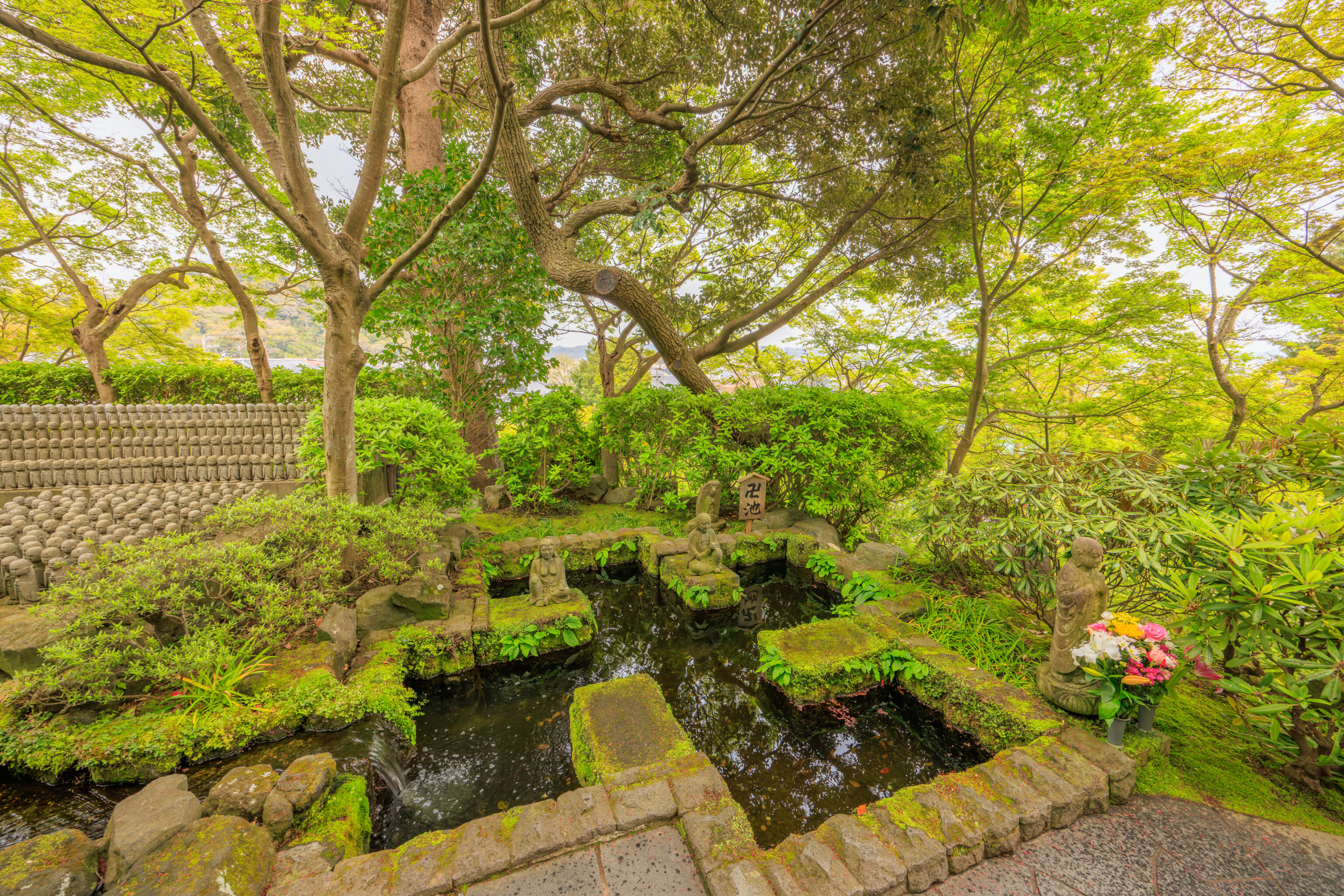
We walked by a small pond in the shape of a sauvastika, the opposite facing symbol to the swastika, which was used by the Nazis. Both are Buddhist symbols and also used in other religions.
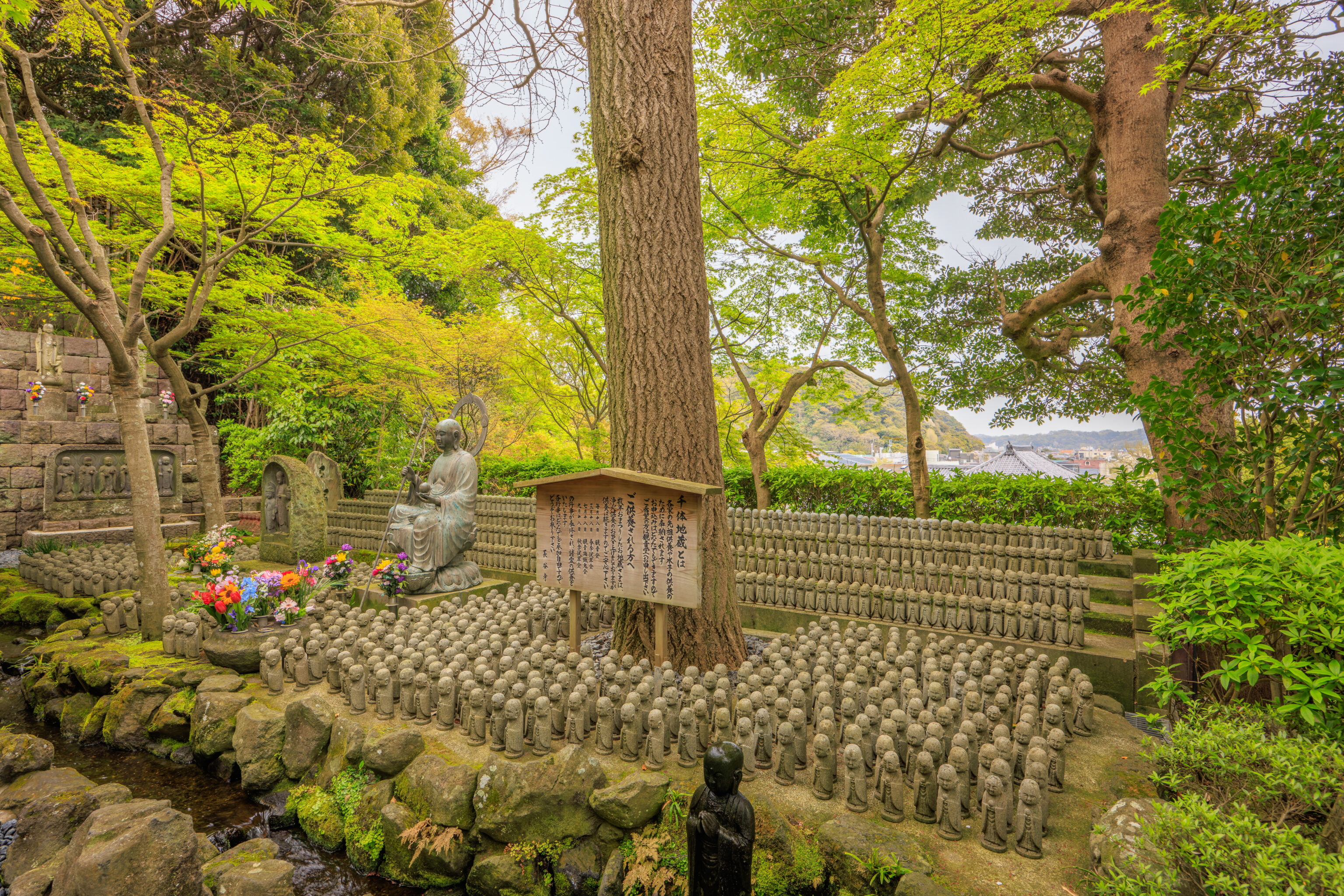
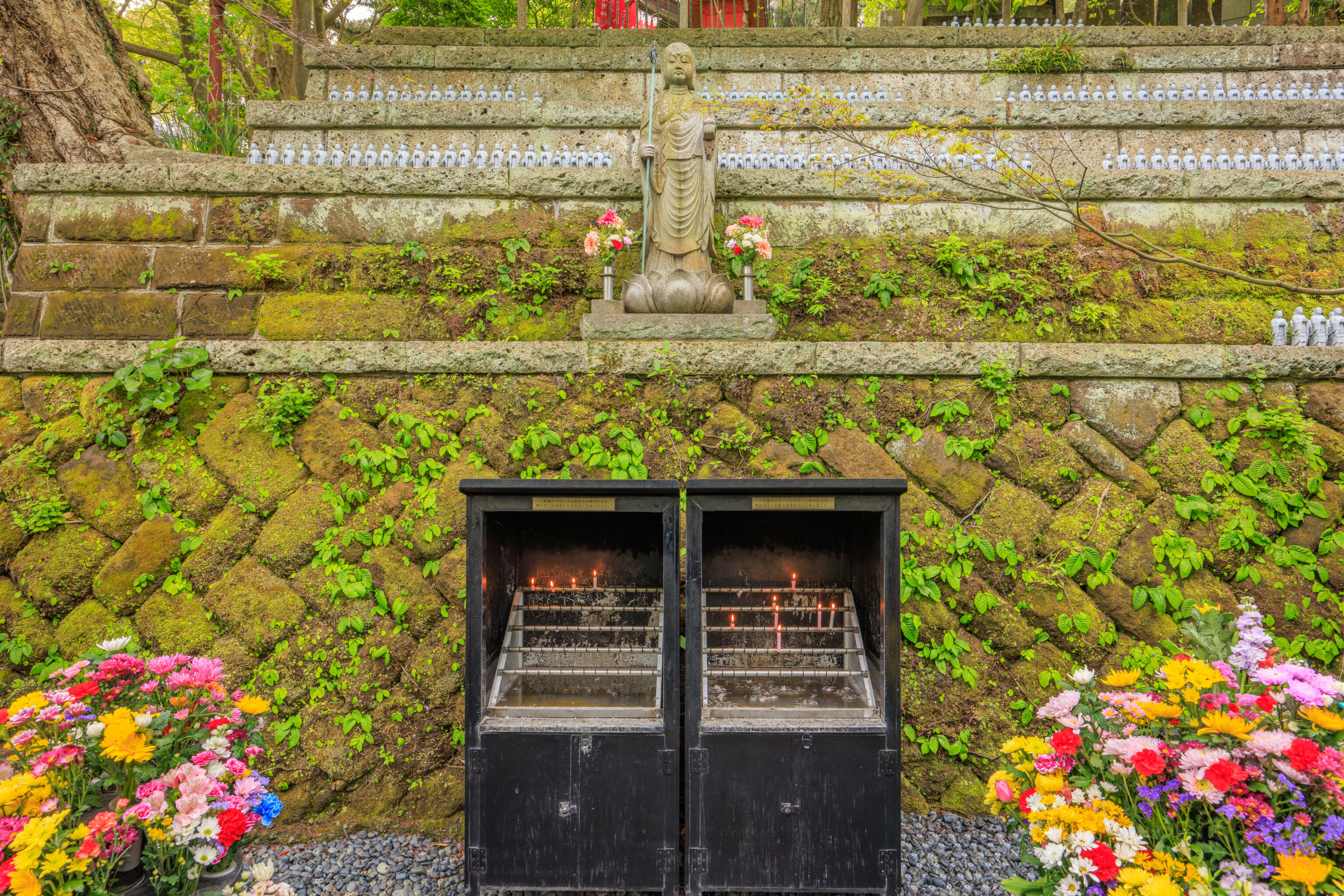
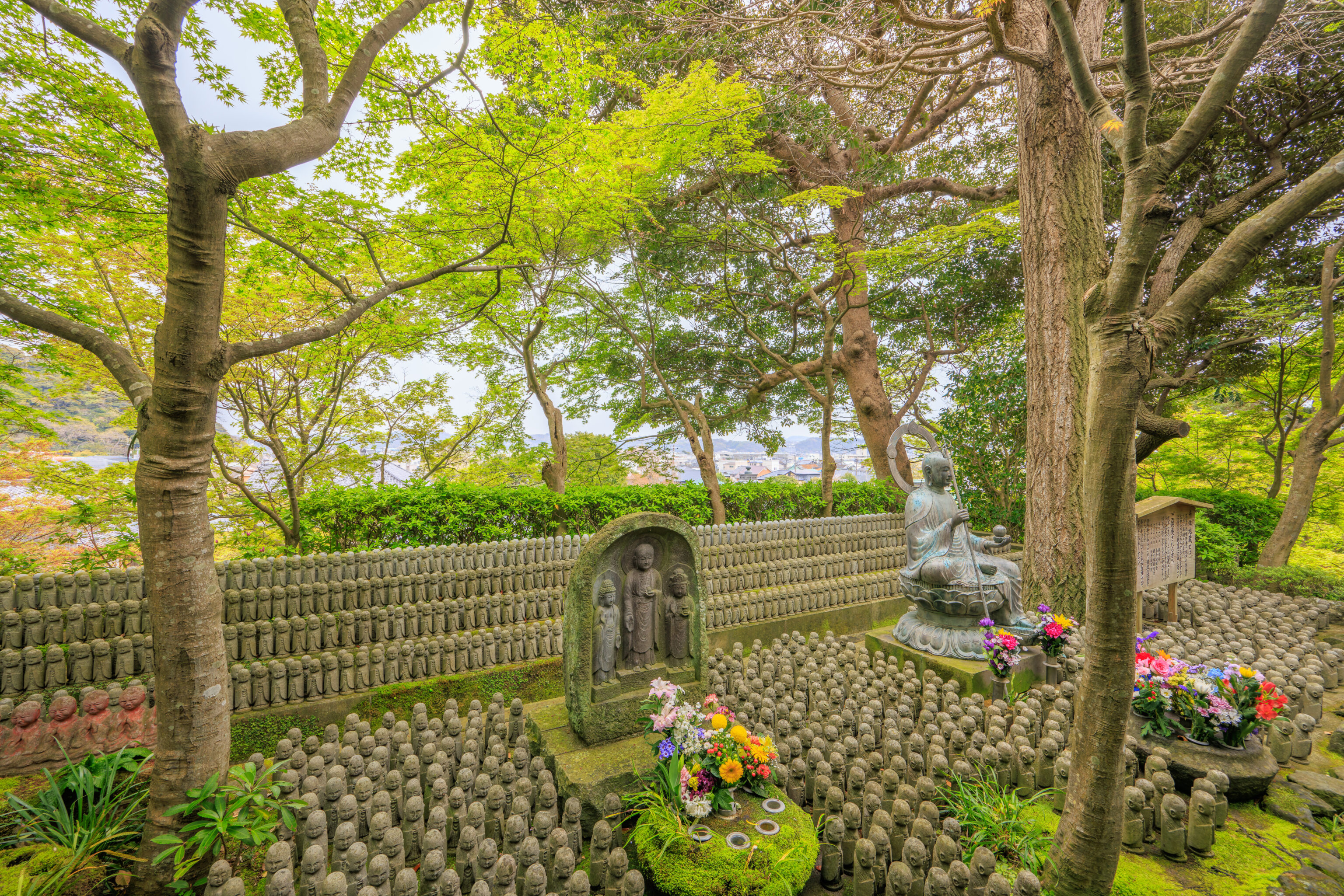
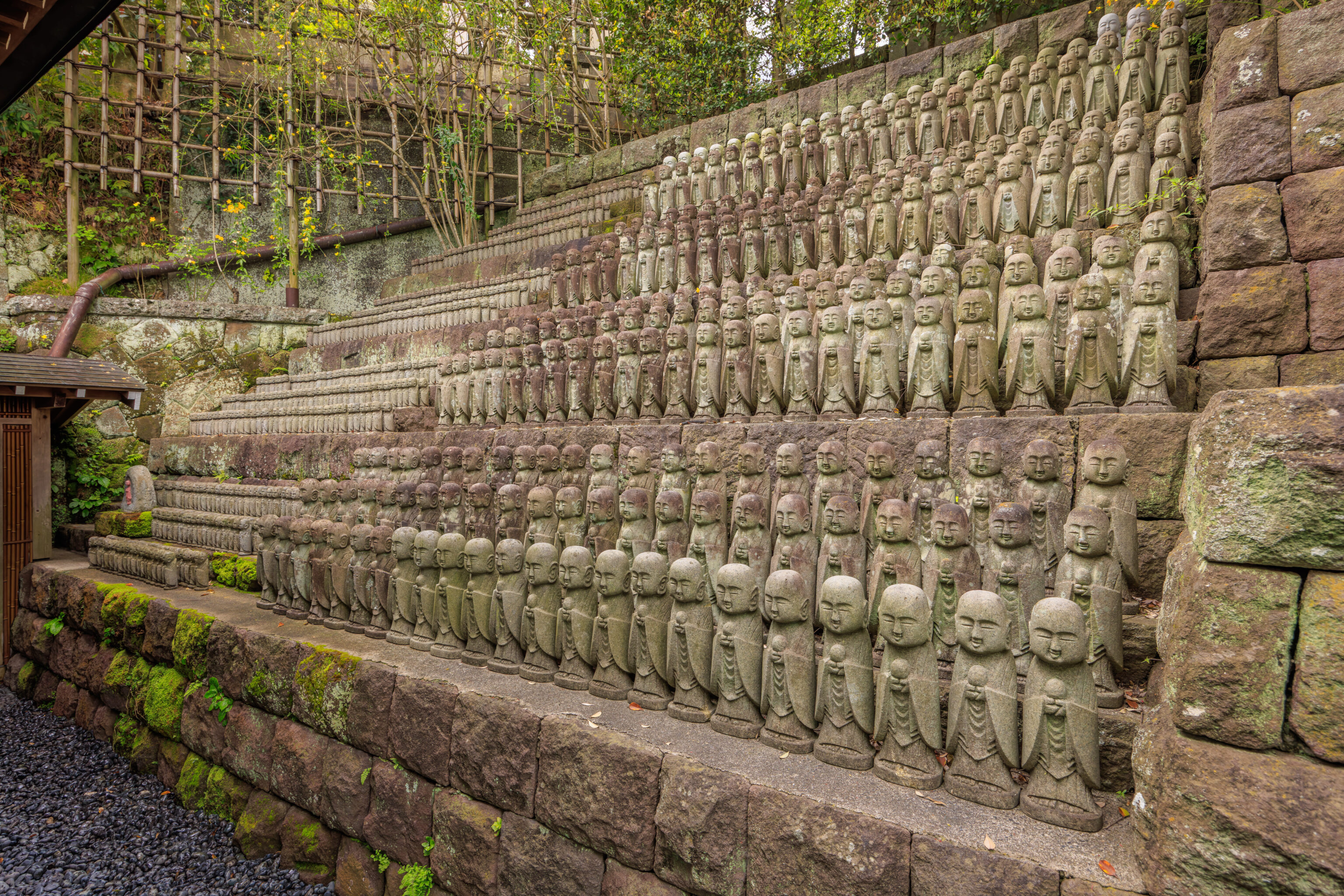
We continued on, ending up by the Jizo-do Hall. There are so many Jizo here!
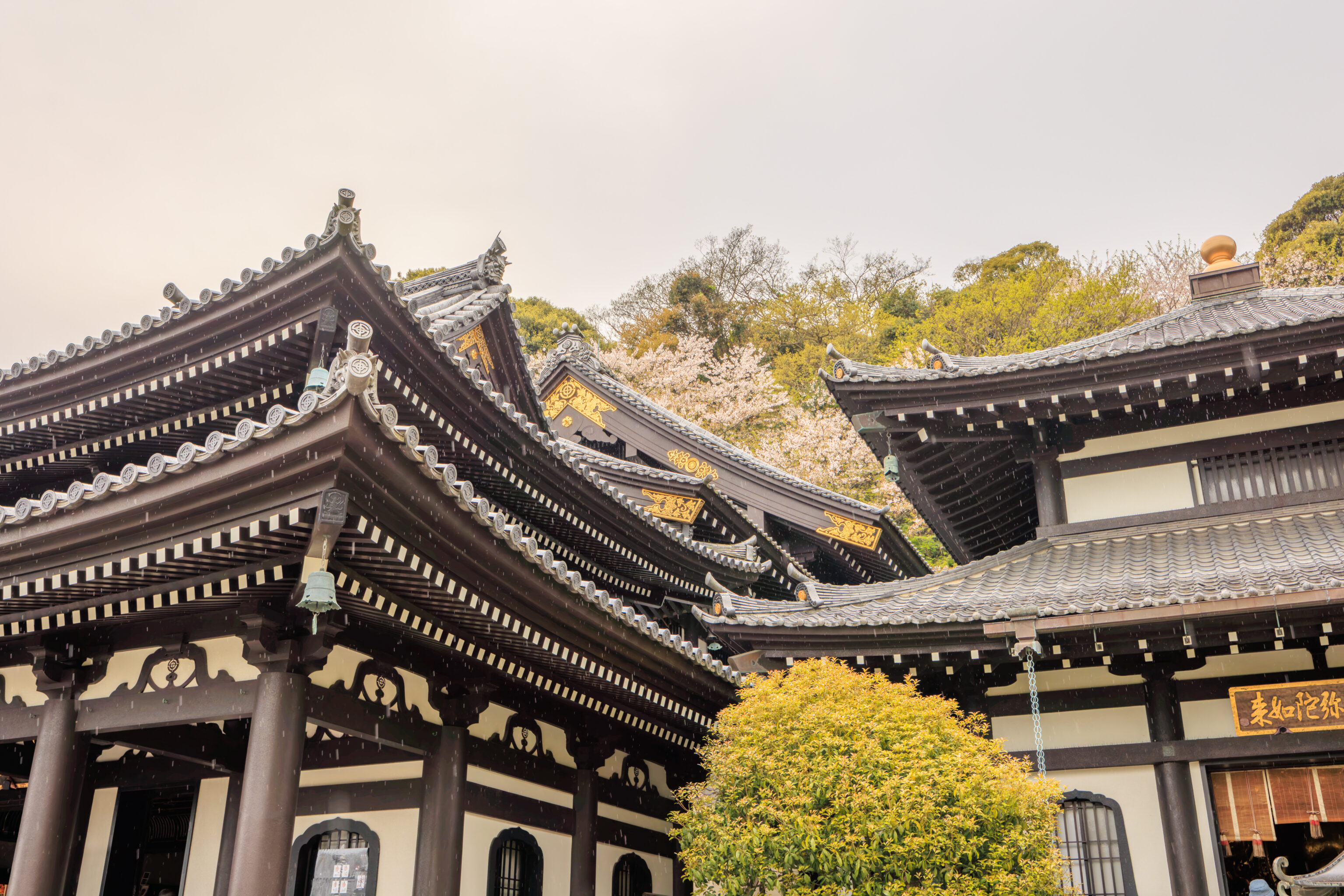
We continued on, walking by the Kannon-do, the main hall of the temple.
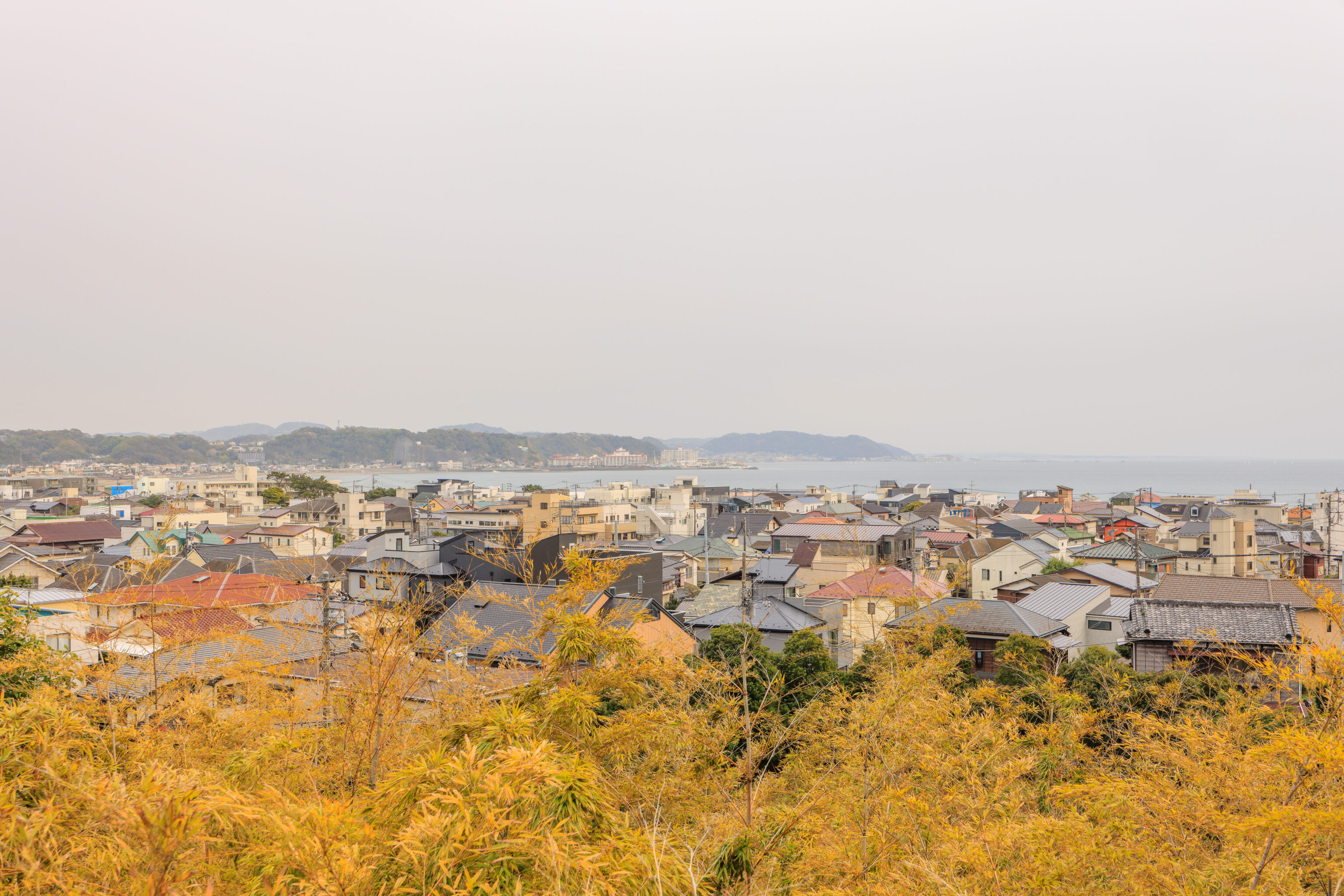
We ended up at the observation platform at the southern end of the temple. This platform overlooks the town below and Sagami Bay, which opens out into the Pacific Ocean.
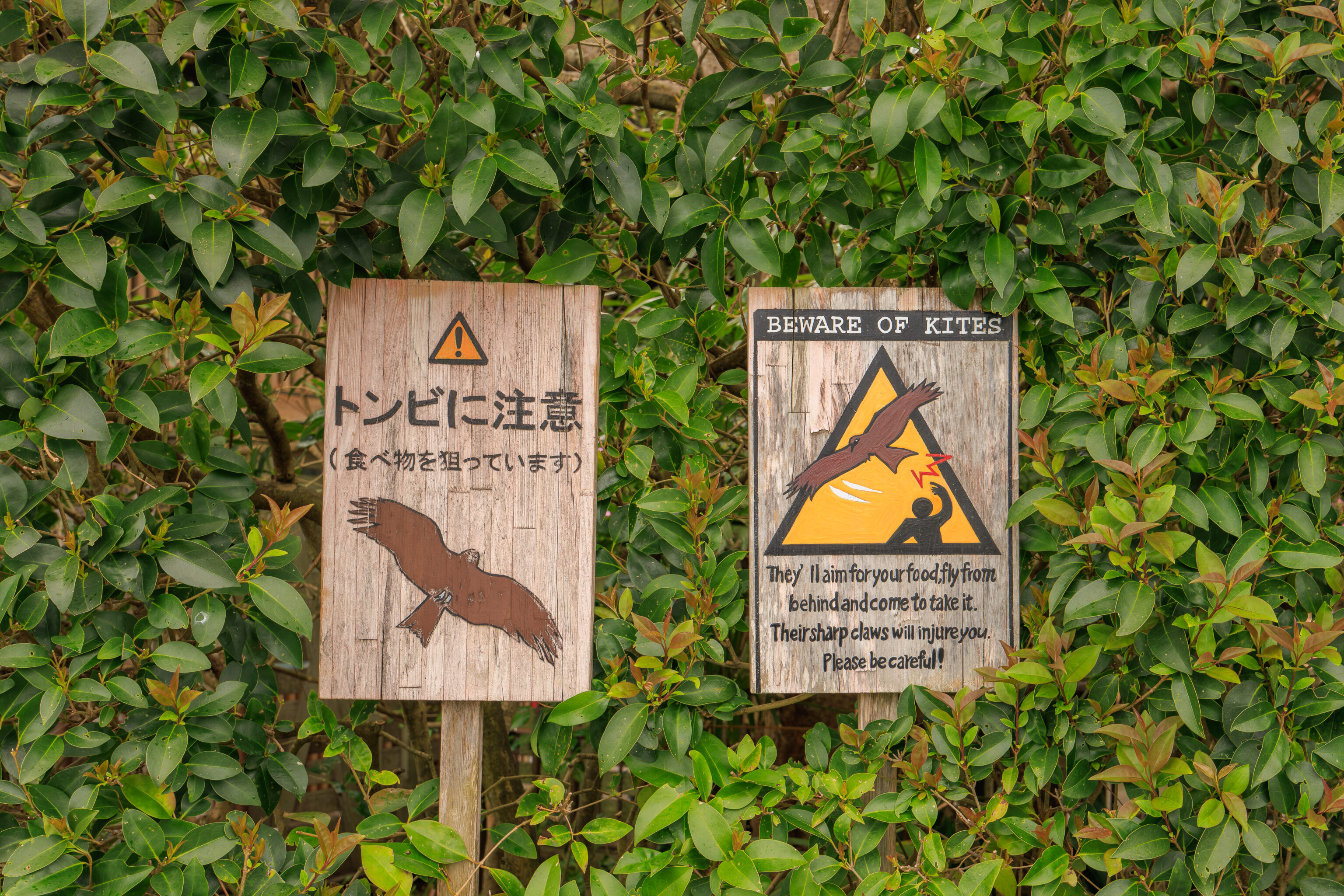
We noticed this sign warning about kites. The specific species these two signs refer to is the Black Kite, a bird of prey species similar to a hawk.
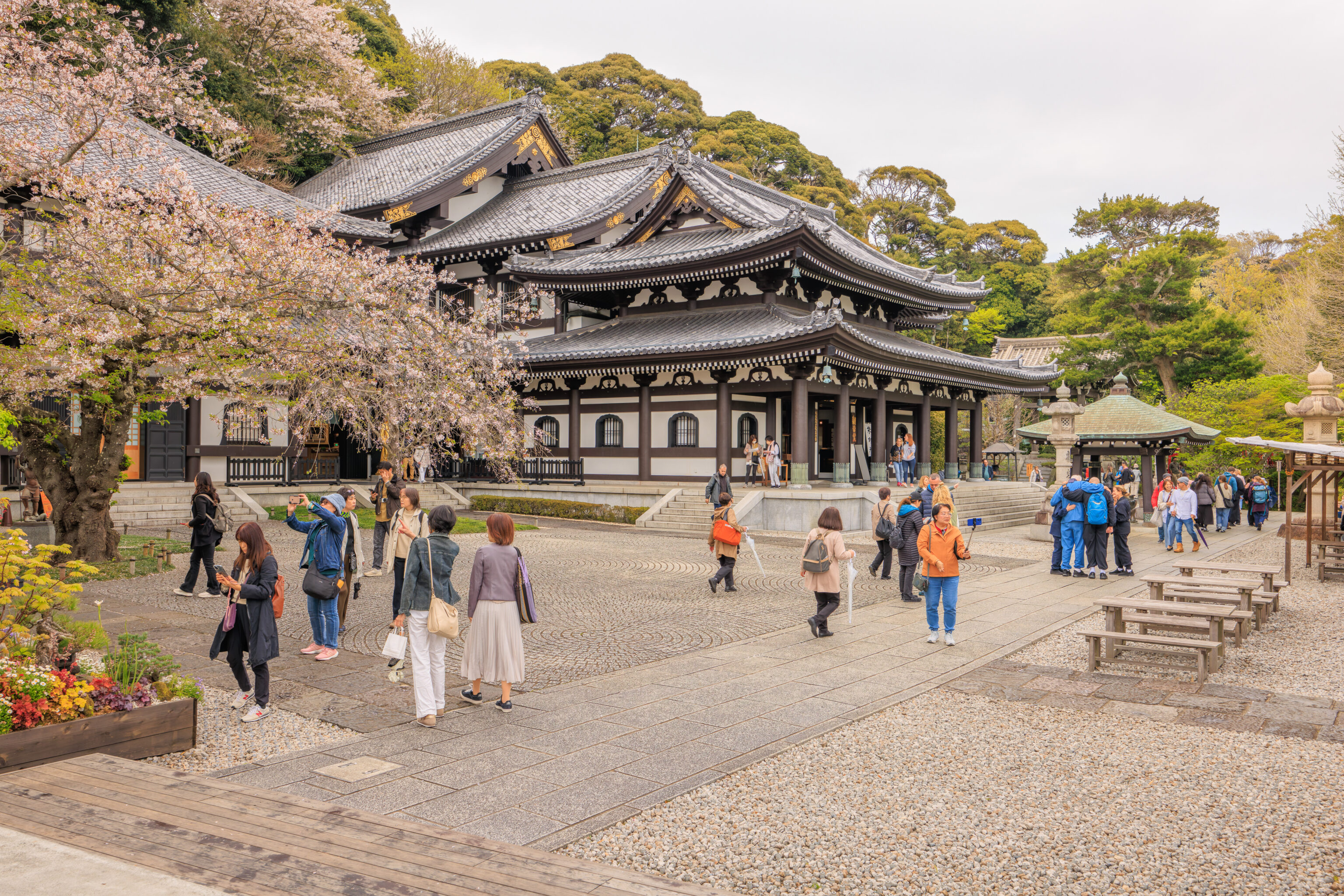
The Kannon-do, as seen from the edge of the observation platform.
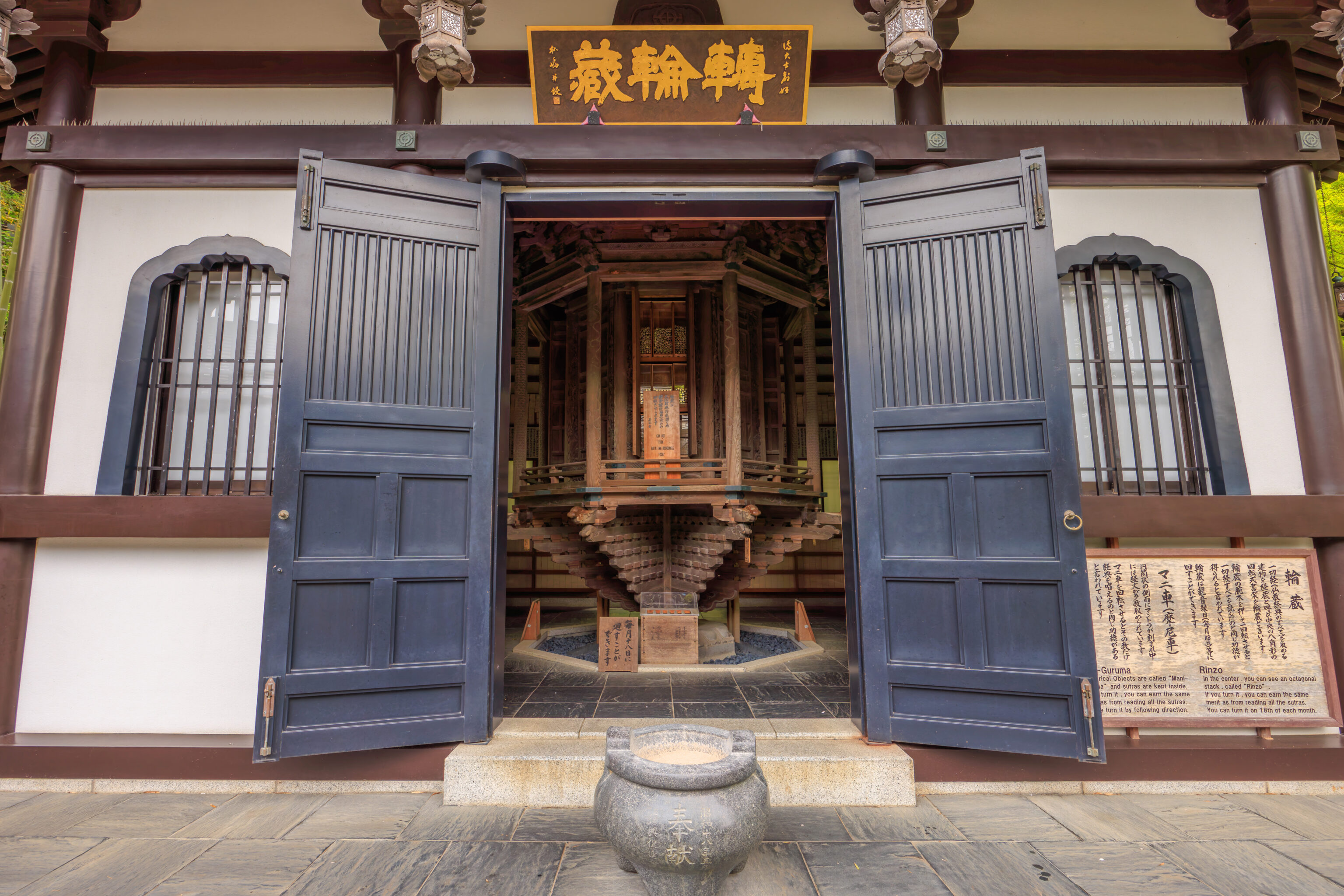
We walked past this temple building, the Kyozo.
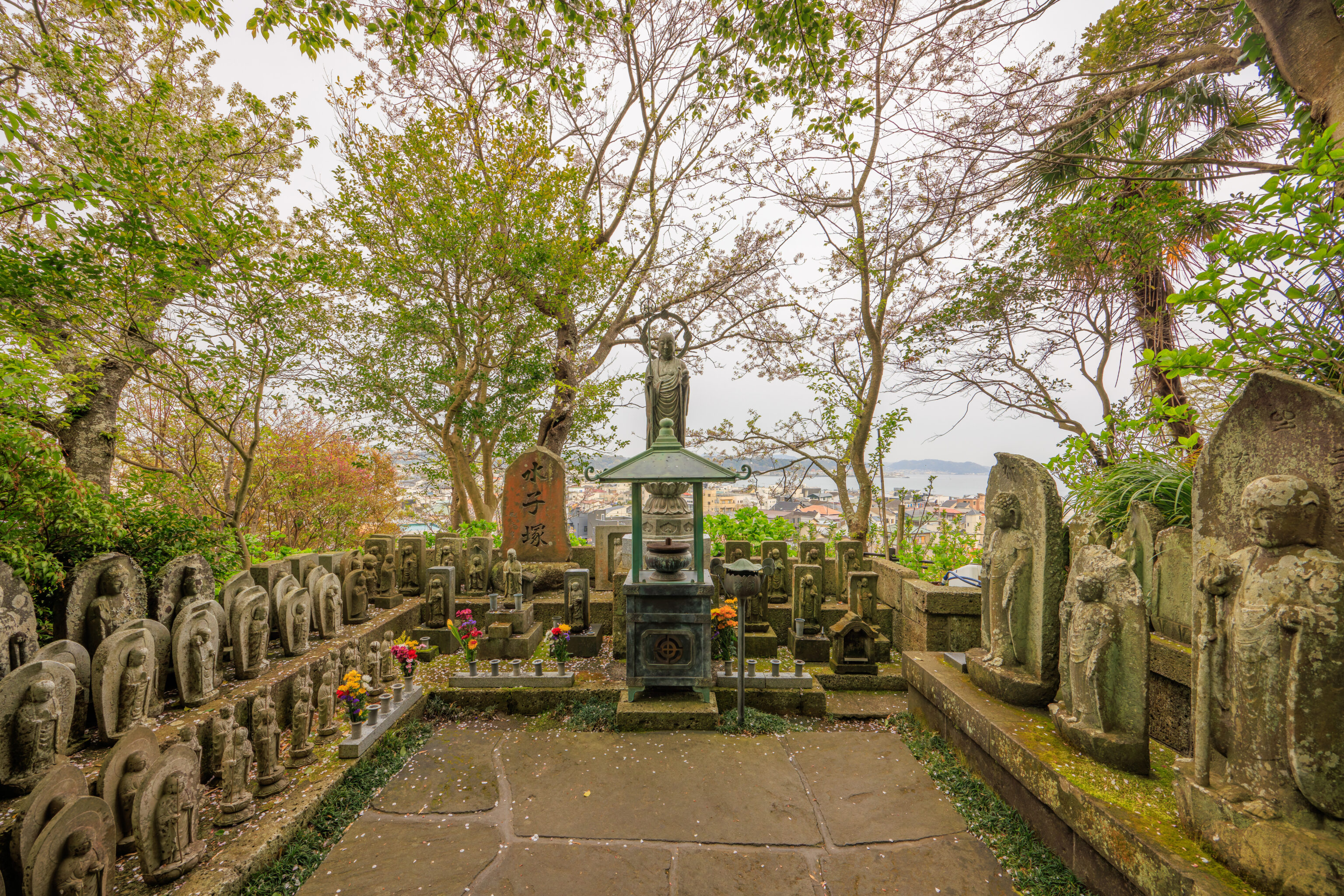
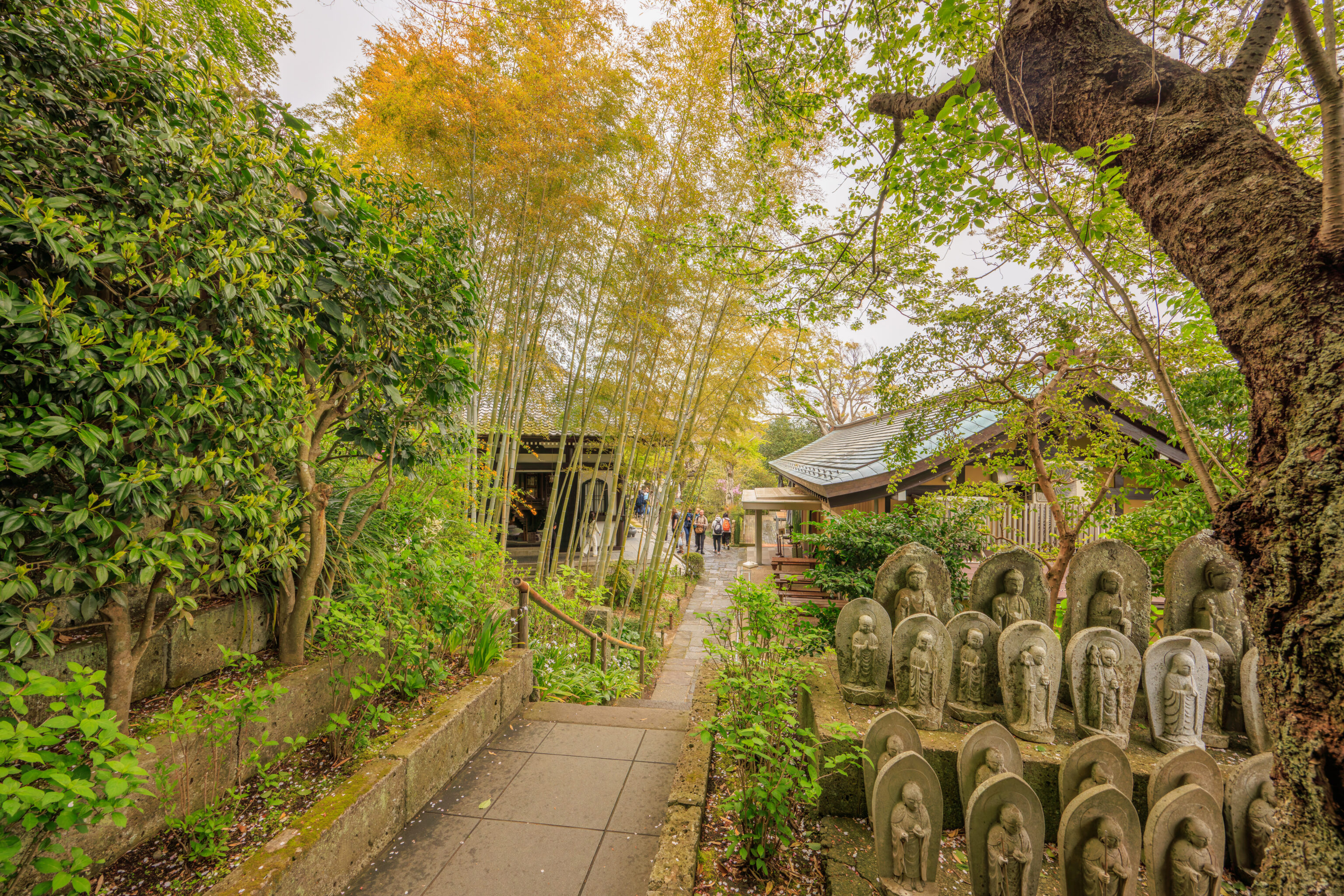
We continued on to the prospect path. This path ascends up the hill above the observation platform.
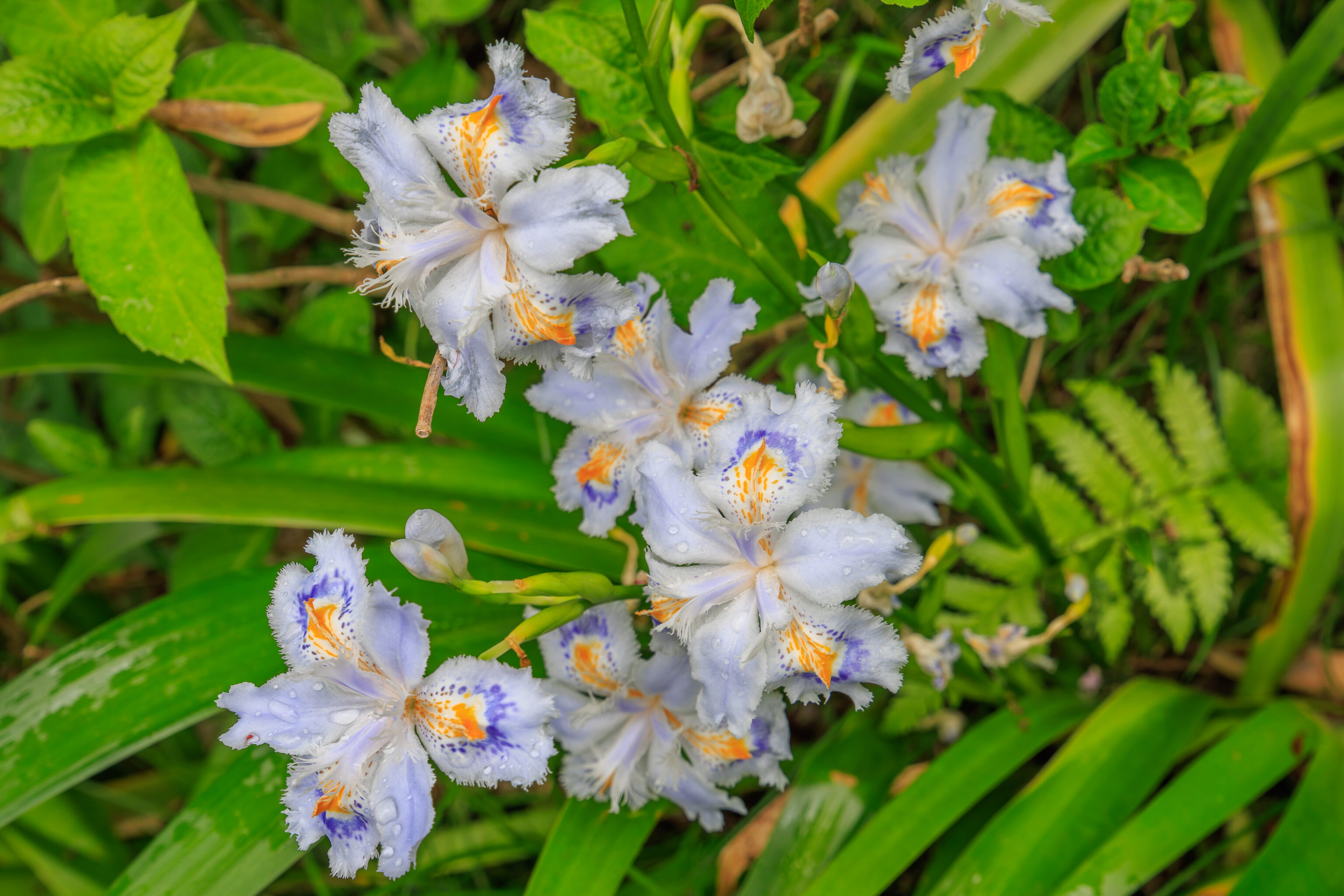
There were quite a few Iris Japonica in bloom! The path is known for having 40 different species of hydrangeas, though they did not seem to be in bloom during our visit.
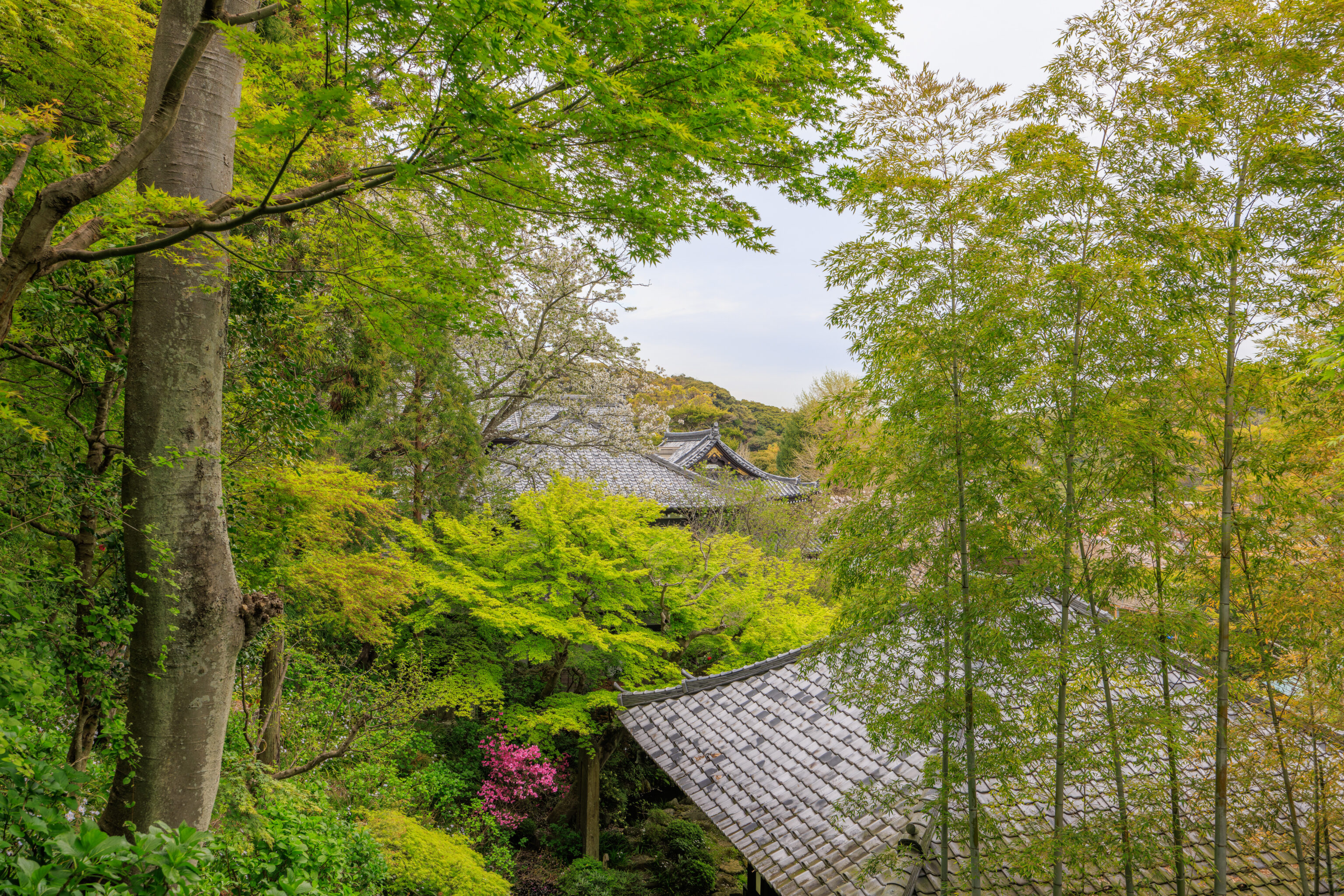
We were now above some of the temple buildings.
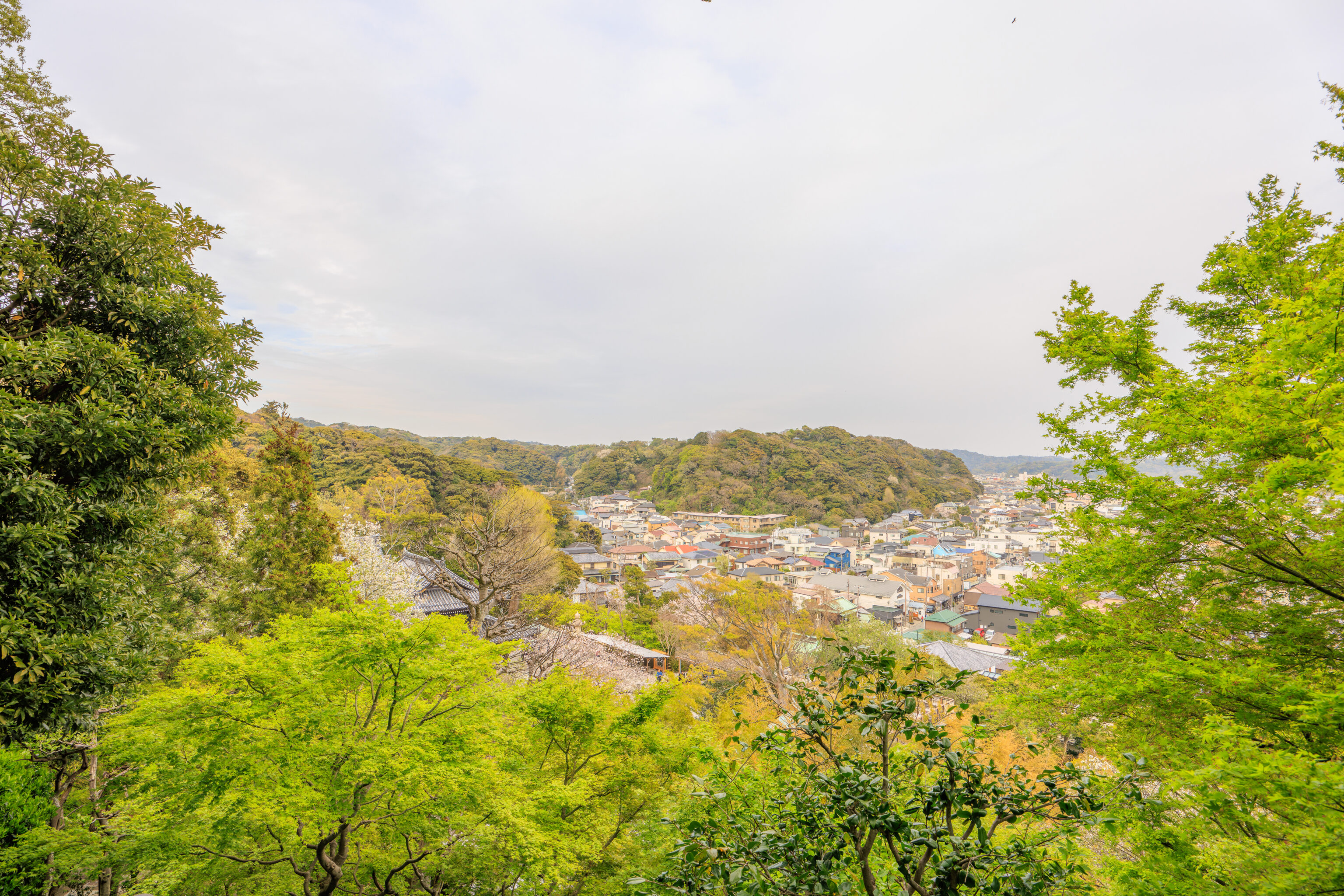
The path continued to go higher.
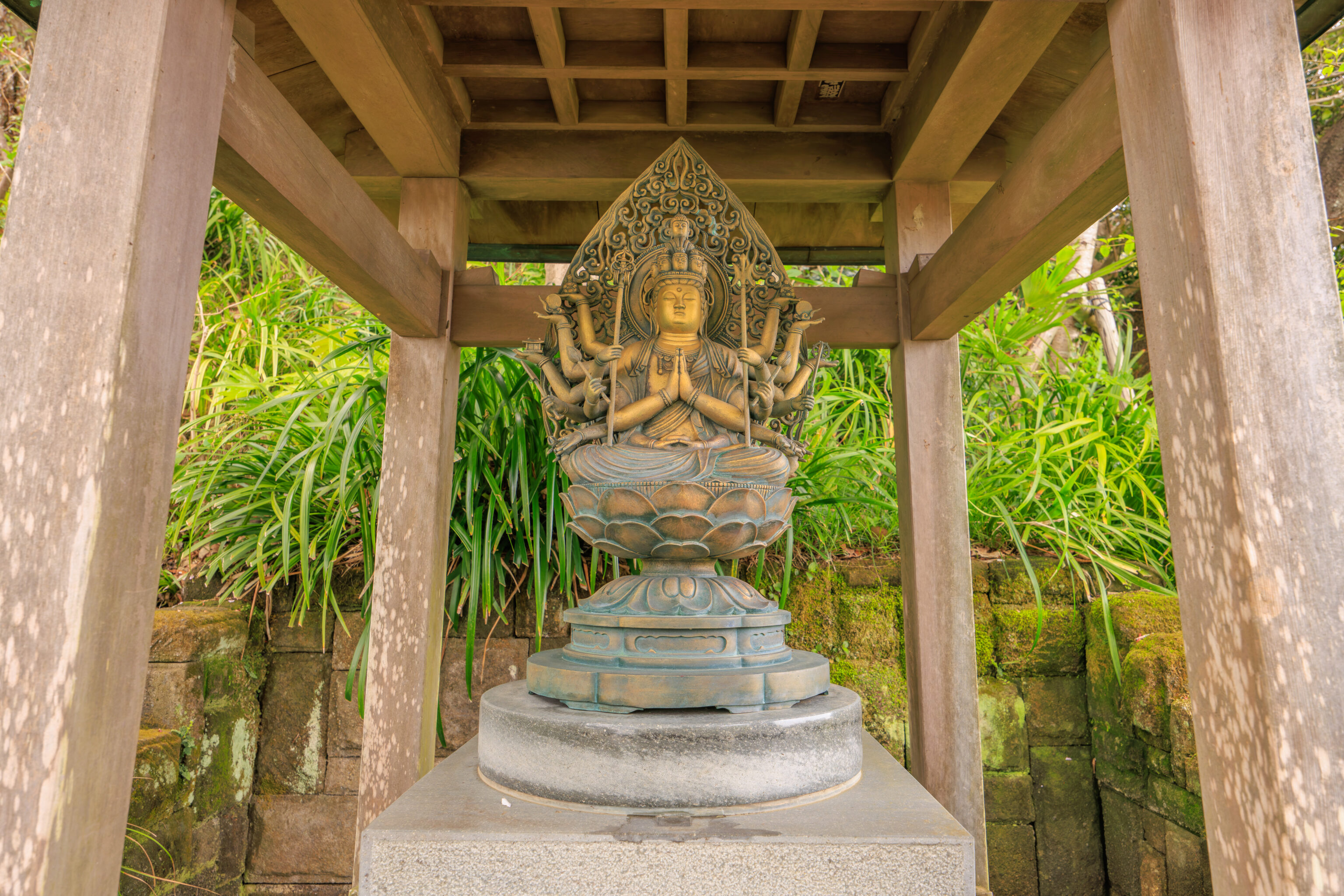
We walked past this small sheltered statue.
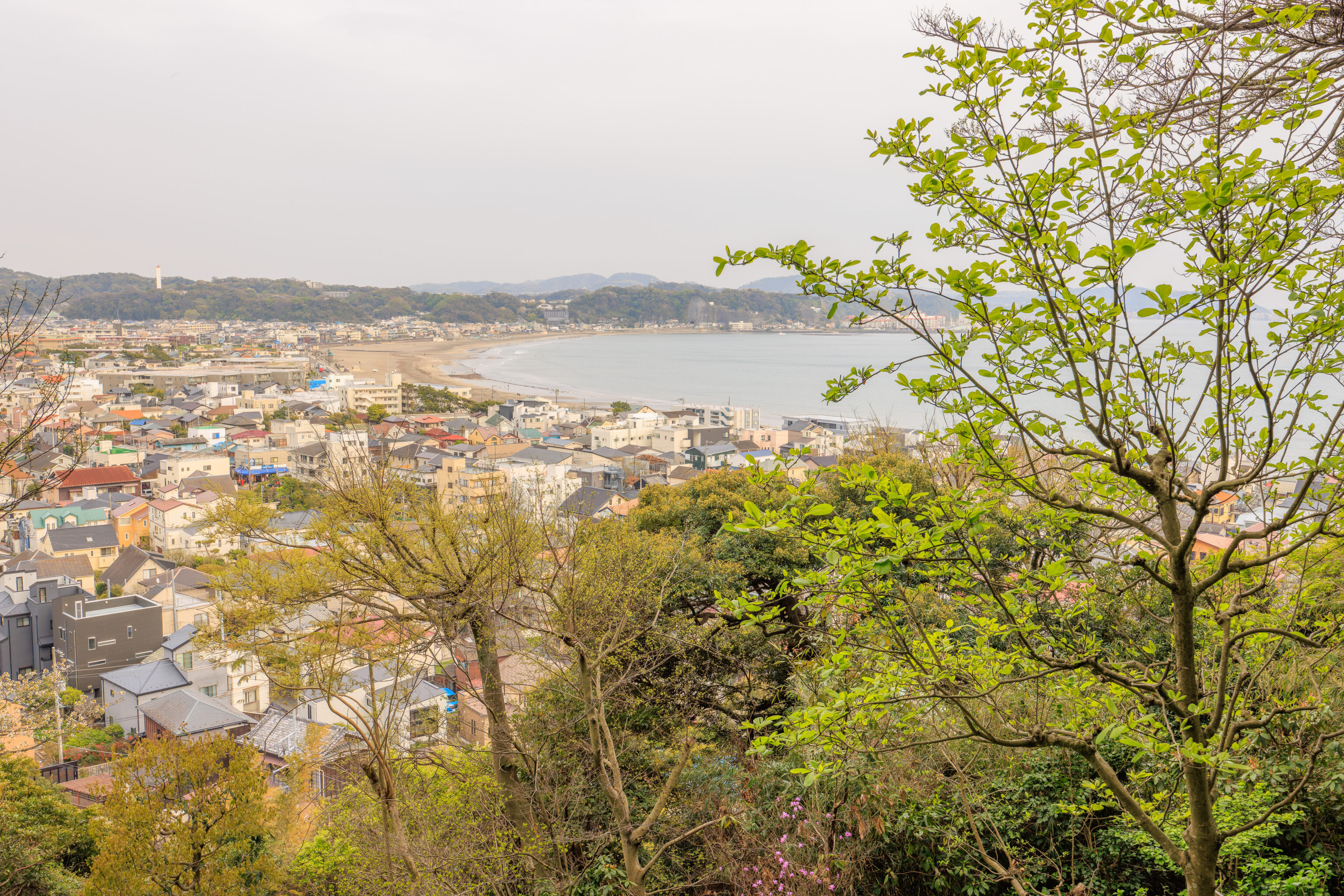
Soon, we reached the highest point on the path. From here, we could see the bay once again. From this higher perspective compared to the observation platform, we can see some of the beach by the bay.
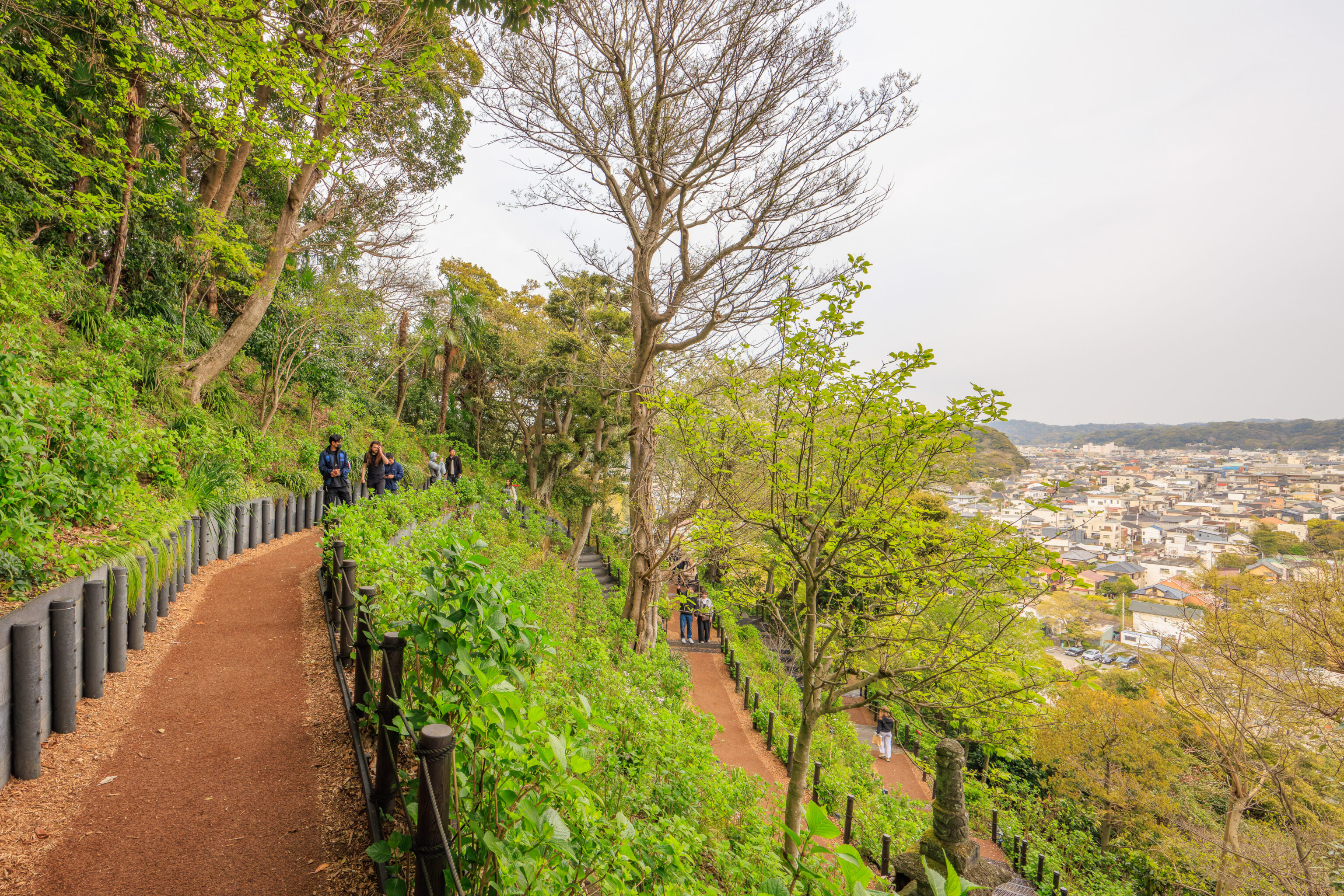
The view looking back at the path. The path at the top is flat.
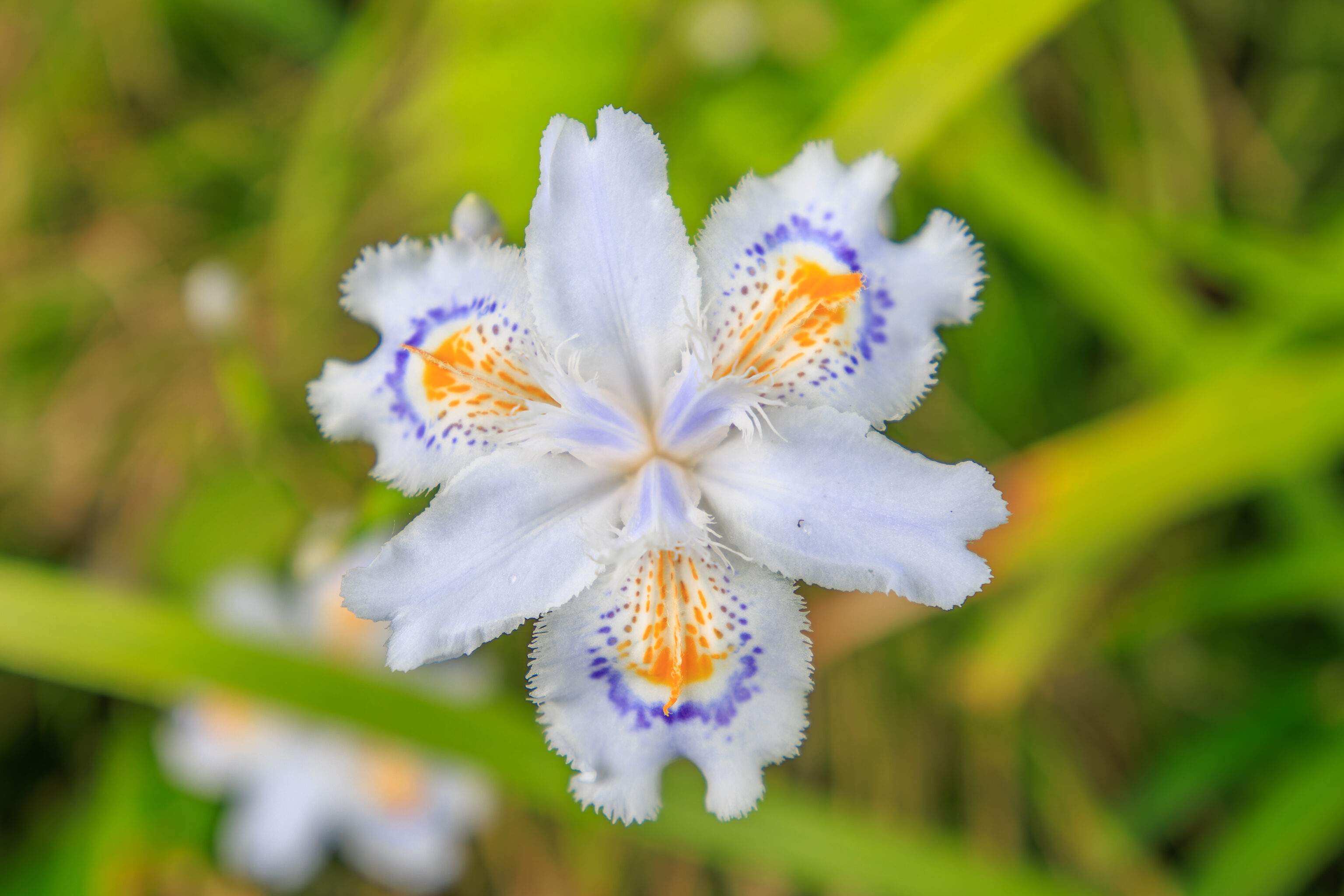
A close up of an iris. They are pretty flowers!
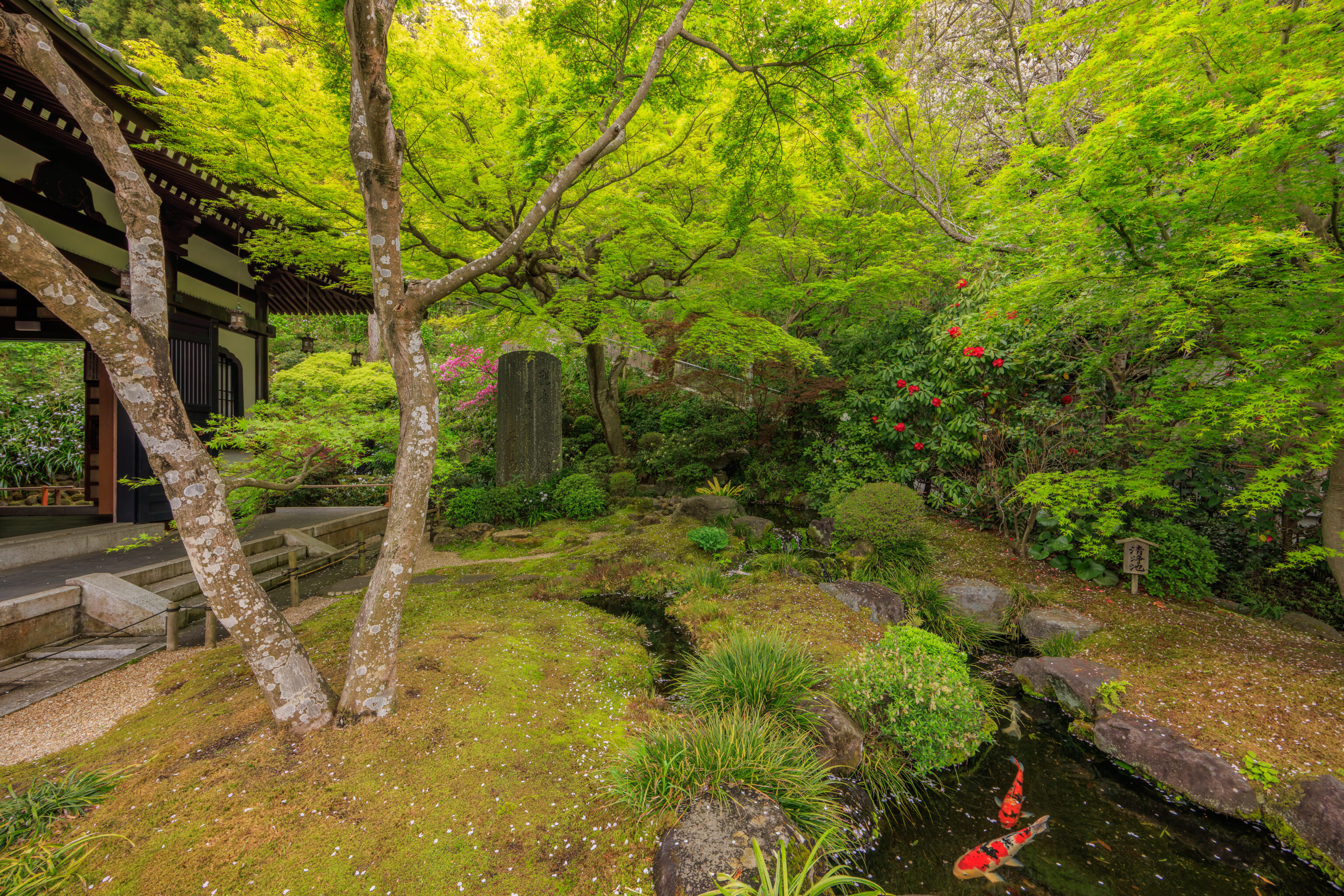
After reaching the highest point on the path, we headed back down and returned to the observation platform and Kannon-do level.
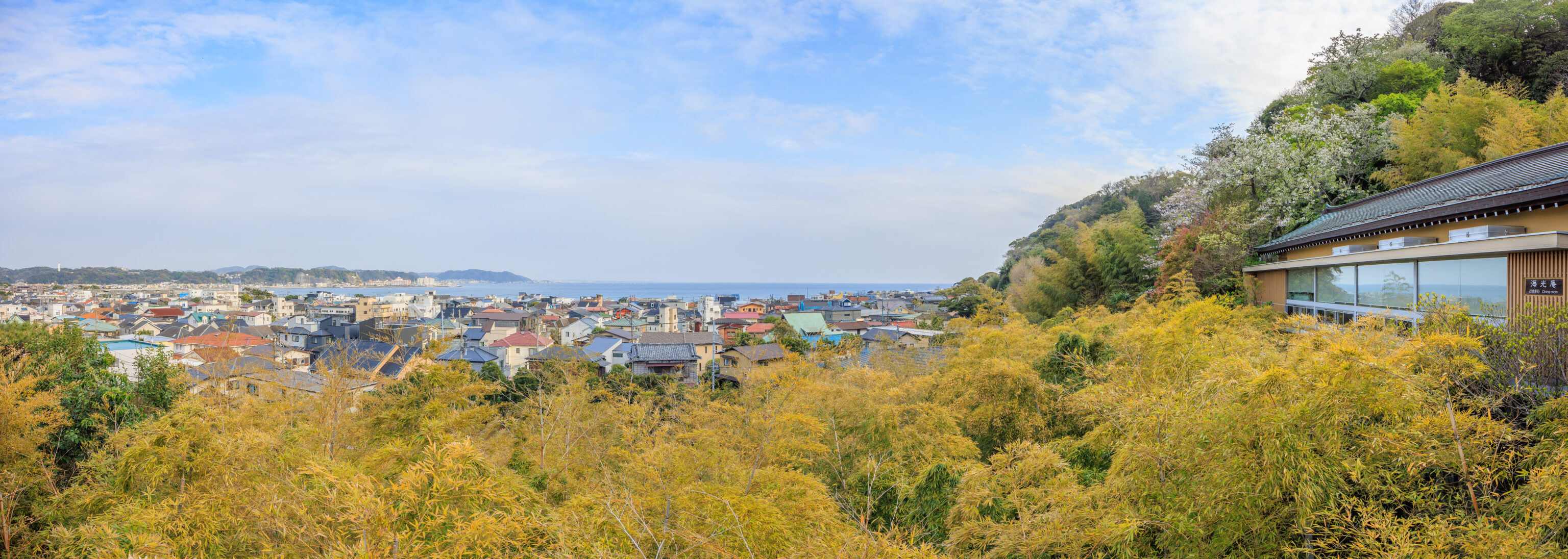
The weather had improved! We could now see blue sky from the observation platform!
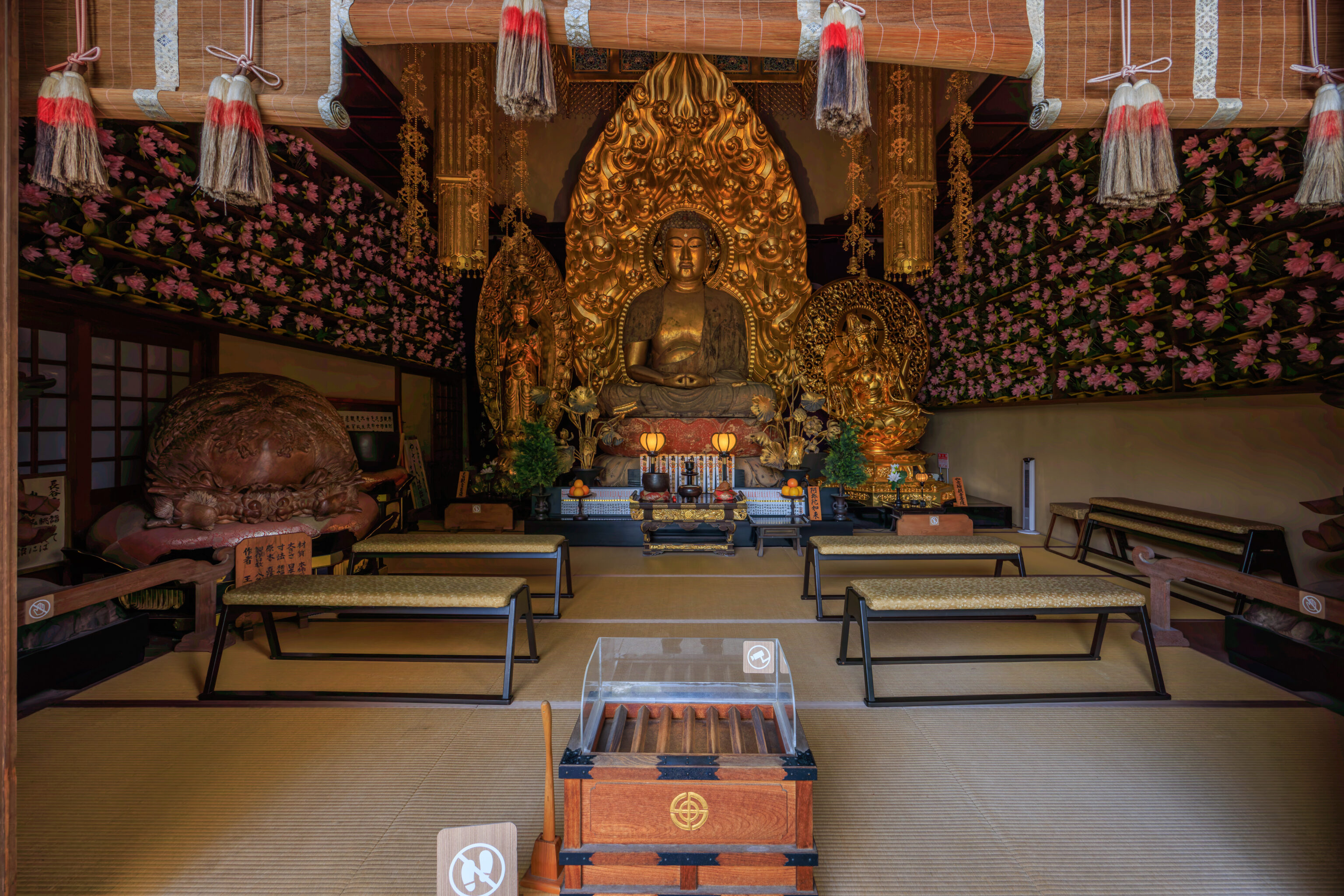
The interior of the Amida-do, one of the temple buildings next to the Kannon-do.
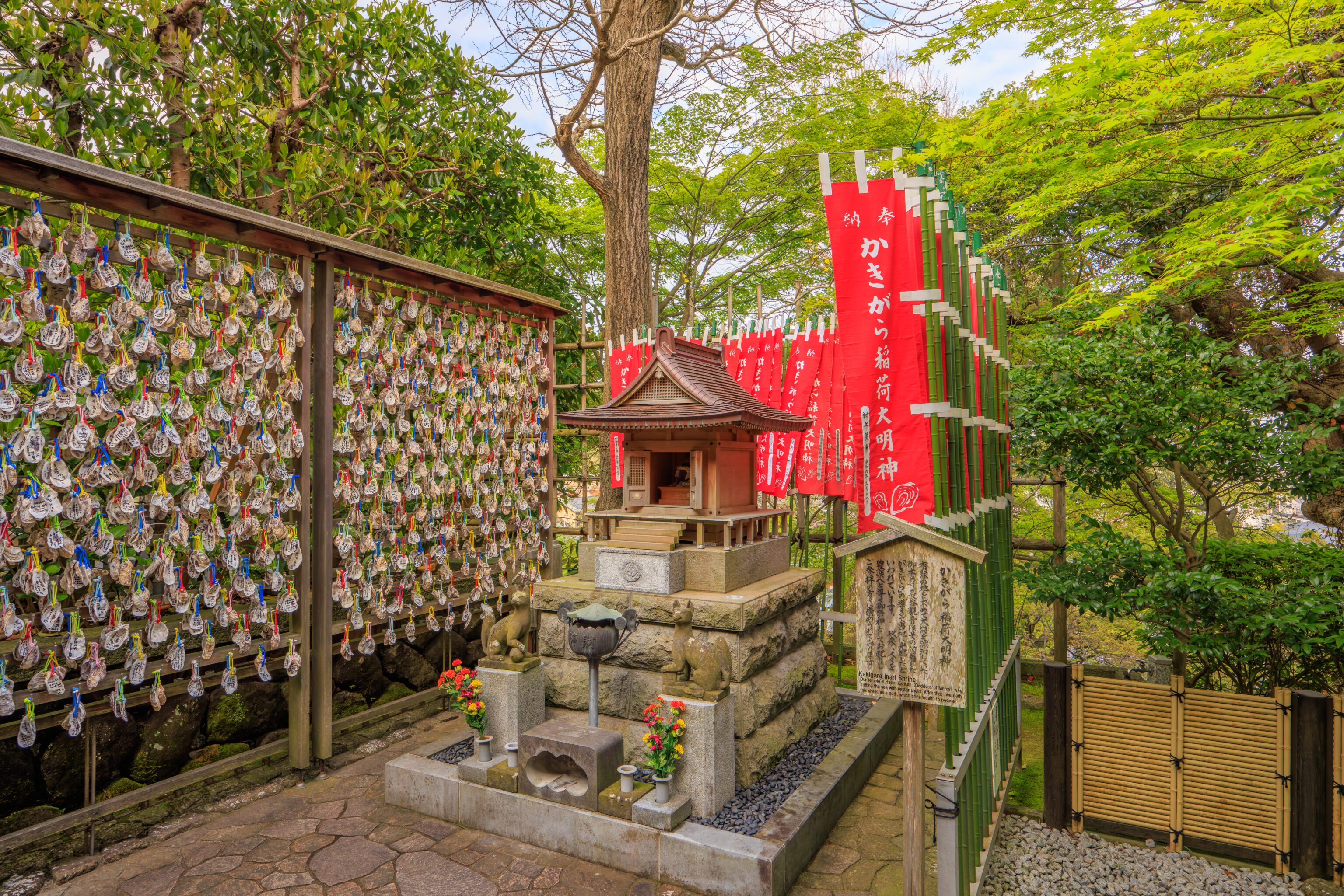
We continued walking to the north, reaching this small Inari shrine. It is common in Japan to have Buddhist and Shinto buildings together. The wishes here are written on oyster shells!
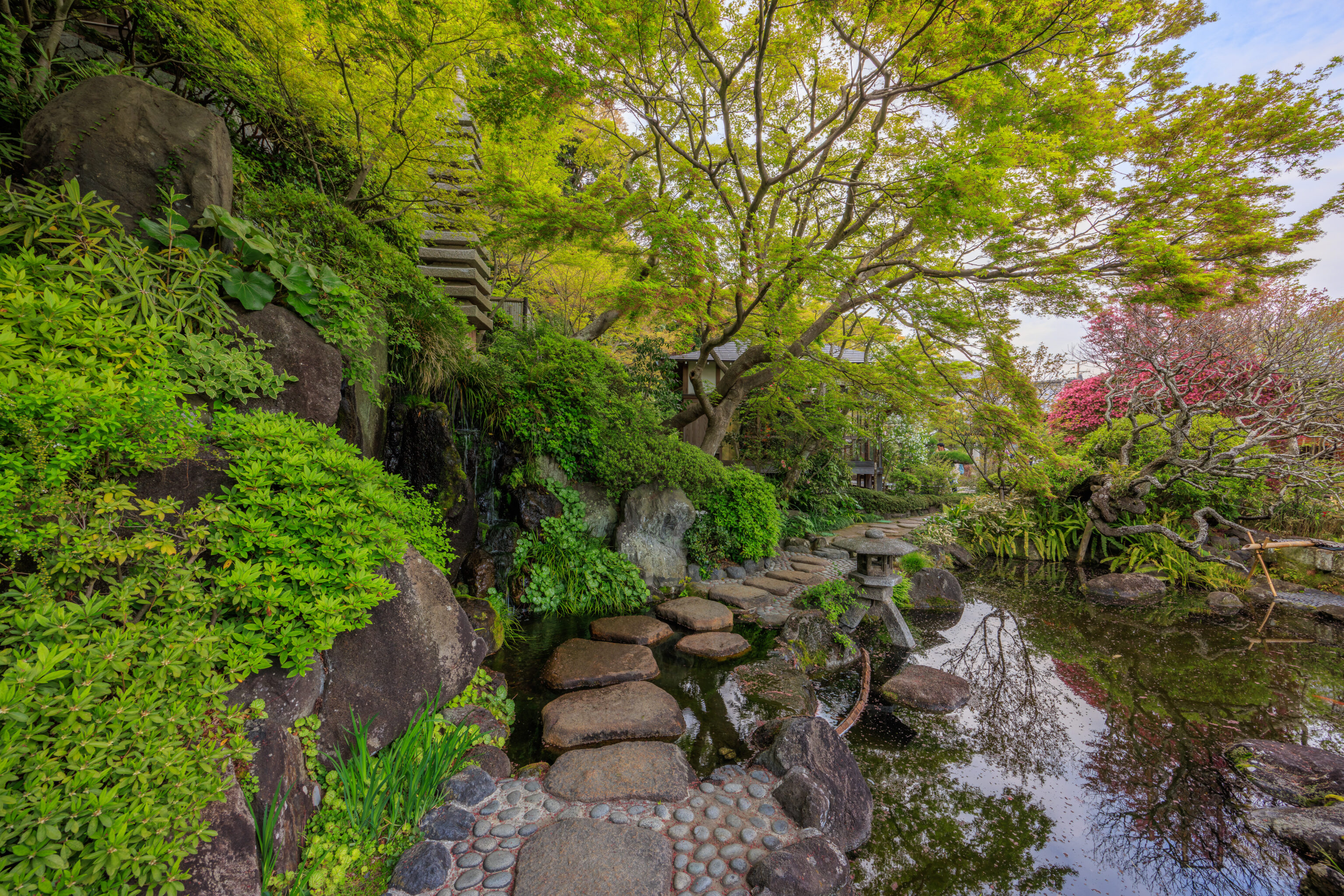
We ended up back at ground level by the ponds.
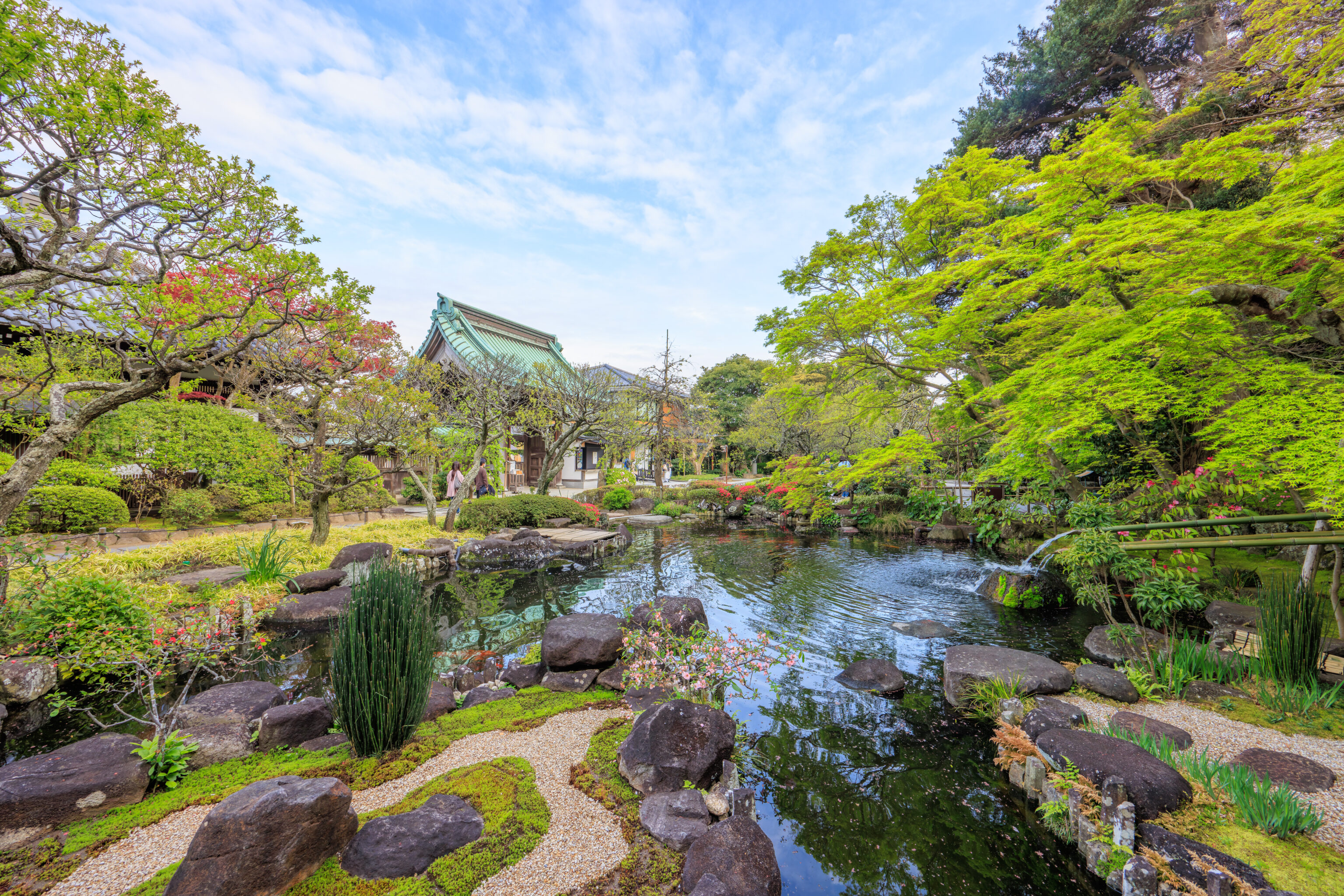
This was the view by the northern pond.
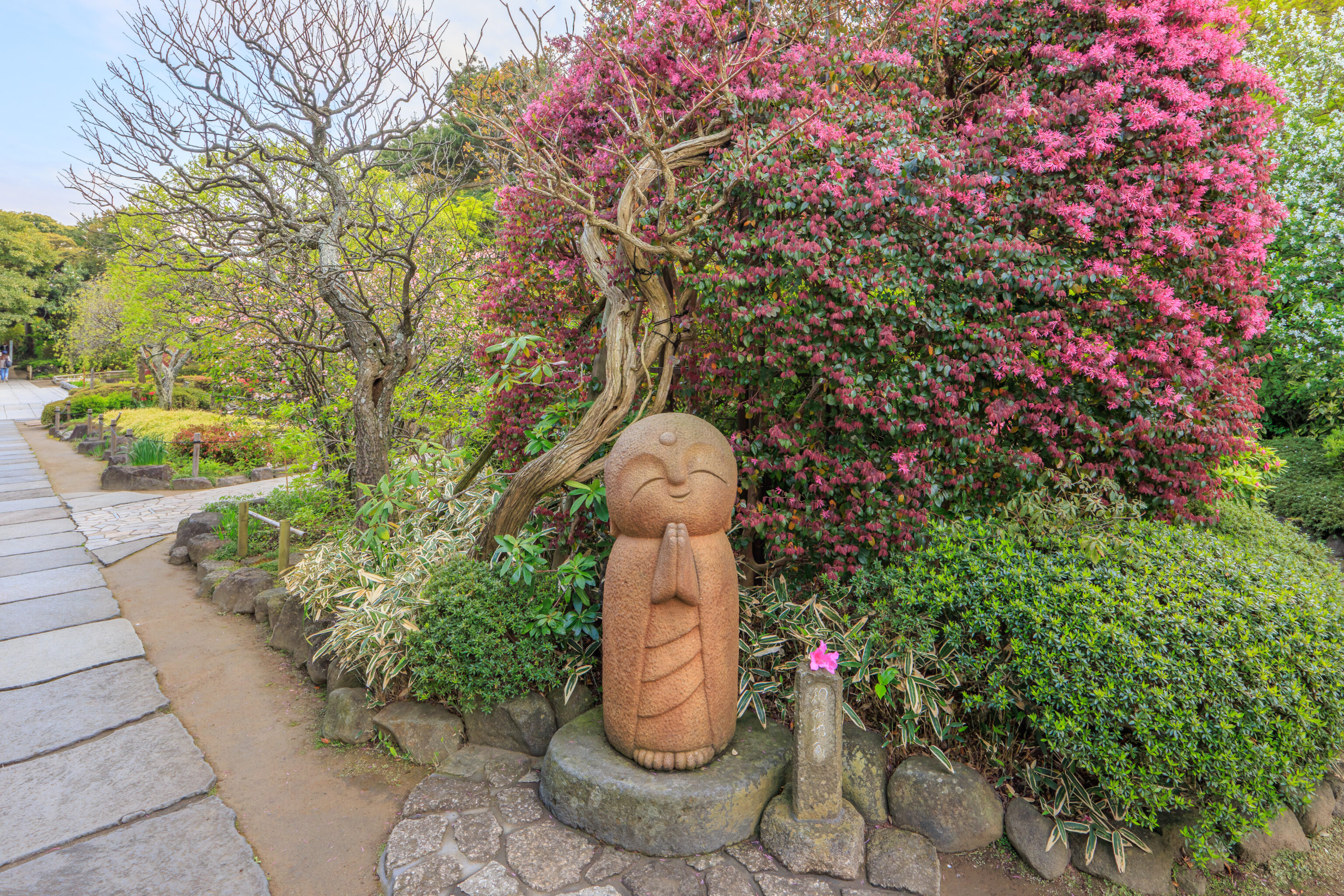
This statue is the Nagomi Jizo! Typically Jizo statues are tiny, this is the biggest one we’ve seen!
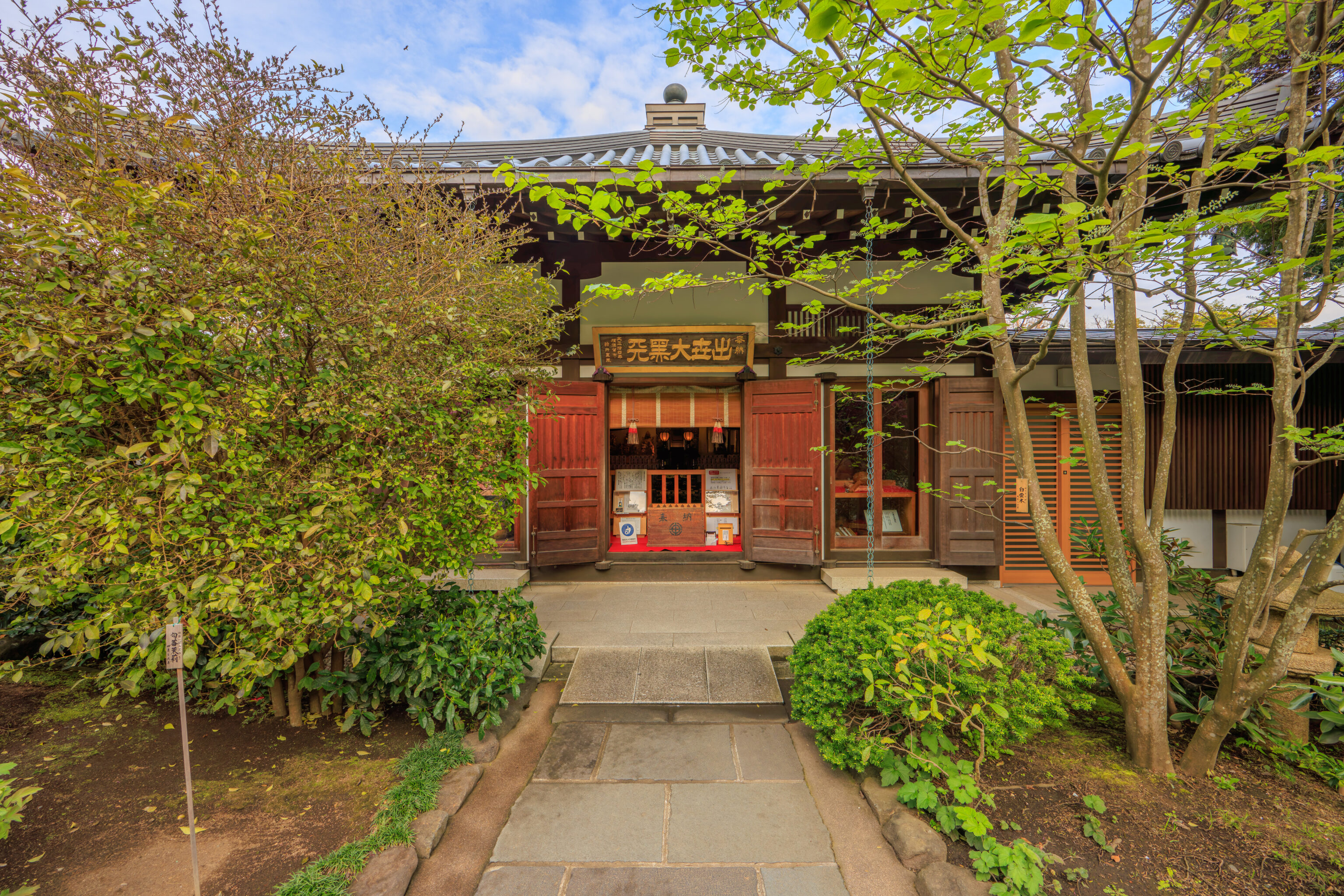
One of the temple buildings near the Benten Cave, which we entered next.
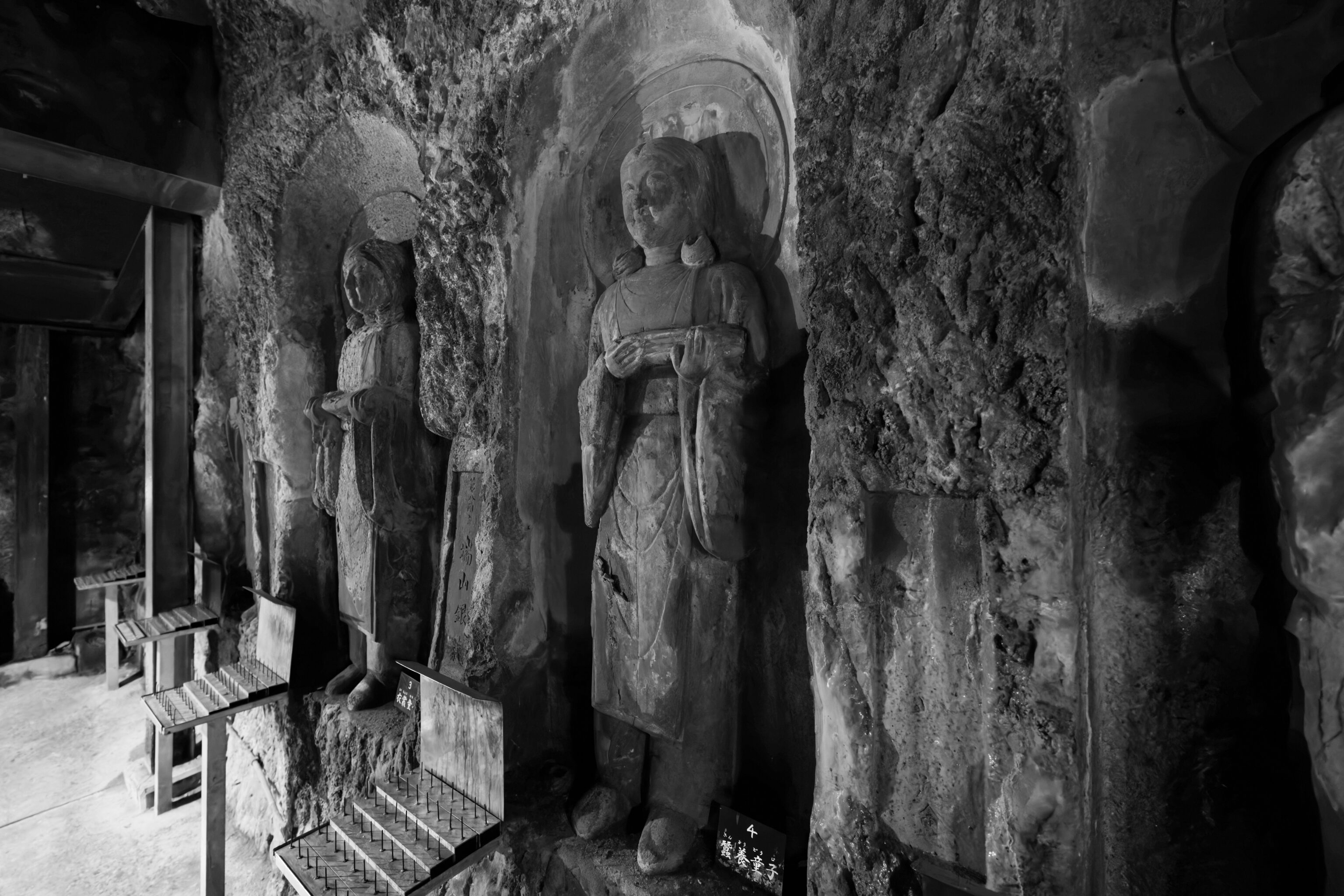
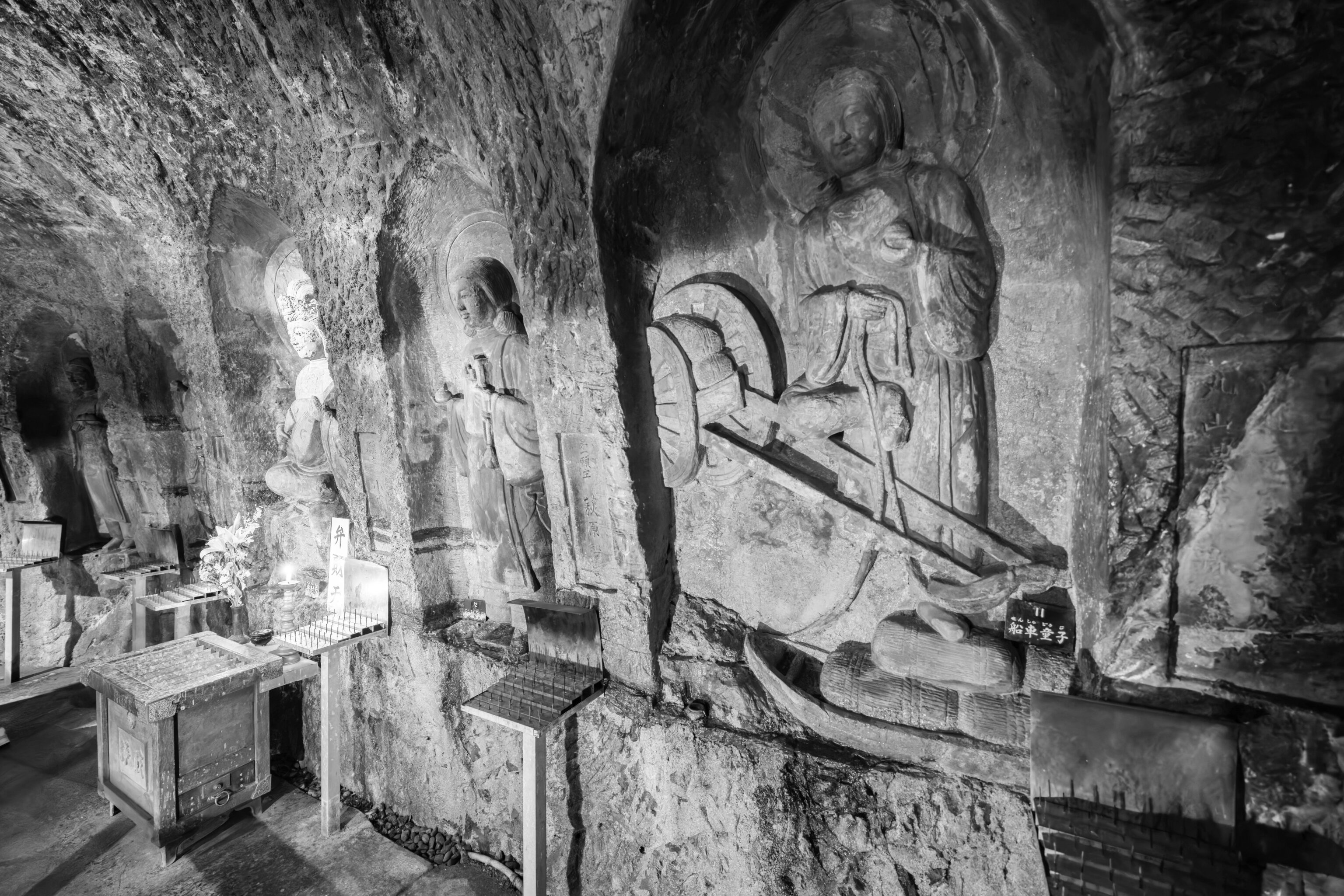
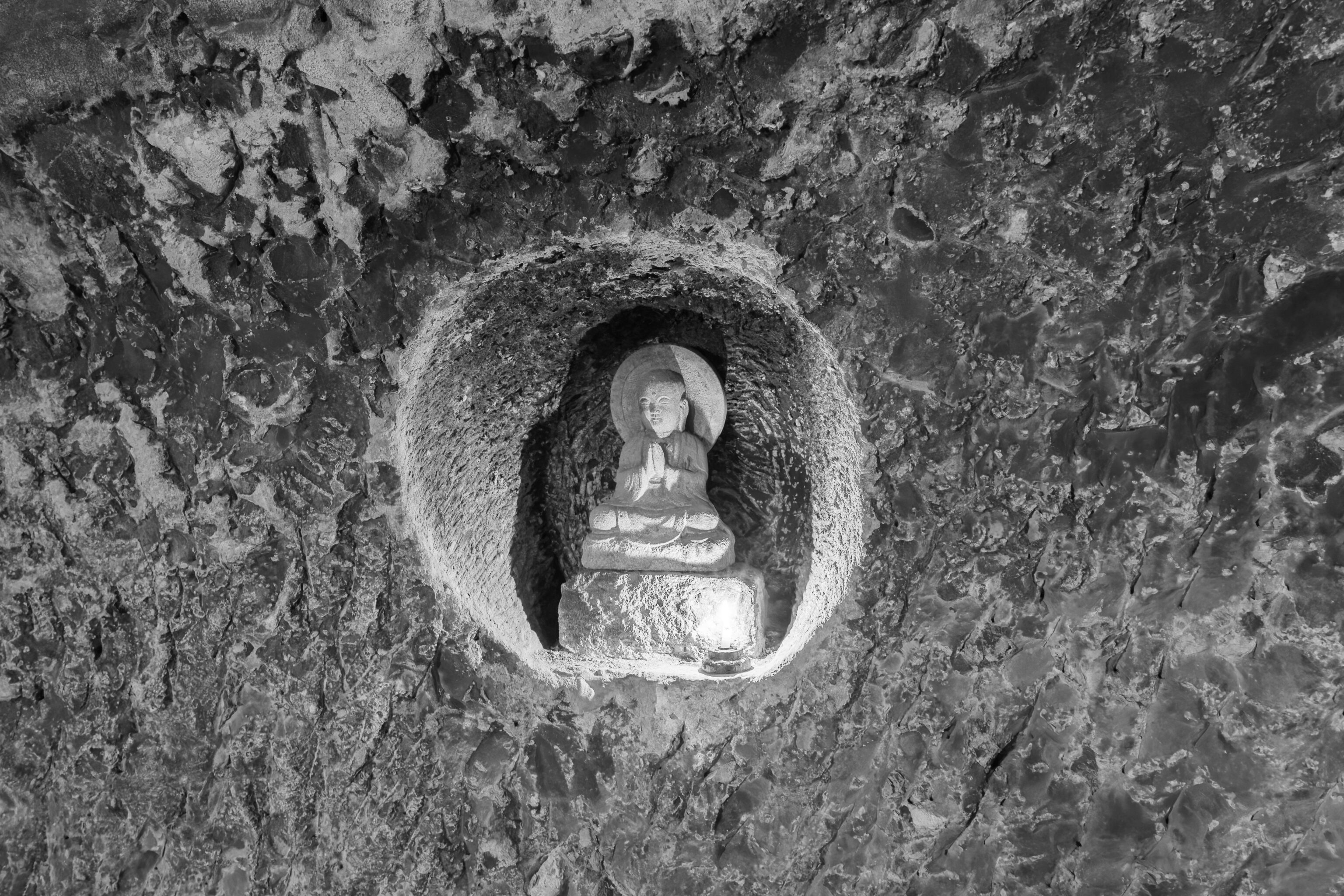
The Benten Cave is a small series of passageways carved into the hillside. The very dark and minimally lit interior holds various statues carved into the stone walls of the cave.
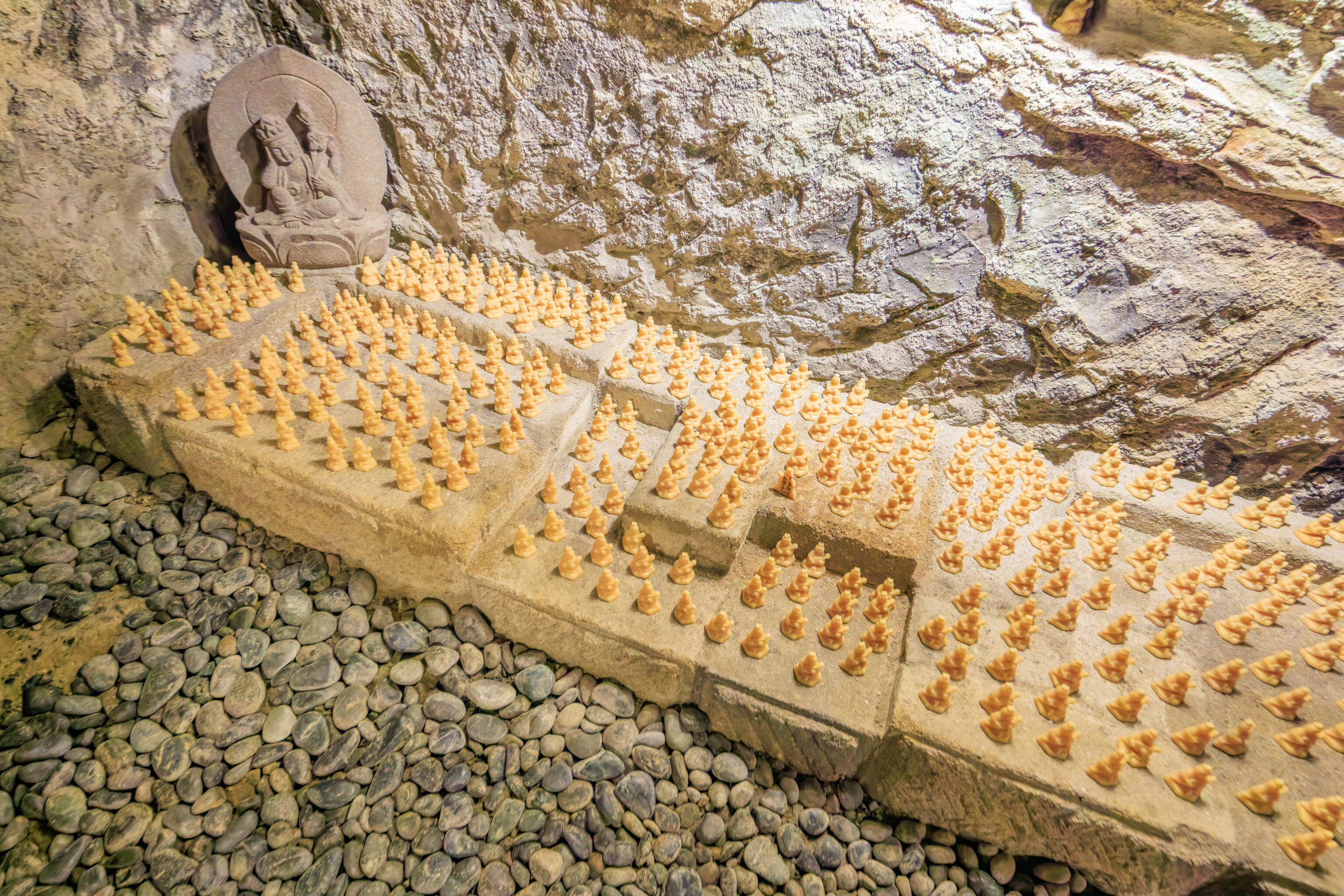
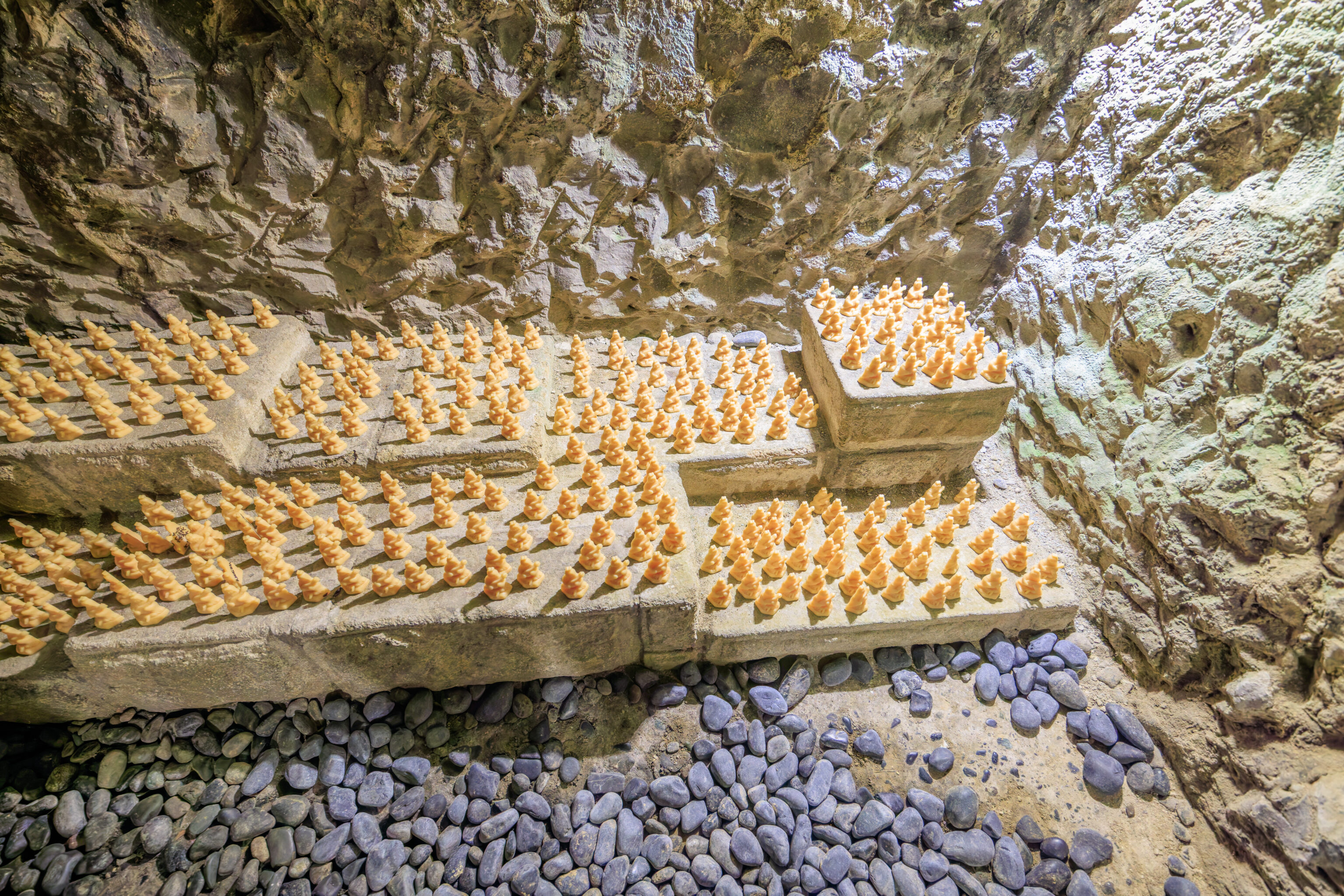
This large room within the cave held hundreds of tiny statues.
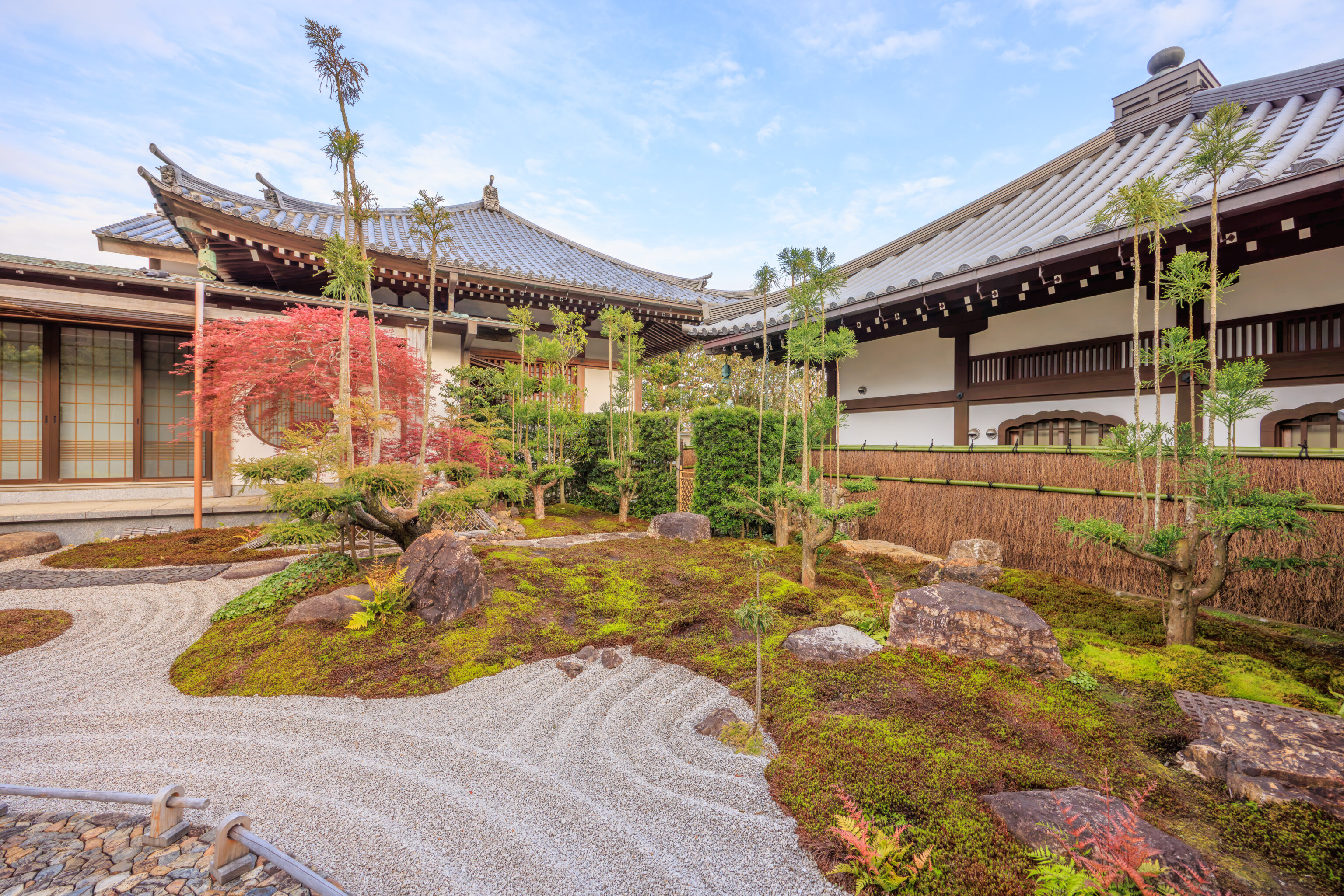
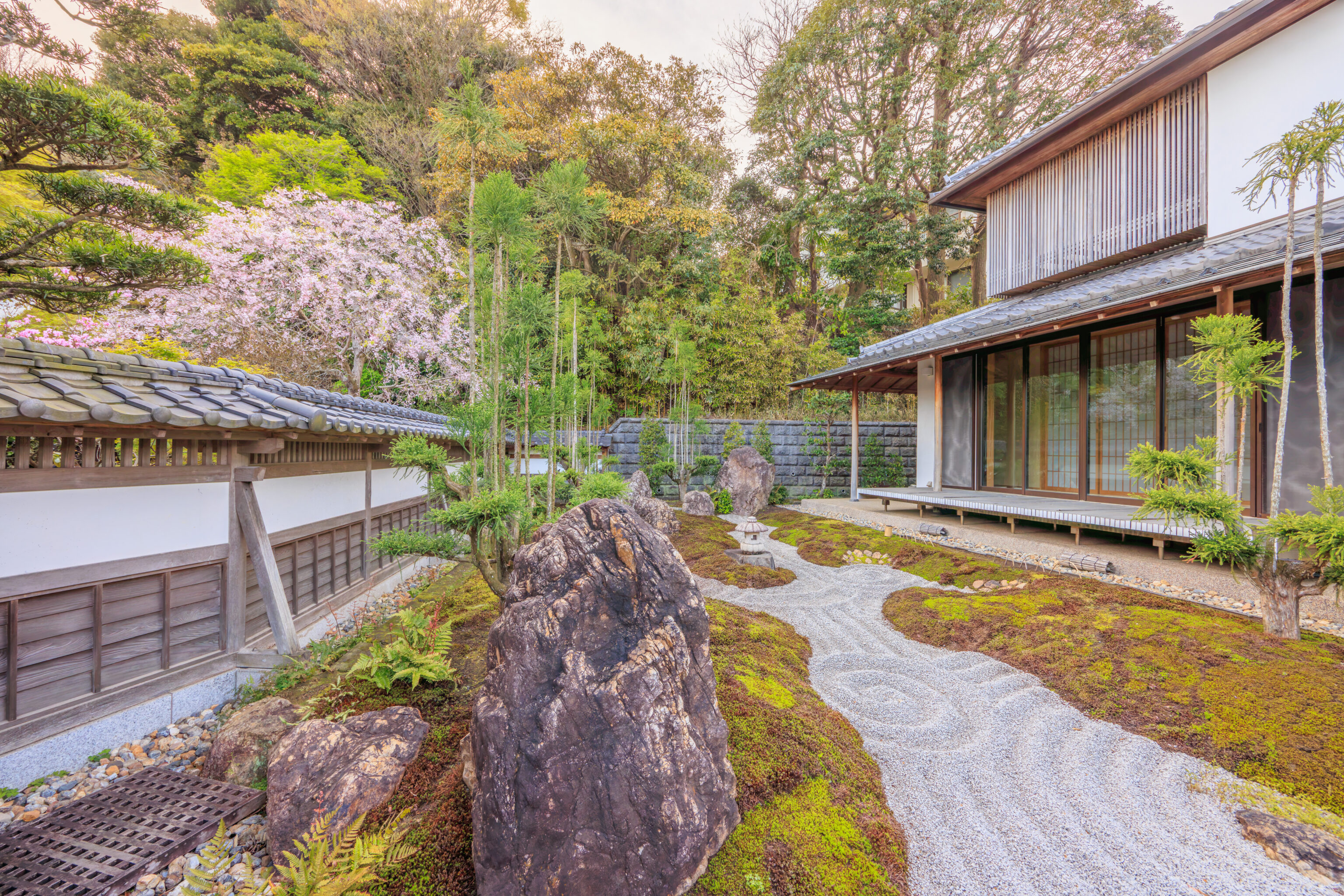
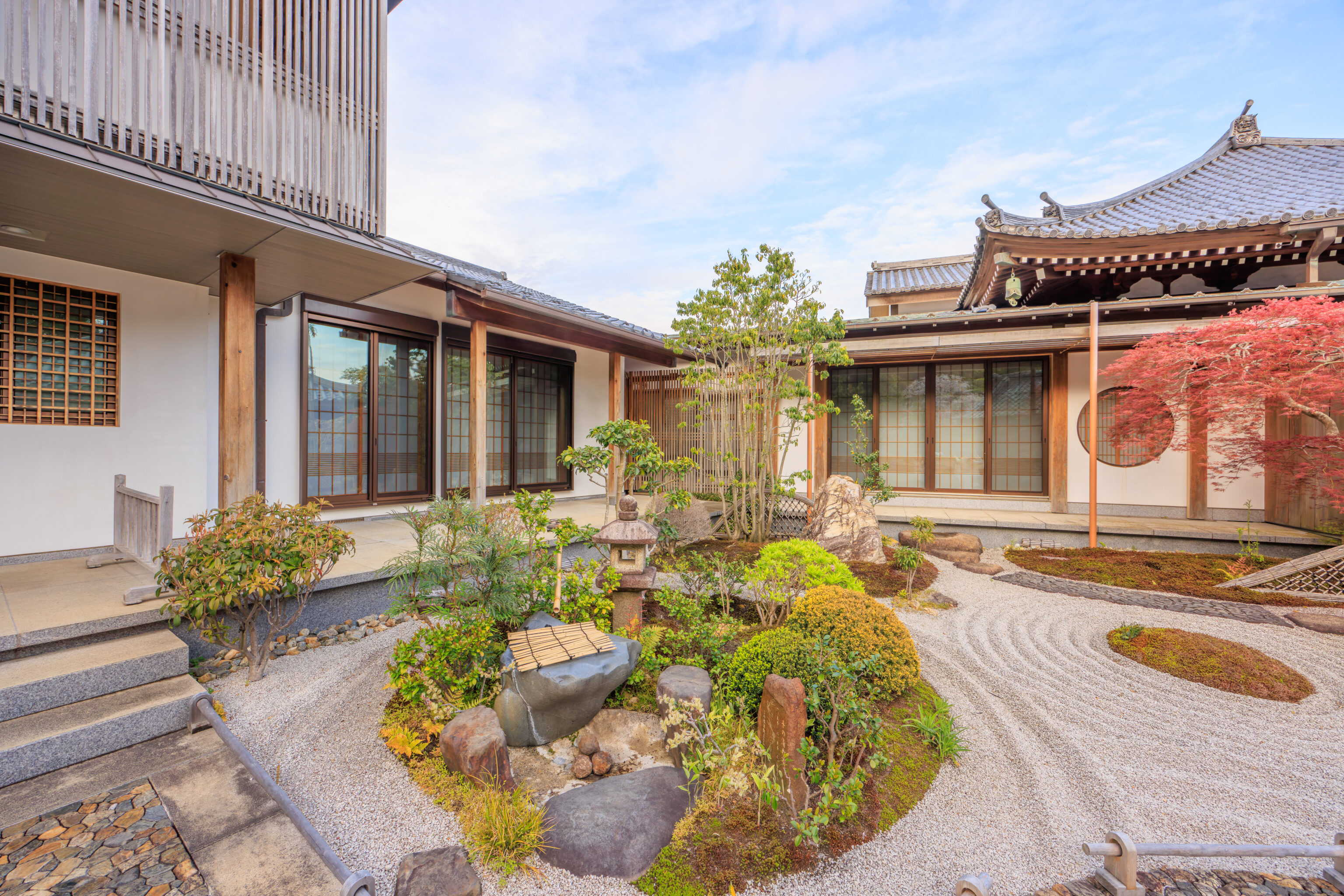
After exiting the cave, we continued on to this courtyard area. It is drawn on the temple map, though not labelled in any way.
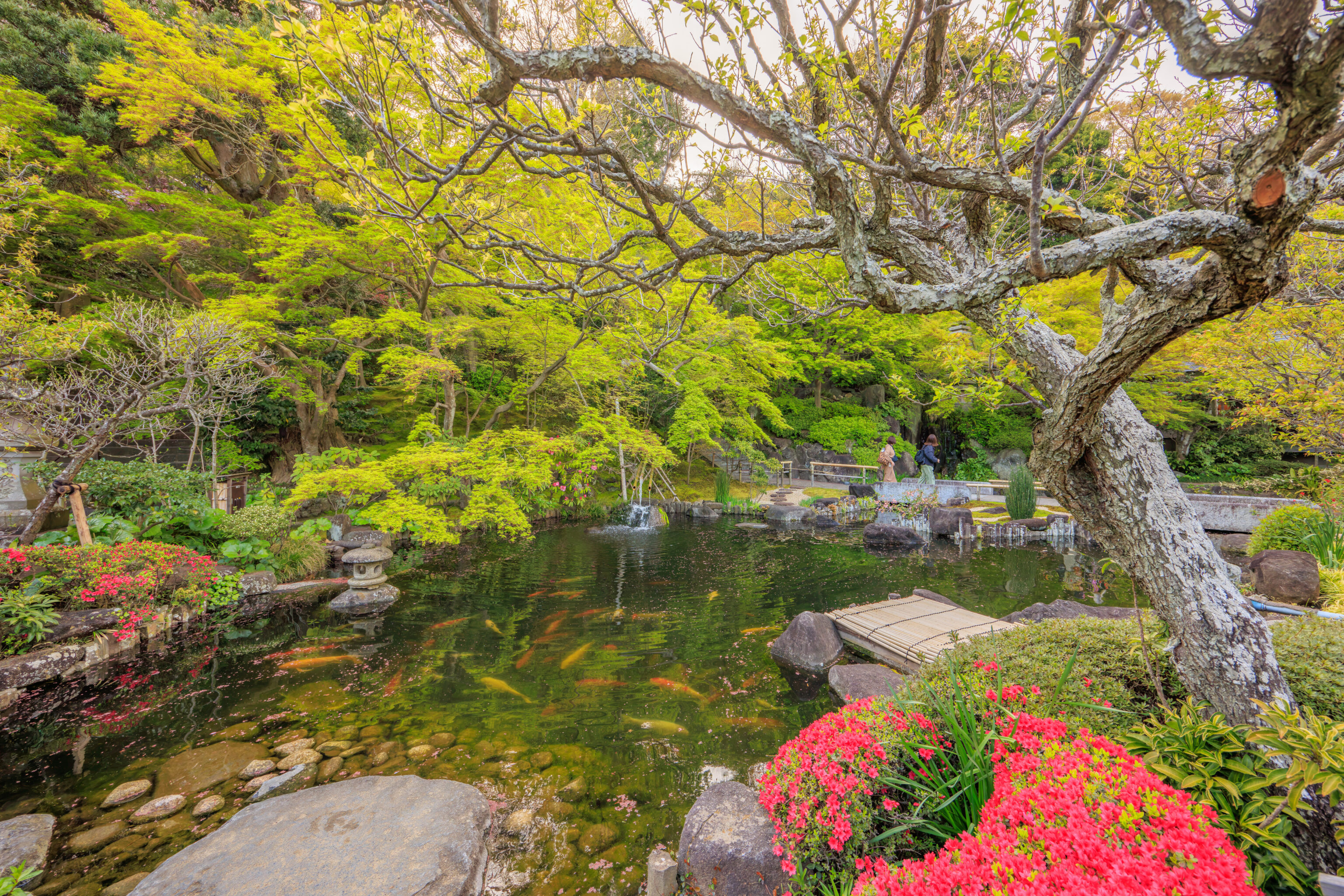
We walked by the ponds again to head back to the main gate to exit the temple.
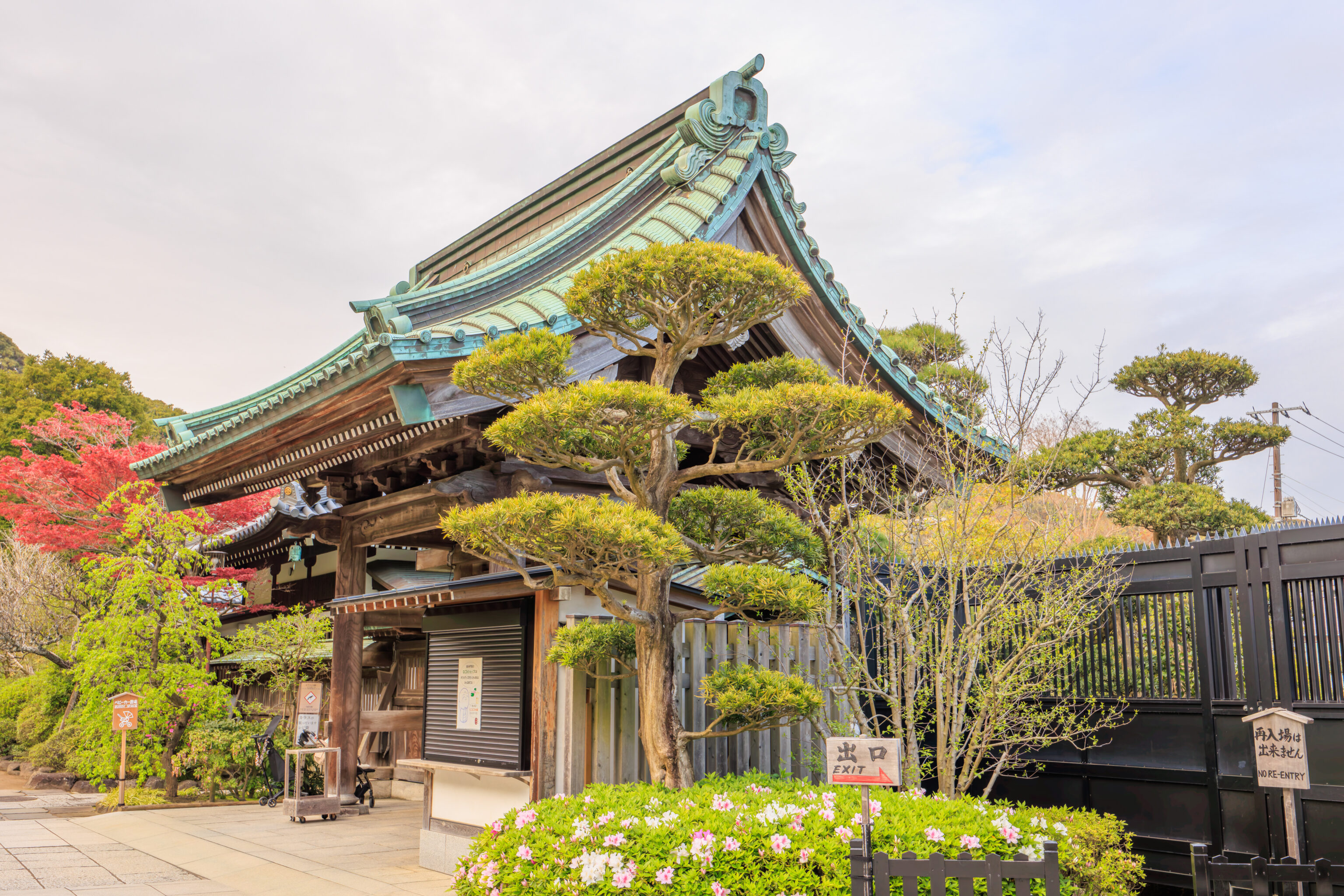
We returned to the gate at around 5pm and exited.
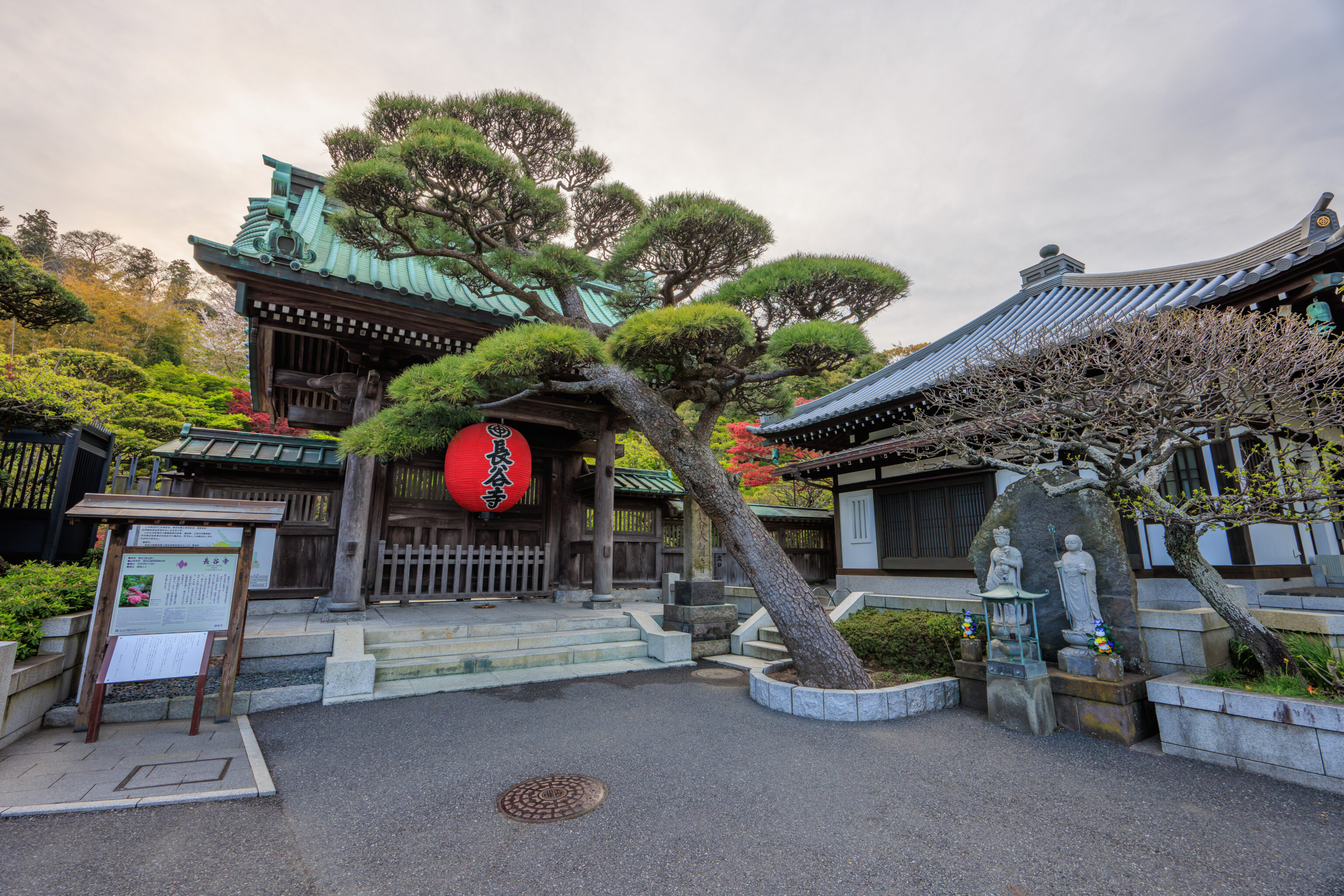
The temple closes at 5:30pm but last entry is at 5pm.
Tokyo
We walked to 長谷駅 Hase Station which was nearby to take a train back to Kamakura Station.
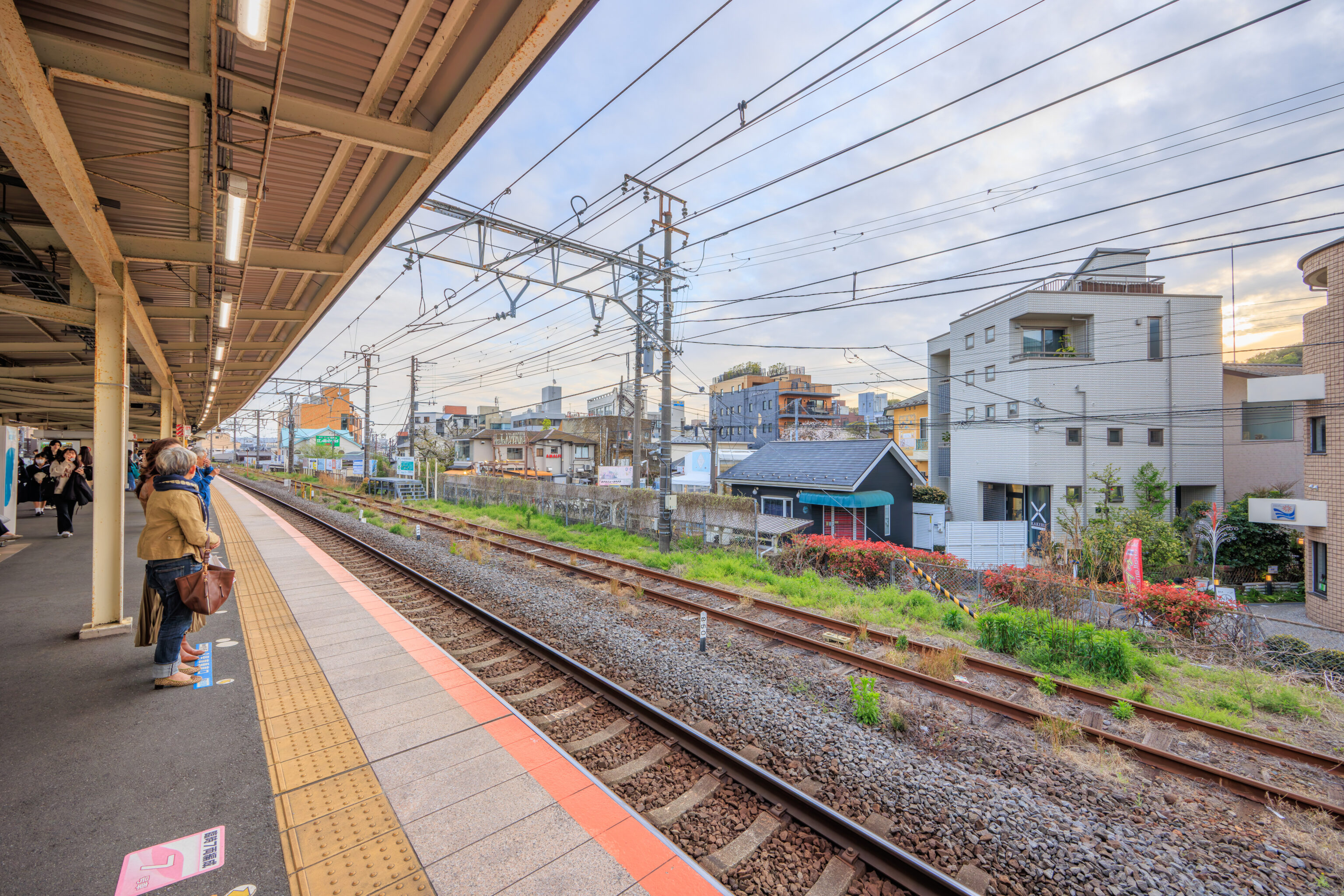
Then, we took the Yokosuka Line back to Shimbashi Station in Tokyo.
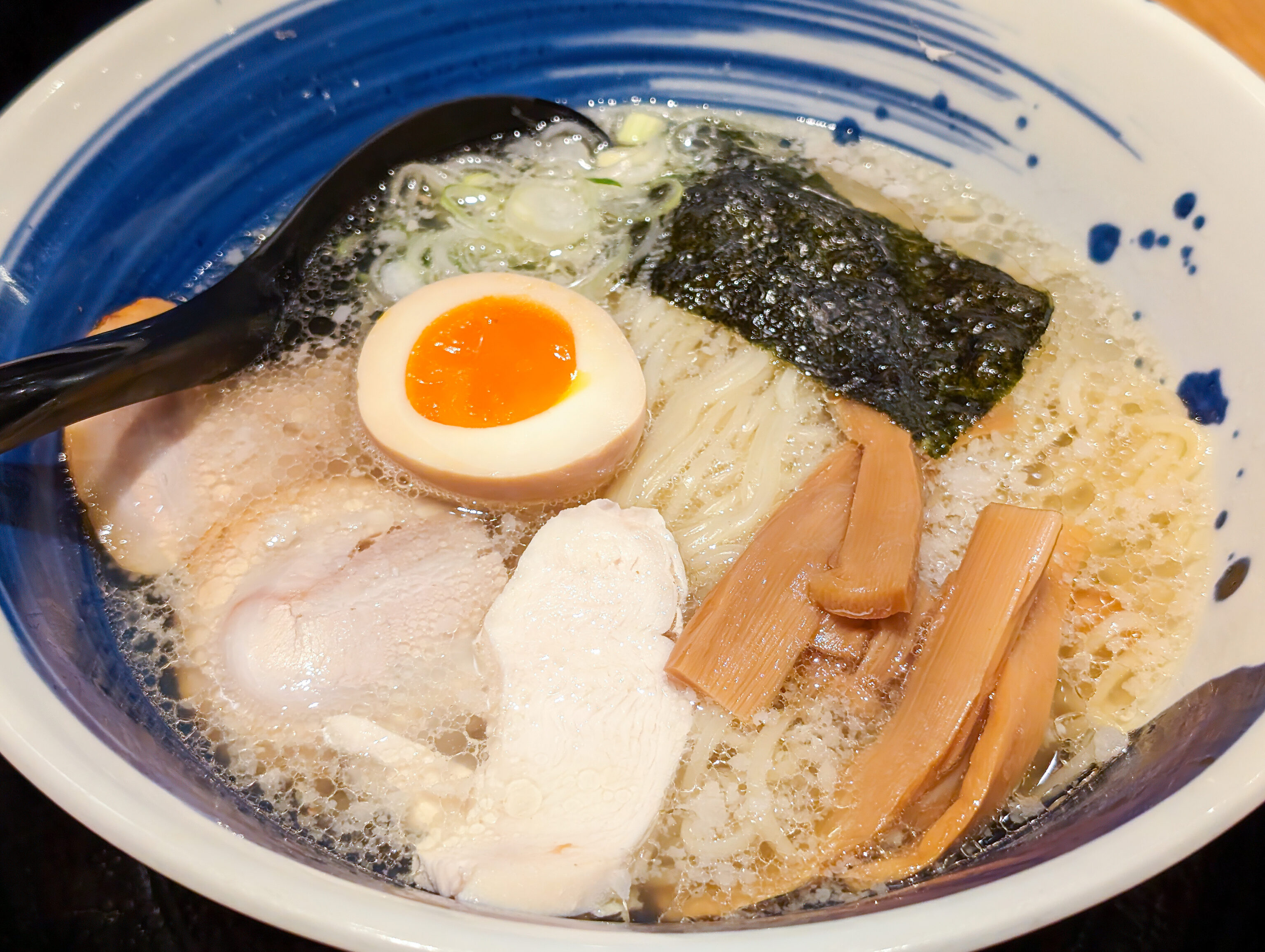
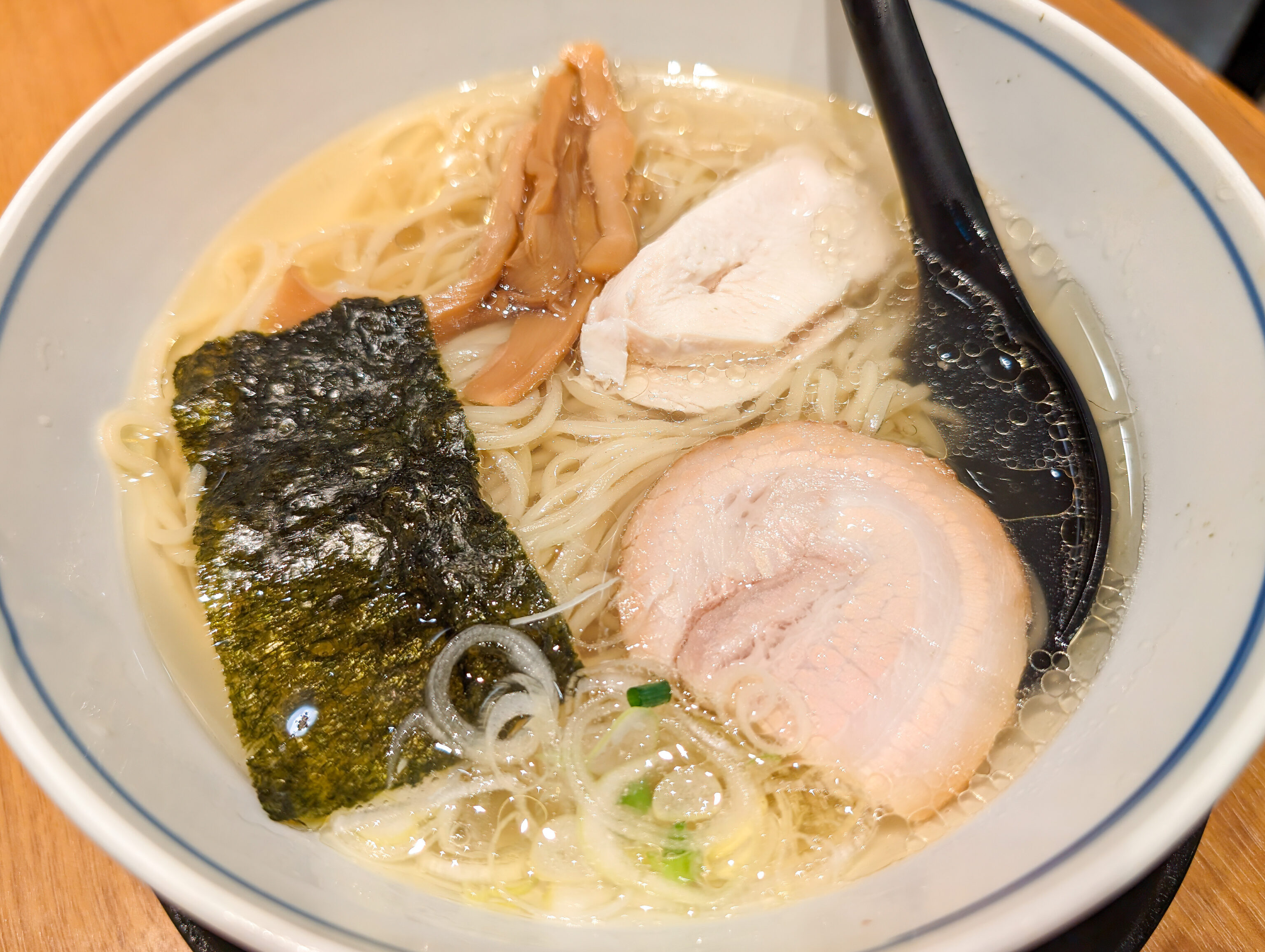
We decided to have some ramen at Shimbashi Station. The broth was lighter than what we usually have. There is definitely a huge variety in ramen in Japan!
Conrad Tokyo
We then took the Yurikamome Line for the extremely short trip back to Shiodome Station where we returned to the Conrad to get our room for the next two nights. This time, we’re staying one night using a free night certificate and the other with points. We booked the only room type available, a twin city view room, and were upgraded to a twin suite. The hotel is effectively sold out with the lowest price room starting at about $6,000 USD. The room we booked has a cash rate of about $600 and the suite we got seems to go for about $1,000. Overall, a pretty good place to be using a free night and points.
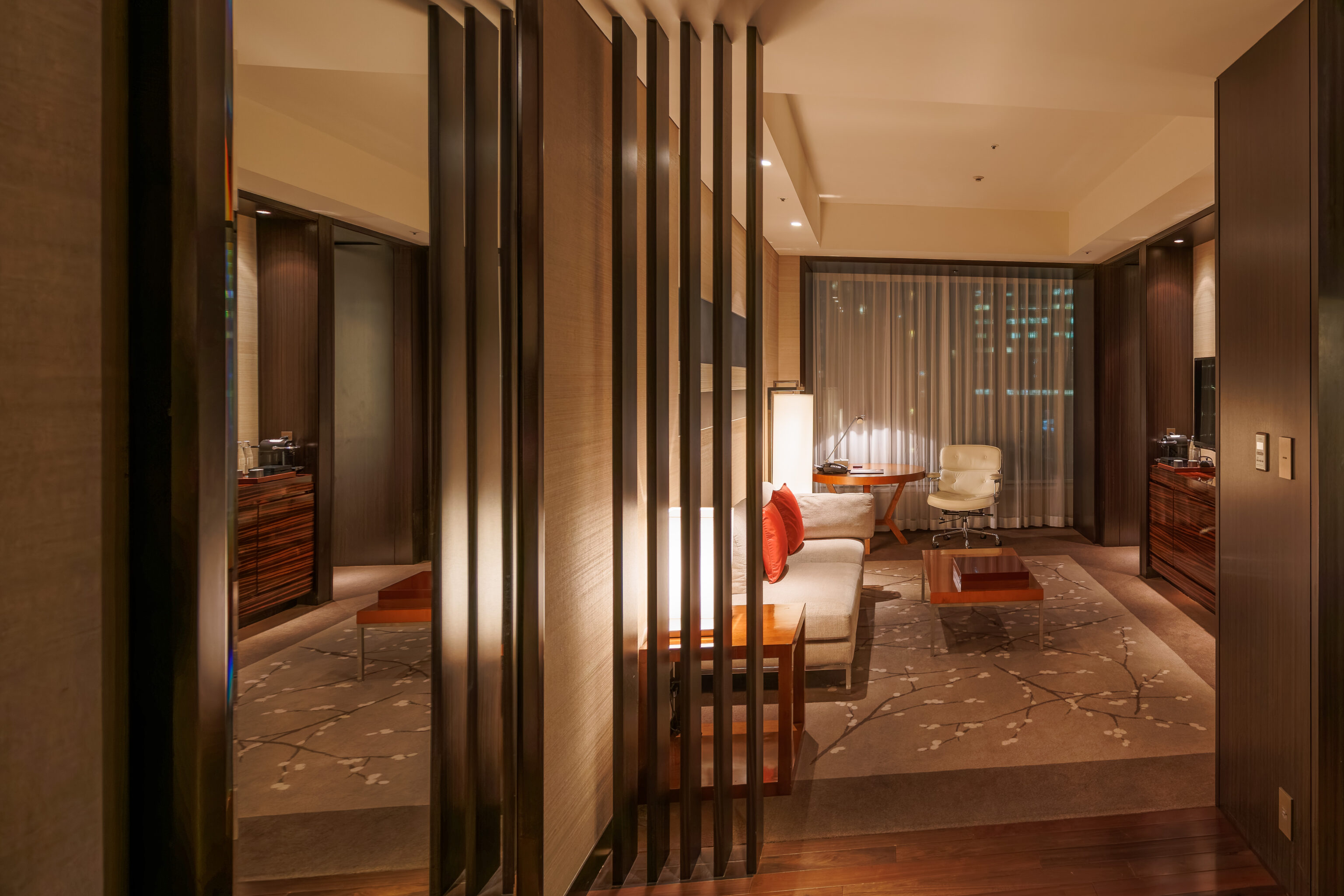
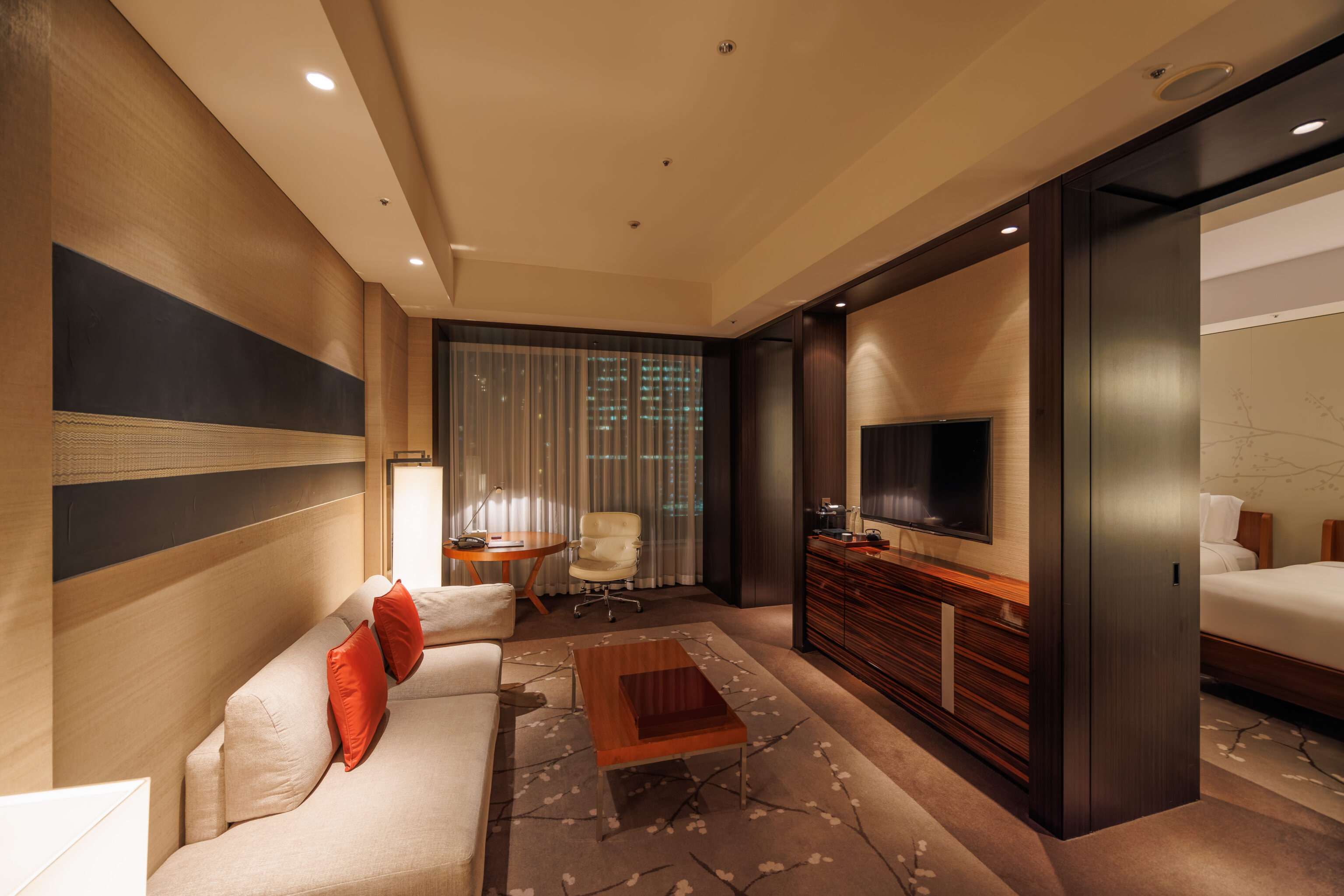
The room was a true suite with separate living room and bedroom.
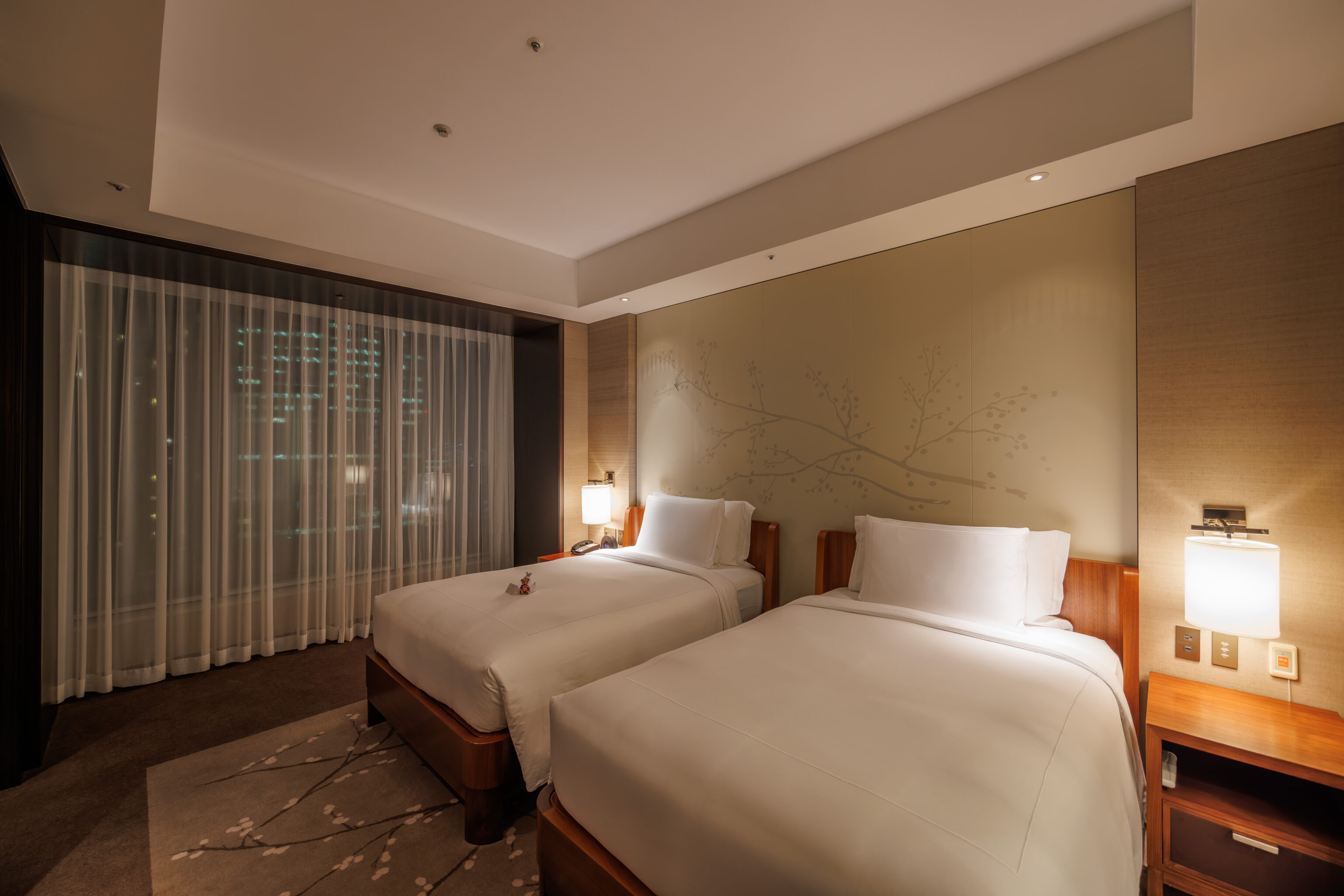
There were some nice details in the decor such as the sakura carpet and sakura on the wall behind the beds.
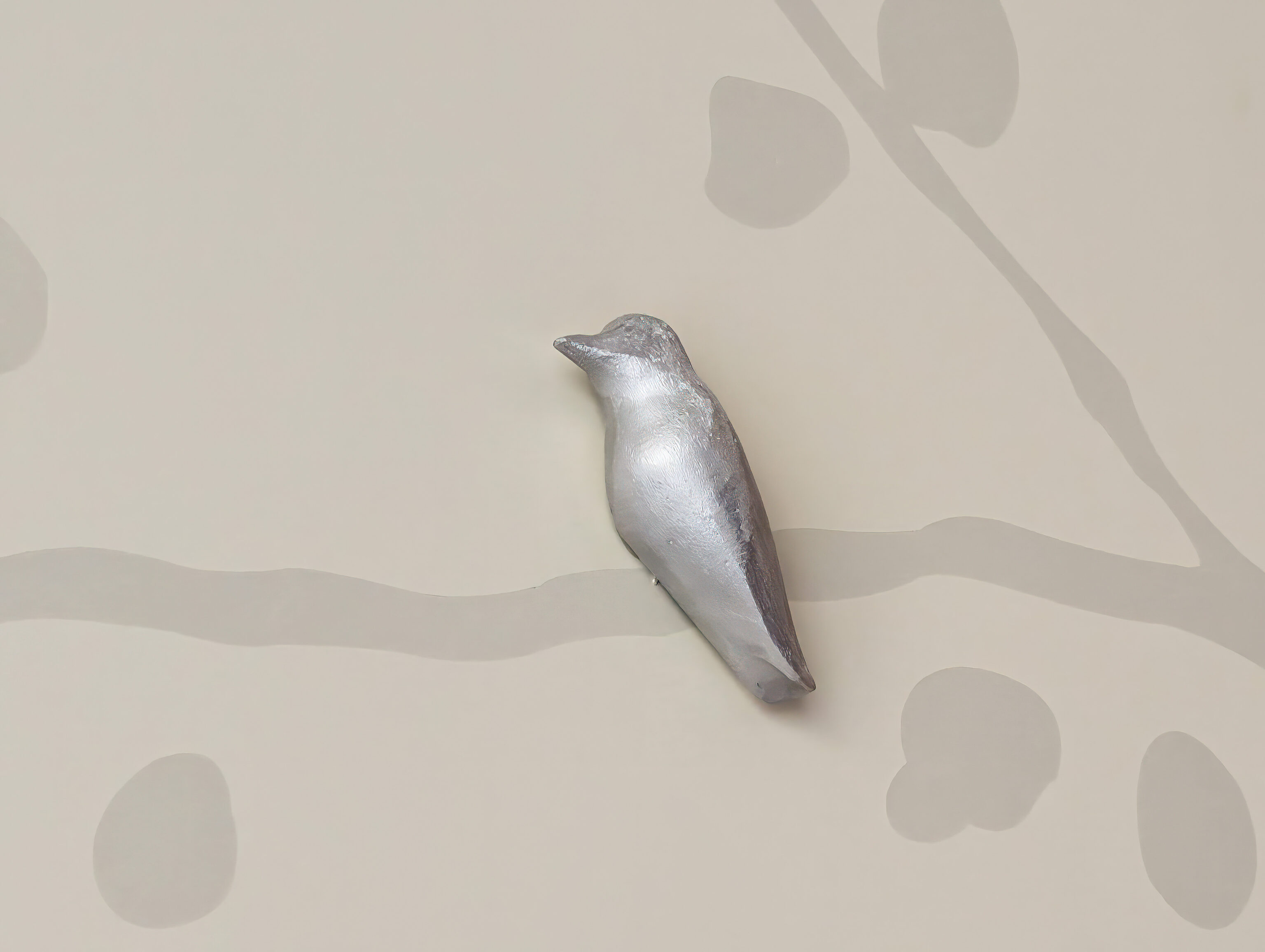
There was a small bird on one of the branches!
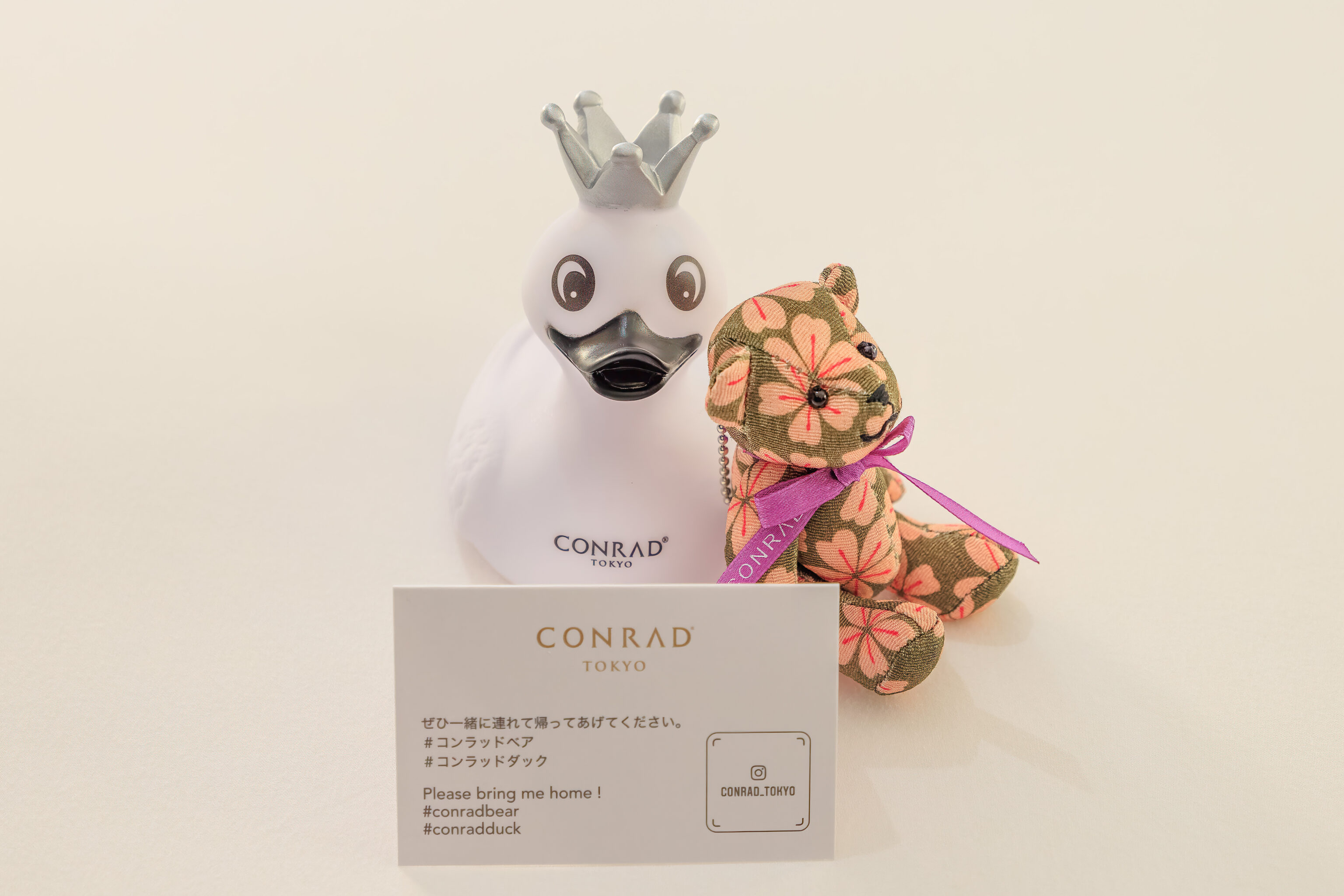
A small teddy bear and rubber ducky were waiting for us on one of the beds! Apparently, some Conrad hotels provide these items to their guests.
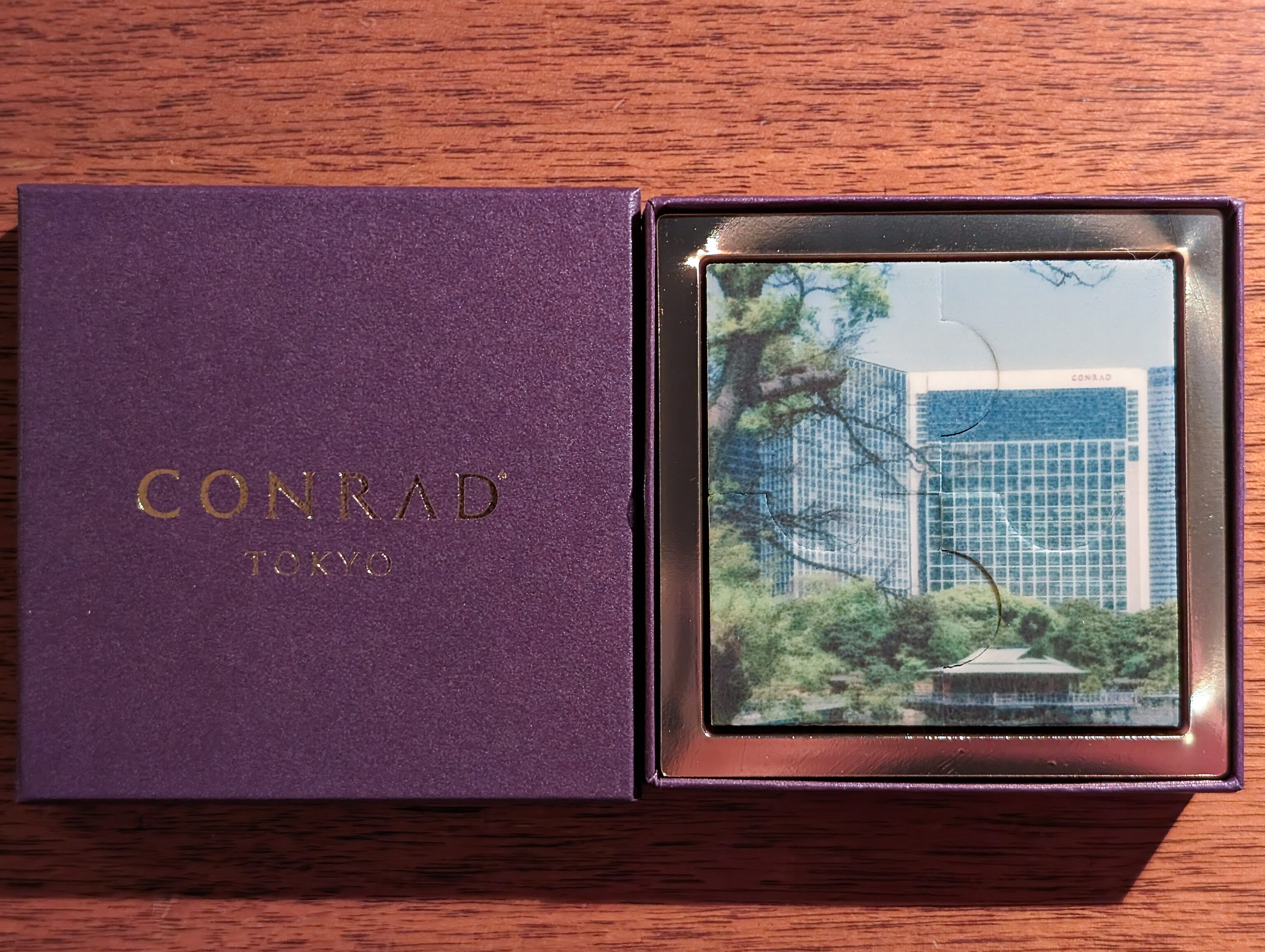
There was also a small box with a four piece chocolate puzzle inside!
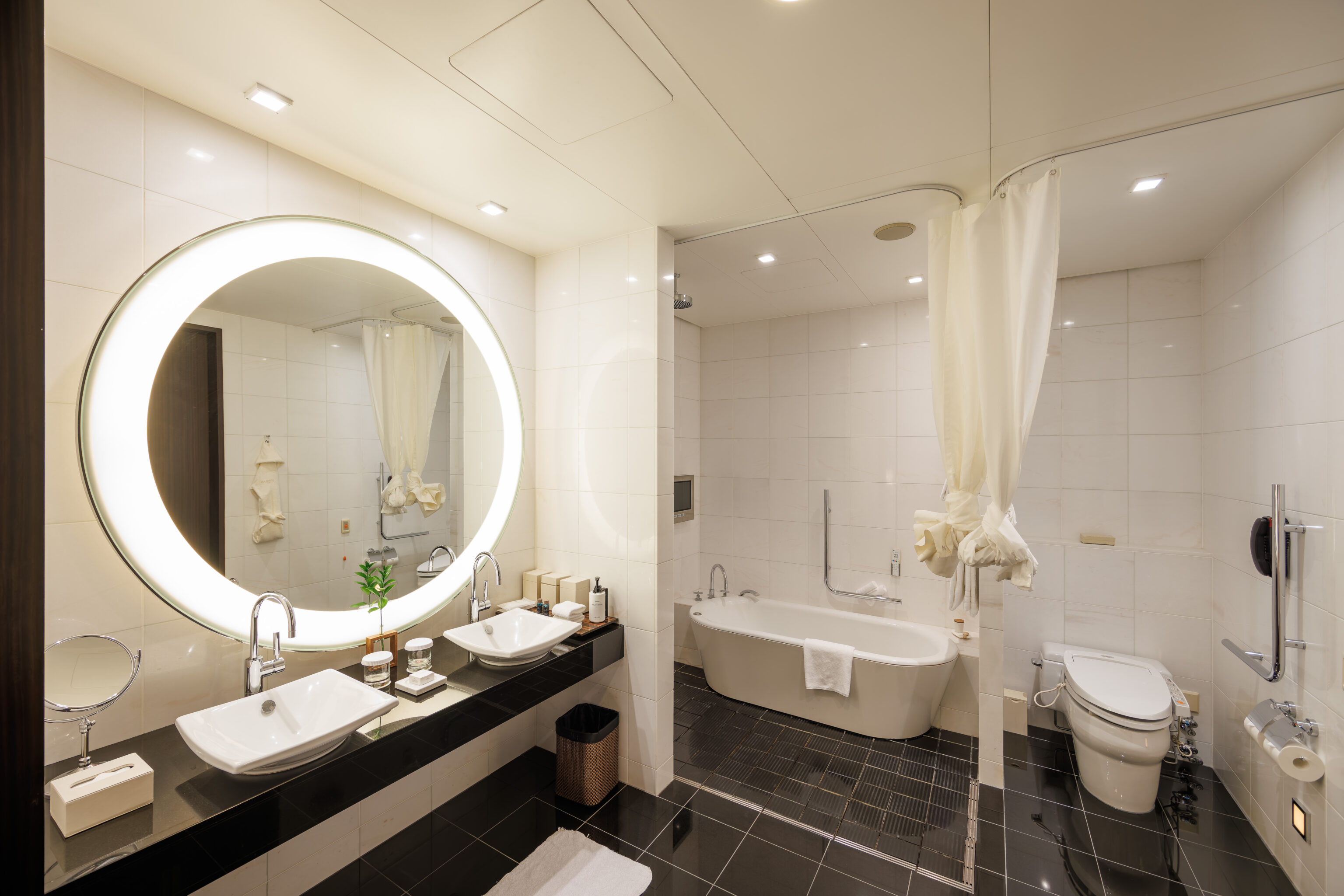
The partially Japanese style bathroom seemed to have some accessibility features, though the rest of the room did not. There was, of course, a Japanese toilet with bidet, though it was a more basic model compared to the Mesm.
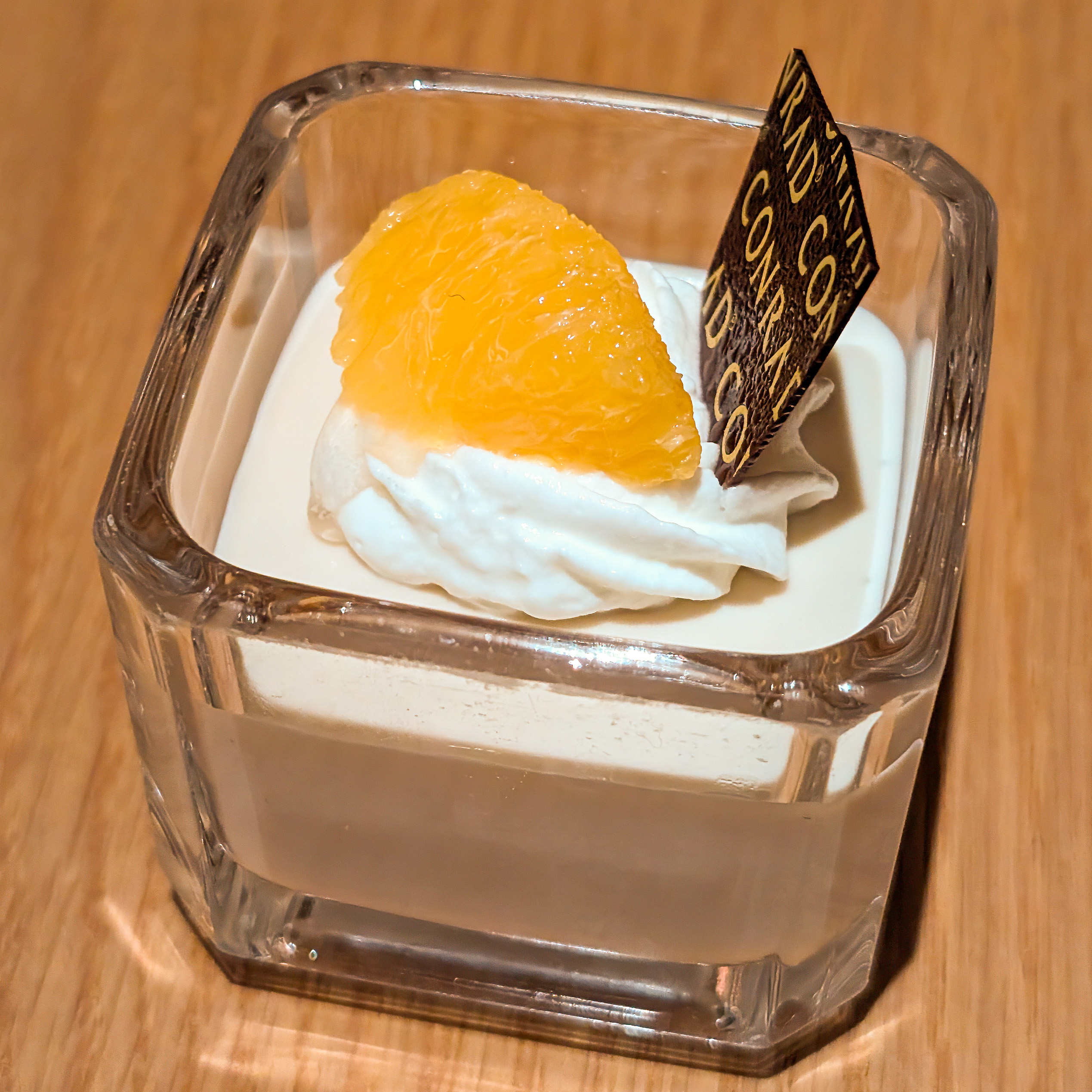
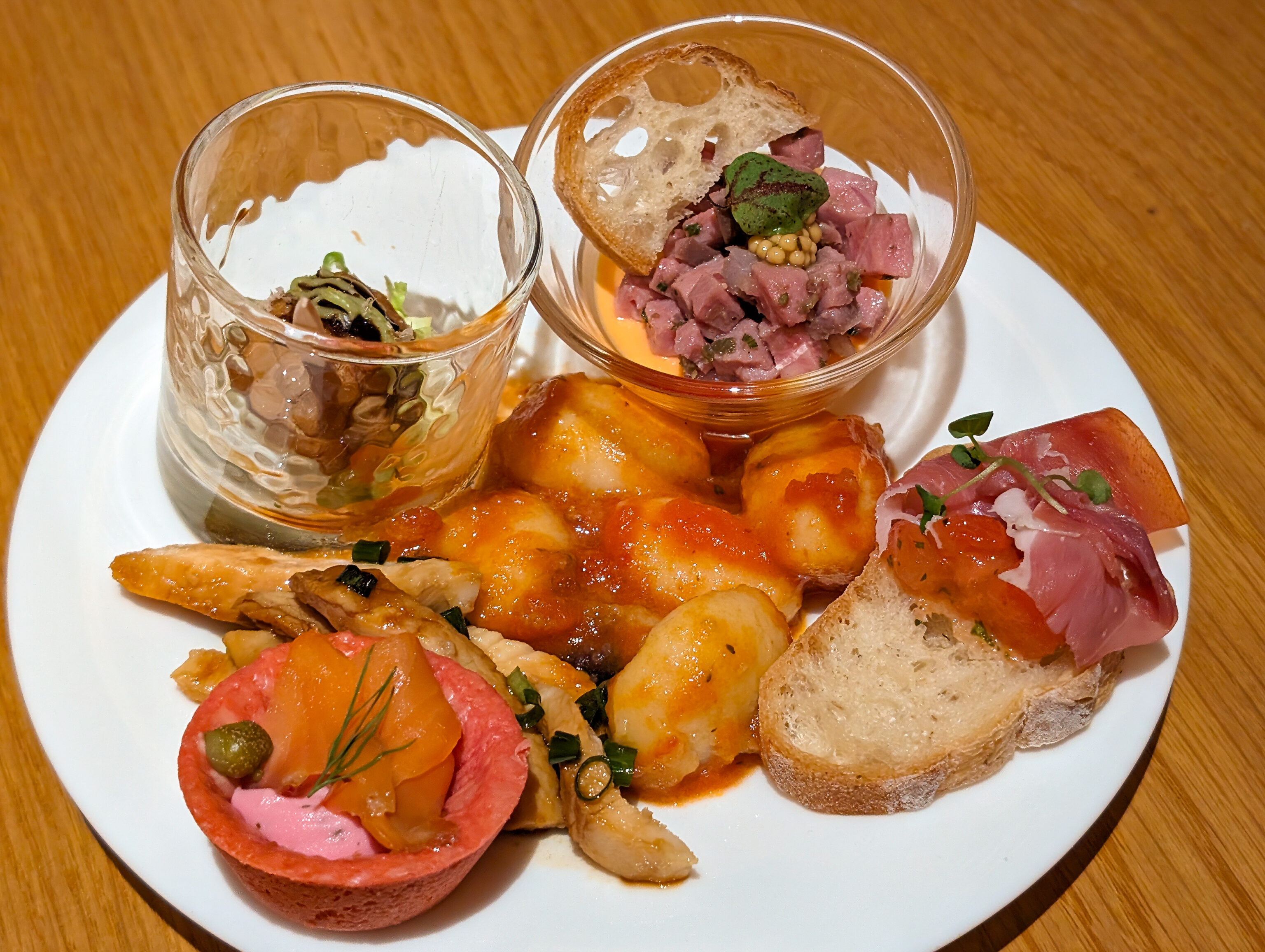
We went up to the executive lounge to take a look. Access is included as we are Diamond members in the Hilton Honors program. We snacked a bit on some of the offerings before heading back down to our room to end the day.


